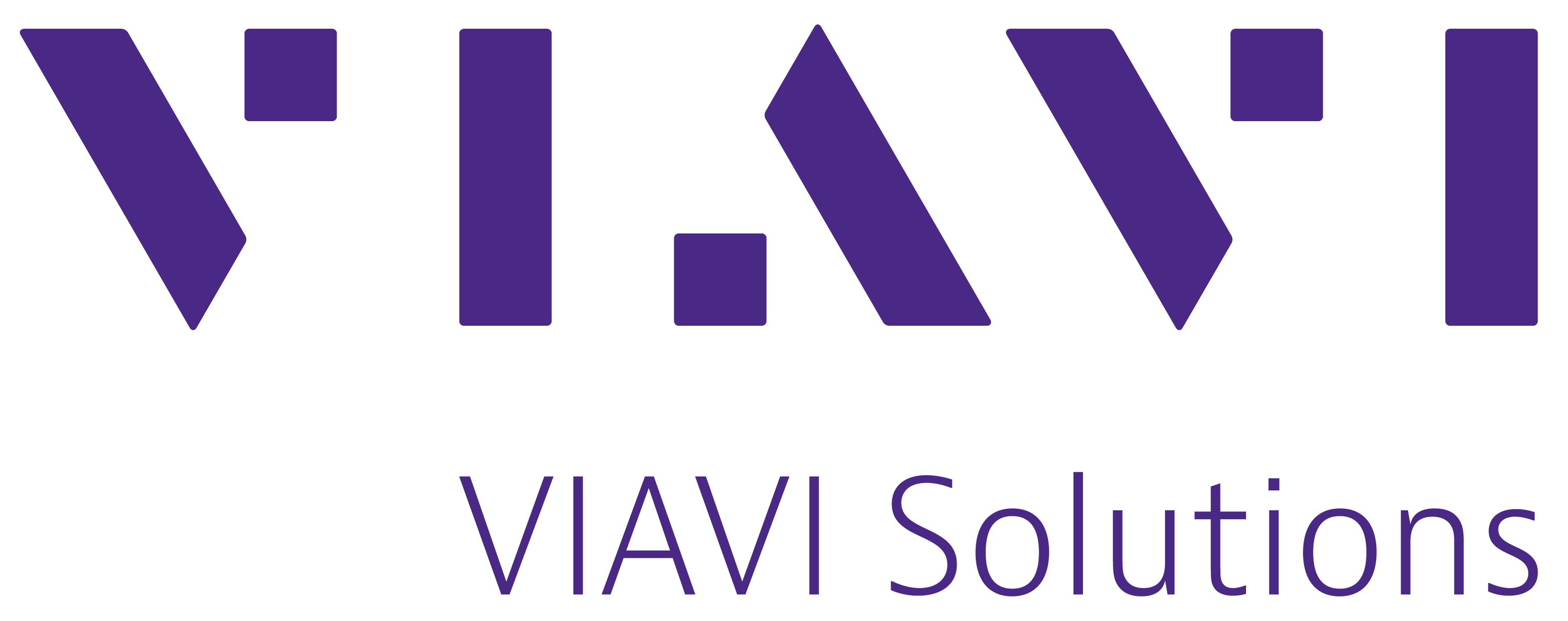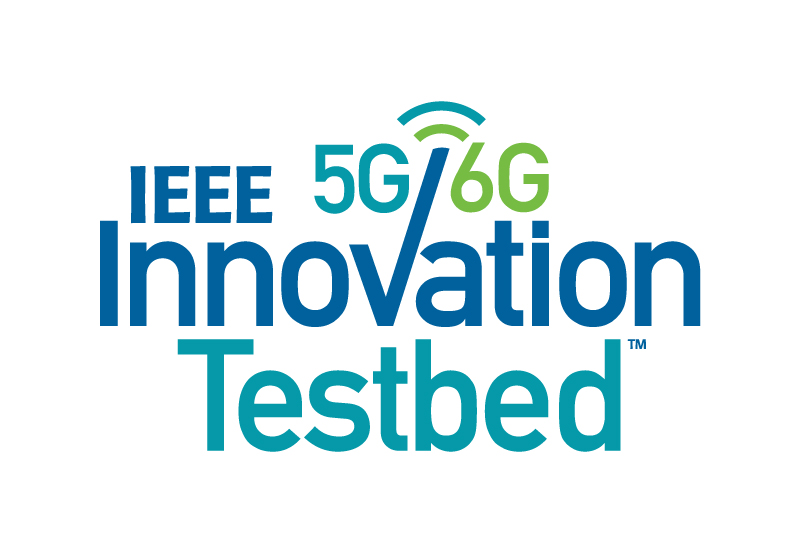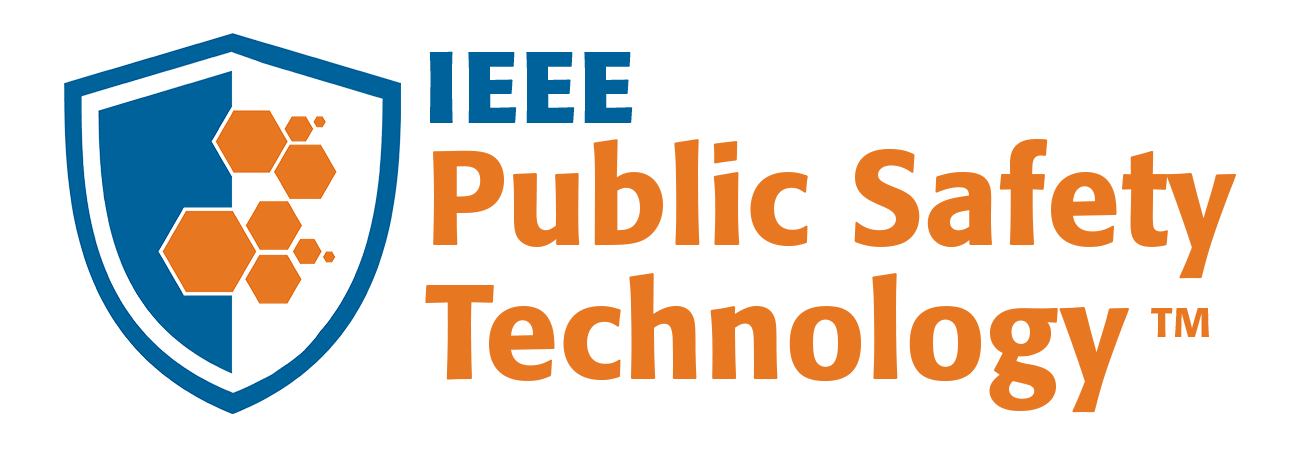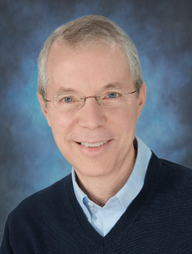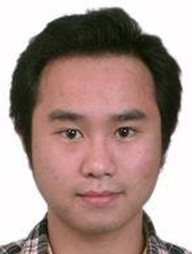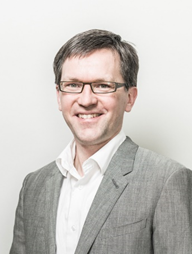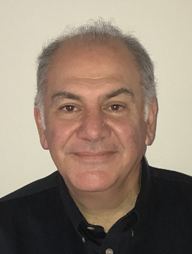Call for Hosting FNWF 2024
Call for Hosting
The IEEE Future Networks World Forum (IEEE FNWF) is the flagship event of the IEEE Future Networks Technical Community (FNTC), a multiple Society community aggregating the wide expertise inherent to the connectivity domain.
This event brings together experts from industry, academia, and research together to exchange their visions and achieved advances towards 5G and beyond. The Future Networks World Forum is an outstanding opportunity to showcase products and applications to an enthusiastic and engaged audience. It provides an ideal platform to reach hundreds of key decision-makers involved in 5G and future network generations.
The speaker and attendee list will feature innovators, regulators, multinational companies, standards-setting bodies, government and academia that highlight and showcase the many exciting developments in 5G and Beyond technologies. As with prior versions of the event, attendees can expect a robust program of keynotes, invited talks, panels, tutorials, workshops, exhibits, and technical paper presentations.
We are now seeking proposals from interested institutions and industries for hosting this event in 2024.
Proposals should be sent to the Co-Chairs of the IEEE FNWF Committee, Ashutosh Dutta, This email address is being protected from spambots. You need JavaScript enabled to view it., Latif Ladid, This email address is being protected from spambots. You need JavaScript enabled to view it., , and copy Craig Polk, This email address is being protected from spambots. You need JavaScript enabled to view it., by March 1, 2024, detailing in the following files
Please download the FNWF Bid Package.
Please download the FNWF Budget File.
The proposals will be evaluated by the IEEE FNWF Committee in consultation with the FNTC TC Steering Committee. The selected host for 2024 will be announced during March 2024.
2023 6th IEEE 5G Workshop on First Responder and Tactical Networks
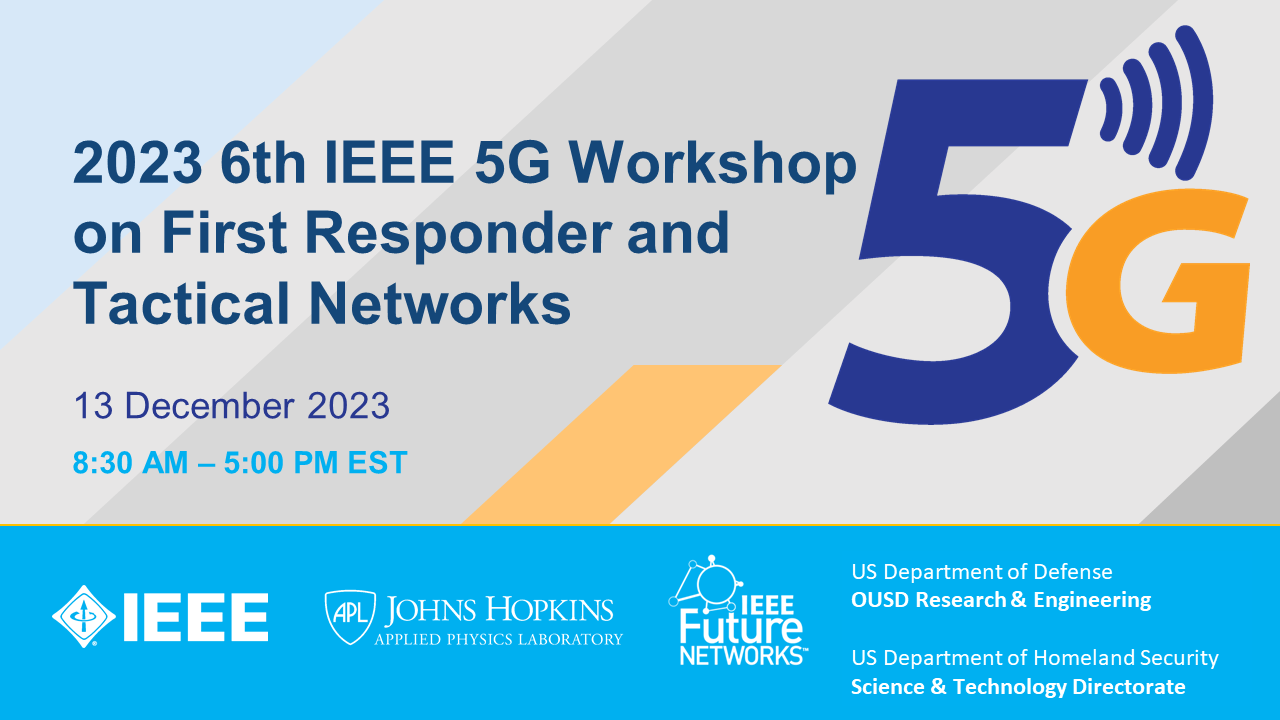
13 December 2023 || Free || Johns Hopkins University Applied Physics Lab, Laurel, MD, USA
On-Site Event Venue
The 2023 6th IEEE 5G Workshop on First Responder and Tactical Networks will take place at Johns Hopkins University Applied Physics Laboratory (JHU/APL) on 13 December 2023 at Building 201-117 (Auditorium), 11091 Johns Hopkins Road, Laurel, MD 20723 USA. More information about the traveling to the center (Google Map) can be found on the Applied Physics Laboratory webpage.
Virtual Connections
5G is not just the next evolution of 4G technology; it's a paradigm shift. It is expected to enable fundamentally new applications — with much more stringent requirements in latency and bandwidth — and provide resiliency and flexibility to the underlying network. Several standards organizations and forums, namely IEEE, the 3rd Generation Partnership Project, and the International Telecommunication Union are working on defining the architecture and standardizing aspects of 5G technologies. However, few organizations are focusing on how such technologies can be useful to tactical and first responder networks.
IEEE is hosting the sixth workshop in this series on 13 December 2023 at Johns Hopkins University Applied Physics Lab in Laurel, MD, USA. In 2022-2021, it was the result of partnership and collaboration with the Department of Homeland Security Science and Technology Directorate (DHS S&T), the Johns Hopkins University Applied Physics Lab (JHU/APL), and the Office of Under Secretary of Defense for Research and Engineering (OUSD R&E) - 5G. This workshop will explore the applicability of 5G technologies for tactical and first responder networks, offer solutions, share use cases, and investigate research opportunities and challenges. The event will also provide an opportunity for 5G experts from industry and academia, and the standards, regulatory, homeland security, public safety, and defense communities to collaborate.
For any questions, please contact:
Ashutosh Dutta
This email address is being protected from spambots. You need JavaScript enabled to view it.
Phone +1 908-642-8593
| TIME | SESSION | SPEAKER | TITLE |
| 07:30-08:30 | Registration and Breakfast | ||
| 08:30-08:45 | Welcome and Introduction |
Ashutosh Dutta, IEEE Future Networks Co-Chair & Craig Polk, IEEE Future Networks |
|
| 08:45-09:00 | Welcome Remarks | Andy Oak, JHU/APL Executive | |
| 09:00-09:30 | Keynote Presentation 1: | Sridhar Kowdley, DHS | Emergency and Operational Communications for DHS Operations including Tactical Networks |
| 09:30-09:50 | Invited Talk 1 | Chunmei Liu, NIST | 5G New Radio Sidelink Simulations and Performance Analysis |
| 09:50-10:10 | Invited Talk 2 | Jorge Pereira, European Commission | 5G for Public Protection and Disaster Relief: towards a EU Critical Communication System. |
| 10:10-10:30 | Invited Talk 3 | Alex Marder, JHU | Securing 5G Against the Fragile and Malicious Infrastructure |
| 10:30-11:00 | Morning Break | ||
| 11:00-11:20 | Invited Talk 4 | Bob Stephens, Keysight | 5G Features and Considerations for Setting Up a Reliable First Responder Network |
| 11:20-11:40 | Invited Talk 5 | Venki Ramaswamy, MITRE | Can 5G help DoD overcome digital interoperability challenges? |
| 11:40-12:00 | Invited Talk 6 | Gordon Beattie, Viavi Solutions | Design, Testing and Operational Considerations for Mobile and Nomadic 5G Networks |
| 12:00-12:20 | Invited Talk 7 | Nikheel Pruthi, NIKSUN |
Redesigning First Responder Networks With A Unified Architecture for Robust Security, Availability, and Performance |
| 12:20-13:00 | Lunch Break | ||
| 13:00-13:30 | Keynote Presentation 2: | Tracy Van Brakle, AT&T | AI-enabled multi-operator orchestration for resilience, security, and QoE during crisis situations |
| 13:30-13:50 | Invited Talk 8 | Tommaso Melodia, Northestern University | Open 6G: Toward Open, Programmable, and AI-Driven NextG Systems |
| 13:50-14:10 | Invited Talk 9 | Arpit Joshipura, Linux Foundation | Open Source Networking and Edge Ecosystem - the next phase |
| 14:10-14:30 | Invited Talk 10 | Anwer Al-Dulaimi, Veltris Ashutosh Dutta, JHU/APL |
IEEE 5G/6G Innovation Testbed for Mission Critical Applications |
| 14:30-14:50 | Invited Talk 11 | Mayukh Roy Chowdhury, Virginia Tech. | Towards Prioritized Network Access for First Responders |
| 14:50-15:10 | Coffee Break | ||
| 15:10-15:30 | Invited Talk 12 | Arup Bhuyan, Idaho National Lab | Secure Roaming with 5G |
| 15:30-15:50 | Invited Talk 13 | Amr Haj-Omar, National Instruments | 6G research topics & the path towards prototyping testbeds |
| 15:50-16:10 | Invited Talk 14 | Kelly Krick, Ericsson | Mission Critical in the Skies |
| 16:10-16:30 | Invited Talk 15 | Ashish Kundu, Cisco Research | GraphBOM: Software Supply Chain Security Analysis |
| 16:30-16:50 | Invited Talk 16 | George Kannell, L3Harris | Get up to Speed with 5G |
| 16:50-17:00 | Closing Remarks | ||
| 17:00-18:00 | Networking Reception | ||
*NOTE: All times Eastern Time US
Sponsorship and Exhibit Opportunities
Exhibitors
Event Partners
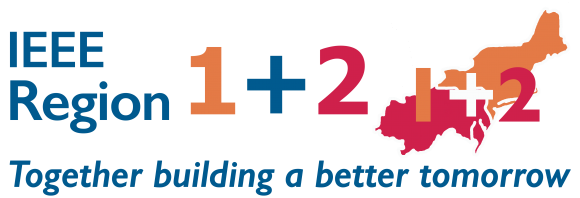


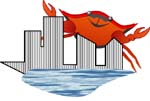 IEEE Baltimore Section
IEEE Baltimore Section
All Past Events
2022 IEEE 5G Workshop on First Responder and Tactical Networks (WFRTN)
2021 IEEE 5G Workshop on First Responder and Tactical Networks (WFRTN)
2020 IEEE 5G Workshop on First Responder and Tactical Networks (WFRTN)
2019 IEEE 5G Workshop on First Responder and Tactical Networks (WFRTN)
2018 IEEE 5G Workshop on First Responder and Tactical Networks (WFRTN)
Event Speakers
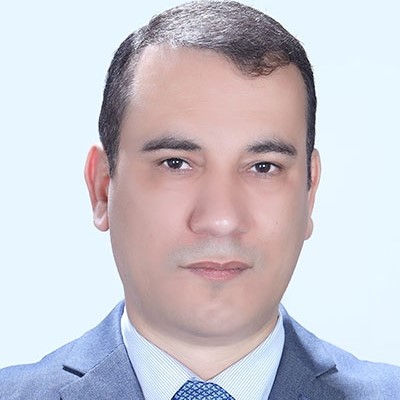 Anwer Al-Dulaimi is currently a Senior Strategy Manager for Connectivity and Industry 4.0 at Veltris, Toronto, Canada. He received the Ph.D. degree in electrical and computer engineering from Brunel University, London, U.K., in 2012 after receiving M.Sc. and B.Sc. honors degrees in communication engineering. He was a Postdoctoral Fellow with the Department of Electrical and Computer Engineering, University of Toronto, sponsored by Blackberry’s advanced research team. He is the chair of the newly established IEEE 5G/6G Innovations Testbed project working to develop a convergent testing platform for E2E network innovation. He is also Associate Professor at CAT-ZU teaching networking subjects. His research interests include 5G and 6G communications, cloud computing, and cybersecurity. Anwer is the editor of Future Networks Series on 6G in IEEE Vehicular Technology magazine, Editor of Vehicular Networking Series in IEEE Standards Magazine, Editor of IEEE ITSS Series on Intelligent Autonomous Transport, and guest editor for many IEEE journals. He was the recipient of the 2013 Worldwide Universities Network best paper for outstanding research in cognitive communications, best IEEE/WWRF VTM best paper award for 3 times, as well as many other awards and grants. He has published many papers in refereed publications and patents. He provided many talks about 5G/6G networks in academia, industry forums, O-RAN and ITU. He is the chair of the IEEE 1932.1 ‘Standard for Licensed/Unlicensed Spectrum Interoperability in Wireless Mobile Network’, invited expert to ITU-T SG11, and voting member of IEEE MobiNet Standards Committee. He is an IEEE ComSoc Distinguished Lecturer, Fellow of the Institution of Engineering and Technology (FIET), Fellow of the British higher education Academy (AFHEA) and registered as a Chartered Engineer (CEng) by the British Engineering Council since 2010.
Anwer Al-Dulaimi is currently a Senior Strategy Manager for Connectivity and Industry 4.0 at Veltris, Toronto, Canada. He received the Ph.D. degree in electrical and computer engineering from Brunel University, London, U.K., in 2012 after receiving M.Sc. and B.Sc. honors degrees in communication engineering. He was a Postdoctoral Fellow with the Department of Electrical and Computer Engineering, University of Toronto, sponsored by Blackberry’s advanced research team. He is the chair of the newly established IEEE 5G/6G Innovations Testbed project working to develop a convergent testing platform for E2E network innovation. He is also Associate Professor at CAT-ZU teaching networking subjects. His research interests include 5G and 6G communications, cloud computing, and cybersecurity. Anwer is the editor of Future Networks Series on 6G in IEEE Vehicular Technology magazine, Editor of Vehicular Networking Series in IEEE Standards Magazine, Editor of IEEE ITSS Series on Intelligent Autonomous Transport, and guest editor for many IEEE journals. He was the recipient of the 2013 Worldwide Universities Network best paper for outstanding research in cognitive communications, best IEEE/WWRF VTM best paper award for 3 times, as well as many other awards and grants. He has published many papers in refereed publications and patents. He provided many talks about 5G/6G networks in academia, industry forums, O-RAN and ITU. He is the chair of the IEEE 1932.1 ‘Standard for Licensed/Unlicensed Spectrum Interoperability in Wireless Mobile Network’, invited expert to ITU-T SG11, and voting member of IEEE MobiNet Standards Committee. He is an IEEE ComSoc Distinguished Lecturer, Fellow of the Institution of Engineering and Technology (FIET), Fellow of the British higher education Academy (AFHEA) and registered as a Chartered Engineer (CEng) by the British Engineering Council since 2010.
 Dr. Arupjyoti (Arup) Bhuyan is the Director of the Wireless Security Institute (WSI) and a Directorate Fellow in the Idaho National Laboratory(INL). The focus of his research is on secure implementation of future generations of wireless communications with scientific exploration and engineering innovations across the fields of wireless technology, cybersecurity, and computational science. Specific goals are to lead and focus wireless security research efforts for 5G and FutureG/6G with national impact, to secure 5G spectrum sharing with distributed scheduling, and communication for a nationwide unmanned aerial system.
Dr. Arupjyoti (Arup) Bhuyan is the Director of the Wireless Security Institute (WSI) and a Directorate Fellow in the Idaho National Laboratory(INL). The focus of his research is on secure implementation of future generations of wireless communications with scientific exploration and engineering innovations across the fields of wireless technology, cybersecurity, and computational science. Specific goals are to lead and focus wireless security research efforts for 5G and FutureG/6G with national impact, to secure 5G spectrum sharing with distributed scheduling, and communication for a nationwide unmanned aerial system.
Arup is currently the primary investigator (PI) of the 5G Threat Assessment program work in INL for the Office of the Undersecretary of Defense for Research and Engineering (OUSD R&E) in the Department of Defense (DoD). He serves as a Member of the Advisory Board in Platform for Open Wireless Data-driven Experimental Research (POWDER), in the University of Utah. Arup has extensive industry experience in wireless communications from his work before he joined INL in October 2015. He received his Ph.D. in Engineering and Applied Sciences from Yale University. He is a senior member of IEEE.
 Mayukh Roy Chowdhury is currently working as a Postdoctoral Research Associate at Commonwealth Cyber Initiative (CCI), Virginia Tech, USA. Prior to this, he worked in the 6G Lab, Samsung Research and Development Institute, Bangalore (SRI-B), India as a Research Intern. He received his Ph.D. in Electrical Engineering from the Indian Institute of Technology (IIT) Delhi, New Delhi, India.
Mayukh Roy Chowdhury is currently working as a Postdoctoral Research Associate at Commonwealth Cyber Initiative (CCI), Virginia Tech, USA. Prior to this, he worked in the 6G Lab, Samsung Research and Development Institute, Bangalore (SRI-B), India as a Research Intern. He received his Ph.D. in Electrical Engineering from the Indian Institute of Technology (IIT) Delhi, New Delhi, India.
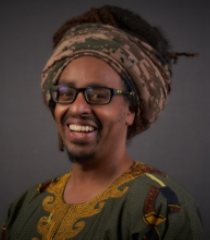 Dr. Amr Haj-Omar received his Doctorate in Electrical Engineering in collaboration with UC San Diego & Morgan State – Dissertation Title: "Wireless Flexible Electronics for Biomedical Applications". In his journey, he contributed to over 10 publications and 5 patents. Pioneered and taught the first fully remote circuit lab course in 2010 using digilent discovery board. He has a passion for R&D and teaching as he found it the best way to learn! Emerging from his close work with researchers, he cofounded startup ‘IoTools’ in corollary. It accelerated prototyping and enabled professors to win funding. Currently, Dr. Haj-Omar is a Principal BDM for Wireless Research @ NI. His focus is on partnering with lead researchers to advance futureG AI innovation. His experience encompassing 2 decades of wireless research, product development, and strategic marketing. While at TI (Texas Instruments), Peregrine (Murata), Pericom Semiconductor and Tektronix as the 5G wireless telecom segment leader. In addition to work, Dr. Amr enjoys playing chess, football, base guitar, and being an active member of IEEE MTTs, IEEE MILCOM co-chairing demo track, NSBE, IMS-Connect and mentoring future engineers.
Dr. Amr Haj-Omar received his Doctorate in Electrical Engineering in collaboration with UC San Diego & Morgan State – Dissertation Title: "Wireless Flexible Electronics for Biomedical Applications". In his journey, he contributed to over 10 publications and 5 patents. Pioneered and taught the first fully remote circuit lab course in 2010 using digilent discovery board. He has a passion for R&D and teaching as he found it the best way to learn! Emerging from his close work with researchers, he cofounded startup ‘IoTools’ in corollary. It accelerated prototyping and enabled professors to win funding. Currently, Dr. Haj-Omar is a Principal BDM for Wireless Research @ NI. His focus is on partnering with lead researchers to advance futureG AI innovation. His experience encompassing 2 decades of wireless research, product development, and strategic marketing. While at TI (Texas Instruments), Peregrine (Murata), Pericom Semiconductor and Tektronix as the 5G wireless telecom segment leader. In addition to work, Dr. Amr enjoys playing chess, football, base guitar, and being an active member of IEEE MTTs, IEEE MILCOM co-chairing demo track, NSBE, IMS-Connect and mentoring future engineers.
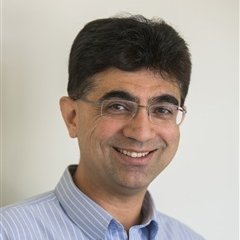
Arpit Joshipura is an executive leader and open source software evangelist across carriers, cloud and enterprise IT – spanning networking, orchestrations, operating systems, security, AI, edge, hardware and silicon. He was recently voted among the Top 5 Movers and Shakers in the Telecom Industry. At the Linux Foundation, Arpit leads open source networking, orchestration & edge/IOT, including LF Networking projects (ONAP, OPNFV, ODL, FDIO, OvS, DPDK, OpenSwitch, Akraino/Edge/IOT, etc.) as well as major industry disruptions including VNFs to CNFs (Cloud Native Network functions), 5G, AI, etc. Arpit brings 30 years of networking expertise and vision to The Linux Foundation, with both technical depth and business breadth. He has orchestrated and led major industry disruptions across enterprises, carriers, and cloud architectures, including IP, broadband, optical, mobile, routing, switching, L4-7, cloud, disaggregation, SDN/NFV, and open networking, and has been an early evangelist for open source. Arpit has served in CMO, VP, and Engineering roles within both startups and larger enterprises.
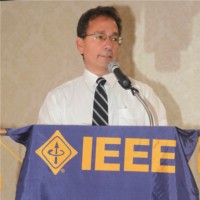
George Kannell works with and guides high performance design teams in the development of innovative high speed communication and custom systems working from low frequency to over 100GHz. In this role, George is responsible for simulation, architecture, systems engineering, features, competitive analysis, costing, contract management, customer vision and technical proposals. George identifies and plans new business opportunities and works with customers to match capabilities to customer solutions. George serves as an authority in wireless radios, cellular, phased arrays, high speed digital and general system design. He researches worldwide technology developments, participates in technical meetings and conferences and promotes strategic partnerships to achieve new evolutionary system capabilities. From 2000-2013, George was a Distinguished Member of Technical Staff, responsible for Architecture, Requirements and Realization of novel communication, spectrum monitoring & ID systems used in mobile and airborne applications. His skills includes Radio Design, Antennas, Filters, Transmitters, Receivers, GUI, VHDL and CAD simulation. Prior to Bell Laboratories, he worked in Software CAD as a Senior Engineer at Ansoft Corporation in simulation of wireless radios and communications networks. Before this, at KDI/Triangle, he managed an engineering team in the design of DOD EW electronics systems. He teaches courses in Digital Communications as an Adjunct Professor at NJIT. He received his MSEE degree from NJIT in 1988. He is a member of Eta Kappa Nu and Senior Member of the IEEE. For over 10 years, he’s chaired the technical sessions for the regional IEEE MTT and AP societies Mini Show. George received several Bell Labs President’s Awards and the IEEE Region 1 Award.
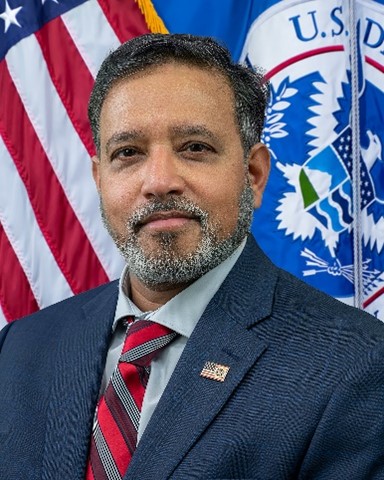
Sridhar Kowdley is a Technical Manager at the U.S. Department of Homeland Security (DHS) Science and Technology Directorate Office for Interoperability and Compatibility Technology Center. With over 30 years of experience in communications and networking, he works and leads programs to help DHS Components as well as state and local first responders operate more effectively and safely through the pursuit of resilient, highly available and interoperable technology solutions. He forges and leads intra- and interdepartmental partnerships with other agencies including DoD, DoT, NSF, and DoJ. At DHS he leads several programs including the P25 Compliance Assessment Program which ensures that radios and solutions manufactured for public safety and federal agencies are built to standards and interoperable. In partnership with industry, public safety practitioners and standards development organizations, DHS provides policy and guidance to enable procurement of land mobile radio solutions by public safety practitioners. He provides technical leadership and guidance for the NG911 Interoperability and Compliance Program designed to ensure that NG911 solutions built by industry will be evaluated for compliance to standards and demonstrated interoperability. This engagement includes industry, academia, public safety practitioners and associations. federal agencies and partnership to ensure that NG911 are tested for nationwide deployment. He holds a BS in Electrical Engineering from Columbia University NYC and an MS in Electrical and Computer engineering from George Mason University.
 Kelly Krick is Director of Business Development for Mission Critical Networks in North America. He partners with various teams to execute solutions for Public Safety, Peacekeeping and Defense, Utilities and Rail. Mr. Krick has over 40 years of wide-ranging experience from wireline and wireless technologies and from design to operation roles. He has implemented many forms of telecom transformation – digital, wireless (2G through 5G), virtualized, and now cloudified. A Senior member of IEEE, Kelly is a former Chairman of IEEE ComSoc's Communications Quality and Reliability Technical Committee and currently serves on the Board of Advisors. Mr. Krick’s career began with Central Telephone Company in the US and subsequently included roles in Northern Telecom (Nortel) and Ericsson in the US, Japan, Singapore, and Sweden. Telecom and travel have been his life-long passions.
Kelly Krick is Director of Business Development for Mission Critical Networks in North America. He partners with various teams to execute solutions for Public Safety, Peacekeeping and Defense, Utilities and Rail. Mr. Krick has over 40 years of wide-ranging experience from wireline and wireless technologies and from design to operation roles. He has implemented many forms of telecom transformation – digital, wireless (2G through 5G), virtualized, and now cloudified. A Senior member of IEEE, Kelly is a former Chairman of IEEE ComSoc's Communications Quality and Reliability Technical Committee and currently serves on the Board of Advisors. Mr. Krick’s career began with Central Telephone Company in the US and subsequently included roles in Northern Telecom (Nortel) and Ericsson in the US, Japan, Singapore, and Sweden. Telecom and travel have been his life-long passions.
 Dr. Ashish Kundu is currently at Cisco Research as its Head of Cybersecurity Research.He is a distinguished scientist, a leader in the area of Security, Privacy, Compliance. He worked at Nuro as its Head of Cybersecurity, and as Research Staff Member at IBM T J Watson Research Center. He has led security, privacy and compliance of self-driving cars, tele-operated driving, cloud-based healthcare, and cloud-based AI-driven education platforms. His research has led to more than 160 patents filed with more than 140 patents granted, and more than 45 research papers. He is an ACM Distinguished Member, and has also been an ACM Distinguished Speaker. He has been honored with the prestigious Master Inventor recognition multiple times by IBM Research. Dr. Kundu received his Ph.D. in Cybersecurity from Purdue University in 2010 and his doctoral research at Purdue University received the prestigious CERIAS Diamond Award for outstanding contributions to cybersecurity.
Dr. Ashish Kundu is currently at Cisco Research as its Head of Cybersecurity Research.He is a distinguished scientist, a leader in the area of Security, Privacy, Compliance. He worked at Nuro as its Head of Cybersecurity, and as Research Staff Member at IBM T J Watson Research Center. He has led security, privacy and compliance of self-driving cars, tele-operated driving, cloud-based healthcare, and cloud-based AI-driven education platforms. His research has led to more than 160 patents filed with more than 140 patents granted, and more than 45 research papers. He is an ACM Distinguished Member, and has also been an ACM Distinguished Speaker. He has been honored with the prestigious Master Inventor recognition multiple times by IBM Research. Dr. Kundu received his Ph.D. in Cybersecurity from Purdue University in 2010 and his doctoral research at Purdue University received the prestigious CERIAS Diamond Award for outstanding contributions to cybersecurity.
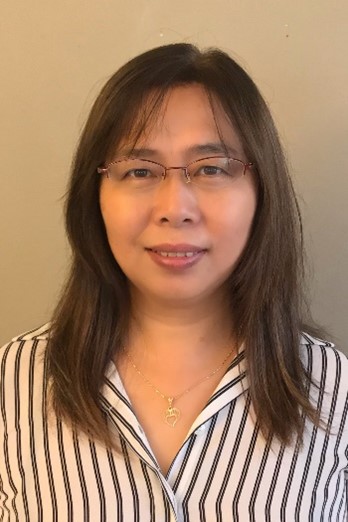 Chunmei Liu received her Ph.D. degree in Computer Systems from the Massachusetts Institute of Technology (MIT) in 2005. She has been working in the areas of wireless communications and networking since then. She is currently a researcher with the Wireless Networks Division, National Institute of Standards and Technology (NIST). Her research interests include public safety communications and automated vehicle in cellular networks and machine learning.
Chunmei Liu received her Ph.D. degree in Computer Systems from the Massachusetts Institute of Technology (MIT) in 2005. She has been working in the areas of wireless communications and networking since then. She is currently a researcher with the Wireless Networks Division, National Institute of Standards and Technology (NIST). Her research interests include public safety communications and automated vehicle in cellular networks and machine learning.
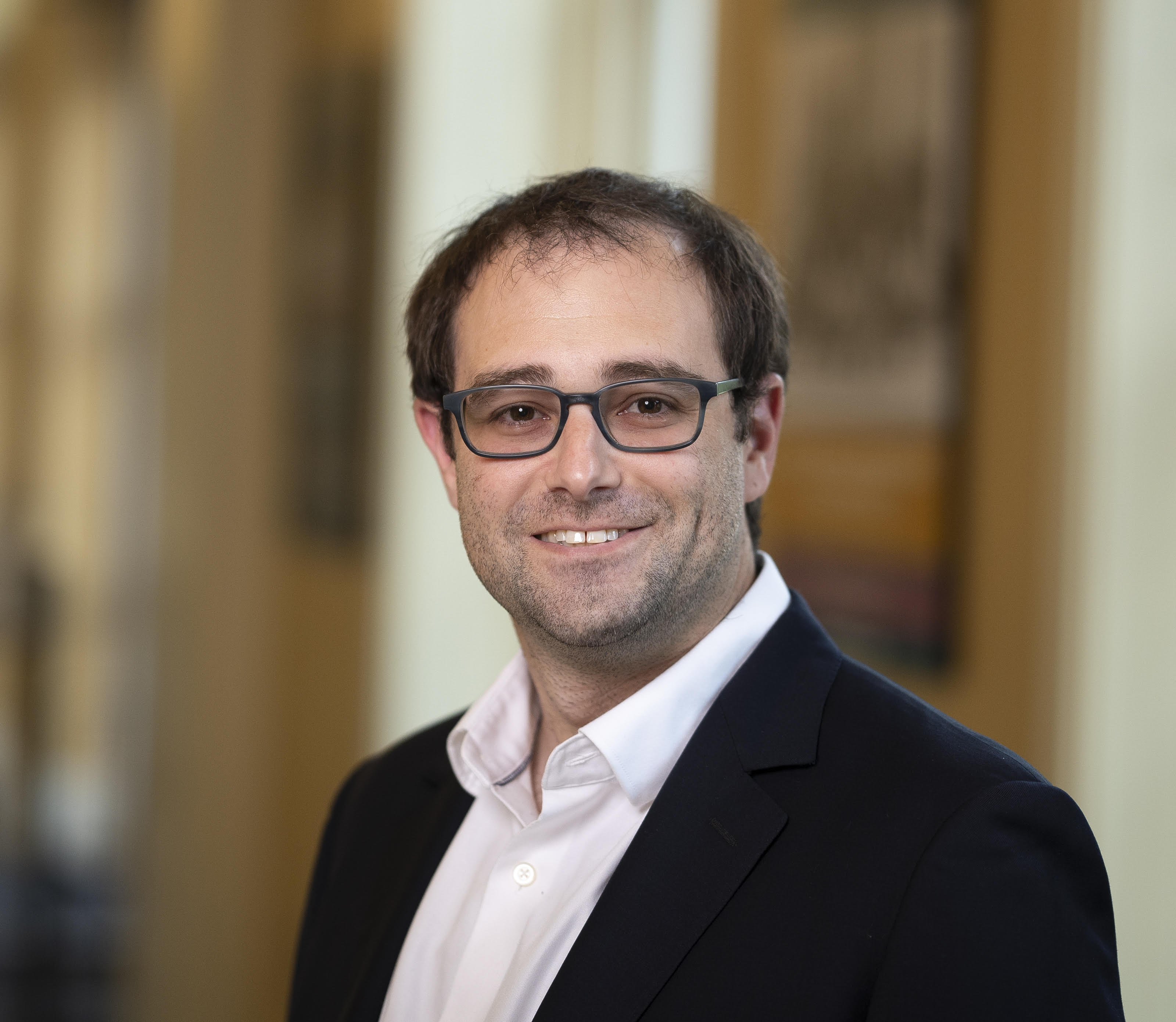 Alex Marder is an assistant professor of computer science and a member of the Institute for Assured Autonomy. Marder’s research covers a wide breadth of networking areas, including the use of empirical analyses and machine learning to evaluate and improve the security and performance of wired and wireless networks. His current work leverages a deep understanding of network architecture and deployment to design secure 5G communication networks for the Department of Defense, reveal security weaknesses in domestic internet access networks, and provide a better understanding of broadband inequity. He received a BS from Brandeis University and a PhD from the University of Pennsylvania. Prior to joining Johns Hopkins, he was a research scientist at CAIDA at UC San Diego.
Alex Marder is an assistant professor of computer science and a member of the Institute for Assured Autonomy. Marder’s research covers a wide breadth of networking areas, including the use of empirical analyses and machine learning to evaluate and improve the security and performance of wired and wireless networks. His current work leverages a deep understanding of network architecture and deployment to design secure 5G communication networks for the Department of Defense, reveal security weaknesses in domestic internet access networks, and provide a better understanding of broadband inequity. He received a BS from Brandeis University and a PhD from the University of Pennsylvania. Prior to joining Johns Hopkins, he was a research scientist at CAIDA at UC San Diego.
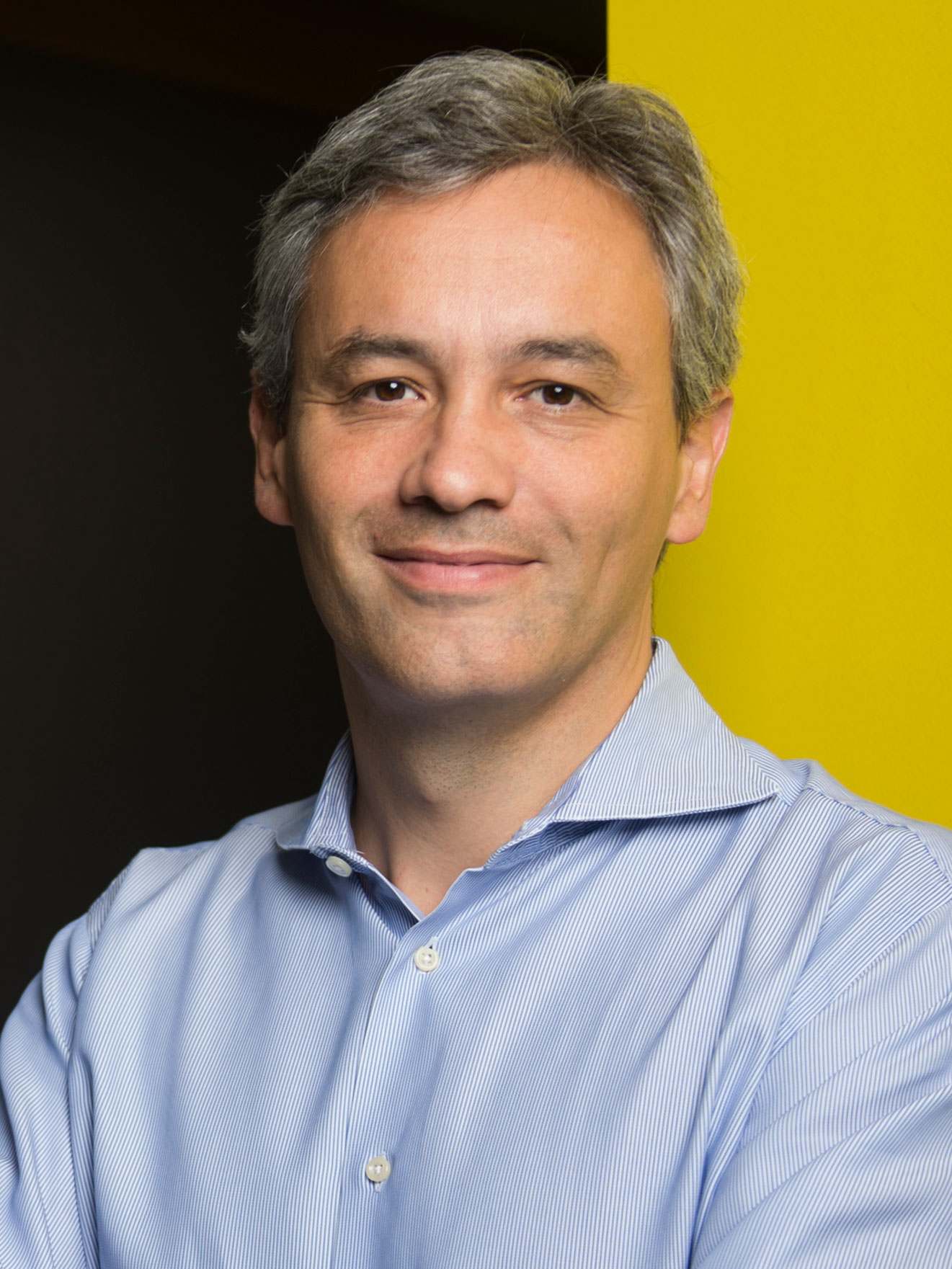 Tommaso Melodia is the William L. Smith Professor with the Department of Electrical and Computer Engineering at Northeastern University in Boston. He is also the Founding Director of the Institute for the Wireless Internet of Things, and the Director of Research for the PAWR Project Office. He received his Laurea (integrated BS and MS) from the University of Rome - La Sapienza and his Ph.D. in Electrical and Computer Engineering from the Georgia Institute of Technology in 2007. He is an IEEE Fellow and recipient of the National Science Foundation CAREER award. He received several best paper awards at major conferences, including at IEEE Infocom 2022. Prof. Melodia the Editor in Chief for Computer Networks and a co-founder of the 6G Symposium, the Technical Program Committee Chair for IEEE Infocom, and General Chair for ACM MobiHoc, among others. Prof. Melodia’s research on modeling, optimization, and experimental evaluation of wireless networked systems has been funded by many US government and industry entities.
Tommaso Melodia is the William L. Smith Professor with the Department of Electrical and Computer Engineering at Northeastern University in Boston. He is also the Founding Director of the Institute for the Wireless Internet of Things, and the Director of Research for the PAWR Project Office. He received his Laurea (integrated BS and MS) from the University of Rome - La Sapienza and his Ph.D. in Electrical and Computer Engineering from the Georgia Institute of Technology in 2007. He is an IEEE Fellow and recipient of the National Science Foundation CAREER award. He received several best paper awards at major conferences, including at IEEE Infocom 2022. Prof. Melodia the Editor in Chief for Computer Networks and a co-founder of the 6G Symposium, the Technical Program Committee Chair for IEEE Infocom, and General Chair for ACM MobiHoc, among others. Prof. Melodia’s research on modeling, optimization, and experimental evaluation of wireless networked systems has been funded by many US government and industry entities.
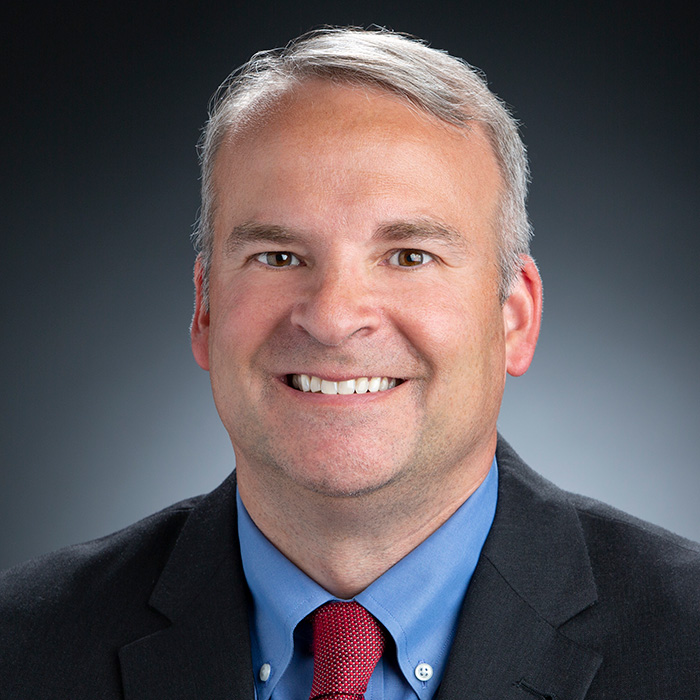 Andrew C. Oak is the mission area executive for Homeland Defense at the Johns Hopkins Applied Physics Laboratory (APL). He oversees research and development (R&D) to protect the nation and its critical infrastructure from air, missile, and asymmetric threats. Previously, Mr. Oak served as APL’s mission area executive for both Homeland Protection and Special Operations, where he defined strategy and directed execution of research and development in service to sponsors across the Department of Defense, Department of Homeland Security, national intelligence, and countering weapons of mass destruction communities. Earlier in his APL career, Mr. Oak held a variety of technical leadership and supervisory roles spanning the communications and cyber domains. He served on the Radio Frequency (RF) Panel of the National Intelligence University’s Emerging Technologies Conference on Foundational Cyber Technology, on a Defense Science Board panel addressing cyber supply-chain issues, and as a member of the board of directors for the National Institute for Hometown Security. Mr. Oak joined APL in 1996, after earning an M.S. in electrical engineering from the University of Virginia and a B.S. in electrical engineering from the University of Massachusetts Amherst.
Andrew C. Oak is the mission area executive for Homeland Defense at the Johns Hopkins Applied Physics Laboratory (APL). He oversees research and development (R&D) to protect the nation and its critical infrastructure from air, missile, and asymmetric threats. Previously, Mr. Oak served as APL’s mission area executive for both Homeland Protection and Special Operations, where he defined strategy and directed execution of research and development in service to sponsors across the Department of Defense, Department of Homeland Security, national intelligence, and countering weapons of mass destruction communities. Earlier in his APL career, Mr. Oak held a variety of technical leadership and supervisory roles spanning the communications and cyber domains. He served on the Radio Frequency (RF) Panel of the National Intelligence University’s Emerging Technologies Conference on Foundational Cyber Technology, on a Defense Science Board panel addressing cyber supply-chain issues, and as a member of the board of directors for the National Institute for Hometown Security. Mr. Oak joined APL in 1996, after earning an M.S. in electrical engineering from the University of Virginia and a B.S. in electrical engineering from the University of Massachusetts Amherst.
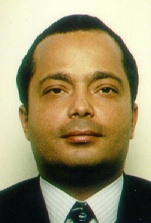 Dr. Jorge Pereira obtained the Engineering and M.Sc. degrees in Electrical and Computer Engineering from Instituto Superior Técnico (IST), Lisbon, Portugal in 1983 and 1987, respectively, and received the Ph.D. in Electrical Engineering-Systems from the University of Southern California (USC), Los Angeles, in 1993.
Dr. Jorge Pereira obtained the Engineering and M.Sc. degrees in Electrical and Computer Engineering from Instituto Superior Técnico (IST), Lisbon, Portugal in 1983 and 1987, respectively, and received the Ph.D. in Electrical Engineering-Systems from the University of Southern California (USC), Los Angeles, in 1993.
He is a member of the Advisory Board of John Wiley's Wireless Communications and Mobile Computing Journal, and of the Editorial Board of Kluwer Academic Publishers' Wireless Personal Communications Journal. He is a Member of the IEEE, where he is Associate Editor for Mobile Radio, including Vehicular Communications, for the IEEE VTS Magazine, and a member of the IEEE 5G Future Networks Steering Committee of the IEEE Communications Society, leading the Vertical track on 5G for CAM. He also served as Associate Editor of the ACM Transactions on Sensor Networks. He is a Chartered Electrical Engineer in Portugal. He received the Industry Achievement Award of the Software-Defined Radio (SDR) Forum in 2003, in recognition of his “outstanding contributions, research and development in the field of SDR”, and was inducted as life-member of the Wireless Innovation Forum. He was inducted in the IPv6 Hall of Fame, at the IPv6 Forum Summit in Nanjing, China, in October 2019.
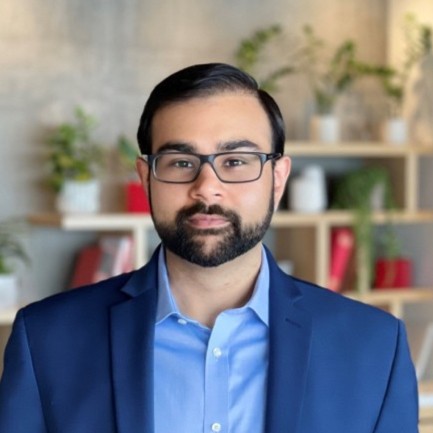 Nik Pruthi is the current President & CFO of NIKSUN, Inc. Nik graduated with a Juris Doctor as a David M. Rubenstein scholar and member of the Doctoroff Business Leadership Program from The University of Chicago Law School. He is also a member of the State Bar of California.His prior experience includes working as a Management Consultant at Bain & Company, where he oversaw several strategy and transformation projects at Fortune 500 firms as well as dozens of Private Equity deals. He has also led an investment team at VestedWorld, a global Venture Capital firm focused on mid-stage startups, and served as a strategic and financial advisor for several companies to navigate the global COVID-19 pandemic.Nik is now leading NIKSUN's transformation to a hybrid and cloud environment, effectively bringing the powerful NIKSUN technology to the rest of America. On the request of federal and state administration, he has spearheaded the creation of a revolutionary new comprehensive cybersecurity and network-to-application management platform that allows small and medium-sized businesses to leverage the same technology that secures the U.S. DoD in their infrastructure. Recognized as one of the foremost thought-leaders in the industry, he is a frequent speaker at various institutes and closed-door events.
Nik Pruthi is the current President & CFO of NIKSUN, Inc. Nik graduated with a Juris Doctor as a David M. Rubenstein scholar and member of the Doctoroff Business Leadership Program from The University of Chicago Law School. He is also a member of the State Bar of California.His prior experience includes working as a Management Consultant at Bain & Company, where he oversaw several strategy and transformation projects at Fortune 500 firms as well as dozens of Private Equity deals. He has also led an investment team at VestedWorld, a global Venture Capital firm focused on mid-stage startups, and served as a strategic and financial advisor for several companies to navigate the global COVID-19 pandemic.Nik is now leading NIKSUN's transformation to a hybrid and cloud environment, effectively bringing the powerful NIKSUN technology to the rest of America. On the request of federal and state administration, he has spearheaded the creation of a revolutionary new comprehensive cybersecurity and network-to-application management platform that allows small and medium-sized businesses to leverage the same technology that secures the U.S. DoD in their infrastructure. Recognized as one of the foremost thought-leaders in the industry, he is a frequent speaker at various institutes and closed-door events.
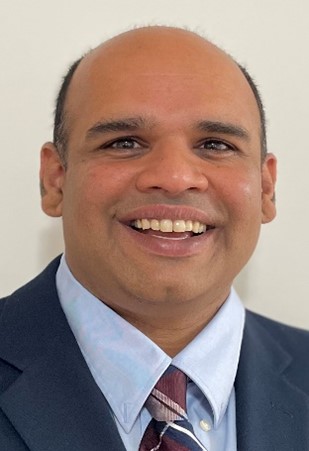 Dr. Venkatesh Ramaswamy is Chief Technologist for NextG at MITRE Labs in Bedford, Massachusetts, where he currently leads technical innovation and R&D activities in 5G/6G technologies. He has more than 22 years of experience in the telecommunications industry and has held technical leadership positions at top technology companies, startups, and research labs. Currently he serves as one of the active industry members of the ATIS/Next G Alliance Research Council, working on the development of a comprehensive North American 6G strategy. He is also an industry researcher at the NSF Edge AI Institute, where he explores synergies between networking and AI. He has published more than 50 peer-reviewed publications and holds numerous patents, served as a Technical Program Committee (TPC) member for various conferences, and participated in several technical panels. He received his PhD in Electrical Engineering in 2007.
Dr. Venkatesh Ramaswamy is Chief Technologist for NextG at MITRE Labs in Bedford, Massachusetts, where he currently leads technical innovation and R&D activities in 5G/6G technologies. He has more than 22 years of experience in the telecommunications industry and has held technical leadership positions at top technology companies, startups, and research labs. Currently he serves as one of the active industry members of the ATIS/Next G Alliance Research Council, working on the development of a comprehensive North American 6G strategy. He is also an industry researcher at the NSF Edge AI Institute, where he explores synergies between networking and AI. He has published more than 50 peer-reviewed publications and holds numerous patents, served as a Technical Program Committee (TPC) member for various conferences, and participated in several technical panels. He received his PhD in Electrical Engineering in 2007.
 Bob Stephens is a 5G/NextG Senior Solution Architect in Keysight’s Aerospace and Defense Government Solutions Group. His background is in wireless hardware and software development, where he has been in product development for his entire career, starting with Motorola's Land Mobile Products Sector, Motorola Cellular Phone Division, Motorola Networks, and most recently Nokia 5G mmWave and Small Cell R&D through Nokia's acquisition of Motorola Networks. At Nokia, he enjoyed bringing new products to market quickly by working with diverse R&D teams, research groups, and customers to resolve difficult problems and deliver high performance products.
Bob Stephens is a 5G/NextG Senior Solution Architect in Keysight’s Aerospace and Defense Government Solutions Group. His background is in wireless hardware and software development, where he has been in product development for his entire career, starting with Motorola's Land Mobile Products Sector, Motorola Cellular Phone Division, Motorola Networks, and most recently Nokia 5G mmWave and Small Cell R&D through Nokia's acquisition of Motorola Networks. At Nokia, he enjoyed bringing new products to market quickly by working with diverse R&D teams, research groups, and customers to resolve difficult problems and deliver high performance products.
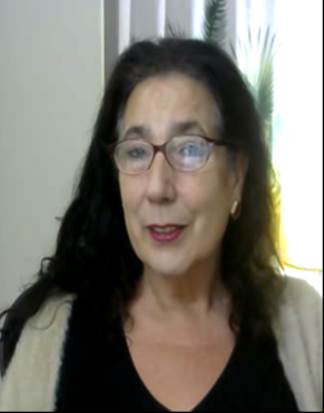 Tracy Van Brakle is a Member of Technical Staff within AT&T CTO - Wireless Technologies. She is a co-chair and/or contributor within several open source projects and standards development organizations (SDOs) as well as Principal Investigator of INDIGO (Intelligent 5G Networks Designed and Integrated for Globalized Operations), which is a recent recipient of a grant from the NSF Convergence Accelerator program. Tracy’s areas of interest include Artificial Intelligence Planning, open-source and commercial Service Management & Orchestration Frameworks, RAN Intelligent Controllers, and RAN intelligent automation consistent with the O-RAN definitions for xApps and rApps. Before joining AT&T, Tracy was a Senior Technologist with Goldman Sachs. She holds 17 active US patents in Wireless.
Tracy Van Brakle is a Member of Technical Staff within AT&T CTO - Wireless Technologies. She is a co-chair and/or contributor within several open source projects and standards development organizations (SDOs) as well as Principal Investigator of INDIGO (Intelligent 5G Networks Designed and Integrated for Globalized Operations), which is a recent recipient of a grant from the NSF Convergence Accelerator program. Tracy’s areas of interest include Artificial Intelligence Planning, open-source and commercial Service Management & Orchestration Frameworks, RAN Intelligent Controllers, and RAN intelligent automation consistent with the O-RAN definitions for xApps and rApps. Before joining AT&T, Tracy was a Senior Technologist with Goldman Sachs. She holds 17 active US patents in Wireless.
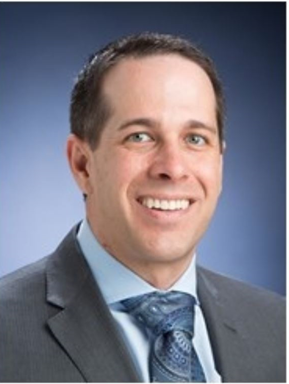 Sean Brassard is the Program Manager for the Special Operations Resilient Communications program at Johns Hopkins University Applied Physics Lab where he serves as a lead for various 5G and Cognitive Radio projects for the DoD. He has over 20 years of experience working in telecom and DoD tactical radio industries with a focus on systems engineering, radios, anti-jam/signal cancellation techniques, and geo-location systems. He holds a B.E. in Electrical Engineering from Vanderbilt University and a M.S. in Electrical Engineering from Johns Hopkins University.
Sean Brassard is the Program Manager for the Special Operations Resilient Communications program at Johns Hopkins University Applied Physics Lab where he serves as a lead for various 5G and Cognitive Radio projects for the DoD. He has over 20 years of experience working in telecom and DoD tactical radio industries with a focus on systems engineering, radios, anti-jam/signal cancellation techniques, and geo-location systems. He holds a B.E. in Electrical Engineering from Vanderbilt University and a M.S. in Electrical Engineering from Johns Hopkins University.
 Susan Lepple is the Group Office Administrator for the Mission Critical Communications Group at Johns Hopkins Applied Physics Laboratory (APL). In addition to her responsibilities at the group level, she is also involved with sector and lab level administrative initiatives. She joined APL in 2016 and holds a MS in Administration from Shenandoah University. She has over 15 years of professional administrative experience.
Susan Lepple is the Group Office Administrator for the Mission Critical Communications Group at Johns Hopkins Applied Physics Laboratory (APL). In addition to her responsibilities at the group level, she is also involved with sector and lab level administrative initiatives. She joined APL in 2016 and holds a MS in Administration from Shenandoah University. She has over 15 years of professional administrative experience.
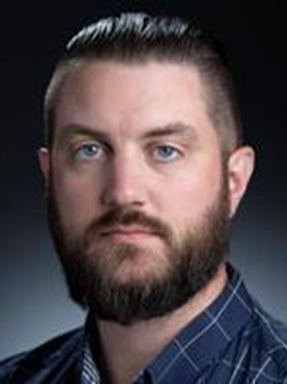 David M. Coleman is the chief scientist for the Communications Branch in APL’s Asymmetric Operations Sector and also serves as the lead for the Spectrum Operations research portfolio in the Cyber Operations Mission Area. He earned a BS in computer engineering from Elizabethtown College, an MS in computer engineering from the University of Arkansas, and a PhD in electrical engineering from University of Maryland, College Park. Dr. Coleman has presented at many conferences for tactical networks and has been published in journals and proceedings.
David M. Coleman is the chief scientist for the Communications Branch in APL’s Asymmetric Operations Sector and also serves as the lead for the Spectrum Operations research portfolio in the Cyber Operations Mission Area. He earned a BS in computer engineering from Elizabethtown College, an MS in computer engineering from the University of Arkansas, and a PhD in electrical engineering from University of Maryland, College Park. Dr. Coleman has presented at many conferences for tactical networks and has been published in journals and proceedings.
 Cherita Corbett is the Chief Scientist for the Communication and Networking Systems Group at Johns Hopkins University Applied Physics Laboratory. She guides research and development strategy and activities focused on resilient communications for military operations and critical infrastructure. Her current research interests include: secure mobile technologies, secure tactical communication systems, and insider threat protection. Prior to joining APL, Dr. Corbett was a Senior Computer Scientist at SRI International where she performed research on self-healing cellular networks, vehicular security, and IoT security. She also provided programmatic support to the Cyber Security Division of DHS S&T in the area of mobile technology. She has published over 30 technical manuscripts and holds a U.S. patent in cyber security. She holds a Ph.D. in Electrical & Computer Engineering from Georgia Institute of Technology.
Cherita Corbett is the Chief Scientist for the Communication and Networking Systems Group at Johns Hopkins University Applied Physics Laboratory. She guides research and development strategy and activities focused on resilient communications for military operations and critical infrastructure. Her current research interests include: secure mobile technologies, secure tactical communication systems, and insider threat protection. Prior to joining APL, Dr. Corbett was a Senior Computer Scientist at SRI International where she performed research on self-healing cellular networks, vehicular security, and IoT security. She also provided programmatic support to the Cyber Security Division of DHS S&T in the area of mobile technology. She has published over 30 technical manuscripts and holds a U.S. patent in cyber security. She holds a Ph.D. in Electrical & Computer Engineering from Georgia Institute of Technology.
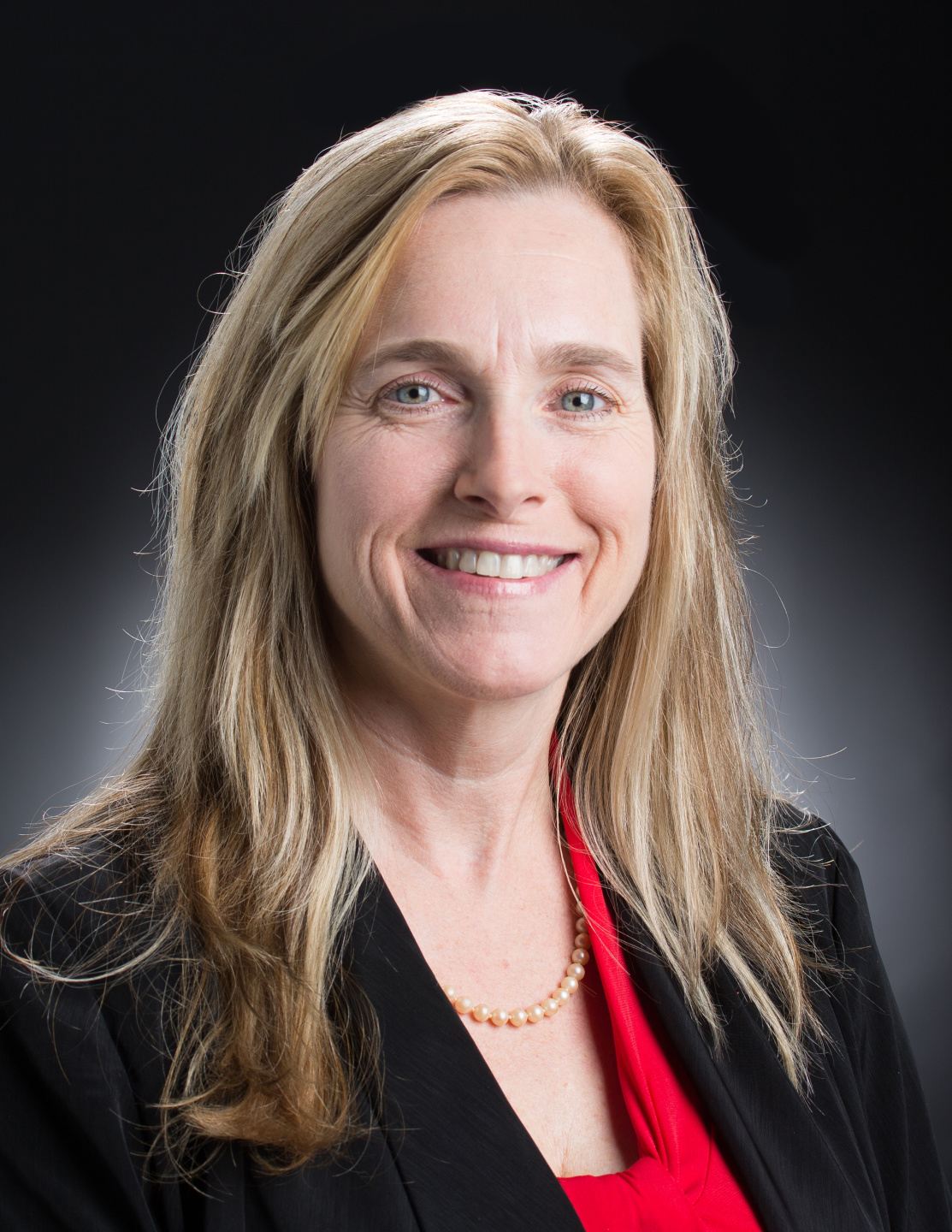
Christine M. Krider is currently Conference Facilities Manager, Production and Operations, Client Services, Creative Event and Project Management in the Communications Department at Johns Hopkins Applied Physics Laboratory, She has over 10 years in facilities management at APL overseeing enterprise conference facilities; including the Kossiakoff Center, Parsons Auditorium, 200-E100, 201 Auditorium and attached breakout rooms and over 25 conference rooms. Manage calendars and assist with meeting and event logistics. APL Room Reserve application expert. Design floor plans for the Kossiakoff Center and Building 201 auditorium and breakout rooms. Extremely detail oriented, manage schedules, troubleshooting, writing procedures and reports. Supervisory experience, ensuring adequate coverage on shifts/locations. Diverse background in financial, investigative, and science disciplines.
 Ashutosh Dutta is currently senior scientist and 5G Chief Strategist at the Johns Hopkins University Applied Physics Laboratory (JHU/APL). He is also a JHU/APL Sabbatical Fellow and adjunct faculty at The Johns Hopkins University. Ashutosh also serves as the chair for Electrical and Computer Engineering Department of Engineering for Professional Program at Johns Hopkins University. His career, spanning more than 30 years, includes Director of Technology Security and Lead Member of Technical Staff at AT&T, CTO of Wireless for NIKSUN, Inc., Senior Scientist and Project Manager in Telcordia Research, Director of the Central Research Facility at Columbia University, adjunct faculty at NJIT, and Computer Engineer with TATA Motors. He has more than 100 conference, journal publications, and standards specifications, three book chapters, and 31 issued patents. Ashutosh is co-author of the book, titled, “Mobility Protocols and Handover Optimization: Design,Evaluation and Application,” published by IEEE and John & Wiley that has recently been translated into Chinese Language. Ashutosh is the founding co-chair for IEEE Future Networks initiative and serves as IEEE Communications Society’s Distinguished Lecturer for 2017-2018 and Distinguised Speaker for ACM from 2020-2022. He was recipient of the prestigious 2009 IEEE MGA Leadership award and 2010 IEEE-USA professional leadership award. Ashutosh obtained his BS in Electrical Engineering from NIT Rourkela, India, MS in Computer Science from NJIT, and Ph.D. in Electrical Engineering from Columbia University under the supervision of Prof. Henning Schulzrinne. Ashutosh is a Fellow of IEEE and senior member of ACM.
Ashutosh Dutta is currently senior scientist and 5G Chief Strategist at the Johns Hopkins University Applied Physics Laboratory (JHU/APL). He is also a JHU/APL Sabbatical Fellow and adjunct faculty at The Johns Hopkins University. Ashutosh also serves as the chair for Electrical and Computer Engineering Department of Engineering for Professional Program at Johns Hopkins University. His career, spanning more than 30 years, includes Director of Technology Security and Lead Member of Technical Staff at AT&T, CTO of Wireless for NIKSUN, Inc., Senior Scientist and Project Manager in Telcordia Research, Director of the Central Research Facility at Columbia University, adjunct faculty at NJIT, and Computer Engineer with TATA Motors. He has more than 100 conference, journal publications, and standards specifications, three book chapters, and 31 issued patents. Ashutosh is co-author of the book, titled, “Mobility Protocols and Handover Optimization: Design,Evaluation and Application,” published by IEEE and John & Wiley that has recently been translated into Chinese Language. Ashutosh is the founding co-chair for IEEE Future Networks initiative and serves as IEEE Communications Society’s Distinguished Lecturer for 2017-2018 and Distinguised Speaker for ACM from 2020-2022. He was recipient of the prestigious 2009 IEEE MGA Leadership award and 2010 IEEE-USA professional leadership award. Ashutosh obtained his BS in Electrical Engineering from NIT Rourkela, India, MS in Computer Science from NJIT, and Ph.D. in Electrical Engineering from Columbia University under the supervision of Prof. Henning Schulzrinne. Ashutosh is a Fellow of IEEE and senior member of ACM.
 Jared Everett is a senior wireless communications research engineer in the Wireless Cyber Capabilities group at the Johns Hopkins University Applied Physics Laboratory (Johns Hopkins APL). Since joining APL in 2009, his research has focused broadly on the use of cellular technologies for defense and national security applications. He has a deep knowledge of LTE and emerging 5G standards, specializing in cellular air interfaces and end-to-end systems. He is a co-author of the book, “Wireless Networking: Understanding Internetworking Challenges,” published by Wiley/IEEE Press. His current research interests include innovative approaches to spectrum sharing in 5G networks. Jared holds M.S. and B.S. degrees in electrical engineering from North Carolina State University. He also holds a B.A. degree in music.
Jared Everett is a senior wireless communications research engineer in the Wireless Cyber Capabilities group at the Johns Hopkins University Applied Physics Laboratory (Johns Hopkins APL). Since joining APL in 2009, his research has focused broadly on the use of cellular technologies for defense and national security applications. He has a deep knowledge of LTE and emerging 5G standards, specializing in cellular air interfaces and end-to-end systems. He is a co-author of the book, “Wireless Networking: Understanding Internetworking Challenges,” published by Wiley/IEEE Press. His current research interests include innovative approaches to spectrum sharing in 5G networks. Jared holds M.S. and B.S. degrees in electrical engineering from North Carolina State University. He also holds a B.A. degree in music.
 Don Herres, IEEE Region 2 South Area Chair
Don Herres, IEEE Region 2 South Area Chair
Don Herres does contract design for electrical, electronic, and embedded software design for consumer & industrial products, sharing knowledge and mentoring based on more than 35 years of successful product introductions. He is a Licensed Professional Engineer in MD, PA & NY, has a BSEE from SUNY Buffalo and MSEE from Syracuse University. He is inventor on 4 patents. Don is currently IEEE Region 2 South Area Chair and is a Senior Member.
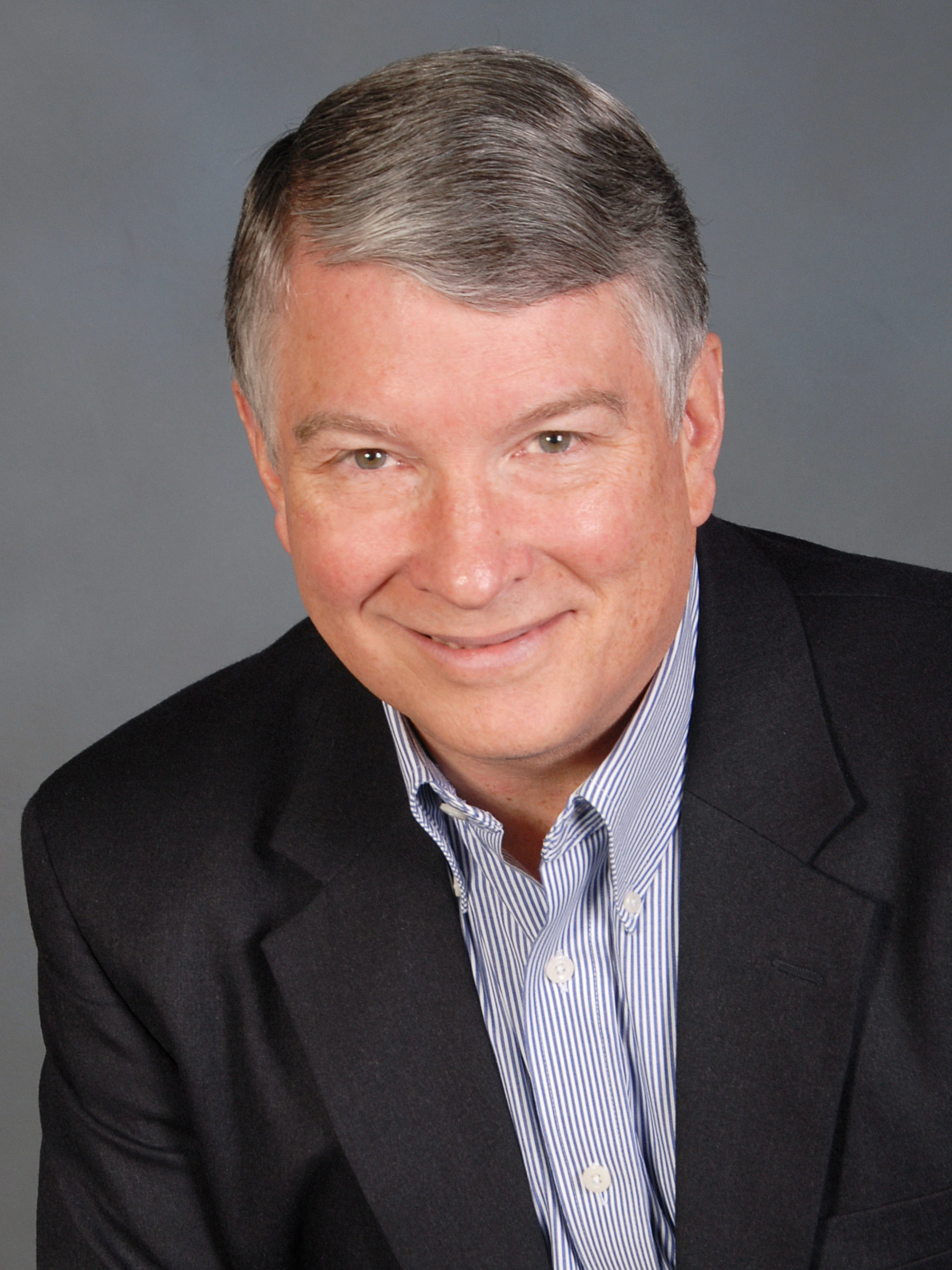 Douglas Holly, Principle, Eagle Management Group
Douglas Holly, Principle, Eagle Management Group
Doug brings a broad range of telecommunications, business leadership and management skills with a particular focus on project management, operational improvement and M&A. He currently heads up Eagle Management Group a consulting firm that provides general management, project management and strategic planning to improve operational performance. EMG also provides M&A selection, diligence support and integration services to businesses. He is a director of the Washington Section and chair its chapter of the Communications Society and also chair of the joint Washington/Northern Virginia chapter of the TEMS. He was finance chair for the IEEE GLOBECOM 2007 and 2016. Doug holds a bachelor's and master's dress in electrical engineering from Rensselaer Polytechnic Institute.
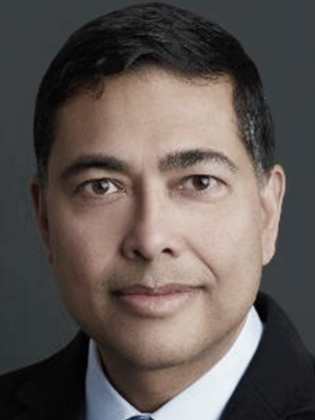
Narendra Mangra is a wireless mobility advisor at GlobeNet. His diverse experience extends across the wireless mobility ecosystem and mobile network deployment lifecycle within academia, government and industry. He is an Adjunct Professor at the Volgeneau School of Engineering at the George Mason University. Narendra is also the Applications and Services Co-Chair and Summer School Chair for IEEE Networks. He leads the Smart Cities roadmap development initiative and recurring i educational sessions for Young Professionals.
Narendra has extensive consulting experience in the mobile satellite and cellular communications, public safety communications, information technology, higher education, and federal & local government sectors. He holds an MSEE and BSEE from Polytechnic University, MBA from the Robert H. Smith School of Business at the University of Maryland, and a Project Management Professional (PMP) Certificate. His current interests include the 5G ecosystem, Smart Cities and interconnected ecosystems.
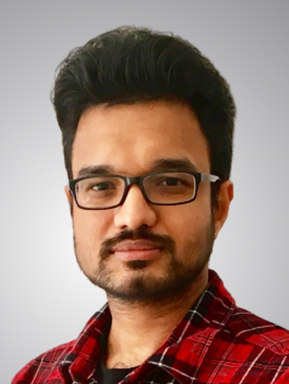 Mithun Mukherjee received the Ph.D. degree in electrical engineering from the Indian Institute of Technology Patna, Patna, India, in 2015. He is currently a Professor with the School of Artificial Intelligence, Nanjing University of Information Science and Technology, Nanjing, China. He has (co)authored more than 100 publications in peer-reviewed journals and conferences. Dr. Mukherjee was a recipient of the 2018 IEEE International Conference on Advanced Networks and Telecommunications Systems (ANTS) Best Paper Award. He also served/will serve as the Publicity Co-Chair of IEEE 5G World 2018, 2019, and 2020. His current research interests center around fog computing and edge intelligence.
Mithun Mukherjee received the Ph.D. degree in electrical engineering from the Indian Institute of Technology Patna, Patna, India, in 2015. He is currently a Professor with the School of Artificial Intelligence, Nanjing University of Information Science and Technology, Nanjing, China. He has (co)authored more than 100 publications in peer-reviewed journals and conferences. Dr. Mukherjee was a recipient of the 2018 IEEE International Conference on Advanced Networks and Telecommunications Systems (ANTS) Best Paper Award. He also served/will serve as the Publicity Co-Chair of IEEE 5G World 2018, 2019, and 2020. His current research interests center around fog computing and edge intelligence.
 Francis X. O’Connell P.E. is an electrical engineer in New Jersey. He works for Skylink Technology in Hamilton, NJ to design, build and integrate spacecraft test systems. Fran is a former Lockheed Martin employee from East Windsor, NJ. At Lockheed-Martin, his team designed and developed the avionics for weather satellites including TIROS and DMSP for NOAA and the Air Force respectively as well as science satellites such as GGS for NASA Goddard and the Mars Global Surveyor spacecraft for JPL. Through his own company, FXO Inc, since 1999 Fran has worked on-site at spacecraft manufacturers to develop test plans, solve difficult test anomalies, and perform reliability analyses.
Francis X. O’Connell P.E. is an electrical engineer in New Jersey. He works for Skylink Technology in Hamilton, NJ to design, build and integrate spacecraft test systems. Fran is a former Lockheed Martin employee from East Windsor, NJ. At Lockheed-Martin, his team designed and developed the avionics for weather satellites including TIROS and DMSP for NOAA and the Air Force respectively as well as science satellites such as GGS for NASA Goddard and the Mars Global Surveyor spacecraft for JPL. Through his own company, FXO Inc, since 1999 Fran has worked on-site at spacecraft manufacturers to develop test plans, solve difficult test anomalies, and perform reliability analyses.
Fran is a Senior Member in the IEEE. He is a Past Chair of the Princeton / Central Jersey Section and its webmaster. Fran is a member of the Aerospace and Electronic Systems Society and the vice-chair of the PCJS Solid State Circuits Society. Fran has volunteered as treasurer for many recent IEEE Communications Society Conferences and Workshops.
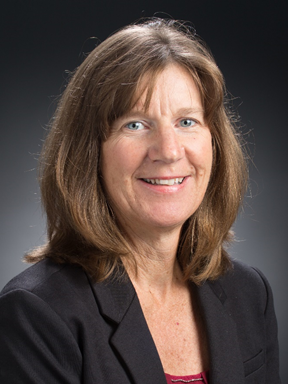 Pamela Patton is a Principal Professional Staff at the Johns Hopkins University Applied Physics Lab (APL). As a technical lead for the 5G Wireless Communications Lab, Pam is standing up a 5G security research environment utilizing Nokia and SDR RAN equipment to support non-standalone (NSA) and standalone (SA) network architectures connected to a virtualized core network utilizing NFV and SDN technologies. The lab builds on existing 4G/LTE infrastructure that she has utilized for various tactical use case studies, security architecture and vulnerability analysis, and performance assessments of secure VoIP in a contested RF and network environment. Prior to joining JHU/APL in 2012, she took on various communication engineering roles within the National Security Agency (13 years) and with defense contractors (12 years). Her focus has been primarily on network architecture, protocols, and security from 2G through the generations up to 5G and how those technologies may apply to DoD interests. She received her BS in Electrical Engineering from Virginia Tech and an MS in Telecommunications and Computers from George Washington University.
Pamela Patton is a Principal Professional Staff at the Johns Hopkins University Applied Physics Lab (APL). As a technical lead for the 5G Wireless Communications Lab, Pam is standing up a 5G security research environment utilizing Nokia and SDR RAN equipment to support non-standalone (NSA) and standalone (SA) network architectures connected to a virtualized core network utilizing NFV and SDN technologies. The lab builds on existing 4G/LTE infrastructure that she has utilized for various tactical use case studies, security architecture and vulnerability analysis, and performance assessments of secure VoIP in a contested RF and network environment. Prior to joining JHU/APL in 2012, she took on various communication engineering roles within the National Security Agency (13 years) and with defense contractors (12 years). Her focus has been primarily on network architecture, protocols, and security from 2G through the generations up to 5G and how those technologies may apply to DoD interests. She received her BS in Electrical Engineering from Virginia Tech and an MS in Telecommunications and Computers from George Washington University.
 Ryan Pepito is an Associate Professional Staff II in the Mission Critical Communications Group (QKT) at The Johns Hopkins University Applied Physics Laboratory (JHU/APL). He has professional experience as a technical contributor in 5G research and development, 5G test and evaluation, and 5G testbed development. Additionally, he serves as a project manager and technical contributor for internet security research. He has a Master of Science degree in Electrical and Computer Engineering from Johns Hopkins University and a Bachelor of Science degree in Electrical Engineering from Drexel University.
Ryan Pepito is an Associate Professional Staff II in the Mission Critical Communications Group (QKT) at The Johns Hopkins University Applied Physics Laboratory (JHU/APL). He has professional experience as a technical contributor in 5G research and development, 5G test and evaluation, and 5G testbed development. Additionally, he serves as a project manager and technical contributor for internet security research. He has a Master of Science degree in Electrical and Computer Engineering from Johns Hopkins University and a Bachelor of Science degree in Electrical Engineering from Drexel University.
 Mr. Oscar Somerlock joined the Applied Physics Laboratory in 2014, where he is currently Chief Scientist of the Communications and Networking Systems Group. Prior to joining APL, he worked in the cellular industry for more than 20 years holding engineering and technical leadership positions at Samsung, Motorola, and Qualcomm. He also founded and served as President of Comware, Inc. He has been awarded patents in digital beamforming, wireless networking and metamaterials. Oscar holds an M.S. degree in Electrical and Computer Engineering from the Johns Hopkins University and MBA from the University of Maryland.
Mr. Oscar Somerlock joined the Applied Physics Laboratory in 2014, where he is currently Chief Scientist of the Communications and Networking Systems Group. Prior to joining APL, he worked in the cellular industry for more than 20 years holding engineering and technical leadership positions at Samsung, Motorola, and Qualcomm. He also founded and served as President of Comware, Inc. He has been awarded patents in digital beamforming, wireless networking and metamaterials. Oscar holds an M.S. degree in Electrical and Computer Engineering from the Johns Hopkins University and MBA from the University of Maryland.
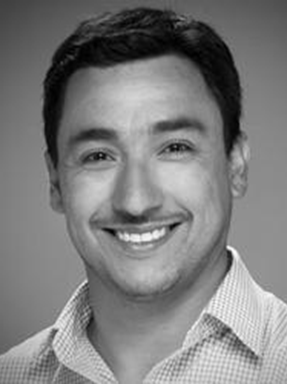 Miguel Gutiérrez Gaitán is currently an Assistant Professor at the Faculty of Engineering of the Andrés Bello University (UNAB), Chile. He received a PhD in Electrical and Computer Engineering from the University of Porto, Portugal, in 2023, an MS in Telecommunications Engineering from the Polytechnic University of Turin, Italy, in 2009, and a BS in Electronics Engineering from the Pontifical Catholic University of Valparaíso, Chile, in 2007. He is also the Chairman of the IEEE ComSoc Chile Chapter, for the 2023-2024 term, and a Research Associate at the Research Centre in Real-Time and Embedded Computing Systems (CISTER), Portugal. His research interests revolve around the fields of wireless networks, real-time communication, and the Internet of Things.
Miguel Gutiérrez Gaitán is currently an Assistant Professor at the Faculty of Engineering of the Andrés Bello University (UNAB), Chile. He received a PhD in Electrical and Computer Engineering from the University of Porto, Portugal, in 2023, an MS in Telecommunications Engineering from the Polytechnic University of Turin, Italy, in 2009, and a BS in Electronics Engineering from the Pontifical Catholic University of Valparaíso, Chile, in 2007. He is also the Chairman of the IEEE ComSoc Chile Chapter, for the 2023-2024 term, and a Research Associate at the Research Centre in Real-Time and Embedded Computing Systems (CISTER), Portugal. His research interests revolve around the fields of wireless networks, real-time communication, and the Internet of Things.
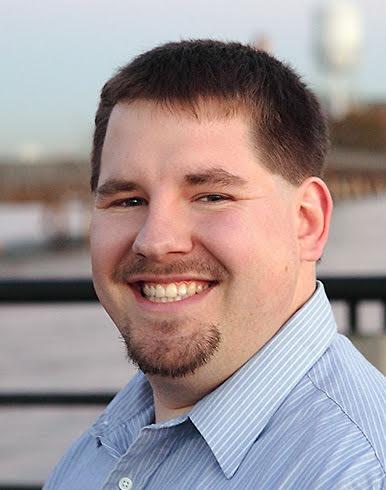 Craig Polk is currently a Program Manager for IEEE Future Networks. Craig receiving his Bachelor of Electrical Engineering from Stevens Institute of Technology, his Masters of Engineering from Purdue University, and MBA from William Paterson University. Prior to IEEE, his career focused on telecommunications within Lucent Bell Labs, Alcatel-Lucent, and Nokia. Evolvng from an R&D engineer into quality and testing of products, customer support to maximize the benefit of networks, and innovation to led to create new work streams. Through the years Craig worked through the transformations from 2G through 5G. He has also worked with startups and small companies in Green Tech, optical communications, digital literacy and education programs to shape the future of STEM.
Craig Polk is currently a Program Manager for IEEE Future Networks. Craig receiving his Bachelor of Electrical Engineering from Stevens Institute of Technology, his Masters of Engineering from Purdue University, and MBA from William Paterson University. Prior to IEEE, his career focused on telecommunications within Lucent Bell Labs, Alcatel-Lucent, and Nokia. Evolvng from an R&D engineer into quality and testing of products, customer support to maximize the benefit of networks, and innovation to led to create new work streams. Through the years Craig worked through the transformations from 2G through 5G. He has also worked with startups and small companies in Green Tech, optical communications, digital literacy and education programs to shape the future of STEM.
Future Networks 2nd Massive MIMO Workshop

3-5 October 2022 | Free & Virtual
Overview
The IEEE Future Networks Massive MIMO Workshop aims to bring together researchers, practitioners, as well as technology decision-makers to form a vision on the use of multi-antenna and related techniques in wireless communications over the upcoming decade and beyond. The focus of the Workshop will be on the latest developments in Massive MIMO challenges and opportunities—from fundamental research, experimental results, system architecture, and applications.
Event Program
Monday 3 October 2022 (NOTE: All times are Eastern Time US)
| 08:00-08:30 |
Intelligent Omni-Surfaces enabled massive MIMO: Simultaneous Refraction |
Boya Di (Peking University), Hongliang Zhang (Princeton University) |
| 08:30-09:00 | Optimized Precoding for MU-MIMO With Fronthaul Quantization | Yasaman Khorsandmanesh, Emil Björnson (KTH Royal Institute of Technology) |
| 09:00-09:05 | Break | |
| 09:05-10:00 | Keynote: Multi-Agent Autonomous Networking: From Low VHF to Massive MIMO | Brian Sadler (Army Research Lab) |
| 10:00-10:30 | Polar coded massive MIMO for Ultra-Reliable Low Latency Communications (URLLC) | Madhusudhanan Natarajan (MVJ College of Engineering) |
| 10:30-11:00 | Satellite communication Applications and Recent technologies | Sanjeev Kumar Gupta (Indian Space Research Organization) |
| 11:00-11:05 | Break | |
| 11:05-12:00 | Keynote: Evolution of MIMO Technology for 5G and Beyond | Yang Li (Samsung Research America) |
| 12:00-12:30 | Fingerprinting based Localization in Massive MIMO Set-Up using Deep Spatio-Temporal Network in Confined Spaces |
Kandarpa Kumar Sarma (Gauhati University) |
| 12:30-13:00 | Importance of User-Centric Multi-Domain Service Orchestration | Swaminathan Arunachalam (HCL) |
Tuesday 4 October 2022 (NOTE: All times are Eastern Time US)
| 09:00-09:30 | Designing and Deploying Open RAN: Architecture and Outlook | Eddy Chiu (ASTRI) |
| 09:30-10:00 | Channel hardening in real environments | Sara Willhammar, Fredrik Tufvesson (Lund University) |
| 10:00-10:05 | Break | |
| 10:05-11:00 | Keynote: Spectrum for NextG: licensed, unlicensed or shared? | Monisha Ghosh (U of Notre Dame) |
| 11:00-11:30 | AI for 5G-Advanced and application to massive MIMO | Xingqin Lin (NVIDIA) |
| 11:30-12:00 | Enabling a More Prosperous Space Era: A Massive MIMO Perspective | Yiming Huo (University of Victoria) |
| 12:00-12:05 | Break | |
| 12:05-13:00 | Keynote: High-speed molecular communication: a solution for 6G? | Andrew Eckford (York University) |
Wednesday 5 October 2022 (NOTE: All times are Eastern Time US)
| 08:30-09:00 | Energy-Efficient Cell-Free Massive MIMO on Top of C-RAN | Özlem Tugfe Demir (TOBB University of Economics and Technology) |
| 09:00-09:05 | Break | |
| 09:05-10:00 | Keynote: Next-generation Wireless Networks will be “Multi-function” | Ashutosh Sabharwal (Rice University) |
| 10:00-10:30 | Challenges of Ultra-Massive MIMO at THz Frequencies | Javier Lorca (InterDigital) |
| 10:30-11:00 | Efficient Deep-Learning Models for Future Blockage Prediction and Beam Selection for mmWave Systems |
Satya Kumar Vankayala (Samsung R&D Institute) |
| 11:00-11:05 | Break | |
| 11:05-12:00 | Keynote: Next generation mobile from a US perspective | Ali Khayrallah (Ericsson) |
| 12:00-12:30 | Non-Coherent Multiuser Massive MIMO-OFDM for high-speed communications | Kun Chen-Hu, Ana García Armada (Universidad Carlos III de Madrid) |
| 12:30-13:00 | Coarse Quantization for Massive MIMO | Reza Mohammadkhani (University of Sussex) |
| 13:00-13:30 | AI-enabled massive MIMO for industry 5.0 | Shahid Mumtaz (Instituto de Telecomunicações) |
Past Events
2021 IEEE Future Networks Massive MIMO Workshop
Keynote Speakers
|
Brian Sadler |
Monisha Ghosh |
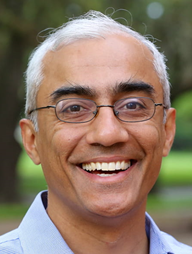
Ashutosh Sabharwal |
|
Yang Li |
Andrew Eckford |
Ali Khayrallah |
Why Present at the Massive MIMO Workshop?
- The Workshop provides a platform for academics and industry participants to timely discuss breakthrough research, future directions, and lessons learned about topics that are relevant to Massive MIMO.
- Being under the IEEE Future Networks initiative, the Workshop is promoted within and beyond the IEEE community and reaches a worldwide audience. Future Networks workshops, seminars, podcasts, and white papers enjoy a wide circulation and attendance.
- Streamlined proposal submission (max 2 pages) process to engage the 5G and beyond community as soon as researchers can provide solutions that impact system requirements and practitioners who can provide feedback on fundamental concepts.
- The format of the Massive MIMO Workshop emphasizes the need to create an environment for speedy discussions and dialogues to maximize interactions for both the presenters and the audience.
- You will help shape the direction and the focus of the future Massive MIMO Workshops in the coming years.
Topics of Interest
The Massive MIMO Workshop seeks speaker presentation proposals in the following topical areas. The topics below are not meant to be exhaustive. The Workshop welcomes proposals on related topics or other topics of interest to the Massive MIMO community.
- Cell-free Massive MIMO
- Single User Massive MIMO
- Reconfigurable Intelligent Surfaces (RIS) for Future Wireless Communications
- Signal processing, detection, and energy efficiency
- Massive MIMO joint radar-communications
- THz-band Ultra Massive MIMO (UM-MIMO)
- Massive MIMO visible light communication (VLC)
- Unmanned aerial vehicle (UAV)-based base stations
- Open radio access network (RAN) Massive MIMO
- Coordinated Massive MIMO and RAN orchestration
- Artificial intelligence and machine learning techniques for Massive MIMO
- 5G/6G Cellular Systems and Heterogeneous Networks
- 6G Ultra Massive MIMO Beamforming architectures
- Massive MIMO and physical layer security
- Massive MIMO measurement results and commercial deployment case studies
Organizing Committee
| Chris Ng | IEEE Future Networks Massive MIMO WG |
| Kumar Vijay Mishra | United States Army Research Laboratory |
| Yiming Huo | University of Victoria |
| Nasir Hussain | Samsung Electronics America |
| Harish Kumar Sahoo | Veer Surendra Sai University of Technology |
| Yang Miao | University of Twente |
| Ahmet Serdar Tan | InterDigital |
| Suma Pannala | IEEE Future Networks Massive MIMO WG |
| Muhammad Imran Aslam | NED University Karachi |
Contact Persons
Please direct any questions or comments to the 2nd Massive MIMO Workshop contact persons below.
| Chris Ng | IEEE Future Networks Massive MIMO WG | This email address is being protected from spambots. You need JavaScript enabled to view it. |
| Kumar Vijay Mishra | United States Army Research Laboratory | This email address is being protected from spambots. You need JavaScript enabled to view it. |
Workshop on Challenges to Extending Traveling Edge to Sea, Sky, and Space
Free & Virtual | 29-30 November 2022
| Register Soon |
Overview
Call for Speaker Proposals
| Submit Proposal |
If you do not have an EDAS account, create one here.
Deadline: 31 October 2022
Each proposal (maximum 2 pages) must include:
- Title and Abstract
- Specific track (see descriptions below): Edge Platform Standards/Architecture, Industry Applications, Research Challenges
- A short biography (no more than 200 words) of each speaker
- An explanation of the motivation, background, objective, description of the challenges to be covered, relevance, and timeliness
The proposal will be reviewed based on its relevance, the topic’s importance to the workshop, and the diversity it offers in terms of the problem, proposed solution, and evaluation approach.
Track Descriptions
Edge Platform Standards & Architecture
A key area of future Edge Network & Services is the ability to extend the platform to newer areas like moving objects in Atmosphere (Air), Space Stations and Ships at Sea. The challenges include integrating these moving objects like UAV, Drone, Satellite, Ships, Trains to communicate information with Fixed Gateways on Ground or Direct communication with end end terminal Devices through policy, intent and performance indicators in both hierarchical and peer-to-peer relationships. Various standards bodies such as CCSDS, ISO, IEEE CommSoc, DOCSIS, SCF, ETSI and O-RAN have been looking into standardization of interfaces for such purposes. IEEE Edge Service (ES) Working Group is calling presenters to provide and share insights around progress and gaps in inter-system interface such as NTN (LEO, HAP, LAP, UAV, Aircraft/Air Taxi,MEC/Edge Cloud) & Terrestrial Network (TN) standards like K8s based CaaS, CNI, CSI, Helm charts, Operator patterns and architectures as relevant to Edge latency, throughput & packet error rate optimization for 5G and beyond with SatCom constrained base stations.
Industry Applications
In the Industry Applications track, we invite speakers to discuss the advent of innovative edge Agri, Health & industrial IoT deployments due to emergence of Standardization of V2X Network Slicing by 3GPP and GSMA. With IEEE INGR SatComm & O-RAN module distribution, IEEE ES new Models type nomenclature are being defined. This will simplify workload configuration for autonomous driving, Air Taxi, Weather predictions, Fire fighting and other Drone based Agri Apps. Such edge applications in the Air and their adoption by stakeholders in the value chain with Public and Private brings new operators, vendors, integrators, and the like. The objective of this track is to understand Application stakeholders' concerns, use cases and alternatives for Edge Service optimization in 5G and beyond networks. We encourage contributors to share their goals and experiences in this area.
Research Challenges
In the research topic area, the workshop seeks to expand discussions into newer and future topics related to future networks Edge Network Service security threats & Network Control in Real Time. The goal of this track is to investigate innovative and advanced approaches to improve MEC workload in 5G and future networks using techniques such as distributed artificial intelligence/machine learning, and challenges to their application to future network problems. The Research can include impact of FCC regulations on WiFi, WiFi-6/7, ZigBee, LoRa WAN and Merchant Silicon pushing for lower cost Radio and alternates to Cellular combined with SatComm Transceivers for better agile algorithms for presence, Location based xR apps and games, streaming media for entertainment. 5G slicing for eMBB, URLLC, mIoT, and V2X enables startups to focus on niche areas leveraging new Edge business models.
5G Demystified
Depending on what you read, 5G is either a dark threat to society, the impetus for the next industrial revolution, or a marketing ploy to get us to buy new phones and tablets. Seldom has an emerging technology been so widely known yet so misunderstood.
For this reason, IEEE Future Networks has developed a free virtual event series, 5G Demystified, where we will gather experts to make sense of 5G’s potential and status in a way that non-engineers can understand and appreciate. Below is information on each of the four parts that will take place on LinkedIn Live during the last four months of 2022.
Each event is moderated by David Witkowski, author and entrepreneur who co-chairs the IEEE Future Networks Deployment working group, and who hosted the eLearning course Bridging the 4G/5G Gap. That on-demand course was developed to educate non-engineer staffers at U.S. towns and cities about what they need to know when industry wants to build new 5G telecommunications infrastructure in their community.
Part 1: Hype vs. Reality of 5G
From the public’s perspective, 5G has been hyped at a fever pitch for several years now, but the impact on everyday life has been limited. TV commercials drop terms like “ultra-wideband” or “extended range” and our phones sometimes show 5G where LTE used to be – but has anyone noticed an impact? In this IEEE panel discussion, experts will discuss the challenges created by how the wireless carriers have decided to promote 5G, and what the REAL value of 5G technology is likely to be. (Hint: It’s not for consumers or phones.)
- When: 8 September 2022, 12:00 Eastern
- Registration: https://www.linkedin.com/video/event/urn:li:ugcPost:6953417295696162816/
- Moderator: David Witkowski
- Participants:
Part 2: Broadband Is Infrastructure?
The COVID-19 pandemic exposed a major flaw in global infrastructure when it turned out that millions (if not billions) of people were unable to work or attend school from home due to lack of reliable connections to the internet. With the digital divide a concern even in “first world” countries, internet access has taken its place alongside roads, bridges and utilities as a new kind of infrastructure in the purview of governments. In this IEEE panel discussion, experts will discuss the impact that this shift in thinking is having on local governments, property values, our visual environment, and on the rural communities that struggle to obtain broadband access.
- When: 18 October 2022, 1:00pm ET US
- Registration: https://www.linkedin.com/
video/event/urn:li:ugcPost: 6973378057868857344/ - Moderator: David Witkowski
- Speakers:
Part 3: Health and Safety of 5G
From a public perception standpoint, 5G technology can’t catch a break. Various internet theories tied it to cancer, then to the COVID-19 virus, and then the US Federal Aviation Administration claimed it could endanger airplanes while landing in low visibility. In a world of propaganda and misinformation, how are the public and policymakers supposed to make sense of any individual claim? In this IEEE webinar, we will have brief expert presentations on the science and standards of human health effects from electromagnetic radio waves in 5G communications.
- When: 30 November 2022, 1:00pm ET US
- Registration: https://www.linkedin.com/video/event/urn:li:ugcPost:6987832278659821568/
- Moderator: David Witkowski
- Speakers:
Part 4: Will 5G Kill Wi-FI?
We use Wi-Fi at home because it offers speeds better than our LTE phones get. But if 5G will provide speeds 10x better than LTE, will that mean we no longer need Wi-Fi at home? Will public Wi-Fi become as antiquated as internet cafes? In this IEEE webinar, we will have brief expert presentations on the battle for last mile connectivity between 5G and Wi-Fi and recent advances on how these two technologies may co-mingle.
- When: December TBA
- Moderator: David Witkowski
- Speakers:
- TBA
2022 5th IEEE 5G Workshop on First Responder and Tactical Networks

7 November 2022 || Free || Johns Hopkins University Applied Physics Lab, Laurel, MD, USA
For video recordings, please see IEEE Future Networks Videos.
Event Venue
The 2022 5th IEEE 5G Workshop on First Responder and Tactical Networks will take place at Johns Hopkins University Applied Physics lab on 7 November 2022 at the Kossiakoff Conference Center, 11100 Johns Hopkins Road, Laurel, MD 20723 USA (Google Map). More information about the traveling to the center can be found on the Applied Physics Laboratory webpage.
| Event Brochure |
5G is not just the next evolution of 4G technology; it's a paradigm shift. It is expected to enable fundamentally new applications — with much more stringent requirements in latency and bandwidth — and provide resiliency and flexibility to the underlying network. Several standards organizations and forums, namely IEEE, the 3rd Generation Partnership Project, and the International Telecommunication Union, are working on defining the architecture and standardizing aspects of 5G technologies. However, few organizations are focusing on how such technologies can be useful to tactical and first responder networks.
IEEE is hosting the fifth workshop in this series on 7 November 2022 at Johns Hopkins University Applied Physics Lab in Laurel, MD, USA. In 2021, it was the result of partnership and collaboration with the Department of Homeland Security Science and Technology Directorate (DHS S&T), the Johns Hopkins University Applied Physics Lab (JHU/APL), and the Office of Under Secretary of Defense for research and Engineering (OUSD R&E) - 5G. This workshop will explore the applicability of 5G technologies for tactical and first responder networks, offer solutions, share use cases, and investigate research opportunities and challenges. The event will also provide an opportunity for 5G experts from industry and academia, as well as the standards, regulatory, homeland security, public safety and defense communities, to collaborate.
This event is co-located with the IEEE Public Safety Technology (PST) Initiative's Advances in Public Safety Technology Workshop taking place on 8 November at Johns Hopkins University Applied Physics Lab. For more information about the initiative and event, please visit the initiative website.
For any questions, please contact:
Ashutosh Dutta
This email address is being protected from spambots. You need JavaScript enabled to view it.
Phone +1 908-642-8593
| 08:00-08:30 | Coffee | |
| 08:30-08:40 | Introduction and IEEE Future Networks | Ashutosh Dutta, IEEE Future Networks Co-Chair and Brad Kloza, Program Direction, Future Networks |
| 08:40-08:50 | Welcome Remarks | Louis A. Colangelo, JHU/APL Mission Area Executive |
| 08:50-09:20 | Keynote Presentation: 5G – The Road Ahead, Accelerate Use: Tranche Prototyping and Experimentation |
Debra K Stanislawski, OUSD |
| 09:20-09:40 | The Evolution of Priority Access in the 5G Environment and Beyond | Billy Bob Brown, Jr, DHS ECD |
| 09:40-10:00 | PAWR Platforms: Advancing Wireless Comms for Tactical Response | Mari Silbey, US Ignite |
| 10:00-10:20 | Network Reliability of 5G First Responder and Tactical Networks | Bob Stephens, KeySight Technologies |
| 10:20-10:40 | Gaps and Opportunities in Nascent 5G Tactical market | Salvadore D'Itri, NSC |
| 10:40-10:50 | Morning Break | |
| 10:50-11:10 | How can we leverage 5G to enhance tactical communication capabilities? | Venkatesh Ramaswamy, MITRE |
| 11:10-11:30 | A simulation study of 5G New Radio Sidelink in Public Safety Communications | Chunmei Liu, NIST |
| 11:30-11:50 | 5G Tactical Networks - Considerations | Brian Kassa, Ericsson |
| 11:50-12:10 | 5G non-terrestrial networks | Qiang Wu, Qualcomm |
| 12:10-12:30 | Features and Gaps in a Deployable Wireless Video & Sensor Network: A Field Study Review | Gordon Beattie, Viavi Solutions |
| 12:30-13:00 | Lunch Break | |
| 13:00-13:30 | Keynote Presentation: Examining DHS 5G Mission Use Cases and other Interoperability & Standards Conformance efforts |
Sridhar Kowdley, DHS S&T |
| 13:30-13:50 | The Connected First Responder | Mike Varney, FirstNet |
| 13:50-14:10 | INDIGO: Intelligent 5G Networks Designed and Integrated for Globalized Operations | Tracy Van Brakle, AT&T |
| 14:10-14:30 | Advanced communication (5G) and (AI/ML/DL) to meet mission objectives for Situational Awareness and Response |
Stan Mo, Gretchen Stewart, Leland Brown, Intel |
| 14:30-14:50 | Open-RAN Enabling Homeland Secure Networks | Kamakshi Sridhar, Mavenir |
| 14:50-15:10 | Information Trust Environment and possibilities in 5G | Gabriel A Martinez, DHS, CISA ECD |
| 15:10-15:20 | Coffee Break | |
| 15:20-15:40 | Experimentation with Urban Situational Awareness Related Services | Ivan Seskar, Rutgers WINLAB |
| 15:40-16:00 | 5G on the Moon – and why it’s important for tactical and first responder networks | Oscar Somerlock, Johns Hopkins Univ/Applied Physics Lab |
| 16:00-16:10 | Accelerating 5G Innovations in Tactical Networks | Raymond Shen, KeySight Technologies |
| 16:10-16:20 | 5G Tactical Network Deployment Challenges | Andrew Bolka, Booz-Allen-Hamilton |
| 16:20-16:30 | QoS Nudging rApp for critical communication | Eugene Gomes and Deepak Kataria, Ericsson |
| 16:30-16:40 | NextG RAN-sharing for Disaster-Recovery and Tactical Mission Partners | Praveen Gupta, MITRE |
| 16:40-16:50 | Roadmap for a Digital-Twin Enabled Testbed for Public Safety Communication Technologies |
Jian Tao, Texas A&M |
| 16:50-17:00 | Closing Remarks | Robert Bartholet, JHU/APL |
| 17:00-18:00 | Reception | |
*NOTE: All times Eastern Time US
Sponsorship and Exhibit Opportunities
| Sponsors | |
Diamond |
Platinum |
| Exhibitors | |
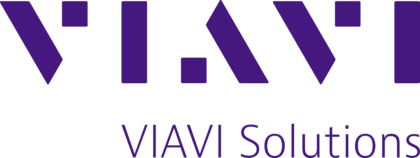 |
 |
 |
 |
Event Partner
The MOVE Program is committed to assisting victims of and responders to natural disasters with short-term communications, computer, and power solutions. Visit the MOVE Truck on-site at the workshop to learn more about the program and its impact around the world.
Through its products and services, IEEE-USA serves as a resource for enhancing the professional growth and career advancement of U.S. IEEE Members. And through its Government Relations programs, IEEE-USA works with all three branches of the federal government to help shape the workforce and technology policy to the benefit of members, the profession and the American public.

Made possible by the members of IEEE, IEEE.tv is an award-winning, Internet-based television network. We produce and deliver special-interest programming about technology and engineering for the benefit of IEEE's members and the general public.

 IEEE Baltimore Section
IEEE Baltimore Section
All Events
2021 IEEE 5G Workshop on First Responder and Tactical Networks (WFRTN)
2020 IEEE 5G Workshop on First Responder and Tactical Networks (WFRTN)
2019 IEEE 5G Workshop on First Responder and Tactical Networks (WFRTN)
2018 IEEE 5G Workshop on First Responder and Tactical Networks (WFRTN)
Event Speakers
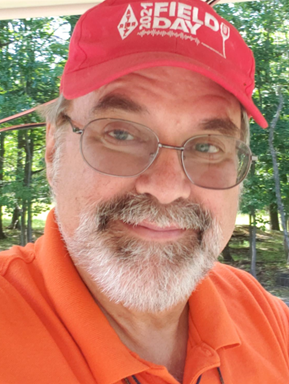 J. Gordon Beattie, Jr. is a Senior Principal Research Scientist/Engineer in the Chief Technology Office of VIAVI Solutions where he drives technology innovation across business units with focus on 5G, 6G, Non-Terrestrial Networks, Mission-Critical Networks, and related communications technologies. He is a former Member of Technical Staff/Principal Technical Architect at AT&T Bell Labs/AT&T Labs where he focused on service assurance systems and protocols.
J. Gordon Beattie, Jr. is a Senior Principal Research Scientist/Engineer in the Chief Technology Office of VIAVI Solutions where he drives technology innovation across business units with focus on 5G, 6G, Non-Terrestrial Networks, Mission-Critical Networks, and related communications technologies. He is a former Member of Technical Staff/Principal Technical Architect at AT&T Bell Labs/AT&T Labs where he focused on service assurance systems and protocols.
He has authored, or contributed to 152 granted U.S. Patents, and was recognized with the AT&T’s Social Innovator Award for his inspiring colleagues to get involved in the work of Intellectual Property creation and protection. Gordon is a trained volunteer Communications Team Leader/Technician with the Passaic County, New Jersey Sheriff’s Department, a volunteer with the Suwannee County (Florida) Office of Emergency Management and an active licensed Extra Class Amateur Radio Operator (W2TTT) since 1975. Gordon also contributed to the IEEE’s P1897 workgroup on Power Line Noise and serves as a member of the American Radio Relay League’s Electro-Magnetic Compatibility Committee.
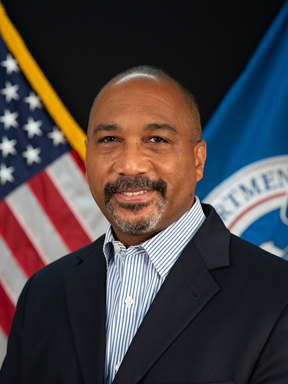 Billy Bob Brown, Jr. serves as the Executive Assistant Director (EAD) for Emergency Communications within the Cybersecurity and Infrastructure Security Agency (CISA). In this capacity, EAD Brown drives cross-divisional synergy as identified in the Cybersecurity and Infrastructure Security Act of 2018. Mr. Brown most recently served as the Associate Director, Priority Telecom Services Sub-Division as well as the Program Manager for both the DHS Level 2 Program Next Generation Networks Priority Services Program and the Level 3 Program Priority Telecommunications Services Program. In this role, he was responsible for providing priority telecommunications services over commercial networks to enable national security and emergency preparedness (NS/EP) personnel with the ability to communicate during congestion scenarios across the nation.
Billy Bob Brown, Jr. serves as the Executive Assistant Director (EAD) for Emergency Communications within the Cybersecurity and Infrastructure Security Agency (CISA). In this capacity, EAD Brown drives cross-divisional synergy as identified in the Cybersecurity and Infrastructure Security Act of 2018. Mr. Brown most recently served as the Associate Director, Priority Telecom Services Sub-Division as well as the Program Manager for both the DHS Level 2 Program Next Generation Networks Priority Services Program and the Level 3 Program Priority Telecommunications Services Program. In this role, he was responsible for providing priority telecommunications services over commercial networks to enable national security and emergency preparedness (NS/EP) personnel with the ability to communicate during congestion scenarios across the nation.
Mr. Brown graduated from the United States Air Force Academy with a Bachelor of Science degree and holds a Master of Business Administration from Webster University. He is a certified Project Management Professional (PMP).
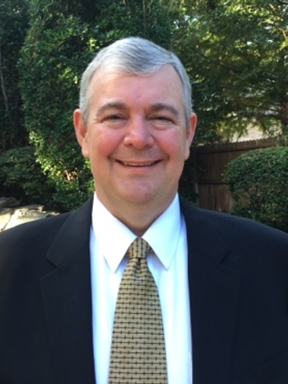 Brian Kassa is the VP for Mission Critical Systems for Ericsson in North America. Brian brings over 25 years of telecommunications and cyber security experience and 28 years of first responder experience in fire, emergency medical services, dispatch, emergency communications, search and rescue and emergency management. Brian joined Ericsson from The First Responder Network Authority where, for nearly seven years, led architecture, systems engineering, cyber security and emergency response for the federal agency. Brian first started working on Mission Critical Networks at Nokia in 2010, as the Head of Technology for Public Safety Broadband where he was involved in the market activities that would eventually lead to the formation of the First Responder Network Authority and the Nationwide Public Safety Broadband Network.
Brian Kassa is the VP for Mission Critical Systems for Ericsson in North America. Brian brings over 25 years of telecommunications and cyber security experience and 28 years of first responder experience in fire, emergency medical services, dispatch, emergency communications, search and rescue and emergency management. Brian joined Ericsson from The First Responder Network Authority where, for nearly seven years, led architecture, systems engineering, cyber security and emergency response for the federal agency. Brian first started working on Mission Critical Networks at Nokia in 2010, as the Head of Technology for Public Safety Broadband where he was involved in the market activities that would eventually lead to the formation of the First Responder Network Authority and the Nationwide Public Safety Broadband Network.
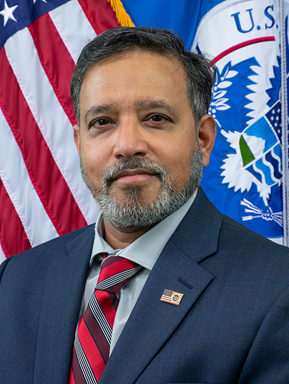 Sridhar Kowdley is a Technical Manager at the U.S. Department of Homeland Security (DHS) Science and Technology Directorate Office for Interoperability and Compatibility Technology Center. With over 30 years of experience in communications and networking, he works and leads programs to help DHS Components as well as state and local first responders operate more effectively and safely through the pursuit of resilient, highly available and interoperable technology solutions. He forges and leads intra- and interdepartmental partnerships with other agencies including DoD, DoT, NSF, and DoJ.
Sridhar Kowdley is a Technical Manager at the U.S. Department of Homeland Security (DHS) Science and Technology Directorate Office for Interoperability and Compatibility Technology Center. With over 30 years of experience in communications and networking, he works and leads programs to help DHS Components as well as state and local first responders operate more effectively and safely through the pursuit of resilient, highly available and interoperable technology solutions. He forges and leads intra- and interdepartmental partnerships with other agencies including DoD, DoT, NSF, and DoJ.
At DHS he leads several programs including the P25 Compliance Assessment Program which ensures that radios and solutions manufactured for public safety and federal agencies are built to standards and interoperable. In partnership with industry, public safety practitioners and standards development organizations, DHS provides policy and guidance to enable procurement of land mobile radio solutions by public safety practitioners. He provides technical leadership and guidance for the NG911 Interoperability and Compliance Program designed to ensure that NG911 solutions built by industry will be evaluated for compliance to standards and demonstrated interoperability. This engagement includes industry, academia, public safety practitioners and associations. federal agencies and partnership to ensure that NG911 are tested for nationwide deployment. Mr. Kowdley supports the research, development, and test and evaluation of next generation communications technologies including 5G/XG, Internet of Things (IoT), and Smart Cities to identify opportunities, risks and vulnerabilities for DHS Components and state and local first responders. He contributes to the research activities across DHS to address capability gaps and vulnerabilities in these technology areas. Currently, he leads initiatives across DHS to make communications networks and systems more resilient to cybersecurity risks including spectrum interference.
He holds a BS in Electrical Engineering from Columbia University NYC and an MS in Electrical and Computer engineering from George Mason University.
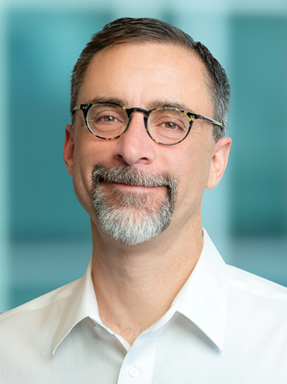 Salvador D’Itri is Founder and President at Grace Innovations. He has served as board member for the Wireless Innovation Forum and as an appointee to the Information Technology Advisory Commission for Arlington County, Virginia. His fields of experience include, spectrum management, 5G, cognitive radio, telecommunications and cloud computing.
Salvador D’Itri is Founder and President at Grace Innovations. He has served as board member for the Wireless Innovation Forum and as an appointee to the Information Technology Advisory Commission for Arlington County, Virginia. His fields of experience include, spectrum management, 5G, cognitive radio, telecommunications and cloud computing.
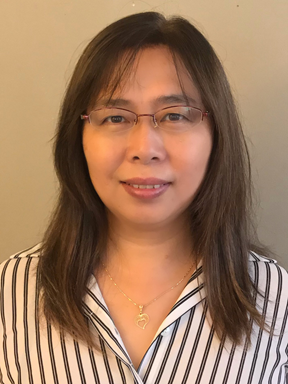
Chunmei Liu received her Ph.D. degree in Computer Systems from the Massachusetts Institute of Technology (MIT) in 2005. She has been working in the areas of wireless communications and networking since then. She is currently a researcher with the Wireless Networks Division, National Institute of Standards and Technology (NIST). Her research interests include public safety communications and automated vehicle in cellular networks and machine learning.
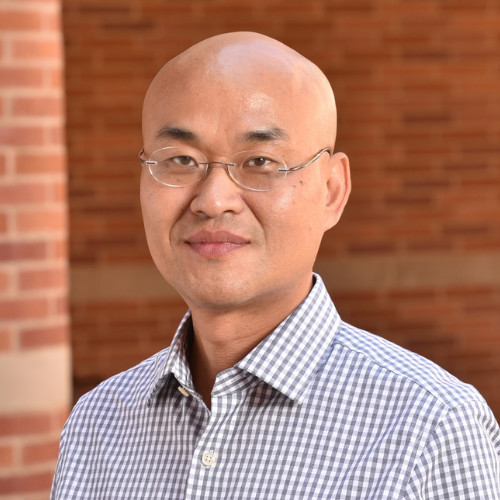
Dr. Qiang Wu is a Senior Director of Technology at Qualcomm. He has led engineering teams in developing cellular and satellite air interfaces, modem ASICs, and front-end RFIC SoC transceivers. His field of research and technical background includes cellular systems, satellite systems, modulation, coding, multiple access, MIMO, interference cancellation, and equalization. He is the author of standards, IEEE papers, book chapters, and over 200 granted international patents. Currently, he is the global lead of the 5G/6G non-terrestrial network (NTN) research program at Qualcomm Wireless Research and Development.
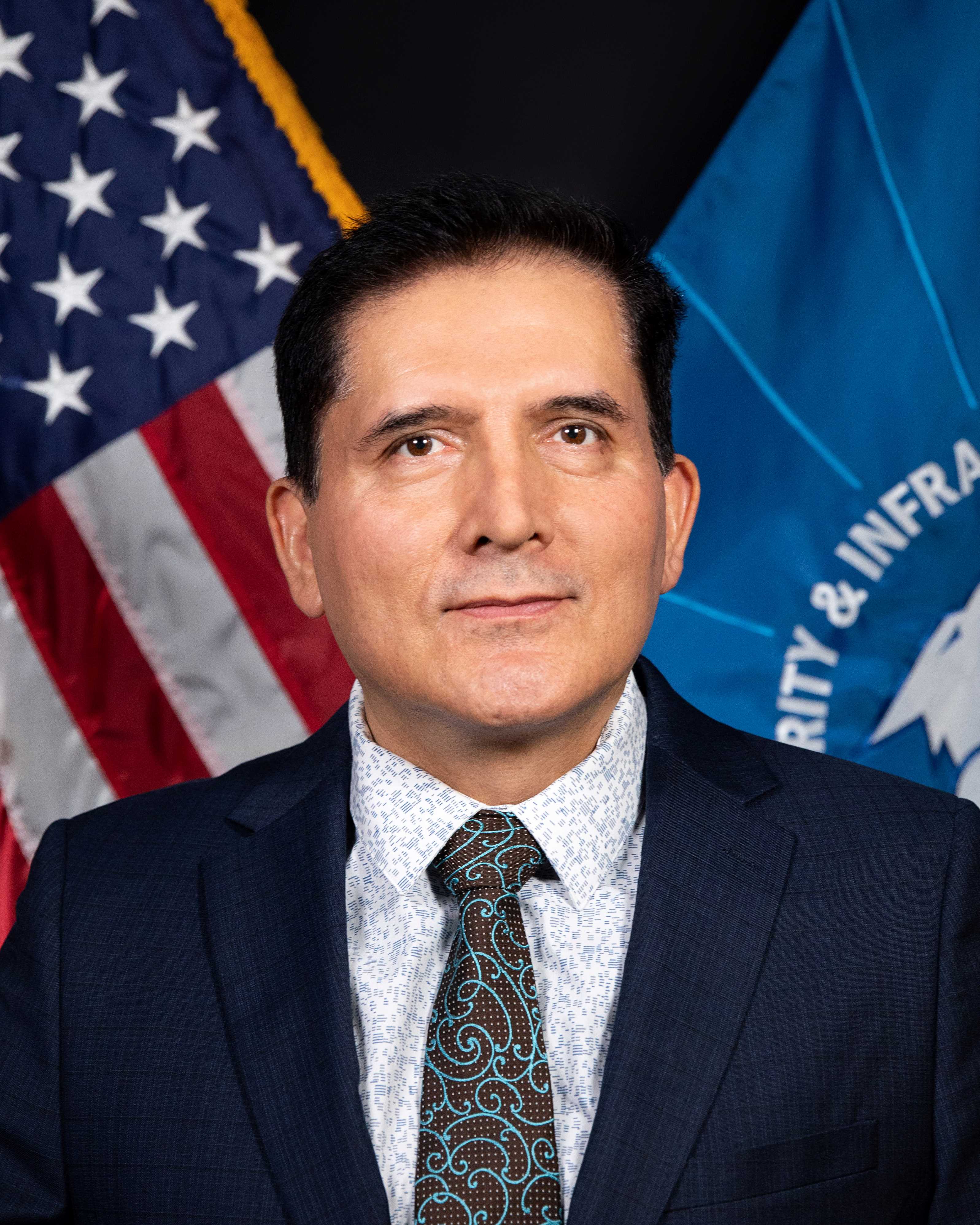
Gabriel Martinez is currently assigned to the Department of Homeland Security (DHS), Cybersecurity and Infrastructure Security Agency (CISA), Emergency Communications Division (ECD). Mr. Martinez serves as senior technical staff under the Advanced Interoperable Technologies Branch, which focuses on public safety emergency communications technologies, interoperability, resiliency, AI, and cyber security. Mr. Martinez worked with the Department of Homeland Security since 2003. Prior to this, Mr. Martinez worked with the National Communications System within the Department of Defense analyzing advanced technologies and priority services communications for National Security and Emergency Preparedness. Currently Mr. Martinez is working on Cybersecurity, Interoperability, and Research and Development projects such as Computer Aid Dispatch (CAD)-to-CAD, Identity, Credential and Access Management to support for trusted information sharing, Emergency Cybersecurity Communications Centers (EC3) initiative, AI strategy for Emergency Communications, 5G evolution, and emerging cloud communications. Mr. Martinez is a DHS Level II Certified Systems Engineer, has a Bachelor of Science in Electronics Engineering from University of Maryland at College Park, a Master of Science Degree in Electrical and Computer Engineering from John Hopkins University at the Applied Physics Laboratory in Columbia, MD. Currently completing a master’s degree in Cybersecurity Management at University of Maryland Global University in College Park, MD.
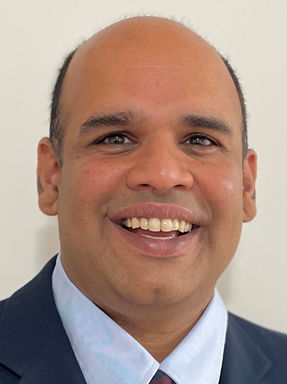 Dr. Venkatesh Ramaswamy
Dr. Venkatesh Ramaswamy
Dr. Venkatesh Ramaswamy is Chief Technologist at MITRE Labs in Bedford, Massachusetts where he currently leads technical innovation and R&D activities in 5G/xG technologies. He has more than 20 years of experience in the telecommunications industry and has held technical leadership positions at top technology companies, startups, and research labs. He has published more than 50 peer-reviewed publications and patents, served as a TPC member for various conferences, and participated in several technical panels. He received his PhD in Electrical Engineering from the University of Mississippi.
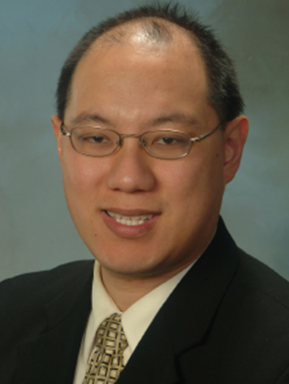 Raymond Shen, PhD is Director of 5G/6G/Cyber Govt Solutions at Keysight Technologies. In this role he leads Keysight's vast portfolio of end-to-end 5G, 6G and OpenRANtest and security solutions for defense and government. He also leads spectrum monitoring solutions, managing solutions that include handheld, outdoor, and modular platforms. He is a frequent speaker at wireless conferences. He has over 24 years of experience in spectrum monitoring, wireless signals, and security, with particular expertise in cellular signals. Shen has a BS EE from Caltech and a MS EE and PhD EE from Stanford University, where his PhD thesis was in the area of neural networks.
Raymond Shen, PhD is Director of 5G/6G/Cyber Govt Solutions at Keysight Technologies. In this role he leads Keysight's vast portfolio of end-to-end 5G, 6G and OpenRANtest and security solutions for defense and government. He also leads spectrum monitoring solutions, managing solutions that include handheld, outdoor, and modular platforms. He is a frequent speaker at wireless conferences. He has over 24 years of experience in spectrum monitoring, wireless signals, and security, with particular expertise in cellular signals. Shen has a BS EE from Caltech and a MS EE and PhD EE from Stanford University, where his PhD thesis was in the area of neural networks.
 Mari Silbey is Senior Director of Partnerships and Outreach for US Ignite, and Program Director for the Platforms for Advanced Wireless Research (PAWR) program, a $100 million initiative funded by the National Science Foundation and a consortium of more than 30 wireless companies and associations. Within the PAWR Project Office, Mari is responsible for strategy and oversight across multiple wireless testbeds, as well as coordinating with government agencies and engaging with academic and industry research communities. She has nearly two decades of experience in telecom, including many years as a journalist covering broadband infrastructure.
Mari Silbey is Senior Director of Partnerships and Outreach for US Ignite, and Program Director for the Platforms for Advanced Wireless Research (PAWR) program, a $100 million initiative funded by the National Science Foundation and a consortium of more than 30 wireless companies and associations. Within the PAWR Project Office, Mari is responsible for strategy and oversight across multiple wireless testbeds, as well as coordinating with government agencies and engaging with academic and industry research communities. She has nearly two decades of experience in telecom, including many years as a journalist covering broadband infrastructure.
Debra Stanislawski, on a joint duty assignment from the Office of the Director of National Intelligence (ODNI), is currently serving as the Director, Tranche SG Prototyping and Experimentation, Office of the Undersecretary of Defense for Research and Engineering. A retired U.S. Army Intelligence Officer and combat veteran, Ms. Stanislawski has over 30 years' experience in strategic, operational, and tactical intelligence. Ms. Stanislawski has held numerous military and civilian leadership positions throughout her career, the majority in overseas locations. Ms. Stanislawski has advanced degrees in Biology and a Masters in Strategic Intelligence. Civilian awards include the National Intelligence Superior Service Medal, the Department of Navy Meritorious Civilian Medal, and the NATO Scientific Achievement Award. Military awards include the Legion of Merit, Bronze Star, and Defense Meritorious Service Medals.
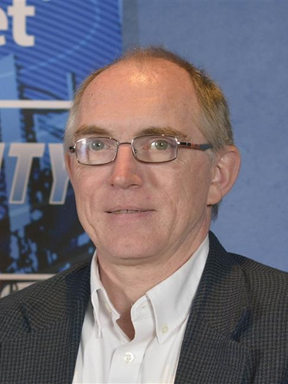 Michael Varney is the FirstNet Authority Director of Stakeholder Collaboration responsible for supporting FirstNet consultation efforts across the US. He joined FirstNet in 2015, after serving for over 28 years in Information Technology and Public Safety Communications positions at the State of Connecticut where he most recently served as the Statewide Interoperability Coordinator and FirstNet State Point of Contact. In those roles he also served as the Chairman of the National Council of Statewide Interoperability Coordinators and as their representative on the FirstNet Public Safety Advisory Committee. In addition, Michael has a strong public safety background serving for over 35 years in the fire and emergency medical services, including 14 years as Fire Chief.
Michael Varney is the FirstNet Authority Director of Stakeholder Collaboration responsible for supporting FirstNet consultation efforts across the US. He joined FirstNet in 2015, after serving for over 28 years in Information Technology and Public Safety Communications positions at the State of Connecticut where he most recently served as the Statewide Interoperability Coordinator and FirstNet State Point of Contact. In those roles he also served as the Chairman of the National Council of Statewide Interoperability Coordinators and as their representative on the FirstNet Public Safety Advisory Committee. In addition, Michael has a strong public safety background serving for over 35 years in the fire and emergency medical services, including 14 years as Fire Chief.
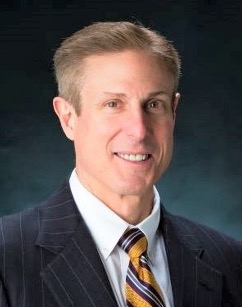 Mr. Louis Colangelo became the Mission Area Executive for the Special Operations Mission Area at the Johns Hopkins University Applied Physics Laboratory in March 2020. Mr. Colangelo is responsible for strategic planning, execution, and performance of programs addressing the challenges of Special Operations and the National Intelligence Community. As the nation’s largest University Affiliated Research Center, APL performs research and development on behalf of the Department of Defense, the intelligence community, National Aeronautics Space Administration, and other federal agencies. Prior to his current assignment, Mr. Colangelo was the Deputy Mission Area Executive for the Precision Strike Mission Area. In this role, he was responsible for assisting with strategic planning, execution and performance of programs addressing detection and targeting, kinetic engagement, and electronic warfare capabilities. Over his career, Mr. Colangelo has focused on critical challenges of electronic warfare across the Services, the Department of Defense, and other Government Agencies. He spear-headed numerous initiatives such a high-fidelity electronic warfare analysis capability, rapid countermeasure developments, and EW/Cyber Convergence. In the Airborne Electronic Warfare community, he is a well-known strategic leader who has built highly recognized technical teams that significant impact the development and operational support for a large number of Department of Defense systems. Mr. Colangelo is an active member in the U.S. science and technology community, served on the Defense Science Board Electromagnetic Dominance Summer Study and participated in multiple OSD War Games. He is a recipient of the JHU/APL Al Eaton Award, the USMC Semper Fidelis Team Award for most significant contribution to the Marine War Fighter, and the NDIA RADM Gormley Combat Survivability Award for Leadership. Mr. Colangelo received Bachelor of Science in Computer Engineering, Lehigh University and a Master in Electrical Engineering, Manhattan College.
Mr. Louis Colangelo became the Mission Area Executive for the Special Operations Mission Area at the Johns Hopkins University Applied Physics Laboratory in March 2020. Mr. Colangelo is responsible for strategic planning, execution, and performance of programs addressing the challenges of Special Operations and the National Intelligence Community. As the nation’s largest University Affiliated Research Center, APL performs research and development on behalf of the Department of Defense, the intelligence community, National Aeronautics Space Administration, and other federal agencies. Prior to his current assignment, Mr. Colangelo was the Deputy Mission Area Executive for the Precision Strike Mission Area. In this role, he was responsible for assisting with strategic planning, execution and performance of programs addressing detection and targeting, kinetic engagement, and electronic warfare capabilities. Over his career, Mr. Colangelo has focused on critical challenges of electronic warfare across the Services, the Department of Defense, and other Government Agencies. He spear-headed numerous initiatives such a high-fidelity electronic warfare analysis capability, rapid countermeasure developments, and EW/Cyber Convergence. In the Airborne Electronic Warfare community, he is a well-known strategic leader who has built highly recognized technical teams that significant impact the development and operational support for a large number of Department of Defense systems. Mr. Colangelo is an active member in the U.S. science and technology community, served on the Defense Science Board Electromagnetic Dominance Summer Study and participated in multiple OSD War Games. He is a recipient of the JHU/APL Al Eaton Award, the USMC Semper Fidelis Team Award for most significant contribution to the Marine War Fighter, and the NDIA RADM Gormley Combat Survivability Award for Leadership. Mr. Colangelo received Bachelor of Science in Computer Engineering, Lehigh University and a Master in Electrical Engineering, Manhattan College.
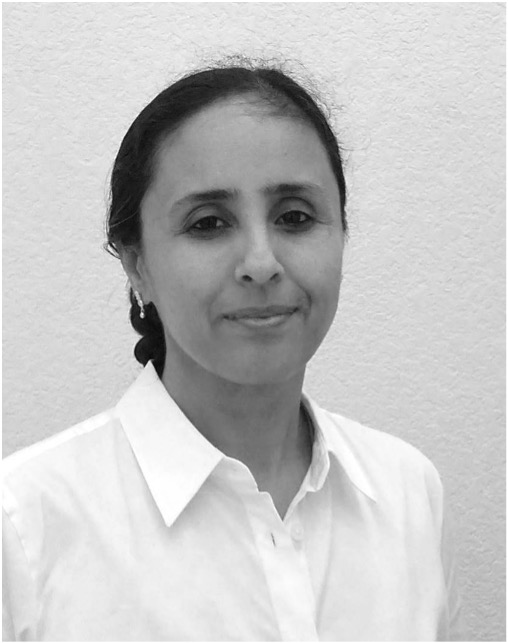 Kamakshi Sridhar is VP RAN Technology and Strategy/Sr. Fellow in Mavenir CTSO since July 2022, where she is working on 5G Open-RAN, RIC, AI/ML and 5G SA technologies. She has held prior roles at Sandvine as VP R&D Architecture and VP Automation Innovation in CTO, providing engineering leadership and technology vision for Sandvine's AI/ML data analytics and network automation for 4G/5G, and led several strategic partnerships and customer engagements. Kamakshi conducted research and led wireless strategy at Nokia Bell Labs as a Director and Distinguished Member of Technical Staff in the Wireless Chief Technology Office for over 20 years, and was in the Wireless Systems Engineering at Nortel Networks. Author of 60+ patents, Kamakshi has a B.Tech. in Electronics Engineering from IIT, Varanasi India, M.S. and Ph.D in EECS from Massachusetts Institute of Technology (MIT), and an Executive Certificate in Management and Leadership from MIT Sloan School.Praveen Gupta is a Principal 5G and Wireless Engineer at MITRE, who is working on development of innovative 5G-solutions to support Federal sponsor needs. Praveen Gupta has a Master of Computer Science degree from the University of Southern California and over 25 years of wireless experience. This experience spans working with 1G at Hughes, 2G at Qualcomm, 3G at Ericsson, 4G at Verizon, and 5G at MITRE.
Kamakshi Sridhar is VP RAN Technology and Strategy/Sr. Fellow in Mavenir CTSO since July 2022, where she is working on 5G Open-RAN, RIC, AI/ML and 5G SA technologies. She has held prior roles at Sandvine as VP R&D Architecture and VP Automation Innovation in CTO, providing engineering leadership and technology vision for Sandvine's AI/ML data analytics and network automation for 4G/5G, and led several strategic partnerships and customer engagements. Kamakshi conducted research and led wireless strategy at Nokia Bell Labs as a Director and Distinguished Member of Technical Staff in the Wireless Chief Technology Office for over 20 years, and was in the Wireless Systems Engineering at Nortel Networks. Author of 60+ patents, Kamakshi has a B.Tech. in Electronics Engineering from IIT, Varanasi India, M.S. and Ph.D in EECS from Massachusetts Institute of Technology (MIT), and an Executive Certificate in Management and Leadership from MIT Sloan School.Praveen Gupta is a Principal 5G and Wireless Engineer at MITRE, who is working on development of innovative 5G-solutions to support Federal sponsor needs. Praveen Gupta has a Master of Computer Science degree from the University of Southern California and over 25 years of wireless experience. This experience spans working with 1G at Hughes, 2G at Qualcomm, 3G at Ericsson, 4G at Verizon, and 5G at MITRE.
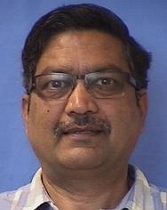 Praveen Gupta is a Principal 5G and Wireless Engineer at MITRE, who is working on development of innovative 5G-solutions to support Federal sponsor needs. Praveen Gupta has a Master of Computer Science degree from the University of Southern California and over 25 years of wireless experience. This experience spans working with 1G at Hughes, 2G at Qualcomm, 3G at Ericsson, 4G at Verizon, and 5G at MITRE.
Praveen Gupta is a Principal 5G and Wireless Engineer at MITRE, who is working on development of innovative 5G-solutions to support Federal sponsor needs. Praveen Gupta has a Master of Computer Science degree from the University of Southern California and over 25 years of wireless experience. This experience spans working with 1G at Hughes, 2G at Qualcomm, 3G at Ericsson, 4G at Verizon, and 5G at MITRE.
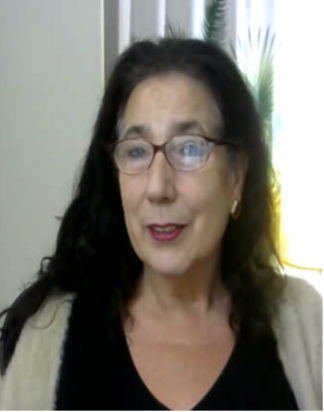 Tracy Van Brakle is a Member of Technical Staff within AT&T CTO/Labs Wireless Technologies. She is a co-chair and/or contributor within several open source projects and standards development organizations (SDOs) as well as Principal Investigator within INDIGO (Intelligent 5G Networks Designed and Integrated for Globalized Operations), which is a recent awardee of the NSF Convergence Accelerator program “Track G,” Operating Securely through 5G Infrastructures. This work involves integrating and automating open RAN technologies using model-driven interface specifications from O-RAN, 3GPP, and other SDOs, to address the security and resilience requirements of military missions and civilian first responder teams. Focus areas include a novel Artificial Intelligence Planner that is integrated with both open-source and commercial Service Management & Orchestration Frameworks, RAN Intelligent Controllers, and automation applications as described within O-RAN: xApps and rApps. Before joining AT&T, Tracy was a Senior Technologist with Goldman Sachs. She holds 17 active US patents in Wireless Technologies.
Tracy Van Brakle is a Member of Technical Staff within AT&T CTO/Labs Wireless Technologies. She is a co-chair and/or contributor within several open source projects and standards development organizations (SDOs) as well as Principal Investigator within INDIGO (Intelligent 5G Networks Designed and Integrated for Globalized Operations), which is a recent awardee of the NSF Convergence Accelerator program “Track G,” Operating Securely through 5G Infrastructures. This work involves integrating and automating open RAN technologies using model-driven interface specifications from O-RAN, 3GPP, and other SDOs, to address the security and resilience requirements of military missions and civilian first responder teams. Focus areas include a novel Artificial Intelligence Planner that is integrated with both open-source and commercial Service Management & Orchestration Frameworks, RAN Intelligent Controllers, and automation applications as described within O-RAN: xApps and rApps. Before joining AT&T, Tracy was a Senior Technologist with Goldman Sachs. She holds 17 active US patents in Wireless Technologies.
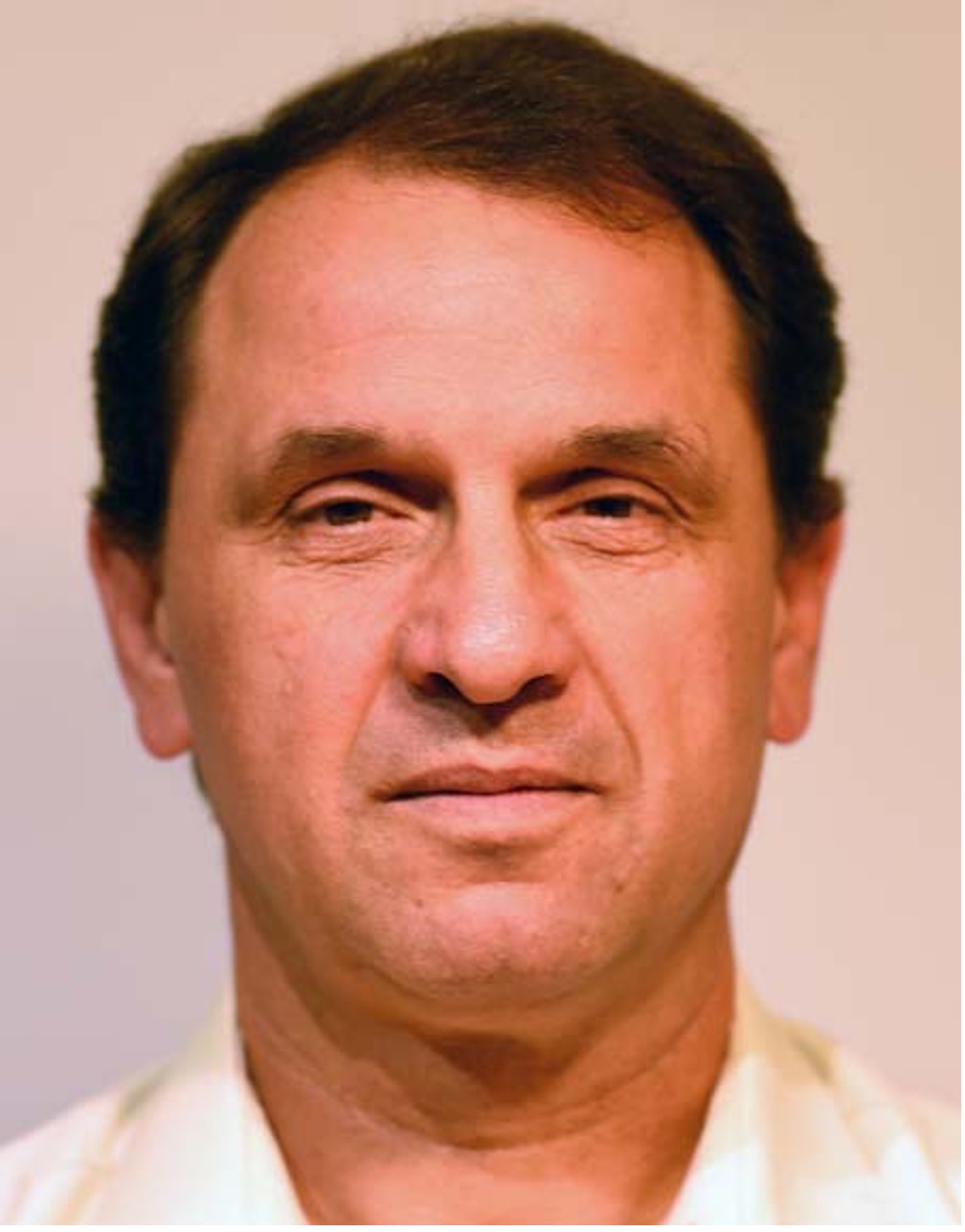 Ivan Seskar is the Chief Technologist at WINLAB, Rutgers University responsible for experimental systems and prototyping projects. He is currently the program director for the COSMOS project responsible for the New York City NSF PAWR deployment, the PI for the NSF GENI Wireless project, which resulted in campus deployments of LTE/WiMAX base stations at several US universities, and the PI for the NSF CloudLab deployment at Rutgers. He has also been the co-PI and project manager for all three phases of the NSF-supported ORBIT mid-scale testbed project at WINLAB, successfully leading technology development and operations since the testbed was released as a community resource in 2005 and for which the team received the 2008 NSF Alexander Schwarzkopf Prize for Technological Innovation. Ivan is a co-chair of the IEEE Future Networks Testbed Working Group, a Senior Member of the IEEE, a member of ACM and the co-founder and CTO of Upside Wireless Inc.
Ivan Seskar is the Chief Technologist at WINLAB, Rutgers University responsible for experimental systems and prototyping projects. He is currently the program director for the COSMOS project responsible for the New York City NSF PAWR deployment, the PI for the NSF GENI Wireless project, which resulted in campus deployments of LTE/WiMAX base stations at several US universities, and the PI for the NSF CloudLab deployment at Rutgers. He has also been the co-PI and project manager for all three phases of the NSF-supported ORBIT mid-scale testbed project at WINLAB, successfully leading technology development and operations since the testbed was released as a community resource in 2005 and for which the team received the 2008 NSF Alexander Schwarzkopf Prize for Technological Innovation. Ivan is a co-chair of the IEEE Future Networks Testbed Working Group, a Senior Member of the IEEE, a member of ACM and the co-founder and CTO of Upside Wireless Inc.
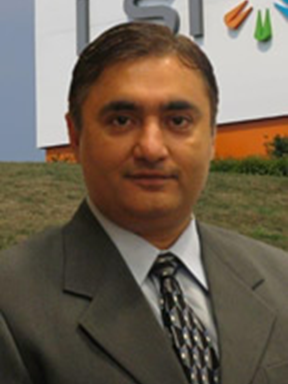 Deepak Kataria has over 25 years’ experience in data networking, cloud computing and telecom domains with unique distinction of having worked in technical leadership roles with AT&T Bell Labs, Lucent Technologies, Fujitsu, Agere Systems, LSI and HCL America. He co-founded IPJunction Inc in 2009 consulting telco clients on new solution opportunities, target markets, product management consulting and ecosystem partnerships. Currently, he serves as the Principal Solution Consultant for Ericsson working on AT&T projects. He was Chair of IEEE Princeton Central Jersey Section from 2020-2022, General Chair of IEEE Sarnoff Symposium since 2015 and leads the IEEE FNI Group on AI/ML as Co-Chair. He holds B.S. in Electronics and Communications Engineering, and pursued M.S. and Ph.D. degrees in Electrical Engineering from Rutgers University. He completed Harvard’s Emerging Leader’s professional program on virtual leadership covering strategy, customer focus, corporate governance, and innovation.
Deepak Kataria has over 25 years’ experience in data networking, cloud computing and telecom domains with unique distinction of having worked in technical leadership roles with AT&T Bell Labs, Lucent Technologies, Fujitsu, Agere Systems, LSI and HCL America. He co-founded IPJunction Inc in 2009 consulting telco clients on new solution opportunities, target markets, product management consulting and ecosystem partnerships. Currently, he serves as the Principal Solution Consultant for Ericsson working on AT&T projects. He was Chair of IEEE Princeton Central Jersey Section from 2020-2022, General Chair of IEEE Sarnoff Symposium since 2015 and leads the IEEE FNI Group on AI/ML as Co-Chair. He holds B.S. in Electronics and Communications Engineering, and pursued M.S. and Ph.D. degrees in Electrical Engineering from Rutgers University. He completed Harvard’s Emerging Leader’s professional program on virtual leadership covering strategy, customer focus, corporate governance, and innovation.
Dr. Jian Ta o is an Assistant Professor from the Section of Visual Computing & Computational Media in the School of Performance, Visualization & Fine Arts at Texas A&M University. He is also the Director of the Digital Twin Lab and the Assistant Director for Project Development at the Texas A&M Institute of Data Science. Tao also holds courtesy appointments at the Department of Electrical & Computer Engineering, the Department of Nuclear Engineering, and the Department of Multidisciplinary Engineering in the College of Engineering at Texas A&M University. Tao received his Ph.D. in Computational Astrophysics from Washington University in St. Louis in 2008 and worked on computational frameworks for numerical relativity, computational fluid dynamics, coastal modeling, and other applications at Louisiana State University before he joined Texas A&M in 2016. In 2018, Tao led the Texas A&M team to the final of both the ASC18 and SC18 student cluster competitions. He is a faculty advisor of the Texas A&M 12th Unmanned Team for the SAE/GM AutoDrive Challenge Competition and leads a project funded by the Department of Commerce to build a digital twin for the Disaster City at Texas A&M University. Tao is an NVIDIA DLI University Ambassador and XSEDE Campus Champion at Texas A&M and a contributor to the SPEC CPU 2017 benchmark suite. He currently serves as the Testbed Committee Co-Chair of the IEEE Public Safety Technology Initiative. His research interests include digital twin, numerical modeling, machine learning, data analytics, distributed computing, visualization, and workflow management.
o is an Assistant Professor from the Section of Visual Computing & Computational Media in the School of Performance, Visualization & Fine Arts at Texas A&M University. He is also the Director of the Digital Twin Lab and the Assistant Director for Project Development at the Texas A&M Institute of Data Science. Tao also holds courtesy appointments at the Department of Electrical & Computer Engineering, the Department of Nuclear Engineering, and the Department of Multidisciplinary Engineering in the College of Engineering at Texas A&M University. Tao received his Ph.D. in Computational Astrophysics from Washington University in St. Louis in 2008 and worked on computational frameworks for numerical relativity, computational fluid dynamics, coastal modeling, and other applications at Louisiana State University before he joined Texas A&M in 2016. In 2018, Tao led the Texas A&M team to the final of both the ASC18 and SC18 student cluster competitions. He is a faculty advisor of the Texas A&M 12th Unmanned Team for the SAE/GM AutoDrive Challenge Competition and leads a project funded by the Department of Commerce to build a digital twin for the Disaster City at Texas A&M University. Tao is an NVIDIA DLI University Ambassador and XSEDE Campus Champion at Texas A&M and a contributor to the SPEC CPU 2017 benchmark suite. He currently serves as the Testbed Committee Co-Chair of the IEEE Public Safety Technology Initiative. His research interests include digital twin, numerical modeling, machine learning, data analytics, distributed computing, visualization, and workflow management.
Eugene Gomes (Sr. Solution Architect, Ericsson) Born and brought up in Bombay, India (now Mumbai) Has an educational background spanning power electronics, instrumentation, and telecommunications. He has 23 years of experience in the telecommunications industry spanning multiple technologies and domains ranging from RAN, OSS and Core. His work has covered various aspects of the industry including Systems Design, Pre-Sales engineering, R&D, delivering/developing RAN optimization solutions/ products. Currently, his work includes radio network automation solutions, sustainability, and energy savings. He currently works as a Senior Solution architect for Self-organizing networks, RAN automation and energy savings, and continues to work with telecommunication operators globally. He has designed, developed, and brought to market multiple zero touch automation solutions. Many of these solutions have patent pending.
(Sr. Solution Architect, Ericsson) Born and brought up in Bombay, India (now Mumbai) Has an educational background spanning power electronics, instrumentation, and telecommunications. He has 23 years of experience in the telecommunications industry spanning multiple technologies and domains ranging from RAN, OSS and Core. His work has covered various aspects of the industry including Systems Design, Pre-Sales engineering, R&D, delivering/developing RAN optimization solutions/ products. Currently, his work includes radio network automation solutions, sustainability, and energy savings. He currently works as a Senior Solution architect for Self-organizing networks, RAN automation and energy savings, and continues to work with telecommunication operators globally. He has designed, developed, and brought to market multiple zero touch automation solutions. Many of these solutions have patent pending.
Leland Brown joined the Intel Corporation in 2016. Prior to Intel, Leland has 20 years of experience in the Wireless Networking Industry for Military Applications(US Army CECOM), Commercial Cellular Wireless Network Design and Capacity Planning, Connected Device Interoperability and Wireless Technology Applications Management. Current assignment is with Intel Federal,the technology enabling organization and interface of Intel Corp for United States Government (USG) solutions. Leland serves dual roles as an IFL Advanced Communications Principal Engineer & Technical Director for Intel’s Advanced Wireless (5G) portfolio for Military| Aerospace | Government. Both roles serve to encompasses a strategic focus on investment in Advanced Wireless technology (5G, SDR, beamforming, MEC, Adaptive RF protocol & Adaptive Frequency) for USG applications and research opportunities. Lelands Initial assignment at Intel Corporation was served in the Communications and Devices Group(iCDG) supporting the pre-Silicon and 3GPP adoption of 5G standards through scaling 5G technology across multiple application platforms, conducting field trail testing, device interoperability development and 5G technology demonstrations.
joined the Intel Corporation in 2016. Prior to Intel, Leland has 20 years of experience in the Wireless Networking Industry for Military Applications(US Army CECOM), Commercial Cellular Wireless Network Design and Capacity Planning, Connected Device Interoperability and Wireless Technology Applications Management. Current assignment is with Intel Federal,the technology enabling organization and interface of Intel Corp for United States Government (USG) solutions. Leland serves dual roles as an IFL Advanced Communications Principal Engineer & Technical Director for Intel’s Advanced Wireless (5G) portfolio for Military| Aerospace | Government. Both roles serve to encompasses a strategic focus on investment in Advanced Wireless technology (5G, SDR, beamforming, MEC, Adaptive RF protocol & Adaptive Frequency) for USG applications and research opportunities. Lelands Initial assignment at Intel Corporation was served in the Communications and Devices Group(iCDG) supporting the pre-Silicon and 3GPP adoption of 5G standards through scaling 5G technology across multiple application platforms, conducting field trail testing, device interoperability development and 5G technology demonstrations.
Stanley Mo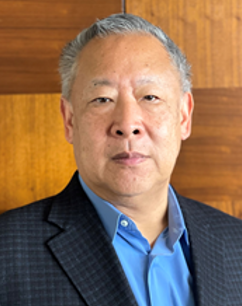 is a 28 year veteran at Intel having held technical positions in Intel Labs and multiple platform groups for handhelds, notebooks and desktop PCs. He was a charter member of Intel’s Software and Services Group in the Open Source Technology Center responsible for Intel’s engagement and technical contributions to the open source SW world helping to drive Linux innovation and other open source platform and technology projects. His recent work has been in the area of AI in the context of tactical edge infrastructure developing SW frameworks for autonomous systems collaboration and operation. Stan has been awarded over 30 patents, worldwide, in a range of categories covering datacenter operations, SW security, networking and artificial intelligence / machine learning.He was born in NY and grew up in the Midwest and West Coast. He attended and received his Bachelor of Science from UC Davis.
is a 28 year veteran at Intel having held technical positions in Intel Labs and multiple platform groups for handhelds, notebooks and desktop PCs. He was a charter member of Intel’s Software and Services Group in the Open Source Technology Center responsible for Intel’s engagement and technical contributions to the open source SW world helping to drive Linux innovation and other open source platform and technology projects. His recent work has been in the area of AI in the context of tactical edge infrastructure developing SW frameworks for autonomous systems collaboration and operation. Stan has been awarded over 30 patents, worldwide, in a range of categories covering datacenter operations, SW security, networking and artificial intelligence / machine learning.He was born in NY and grew up in the Midwest and West Coast. He attended and received his Bachelor of Science from UC Davis.
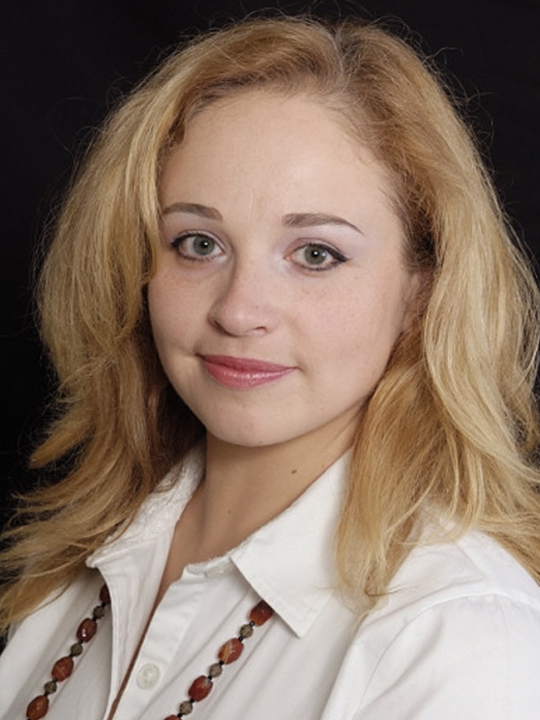 Ms. Julia Andrusenko received her bachelor's and master's degrees in electrical engineering in 2002 from Drexel University, Philadelphia, PA. She is a senior communications engineer at APL and is the Chief Engineer of the Tactical Wireless Systems group of APL. Ms. Andrusenko has an extensive background in communications theory, wireless networking, satellite communications, Radio Frequency (RF) propagation prediction, communications systems vulnerability, computer simulation of communications systems, evolutionary computation, genetic algorithms/programming, MIMO, and millimeter wave technologies. She also has a substantial experience developing electronic warfare methodologies for various advanced commercial communications systems and military data links. Ms. Andrusenko is a published author of many technical papers and has recently co-authored a book titled “Wireless Internetworking: Understanding Internetworking Challenges” through Wiley/IEEE Press. Ms. Andrusenko is a member of the IEEE Communications Society.
Ms. Julia Andrusenko received her bachelor's and master's degrees in electrical engineering in 2002 from Drexel University, Philadelphia, PA. She is a senior communications engineer at APL and is the Chief Engineer of the Tactical Wireless Systems group of APL. Ms. Andrusenko has an extensive background in communications theory, wireless networking, satellite communications, Radio Frequency (RF) propagation prediction, communications systems vulnerability, computer simulation of communications systems, evolutionary computation, genetic algorithms/programming, MIMO, and millimeter wave technologies. She also has a substantial experience developing electronic warfare methodologies for various advanced commercial communications systems and military data links. Ms. Andrusenko is a published author of many technical papers and has recently co-authored a book titled “Wireless Internetworking: Understanding Internetworking Challenges” through Wiley/IEEE Press. Ms. Andrusenko is a member of the IEEE Communications Society.
 Sean Brassard is the Program Manager for the Special Operations Resilient Communications program at Johns Hopkins University Applied Physics Lab where he serves as a lead for various 5G and Cognitive Radio projects for the DoD. He has over 20 years of experience working in telecom and DoD tactical radio industries with a focus on systems engineering, software defined radios, anti-jam/signal cancellation techniques, and geo-location systems. He holds a B.E. in Electrical Engineering from Vanderbilt University and a M.S. in Electrical Engineering from Johns Hopkins University.
Sean Brassard is the Program Manager for the Special Operations Resilient Communications program at Johns Hopkins University Applied Physics Lab where he serves as a lead for various 5G and Cognitive Radio projects for the DoD. He has over 20 years of experience working in telecom and DoD tactical radio industries with a focus on systems engineering, software defined radios, anti-jam/signal cancellation techniques, and geo-location systems. He holds a B.E. in Electrical Engineering from Vanderbilt University and a M.S. in Electrical Engineering from Johns Hopkins University.
 David M. Coleman is the chief scientist for the Communications Branch in APL’s Asymmetric Operations Sector and also serves as the lead for the Spectrum Operations research portfolio in the Cyber Operations Mission Area. He earned a BS in computer engineering from Elizabethtown College, an MS in computer engineering from the University of Arkansas, and a PhD in electrical engineering from University of Maryland, College Park. Dr. Coleman has presented at many conferences for tactical networks and has been published in journals and proceedings.
David M. Coleman is the chief scientist for the Communications Branch in APL’s Asymmetric Operations Sector and also serves as the lead for the Spectrum Operations research portfolio in the Cyber Operations Mission Area. He earned a BS in computer engineering from Elizabethtown College, an MS in computer engineering from the University of Arkansas, and a PhD in electrical engineering from University of Maryland, College Park. Dr. Coleman has presented at many conferences for tactical networks and has been published in journals and proceedings.

Dr. Cherita Corbett is the Chief Scientist for the Communication and Networking Systems Group at Johns Hopkins University Applied Physics Laboratory. She guides research and development strategy and activities focused on resilient communications for military operations and critical infrastructure. Her current research interests include: secure mobile technologies, secure tactical communication systems, and insider threat protection. Prior to joining APL, Dr. Corbett was a Senior Computer Scientist at SRI International where she performed research on self-healing cellular networks, vehicular security, and IoT security. She also provided programmatic support to the Cyber Security Division of DHS S&T in the area of mobile technology. She has published over 30 technical manuscripts and holds a U.S. patent in cyber security. She holds a Ph.D. in Electrical & Computer Engineering from Georgia Institute of Technology.
 Dr. Ashutosh Dutta is currently senior scientist and 5G Chief Strategist at the Johns Hopkins University Applied Physics Laboratory (JHU/APL). He is also a JHU/APL Sabbatical Fellow and adjunct faculty at The Johns Hopkins University. Ashutosh also serves as the chair for Electrical and Computer Engineering Department of Engineering for Professional Program at Johns Hopkins University. His career, spanning more than 30 years, includes Director of Technology Security and Lead Member of Technical Staff at AT&T, CTO of Wireless for NIKSUN, Inc., Senior Scientist and Project Manager in Telcordia Research, Director of the Central Research Facility at Columbia University, adjunct faculty at NJIT, and Computer Engineer with TATA Motors. He has more than 100 conference, journal publications, and standards specifications, three book chapters, and 31 issued patents. Ashutosh is co-author of the book, titled, “Mobility Protocols and Handover Optimization: Design,Evaluation and Application,” published by IEEE and John & Wiley that has recently been translated into Chinese Language. Ashutosh is the founding co-chair for IEEE Future Networks initiative and serves as IEEE Communications Society’s Distinguished Lecturer for 2017-2018 and Distinguised Speaker for ACM from 2020-2022. He was recipient of the prestigious 2009 IEEE MGA Leadership award and 2010 IEEE-USA professional leadership award. Ashutosh obtained his BS in Electrical Engineering from NIT Rourkela, India, MS in Computer Science from NJIT, and Ph.D. in Electrical Engineering from Columbia University under the supervision of Prof. Henning Schulzrinne. Ashutosh is a Fellow of IEEE and senior member of ACM.
Dr. Ashutosh Dutta is currently senior scientist and 5G Chief Strategist at the Johns Hopkins University Applied Physics Laboratory (JHU/APL). He is also a JHU/APL Sabbatical Fellow and adjunct faculty at The Johns Hopkins University. Ashutosh also serves as the chair for Electrical and Computer Engineering Department of Engineering for Professional Program at Johns Hopkins University. His career, spanning more than 30 years, includes Director of Technology Security and Lead Member of Technical Staff at AT&T, CTO of Wireless for NIKSUN, Inc., Senior Scientist and Project Manager in Telcordia Research, Director of the Central Research Facility at Columbia University, adjunct faculty at NJIT, and Computer Engineer with TATA Motors. He has more than 100 conference, journal publications, and standards specifications, three book chapters, and 31 issued patents. Ashutosh is co-author of the book, titled, “Mobility Protocols and Handover Optimization: Design,Evaluation and Application,” published by IEEE and John & Wiley that has recently been translated into Chinese Language. Ashutosh is the founding co-chair for IEEE Future Networks initiative and serves as IEEE Communications Society’s Distinguished Lecturer for 2017-2018 and Distinguised Speaker for ACM from 2020-2022. He was recipient of the prestigious 2009 IEEE MGA Leadership award and 2010 IEEE-USA professional leadership award. Ashutosh obtained his BS in Electrical Engineering from NIT Rourkela, India, MS in Computer Science from NJIT, and Ph.D. in Electrical Engineering from Columbia University under the supervision of Prof. Henning Schulzrinne. Ashutosh is a Fellow of IEEE and senior member of ACM.
 Mr. Jared Everett is a senior wireless communications research engineer in the Wireless Cyber Capabilities group at the Johns Hopkins University Applied Physics Laboratory (Johns Hopkins APL). Since joining APL in 2009, his research has focused broadly on the use of cellular technologies for defense and national security applications. He has a deep knowledge of LTE and emerging 5G standards, specializing in cellular air interfaces and end-to-end systems. He is a co-author of the book, “Wireless Networking: Understanding Internetworking Challenges,” published by Wiley/IEEE Press. His current research interests include innovative approaches to spectrum sharing in 5G networks. Jared holds M.S. and B.S. degrees in electrical engineering from North Carolina State University. He also holds a B.A. degree in music.
Mr. Jared Everett is a senior wireless communications research engineer in the Wireless Cyber Capabilities group at the Johns Hopkins University Applied Physics Laboratory (Johns Hopkins APL). Since joining APL in 2009, his research has focused broadly on the use of cellular technologies for defense and national security applications. He has a deep knowledge of LTE and emerging 5G standards, specializing in cellular air interfaces and end-to-end systems. He is a co-author of the book, “Wireless Networking: Understanding Internetworking Challenges,” published by Wiley/IEEE Press. His current research interests include innovative approaches to spectrum sharing in 5G networks. Jared holds M.S. and B.S. degrees in electrical engineering from North Carolina State University. He also holds a B.A. degree in music.
 Don Herres, IEEE Region 2 South Area Chair
Don Herres, IEEE Region 2 South Area Chair
Don Herres does contract design for electrical, electronic, and embedded software design for consumer & industrial products, sharing knowledge and mentoring based on more than 35 years of successful product introductions. He is a Licensed Professional Engineer in MD, PA & NY, has a BSEE from SUNY Buffalo and MSEE from Syracuse University. He is inventor on 4 patents. Don is currently IEEE Region 2 South Area Chair and is a Senior Member.
 Mr. Douglas Holly, Principle, Eagle Management Group
Mr. Douglas Holly, Principle, Eagle Management Group
Doug brings a broad range of telecommunications, business leadership and management skills with a particular focus on project management, operational improvement and M&A. He currently heads up Eagle Management Group a consulting firm that provides general management, project management and strategic planning to improve operational performance. EMG also provides M&A selection, diligence support and integration services to businesses. He is a director of the Washington Section and chair its chapter of the Communications Society and also chair of the joint Washington/Northern Virginia chapter of the TEMS. He was finance chair for the IEEE GLOBECOM 2007 and 2016. Doug holds a bachelor's and master's dress in electrical engineering from Rensselaer Polytechnic Institute.
 Amy Howard is the Branch Office Administrator for the Communications Systems Branch in the Asymmetric Operations Sector at Johns Hopkins University Applied Physics Lab (APL). Amy joined APL in May, 2015 and is in her 2nd year as co-chair for the 5G Workshop. She has over 25 years of professional office and event coordination experience.
Amy Howard is the Branch Office Administrator for the Communications Systems Branch in the Asymmetric Operations Sector at Johns Hopkins University Applied Physics Lab (APL). Amy joined APL in May, 2015 and is in her 2nd year as co-chair for the 5G Workshop. She has over 25 years of professional office and event coordination experience.
 Carolyn Stallings-Little is the Group Office Administrator for the Communication and Networking Systems Group at Johns Hopkins University’s Applied Physics Laboratory (APL). She joined APL in March, 2017. She has over 25 years of professional administrative experience.
Carolyn Stallings-Little is the Group Office Administrator for the Communication and Networking Systems Group at Johns Hopkins University’s Applied Physics Laboratory (APL). She joined APL in March, 2017. She has over 25 years of professional administrative experience.

Mr. Narendra Mangra is a wireless mobility advisor at GlobeNet. His diverse experience extends across the wireless mobility ecosystem and mobile network deployment lifecycle within academia, government and industry. He is an Adjunct Professor at the Volgeneau School of Engineering at the George Mason University. Narendra is also the Applications and Services Co-Chair and Summer School Chair for IEEE Networks. He leads the Smart Cities roadmap development initiative and recurring industry focused educational sessions for Young Professionals.
Narendra has extensive consulting experience in the mobile satellite and cellular communications, public safety communications, information technology, higher education, and federal & local government sectors. He holds an MSEE and BSEE from Polytechnic University, MBA from the Robert H. Smith School of Business at the University of Maryland, and a Project Management Professional (PMP) Certificate. His current interests include the 5G ecosystem, Smart Cities and interconnected ecosystems.
 Dr. Mithun Mukherjee received the Ph.D. degree in electrical engineering from the Indian Institute of Technology Patna, Patna, India, in 2015. He is currently a Professor with the School of Artificial Intelligence, Nanjing University of Information Science and Technology, Nanjing, China. He has (co)authored more than 100 publications in peer-reviewed journals and conferences. Dr. Mukherjee was a recipient of the 2018 IEEE International Conference on Advanced Networks and Telecommunications Systems (ANTS) Best Paper Award. He also served/will serve as the Publicity Co-Chair of IEEE 5G World 2018, 2019, and 2020. His current research interests center around fog computing and edge intelligence.
Dr. Mithun Mukherjee received the Ph.D. degree in electrical engineering from the Indian Institute of Technology Patna, Patna, India, in 2015. He is currently a Professor with the School of Artificial Intelligence, Nanjing University of Information Science and Technology, Nanjing, China. He has (co)authored more than 100 publications in peer-reviewed journals and conferences. Dr. Mukherjee was a recipient of the 2018 IEEE International Conference on Advanced Networks and Telecommunications Systems (ANTS) Best Paper Award. He also served/will serve as the Publicity Co-Chair of IEEE 5G World 2018, 2019, and 2020. His current research interests center around fog computing and edge intelligence.
 Francis X. O’Connell P.E. is an electrical engineer in New Jersey. He works for Skylink Technology in Hamilton, NJ to design, build and integrate spacecraft test systems. Fran is a former Lockheed Martin employee from East Windsor, NJ. At Lockheed-Martin, his team designed and developed the avionics for weather satellites including TIROS and DMSP for NOAA and the Air Force respectively as well as science satellites such as GGS for NASA Goddard and the Mars Global Surveyor spacecraft for JPL. Through his own company, FXO Inc, since 1999 Fran has worked on-site at spacecraft manufacturers to develop test plans, solve difficult test anomalies, and perform reliability analyses.
Francis X. O’Connell P.E. is an electrical engineer in New Jersey. He works for Skylink Technology in Hamilton, NJ to design, build and integrate spacecraft test systems. Fran is a former Lockheed Martin employee from East Windsor, NJ. At Lockheed-Martin, his team designed and developed the avionics for weather satellites including TIROS and DMSP for NOAA and the Air Force respectively as well as science satellites such as GGS for NASA Goddard and the Mars Global Surveyor spacecraft for JPL. Through his own company, FXO Inc, since 1999 Fran has worked on-site at spacecraft manufacturers to develop test plans, solve difficult test anomalies, and perform reliability analyses.
Fran is a Senior Member in the IEEE. He is a Past Chair of the Princeton / Central Jersey Section and its webmaster. Fran is a member of the Aerospace and Electronic Systems Society and the vice-chair of the PCJS Solid State Circuits Society. Fran has volunteered as treasurer for many recent IEEE Communications Society Conferences and Workshops.
 Pamela Patton is a Principal Professional Staff at the Johns Hopkins University Applied Physics Lab (APL). As a technical lead for the 5G Wireless Communications Lab, Pam is standing up a 5G security research environment utilizing Nokia and SDR RAN equipment to support non-standalone (NSA) and standalone (SA) network architectures connected to a virtualized core network utilizing NFV and SDN technologies. The lab builds on existing 4G/LTE infrastructure that she has utilized for various tactical use case studies, security architecture and vulnerability analysis, and performance assessments of secure VoIP in a contested RF and network environment. Prior to joining JHU/APL in 2012, she took on various communication engineering roles within the National Security Agency (13 years) and with defense contractors (12 years). Her focus has been primarily on network architecture, protocols, and security from 2G through the generations up to 5G and how those technologies may apply to DoD interests. She received her BS in Electrical Engineering from Virginia Tech and an MS in Telecommunications and Computers from George Washington University.
Pamela Patton is a Principal Professional Staff at the Johns Hopkins University Applied Physics Lab (APL). As a technical lead for the 5G Wireless Communications Lab, Pam is standing up a 5G security research environment utilizing Nokia and SDR RAN equipment to support non-standalone (NSA) and standalone (SA) network architectures connected to a virtualized core network utilizing NFV and SDN technologies. The lab builds on existing 4G/LTE infrastructure that she has utilized for various tactical use case studies, security architecture and vulnerability analysis, and performance assessments of secure VoIP in a contested RF and network environment. Prior to joining JHU/APL in 2012, she took on various communication engineering roles within the National Security Agency (13 years) and with defense contractors (12 years). Her focus has been primarily on network architecture, protocols, and security from 2G through the generations up to 5G and how those technologies may apply to DoD interests. She received her BS in Electrical Engineering from Virginia Tech and an MS in Telecommunications and Computers from George Washington University.
 Mr. Oscar Somerlock joined the Applied Physics Laboratory in 2014, where he is currently Chief Scientist of the Communications and Networking Systems Group. Prior to joining APL, he worked in the cellular industry for more than 20 years holding engineering and technical leadership positions at Samsung, Motorola, and Qualcomm. He also founded and served as President of Comware, Inc. He has been awarded patents in digital beamforming, wireless networking and metamaterials. Oscar holds an M.S. degree in Electrical and Computer Engineering from the Johns Hopkins University and MBA from the University of Maryland.
Mr. Oscar Somerlock joined the Applied Physics Laboratory in 2014, where he is currently Chief Scientist of the Communications and Networking Systems Group. Prior to joining APL, he worked in the cellular industry for more than 20 years holding engineering and technical leadership positions at Samsung, Motorola, and Qualcomm. He also founded and served as President of Comware, Inc. He has been awarded patents in digital beamforming, wireless networking and metamaterials. Oscar holds an M.S. degree in Electrical and Computer Engineering from the Johns Hopkins University and MBA from the University of Maryland.
 Miguel Gutiérrez Gaitán received the B.Sc. degree in electronics engineering from the Pontifical Catholic University of Valparaiso (PUCV), Valparaiso, Chile, in 2007, and the M.Sc. degree in telecommunications engineering from the Polytechnic University of Turin (PoliTo), Turin, Italy, in 2009. He is currently pursuing the Ph.D. degree in electrical and computer engineering with the Faculty of Engineering, University of Porto (FEUP), Porto, Portugal, under the supervision of Prof. Luís Almeida. He is also an Assistant Professor with the Faculty of Engineering, Andrés Bello University (UNAB), Santiago, Chile, and a Research Fellow with the CISTER Research Center, Porto, where he collaborates in various national and international research projects, mainly in the areas of wireless networks, real-time communication, and the Internet of Things.
Miguel Gutiérrez Gaitán received the B.Sc. degree in electronics engineering from the Pontifical Catholic University of Valparaiso (PUCV), Valparaiso, Chile, in 2007, and the M.Sc. degree in telecommunications engineering from the Polytechnic University of Turin (PoliTo), Turin, Italy, in 2009. He is currently pursuing the Ph.D. degree in electrical and computer engineering with the Faculty of Engineering, University of Porto (FEUP), Porto, Portugal, under the supervision of Prof. Luís Almeida. He is also an Assistant Professor with the Faculty of Engineering, Andrés Bello University (UNAB), Santiago, Chile, and a Research Fellow with the CISTER Research Center, Porto, where he collaborates in various national and international research projects, mainly in the areas of wireless networks, real-time communication, and the Internet of Things.
2nd Systems Optimization Imperatives, Techniques, and Opportunities for Future Networks Workshop

Free & Virtual | 13 December 2022
| Watch On Demand Today |
Overview
This workshop will explore current technological advancements impacting systems such as autonomic/autonomous networking, Artificial Intelligence (AI) approaches for Autonomics, related industry standards, industrial deployment of autonomics paradigms, e.g. Self-organizing Networks (SON) for radio access networks, autonomics use cases, as well as associated research challenges. The objective of this workshop is to bring together experts from the globe and create a joint platform for information exchanges, presentation of results, and fruitful discussions to identify gaps and future directions for the IEEE FNI Systems Optimization Working Group.
Event Schedule
| 08:00-08:15 | Introduction | Lyndon Ong, Ciena, IEEE SysOpt Working Group Co-chair |
| 08:15-09:30 | Research Talks | Prof. Abdallah Shami, U. Western Ontario – AI/ML techniques for optimization Dr. Satish Ananthaiyer - Digital Transformation of Industries with Private 5G/LTE Networks Kristen Young, Verizon - Multi-stage dynamic optimization using AI/ML Jie Chen, Durham University, UK - Quantum processing for energy efficient routing |
| 09:30-10:15 | Energy Savings Use Case Panel Discussion: Optimization techniques applied for Energy Optimization |
Dilip Krishnaswamy - moderator Joey Chou, Intel Manmeet Bhangu, Rakuten Brian Zahnstecher, Powerrox – IEEE EE WG Francesco Carobolante, Iotissimo – IEEE EE WG Research speakers invited to participate |
| 10:15-10:30 | Break | |
| 10:30-11:15 | Operator Data Sharing | Muslim Elkotob, Vodafone |
| 11:15-12:00 | Standards/Interfaces Panel: Interface work needed for AI/ML optimization |
Ranganai Chaparadza - moderator Jorg Niemoller, Ericsson – TMF Intent Interface work and autonomous networking Nigel Davis, Ciena – Boundary representation in interfaces/IETF activities Muslim Elkotab |
*Note: All times Pacific Time US.
Track Descriptions
Standards & Architecture
A key area of future Systems Optimization is the ability for autonomic/autonomous systems to communicate information such as policy, intent and performance indicators in both hierarchical and peer-to-peer relationships. Various standards bodies such as TMForum, ETSI and O-RAN have been looking into standardization of interfaces for such purposes. IEEE Systems Optimization Working Group is calling presenters to provide and share insights around progress and gaps in inter-system interface standards and architectures as relevant to systems optimization for 5G and beyond.
Industry Applications
In the Industry Applications track, we invite speakers to discuss the industrial deployments of autonomic/autonomous systems in networks and their adoption by stakeholders in the value chain, such as operators, vendors, integrators, and the like. The objective of this track is to understand stakeholders' concerns, use cases and alternatives for systems optimization in 5G and beyond networks. We encourage contributors to share their goals and experiences in this area.
Research Challenges
In the research topic area, the workshop seeks to expand discussions into newer and future topics related to future networks systems optimization. The goal of this track is to investigate innovative and advanced approaches to improve optimization in 5G and future networks using techniques such as distributed artificial intelligence/machine learning, and challenges to their application to future network problems.
2nd Future Network Security: Challenges and Opportunities Workshop
Free & Virtual | 14-15 March 2023
View the recordings: Day 1 (14 March) | Day 2 (15 March)
Overview
This workshop will explore evolving Future networks (5G/6G) use cases, as well as associated research challenges. The objective of this workshop is to bring together global expertise and create a joint platform for knowledge exchanges, presentation of results, and fruitful discussions to identify gaps and future directions for the IEEE FNI Security Working Group and efforts.
Sponsorship and Exhibit Opportunities
Proposed Program
NOTE: All times are given in EasternTime US (ET).
Day 1 - 14 March 2023
| 9:00-9:15 | Introduction - IEEE Future Networks Security Working Group | Ashutosh Dutta (JHU/APL), Eman Hammad (Texas A&M - RELLIS) |
| 9:15-9:45 |
Keynote Presentation: A Look at Future Network Design Through the Eyes of the Phoenix |
Venki Ramaswamy (MITRE) |
| 9:45-10:00 | Enhancing the Security of 5G Fronthaul | Marcus Wong |
| 10:00-10:15 | Towards a Trust Aware Network Slice based Service Provision in Virtualised Infrastructures | Kallol Krishna Karmakar, Vijay Varaadharajan |
| 10:15-10:30 | IETF LAKE: Lightweight Authenticated Key Exchange for Internet-of-Things Use Cases | Mališa Vučinić |
| 10:30-10:40 | Break | |
| 10:40-10:55 | Scalable Information Veracity Verification of mMTC in Emerging Networks | Nirnimesh Ghose |
| 10:55-11:10 | ZSM Policy Based 5G Security Slice Management Framework | Rodrigo Asensio-Garriga, Antonio Fernando Skarmeta Gomez, Alejandro Moliina Zarca, Jordi Ortiz |
| 11:10-11:25 | Zero Trust Architecture: The Past, The Present and The Future | Michael A. Enright, Eman Hammad, Ashutosh Dutta |
| 11:25-11:55 |
Keynote Presentation: Introduction to The DoD's New Zero Trust DataSpecification |
Junaid Islam, CTO XQ Message, Partner OODA LLC |
| 11:55-12:20 | Holistic Security Posture Management for Edge on 5G and 6G | Ashish Kundu, Cisco |
| 12:20-1:30 | Blockchain and FN Security Panel | DJ-SHYY Mitre (moderator), Bharat Rawal, Mahesh Chand, Dante Pacella |
Day 2 - 15 March 2023
| 9:00-9:05 | Introduction | |
| 9:05-9:35 | Keynote Presentation: ORAN, ZTA, and CI in Cloud | Scott Poretsky (Ericsson) |
| 9:35-9:50 | Invited Talk: Hardware Confidential Computing for Securing Next-Gen Networks | Kapil Sood (Intel) |
| 9:50-10:05 | Open Security Challenges 5G Based Critical Communications | Ravishankar Borgaonkar |
| 10:05-10:20 | Threat Model for Multi-Site Private 5G Deployments | Arpit Tripathi |
| 10:20-10:30 | Break | |
| 10:30-10:45 | Blockchain-enabled Secure Communication in Internet of Drones | Omer M Gul |
| 10:45-11:10 | Invited talk: AERPAW: A Cyberphysical Research Facility for Deep Wireless Experimentation | Rudra Dutta (North Carolina State University) |
| 11:10-11:30 | Invited talk: 5G Cybersecurity at NIST’s Cybersecurity Center of Excellence | Jeff Cichonsky (NIST) |
| 11:35-11:45 | Break | |
| 11:45-12:00 | 5G/6G for Enabling Secure Autonomous Vehicular Communication: Research Challenges | Deepanshu Garg, Rasmeet S. Bali |
| 12:00-12:20 | Invited Talk: Hybrid Quantum-Classical Machine Learning for Near Real-time Space to Ground Communication of ISS Lightning Imaging Sensor Data | Samih Fadli (ORION SPACE, DOD) |
| 12:20-12:35 | Future Networks Security & Resilience: Challenges and Opportunities | Ashutosh Dutta (JHU/APL), Eman Hammad (Texas A&M - RELLIS) |
| 12:35-1:05 | Keynote Presentation: 5G/Future G Security and AI/ML | Arupjyoti Bhuyan (INL) |
| 1:05-1:30 | Keynote Presentation: The Evolution of 5G Security in 3GPP Release 18 and Beyond | Brian Daly (ATT) |
Workshop Organizing Committee
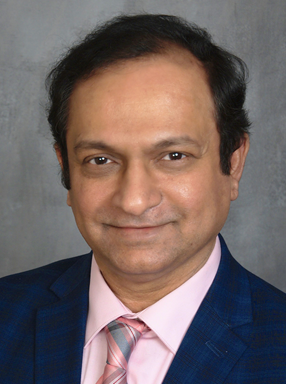 Dr. Ashutosh Dutta is currently senior scientist and 5G Chief Strategist at the Johns Hopkins University Applied Physics Laboratory (JHU/APL). Ashutosh also serves as the chair for Electrical and Computer Engineering Department of Engineering for Professional Program at Johns Hopkins University. His career, spanning more than 30 years, includes Director of Technology Security and Lead Member of Technical Staff at AT&T, CTO of Wireless for NIKSUN, Inc., Senior Scientist and Project Manager in Telcordia Research, Director of the Central Research Facility at Columbia University, adjunct faculty at NJIT, and Computer Engineer with TATA Motors. He has more than 100 publications and 31 issued patents. Ashutosh is co-author of the book, titled, “Mobility Protocols and Handover Optimization: Design, Evaluation and Application” published by IEEE and John & Wiley. He has been serving as the founding Co-Chair for the IEEE Future Networks Initiative and serves as co-chair for security working group within FNI. Ashutosh is a Member-At-Large within IEEE Communications Society and served as Distinguished Lecturer from 2017-2020 and as an ACM Distinguished Speaker (2020-2022). Ashutosh is a Distinguished Alumnus of NIT Rourkela and obtained his MS in Computer Science from NJIT; and Ph.D. in Electrical Engineering from Columbia University, New York under the supervision of Prof. Henning Schulzrinne. Ashutosh is a Fellow of IEEE and senior member of ACM.
Dr. Ashutosh Dutta is currently senior scientist and 5G Chief Strategist at the Johns Hopkins University Applied Physics Laboratory (JHU/APL). Ashutosh also serves as the chair for Electrical and Computer Engineering Department of Engineering for Professional Program at Johns Hopkins University. His career, spanning more than 30 years, includes Director of Technology Security and Lead Member of Technical Staff at AT&T, CTO of Wireless for NIKSUN, Inc., Senior Scientist and Project Manager in Telcordia Research, Director of the Central Research Facility at Columbia University, adjunct faculty at NJIT, and Computer Engineer with TATA Motors. He has more than 100 publications and 31 issued patents. Ashutosh is co-author of the book, titled, “Mobility Protocols and Handover Optimization: Design, Evaluation and Application” published by IEEE and John & Wiley. He has been serving as the founding Co-Chair for the IEEE Future Networks Initiative and serves as co-chair for security working group within FNI. Ashutosh is a Member-At-Large within IEEE Communications Society and served as Distinguished Lecturer from 2017-2020 and as an ACM Distinguished Speaker (2020-2022). Ashutosh is a Distinguished Alumnus of NIT Rourkela and obtained his MS in Computer Science from NJIT; and Ph.D. in Electrical Engineering from Columbia University, New York under the supervision of Prof. Henning Schulzrinne. Ashutosh is a Fellow of IEEE and senior member of ACM.
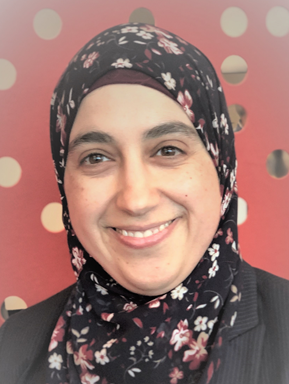 Dr. Eman Hammad is an interdisciplinary researcher focusing on cybersecurity, trustworthy & resilient critical infrastructure systems. She obtained her PhD in Electrical & Computer Engineering from the University of Toronto. Eman combines practical experience and theoretical research to shape her vision for resilient-by-design solutions in the connected world. Eman's primary focus is on how a deeper understanding of interactions between critical physical systems, communication and enabling technologies can help design new classes of operational solutions that are more resilient to cyber/physical disruptions. Her research has been recognized with merit awards (best paper award, best poster award) and has been featured on the Smart Cybersecurity Network.
Dr. Eman Hammad is an interdisciplinary researcher focusing on cybersecurity, trustworthy & resilient critical infrastructure systems. She obtained her PhD in Electrical & Computer Engineering from the University of Toronto. Eman combines practical experience and theoretical research to shape her vision for resilient-by-design solutions in the connected world. Eman's primary focus is on how a deeper understanding of interactions between critical physical systems, communication and enabling technologies can help design new classes of operational solutions that are more resilient to cyber/physical disruptions. Her research has been recognized with merit awards (best paper award, best poster award) and has been featured on the Smart Cybersecurity Network.
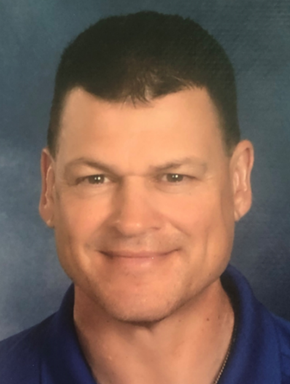 Dr. Michael A. Enright is the CEO and President of Quantum Dimension, Inc. and has 30 years of experience in security, Artificial Intelligence (AI) and Machine Learning (ML), embedded computing, image and video processing, RF communication and more. Dr. Enright has a Ph.D. in Electrical Engineering from the University of Southern California (USC) thru his work with the Signal and Image Processing Institute (SIPI) at USC, an M.S. in Electrical Engineering from the Illinois Institute of Technology, an M.S. in Mechanical Engineering from the University of Missouri-Columbia and a B.S. in Aeronautical and Astronautical Engineering from the University of Illinois at Champaign-Urbana and is a Senior Member of the IEEE.
Dr. Michael A. Enright is the CEO and President of Quantum Dimension, Inc. and has 30 years of experience in security, Artificial Intelligence (AI) and Machine Learning (ML), embedded computing, image and video processing, RF communication and more. Dr. Enright has a Ph.D. in Electrical Engineering from the University of Southern California (USC) thru his work with the Signal and Image Processing Institute (SIPI) at USC, an M.S. in Electrical Engineering from the Illinois Institute of Technology, an M.S. in Mechanical Engineering from the University of Missouri-Columbia and a B.S. in Aeronautical and Astronautical Engineering from the University of Illinois at Champaign-Urbana and is a Senior Member of the IEEE.
 Dr. Mithun Mukherjee received the Ph.D. degree in electrical engineering from the Indian Institute of Technology Patna, Patna, India, in 2015. He is currently a Professor at the School of Artificial Intelligence, Nanjing University of Information Science and Technology, Nanjing, China. He has (co)authored more than 100 publications in peer-reviewed journals and conferences. Dr. Mukherjee was a recipient of the 2018 IEEE International Conference on Advanced Networks and Telecommunications Systems (ANTS) Best Paper Award. He also served/will serve as the Publicity Co-Chair of IEEE 5G World 2018-2022. His current research interests center around edge intelligence.
Dr. Mithun Mukherjee received the Ph.D. degree in electrical engineering from the Indian Institute of Technology Patna, Patna, India, in 2015. He is currently a Professor at the School of Artificial Intelligence, Nanjing University of Information Science and Technology, Nanjing, China. He has (co)authored more than 100 publications in peer-reviewed journals and conferences. Dr. Mukherjee was a recipient of the 2018 IEEE International Conference on Advanced Networks and Telecommunications Systems (ANTS) Best Paper Award. He also served/will serve as the Publicity Co-Chair of IEEE 5G World 2018-2022. His current research interests center around edge intelligence.
 Dr. Miguel Gutiérrez Gaitán is an Assistant Professor at the Faculty of Engineering of the Andrés Bello University (UNAB) in Santiago, Chile. He holds a PhD in Electrical and Computer Engineering from the University of Porto, Portugal, an MS in Telecommunications Engineering from the Polytechnic University of Turin (Polito), Italy, and a BS in Electronics Engineering from the Pontifical Catholic University of Valparaíso (PUCV), Chile. Since 2023, he is also the Chairman of the IEEE ComSoc Chile Chapter, and a Research Associate at the Research Centre in Real-Time and Embedded Computing Systems (CISTER), in Porto, Portugal.
Dr. Miguel Gutiérrez Gaitán is an Assistant Professor at the Faculty of Engineering of the Andrés Bello University (UNAB) in Santiago, Chile. He holds a PhD in Electrical and Computer Engineering from the University of Porto, Portugal, an MS in Telecommunications Engineering from the Polytechnic University of Turin (Polito), Italy, and a BS in Electronics Engineering from the Pontifical Catholic University of Valparaíso (PUCV), Chile. Since 2023, he is also the Chairman of the IEEE ComSoc Chile Chapter, and a Research Associate at the Research Centre in Real-Time and Embedded Computing Systems (CISTER), in Porto, Portugal.
Dr. Gutiérrez Gaitán has (co-)authored more than 25 peer-reviewed publications in relevant journals and conferences including, IEEE Sensors Journal, IEEE WF-IoT, IEEE RTSS, IEEE VTC, and IEEE GLOBECOM. Among other honors and awards, he received the "Best Paper Award" at the RAGE Workshop at DAC 2022, and the "Best Work-in-Progress Paper Award" at IEEE WFCS 2021. His main research interests cover different aspects of wireless networks, real-time communication, and IoT.
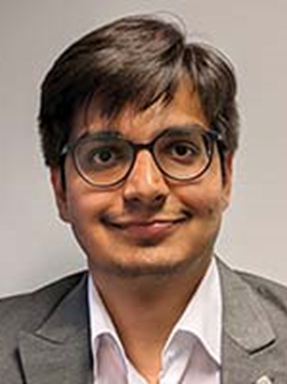 Dr. Shashank Gaur is Conferences Tools Committee Chair for IEEE Conferences Committee since 2021. Over the past decade Shashank has been involved with the organization of multiple conferences such as ICC, GLOBECOM, RTSS, CPSWEEK, WFCS, etc. Shashank has been an IEEE volunteer for 15+ years across various OUs such as MGA, Region 8, TAB and ComSoc. Professionally, Shashank Gaur is a Systems and Safety Engineer at TTTech Auto, providing safe software and hardware platforms for automated driving. Shashank contributes to topics such as Time Sensitive Networking and Scheduling for in-vehicle communication. Shashank also actively engages in TSN standards activities on behalf of TTTech Auto.
Dr. Shashank Gaur is Conferences Tools Committee Chair for IEEE Conferences Committee since 2021. Over the past decade Shashank has been involved with the organization of multiple conferences such as ICC, GLOBECOM, RTSS, CPSWEEK, WFCS, etc. Shashank has been an IEEE volunteer for 15+ years across various OUs such as MGA, Region 8, TAB and ComSoc. Professionally, Shashank Gaur is a Systems and Safety Engineer at TTTech Auto, providing safe software and hardware platforms for automated driving. Shashank contributes to topics such as Time Sensitive Networking and Scheduling for in-vehicle communication. Shashank also actively engages in TSN standards activities on behalf of TTTech Auto.
Advanced Solutions for 6G Satellite Systems

Workshop Overview
Numerous new applications including machine-to-machine communications, mobile broadband, virtual and augmented reality demonstrated the vast potential of fifth-generation (5G) wireless communications, and it is in full swing around the world. As satellites will play important roles and are new to the traditional terrestrial-based mobile systems, this workshop addresses the issues concerning the role of satellite systems as a complementary solution for ubiquitous 6G coverage. The emerging applications such as precision agriculture, health care, and autonomous cars dictate the research agenda of 6G and beyond to provide global connectivity and satisfy the UN’s Sustainable Development Goals (SDGs). The purpose of this workshop is to address the key innovations needed in different sectors (e.g., system architecture, network management, security, QoS/QoE and KPIs) to meet the expected challenges in performance for future 6G systems empowered with a satellite multi-layer system (also denoted as Non-Terrestrial Network, NTN). This workshop is completely virtual and organized by the Satellite working group within the IEEE Future Networks Initiative (https://futurenetworks.ieee.org/) and is aimed to discuss new ideas for the revised roadmap with the contributions of authors of main stakeholders in this field. This event will also be the opportunity to discuss novel ideas and to share the views with other participants via question/answer sessions at the end of each talk.
This workshop is organized in tracks as follows:
- Physical layer for 6G NTN networks
- Performance evaluation of QoS/QoE and KPI for 6G satellite networks
- Future satellite networks management
- Edge computing and intelligence for satellite 6G
Workshop Schedule
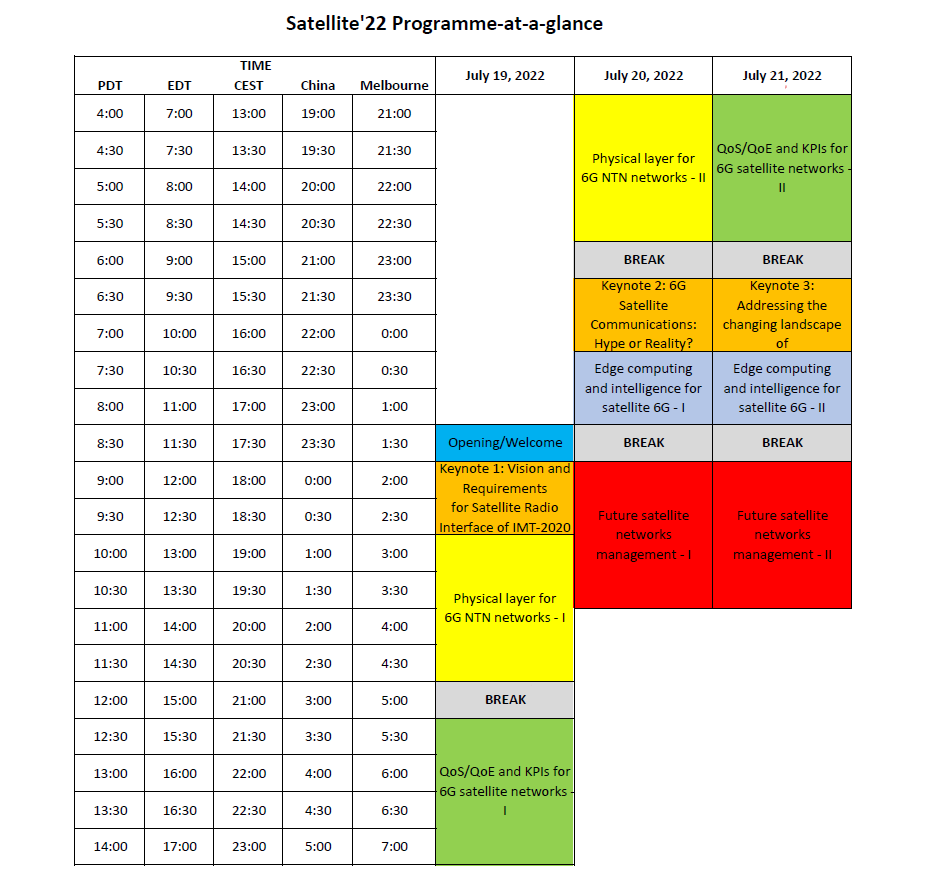 |
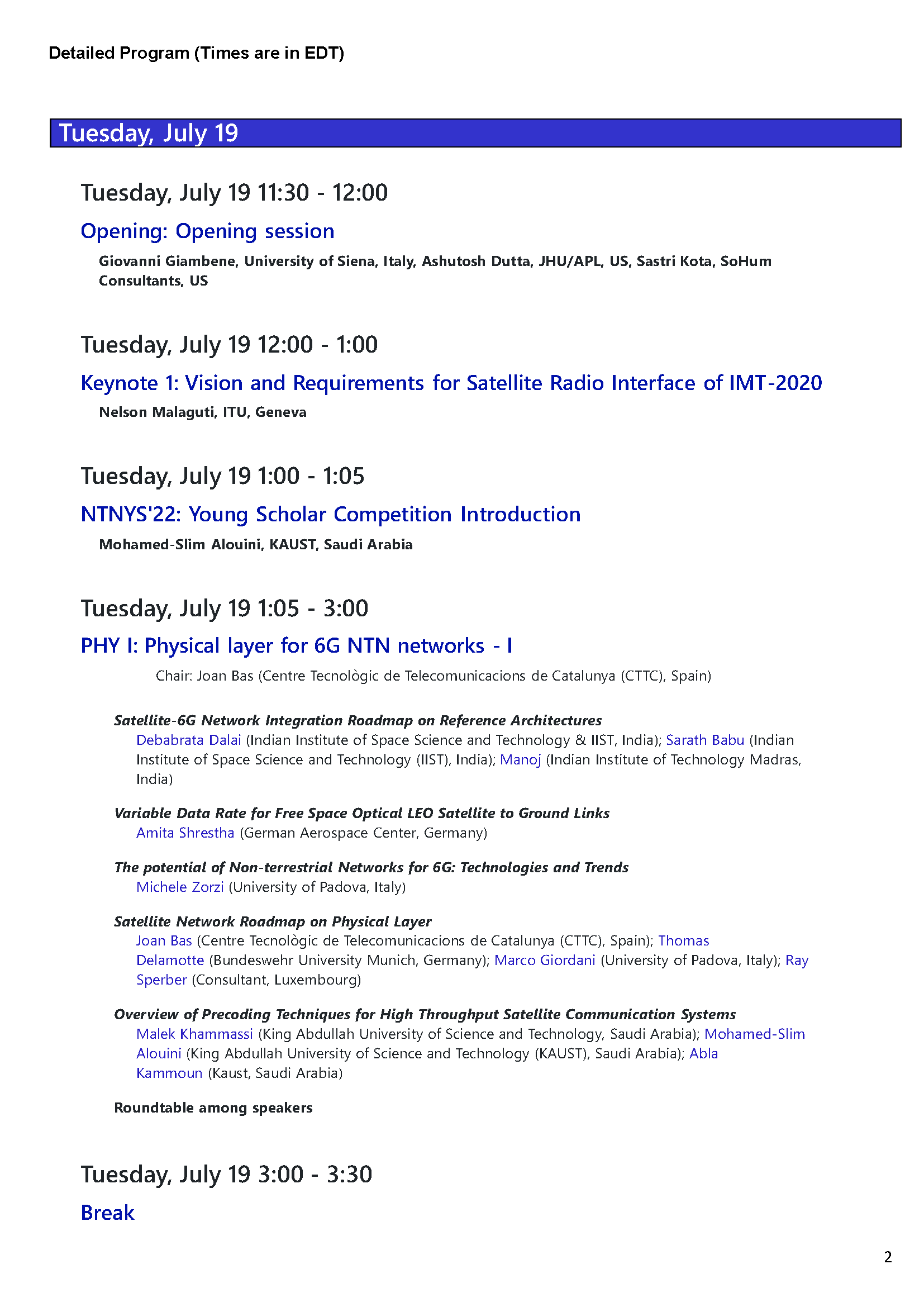 |
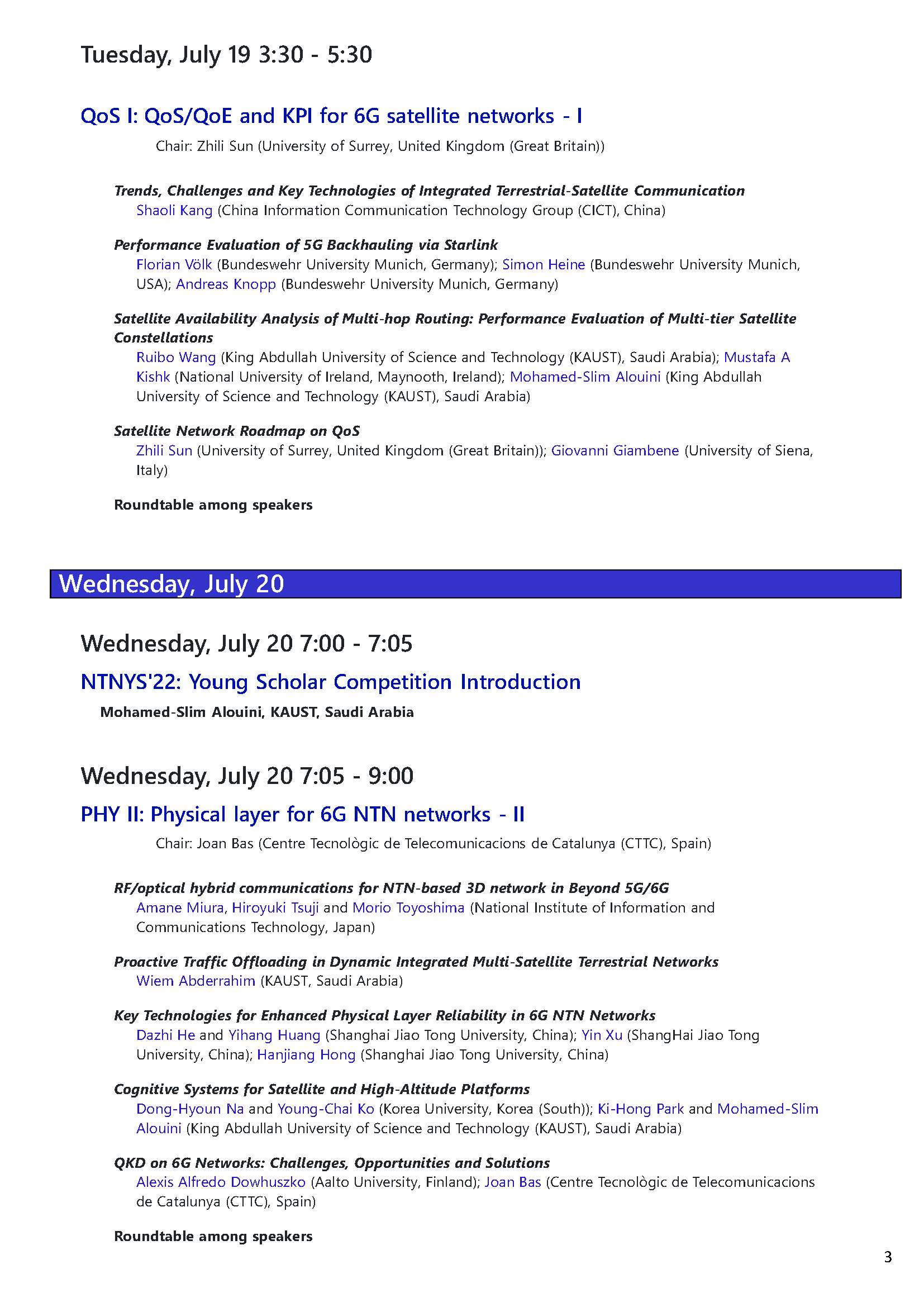 |
 |
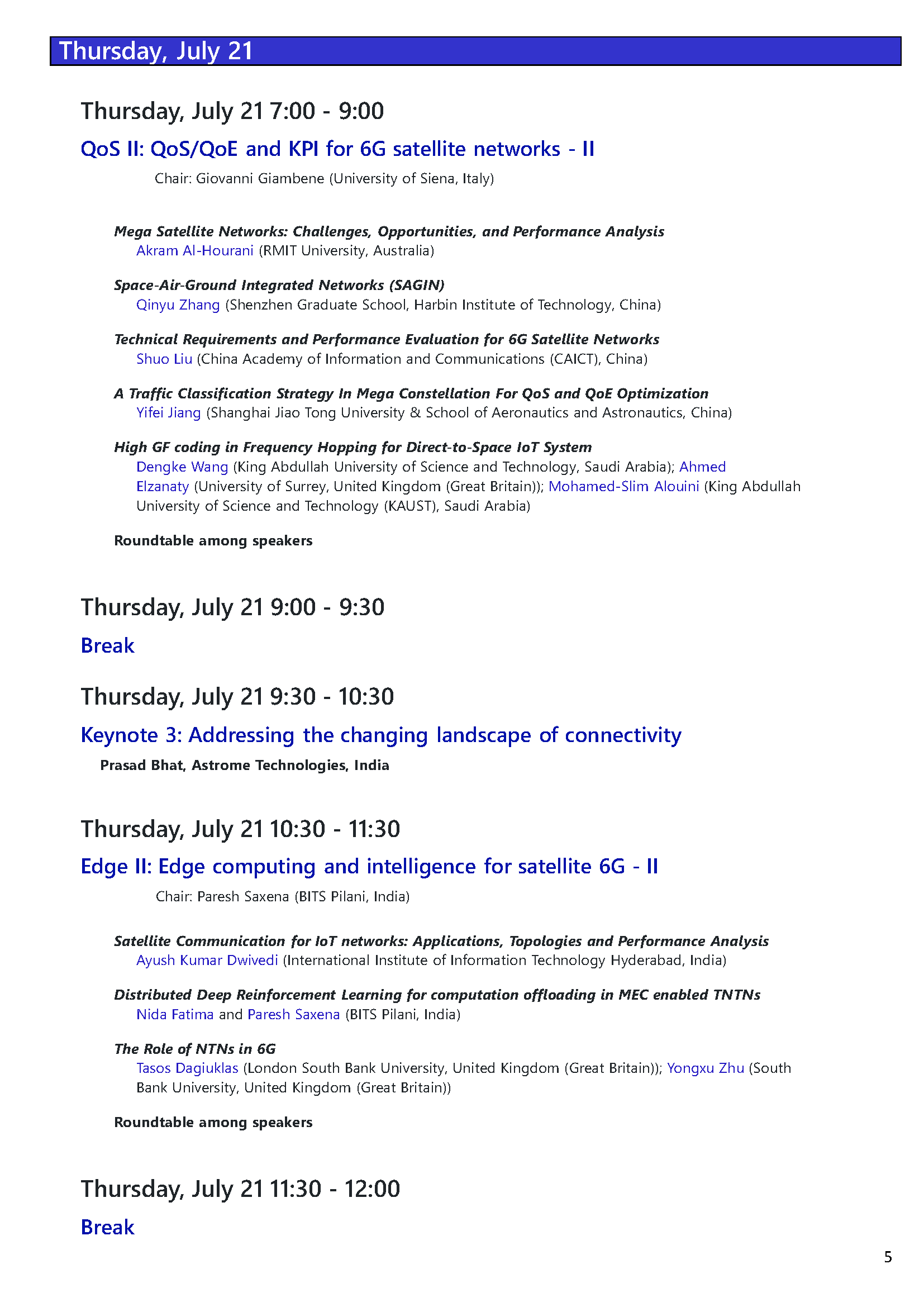 |
 |
Keynotes
19 July at 12:00pm ET US (18:00 CEST)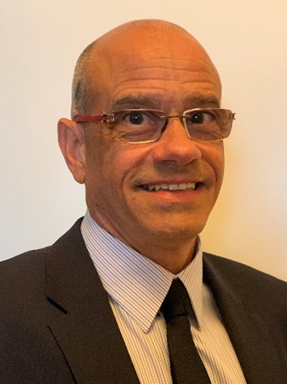 Title: “Vision and Requirements for Satellite Radio Interface(s) of IMT-2020”
Title: “Vision and Requirements for Satellite Radio Interface(s) of IMT-2020”
Keynote speaker: Nelson Malaguti, ITU
Abstract:
As defined in Resolution ITU-R 56-2, International Mobile Telecommunications-2020 (IMT-2020) systems are mobile systems that include new radio interface(s) which support the new capabilities of systems beyond IMT-2000 and IMT-Advanced.
The satellite access as one of the radio access technologies of IMT-2020 will contribute to support mobility through integration at the terminal, network and service level, as well as other use cases. Satellite network components are envisioned to provide worldwide ubiquitous coverage to end user equipment to meet the usage scenarios defined for the satellite component of IMT-2020.
The use and objective of satellite radio interfaces is expected to be complementary to terrestrial IMT-2020 operations, given satellites’ unique ability to address coverage challenges and complex use-cases. Certain aspects of IMT-2020 are not expected to be served by the satellite radio interface for IMT-2020, for example very high data throughputs of eMBB, very high connection density of mMTC and low latency for URLLC, given the inherent distance of satellites to associated earth terminals or earth stations and the challenge of resulting greater latency compared to terrestrial operations. Therefore, the capabilities developed previously should be considered for the development of satellite radio interface(s) of IMT 2020, while the requirements have been modified considering specific satellite characteristics, such as throughput and user data rates. This is reflected through the definition of eMBB-s, mMTC-s and HRC-s usage scenarios for the satellite component of IMT-2020.
Biography:
Nelson Malaguti is Counsellor at the Radiocommunication Bureau (BR) of the International Telecommunication Union (ITU). He is responsible since June 2006 for ITU-R Study Group 4 on Satellite Services (FSS, BSS, MSS and RDSS) and the Coordination Committee for Vocabulary. Before taking up his current duties, he worked at EMBRATEL in Brazil, involved in the coordination, notification and registration processes for the Brazilian satellite networks. He received the M.Sc degree in telecommunications engineering from PUC-RIO, Brazil. He then worked in the Space Services Department of the BR ITU, having participated actively at World Radiocommunication Conferences (WRC) such as WRC-97, WRC-2000 and WRC-03. He also participated actively at WRC-07, WRC-12, WRC-15 and WRC-19, and is currently actively involved in the preparations for WRC-23.
20 July at 9:30am ET US (15:30 CEST)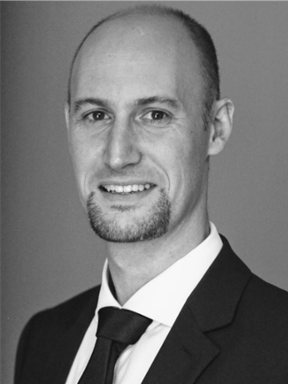 Title: “6G Satellite Communications: Hype or Reality?”
Title: “6G Satellite Communications: Hype or Reality?”
Keynote speaker: Symeon Chatzinotas, University of Luxembourg, Luxembourg
Abstract:
This talk will address the latest advances in 6G Satellite Communications in promising scenarios, such as multi-layered networks, integrated satellite-terrestrial systems, satellite IoT and space edge processing. Specific attention will be given to distributed processing techniques, AI for/in space and beyond Earth communication systems. The talk will conclude with a summary of the most pressing open challenges.
Biography:
Symeon Chatzinotas (MEng, MSc, PhD, SMIEEE) is currently Full Professor / Chief Scientist I and Head of the research group SIGCOM in the Interdisciplinary Centre for Security, Reliability and Trust, University of Luxembourg. In the past, he has lectured as Visiting Professor at the University of Parma, Italy and contributed in numerous R&D projects for the Institute of Informatics & Telecommunications, National Center for Scientific Research “Demokritos,” the Institute of Telematics and Informatics, Center of Research and Technology Hellas and Mobile Communications Research Group, Center of Communication Systems Research, University of Surrey. He has received the M.Eng. in Telecommunications from Aristotle University of Thessaloniki, Greece and the M.Sc. and Ph.D. in Electronic Engineering from University of Surrey, UK in 2003, 2006 and 2009 respectively. He has authored more than 450 technical papers in refereed international journals, conferences and scientific books and has received numerous awards. He is currently in the editorial board of the IEEE Transactions on Communications, IEEE Open Journal of Vehicular Technology and the International Journal of Satellite Communications and Networking.
21 July at 9:30am ET US (15:30 CEST) Title: “Addressing the Changing Landscape of Connectivity”
Title: “Addressing the Changing Landscape of Connectivity”
Keynote speaker: Prasad Bhat, Astrome Technologies, India
Abstract:
It is common knowledge that demand for bandwidth is growing crazily with smartphones, wearables, VR (Metaverse), etc. But what about the supply of bandwidth? 4G? 5G? 6G? The supply of bandwidth is not an easy problem to solve and requires a multitude of approaches to reach different types of consumers. Till 4G, the focus was only about just raw bandwidth distribution. But beyond that, identification of the diversity in consumers is being attempted to be addressed. The increase in bandwidth requires newer mechanisms to transport it from the core network to distribution/access points. Also, latency requirement is going the exact inverse where lower and lower latency being asked for enabling new applications. This talk will portray the above aspects in detail. At Astrome, transport oriented high bandwidth products and solutions have been and are being developed to deliver capacity via terrestrial and space pathways. The same will be elaborated in the context of changing needs of consumers.
Biography:
Prasad is the co-founder, Chairman and CTO of Astrome, a deeptech startup developing wireless high-bandwidth products for 5G and SatCom. Before Astrome, Prasad co-founded another successful company in the domain of visual search and AI. He did his master’s in System Science and Automation Engineering and PhD in Computer Science and Automation Engineering at the Indian Institute of Science. Prasad did his bachelor’s in electrical engineering from National Institute of Technology, Surathkal. He received the best outgoing student award during his master’s at IISc. Prasad has been an architect for various technologies including a nanosatellite, a visual search engine at Streamoid (http://streamoid.com), a stochastic game theory solver, the software tool for the 3D measurement Texas Instruments chipset (https://github.com/3dtof/voxelsdk). Prasad has also published a popular book on Stochastic Theory with Springer (https://doi.org/10.1007/978-1-4471-4285-0).
Important dates
Submission deadline to submit a two-page description of your presentation: 16 June 2022
Review Notification: 6 July 2022
Final version of the presentation to be submitted by: 12 July 2022
Download the presentation template here.
Organizing Committee
Mohammed Abdelsadek, Carleton University, Canada
Mohamed-Slim Alouini, King Abdullah University of Science and Technology (KAUST), Kingdom of Saudi Arabia
Joan Bas, CTTC, Spain
Ayush Dwivedi, International Institute of Information Technology Hyderabad, India
Tasneem Darwish, Carleton University, Canada
Giovanni Giambene, University of Siena, Italy
Sastri Kota, University of Oulu, Finland
B. S. Manoj, Indian Institute of Space Science and Technology, India
Paresh Saxena, BITS Pilani, Hyderabad Campus, India
Zhili Sun, University of Surrey, UK
Kanglian Zhao, Nanjing University, China
Debabrata Dalai, Indian Institute of Space Science and Technology, India
Sarath Babu, Iowa State University, Ames, USA
Ashutosh Dutta, JHU/APL, USA
Forging a Sustainable Path to 6G
An IEEE Future Networks Initiative workshop sponsored by VMware
Coinciding with: Mobile World Congress in Barcelona
Date & Time: 09:00 – 18:00 CET on Thursday, 3 March, 2022.
Location: Hotel 1898, La Rambla, 109, 08002 Barcelona, Spain
Watch the On-Demand Recording.
Overview
IEEE, the world’s largest professional organization advancing technology for humanity, is hosting a workshop focusing on forging a path to sustainable 6G. This workshop is organized by the IEEE Future Networks Initiative, and is aimed at bringing together researchers, scientists, technology experts, and stakeholders from industry, governments and academia. It will be held in the backdrop of Mobile World Congress on Thursday, 3 March 2022 at Hotel 1898 in the heart of Barcelona.
Tackling sustainability is one of the most important challenges of today, and future networks have a crucial role to play. The increased demand for data caused by our growing population and its seemingly limitless need for high-speed information will be a driver for massive energy consumption in the ICT (Information and Communication Technologies) industry. Despite laudable increases in network efficiency to date, we must find new and innovative ways to reduce power consumption and transition to renewable energy sources to prevent potentially drastic increases in emissions and power consumption.
To make sustainable networks a reality, we need to evolve each part of the network. While energy consumption is an important aspect of sustainable practices, we also must consider things like land and water use, as well as recycling and sourcing of the materials used for electronics manufacturing. This workshop is expected to serve as a catalyst to:
- investigate and identify requirements for sustainable next-generation communication networks
- discuss future trends to identify new research areas and opportunities for innovation, targeting the 6G (next ten years) timeframe
The workshop will have expert talks and a panel on the topics related to sustainable digital infrastructure, the circular economy, ongoing and anticipated evolutions of network structure, examining how networks can enable sustainability of other industries, and more. Contact Ashutosh Dutta (This email address is being protected from spambots. You need JavaScript enabled to view it.) for further information.
Patron

Agenda
| Time | Speaker (Affiliation) | Topic Description |
| 09:00-09:15 | Ashutosh Dutta (IEEE Future Networks Initiative) | Welcoming Session |
| 09:15-10:00 | Jesus Alonso-Zarate(i2CAT) | Morning Keynote: Shaping the European 6G Vision |
| 10:00-10:25 | Kaniz Mahdi (Open Grid Alliance) | An Introduction to TETRA - Digital Equity Grid Innovation |
| 10:25-10:50 | Siobhán Clarke (CONNECT Centre, Trinity College Dublin) | Connecting communities to smart urban environments |
| 10:50-11:10 | Coffee Break | |
| 11:10-11:35 | Mehdi Bennis (University of Oulu) | VisionX: Semantic communication Meets System2 ML |
| 11:35-12:00 | Luis Miguel Contreras (Telefonica) | Pathways for sustainability on transport networks - Visions from Telefonica |
| 12:00-12:25 | Chih-Lin I (China Mobile) | The Green Miles of 4G/5G/6G for Sustainability |
| 12:25-13:30 | Lunch Break | |
| 13:30-14:15 | Kit Colbert (VMware) | Afternoon Keynote: Creating a more sustainable Next G |
| 14:15-14:40 | Frank Fitzek (TU Dresden) | Randomness: The holy grail for communications systems |
| 14:40-15:05 | Falko Dressler (TU Berlin) | Virtualized Mobile Edge Computing in the 6G Era |
| 15:05-15:30 | Coffee Break | |
| 15:30-15:55 | Nada Golmi (NIST) | Towards Sustainable NextG: Challenges & Opportunities |
| 15:55-16:20 | Johan Bäck (Infinera) | The role of the optical layer for a sustainable path toward 6G |
*NOTE: all times Central European Standard Time, GMT+1
Speakers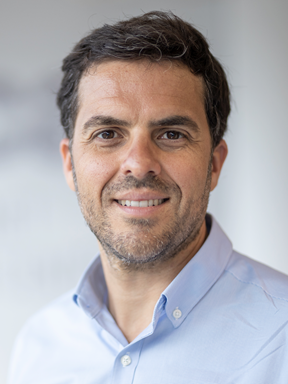 Jesus Alonso-Zarate, i2CAT - Jesus Alonso-Zarate, PhD and MBA, is the 6G Programme Director and Deputy Director of EC R&I Policy & Strategy at the i2CAT Foundation, located in Barcelona. He is also the Chairman of the 5G for Connected and Automated Mobility (CAM) Working Group of the 6G Industry Association (6G-IA). Before that, he was with the Centre Tecnològic de Telecomunicacions de Catalunya (CTTC), where he was the Communication Technologies Division Manager and a leading researcher in the areas of IoT and 5G for more than 16 years. He has been the principal investigator and project coordinator of various competitive European and national R&D projects and he has published more than 160 technical journals and conference papers, accumulating more than 3600 citations to date.
Jesus Alonso-Zarate, i2CAT - Jesus Alonso-Zarate, PhD and MBA, is the 6G Programme Director and Deputy Director of EC R&I Policy & Strategy at the i2CAT Foundation, located in Barcelona. He is also the Chairman of the 5G for Connected and Automated Mobility (CAM) Working Group of the 6G Industry Association (6G-IA). Before that, he was with the Centre Tecnològic de Telecomunicacions de Catalunya (CTTC), where he was the Communication Technologies Division Manager and a leading researcher in the areas of IoT and 5G for more than 16 years. He has been the principal investigator and project coordinator of various competitive European and national R&D projects and he has published more than 160 technical journals and conference papers, accumulating more than 3600 citations to date.
 Johan Bäck - Johan is Director of Business Development at Infinera and has an M.Sc. in Engineering Physics from Kungliga Tekniska Högskolan. He joined Infinera in 2001 and has contributed broadly to the productization of photonic integrated circuits, serving in a variety of roles in R&D, manufacturing, product management and sales. He’s currently focused on the market introduction of novel point-to-multipoint coherent XR optics.
Johan Bäck - Johan is Director of Business Development at Infinera and has an M.Sc. in Engineering Physics from Kungliga Tekniska Högskolan. He joined Infinera in 2001 and has contributed broadly to the productization of photonic integrated circuits, serving in a variety of roles in R&D, manufacturing, product management and sales. He’s currently focused on the market introduction of novel point-to-multipoint coherent XR optics.
 Mehdi Bennis, University of Oulu - Dr Mehdi Bennis is a full (tenured) Professor at the Centre for Wireless Communications, University of Oulu, Finland and head of the intelligent connectivity and networks/systems group (ICON). His main research interests are in radio resource management, heterogeneous networks, game theory and distributed machine learning in 5G networks and beyond. He has published more than 200 research papers in international conferences, journals and book chapters. He has been the recipient of several prestigious awards including the 2015 Fred W. Ellersick Prize from the IEEE Communications Society, the 2016 Best Tutorial Prize from the IEEE Communications Society, the 2017 EURASIP Best paper Award for the Journal of Wireless Communications and Networks, the all-University of Oulu award for research, the 2019 IEEE ComSoc Radio Communications Committee Early Achievement Award and the 2020-2021 Clarviate Highly Cited Researcher by the Web of Science.
Mehdi Bennis, University of Oulu - Dr Mehdi Bennis is a full (tenured) Professor at the Centre for Wireless Communications, University of Oulu, Finland and head of the intelligent connectivity and networks/systems group (ICON). His main research interests are in radio resource management, heterogeneous networks, game theory and distributed machine learning in 5G networks and beyond. He has published more than 200 research papers in international conferences, journals and book chapters. He has been the recipient of several prestigious awards including the 2015 Fred W. Ellersick Prize from the IEEE Communications Society, the 2016 Best Tutorial Prize from the IEEE Communications Society, the 2017 EURASIP Best paper Award for the Journal of Wireless Communications and Networks, the all-University of Oulu award for research, the 2019 IEEE ComSoc Radio Communications Committee Early Achievement Award and the 2020-2021 Clarviate Highly Cited Researcher by the Web of Science.
 Siobhán Clarke, CONNECT - Siobhán Clarke is Professor of Software Systems at Trinity College Dublin. Her research expertise is in software engineering models for the provision of smart and dynamic software services to urban stakeholders, addressing challenges in the engineering of dynamic software in ad hoc, mobile environments. She has >200 publications, with her team more recently publishing on topics relating to a middleware for resilient, QoS-aware service discovery and orchestration for mobile consumers/providers, and on service placement models at the edge.
Siobhán Clarke, CONNECT - Siobhán Clarke is Professor of Software Systems at Trinity College Dublin. Her research expertise is in software engineering models for the provision of smart and dynamic software services to urban stakeholders, addressing challenges in the engineering of dynamic software in ad hoc, mobile environments. She has >200 publications, with her team more recently publishing on topics relating to a middleware for resilient, QoS-aware service discovery and orchestration for mobile consumers/providers, and on service placement models at the edge.
Prof. Clarke is the founding Director of Future Cities, the Trinity Centre for Smart and Sustainable Cities, and leads the Enable Science Foundation Ireland Research Programme on Connecting Communities to Smart Urban Environments through the Internet of Things. She is a Principal Investigator in the CONNECT Research Centre. She recently joined the Communications of the ACM News Editorial Board.
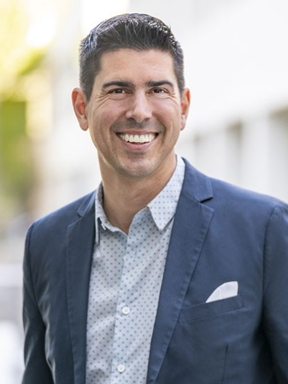 Kit Colbert, VMware - Kit Colbert joined VMware in September 2003 (following an internship in 2002) and currently serves as senior vice president and chief technology officer. He is responsible for ensuring VMware’s long term technology leadership through research and innovation programs, with the primary goal of positively impacting and shaping the future of VMware, its ecosystem, and its customers. As CTO, Colbert’s will shape the technical vision for the company, and the transformation to a cloud and subscription-centric R&D organization. His oversight includes advancing research and development efforts, overseeing the VMware Engineering Services team, the Design/UX team and the company’s ESG commitments. Prior to September 2021, Colbert served in multiple roles, including VMware’s Cloud CTO, General Manager of VMware’s Cloud-Native Apps business, CTO for VMware’s End-User Computing Business, and as the lead architect for the VMware vRealize Operations Suite. Colbert joined VMware as the technical lead behind the creation, development and delivery of the vMotion and Storage vMotion features in VMware vSphere.
Kit Colbert, VMware - Kit Colbert joined VMware in September 2003 (following an internship in 2002) and currently serves as senior vice president and chief technology officer. He is responsible for ensuring VMware’s long term technology leadership through research and innovation programs, with the primary goal of positively impacting and shaping the future of VMware, its ecosystem, and its customers. As CTO, Colbert’s will shape the technical vision for the company, and the transformation to a cloud and subscription-centric R&D organization. His oversight includes advancing research and development efforts, overseeing the VMware Engineering Services team, the Design/UX team and the company’s ESG commitments. Prior to September 2021, Colbert served in multiple roles, including VMware’s Cloud CTO, General Manager of VMware’s Cloud-Native Apps business, CTO for VMware’s End-User Computing Business, and as the lead architect for the VMware vRealize Operations Suite. Colbert joined VMware as the technical lead behind the creation, development and delivery of the vMotion and Storage vMotion features in VMware vSphere.
 Luis Miguel Contreras, Telefonica - Luis M. Contreras earned an M.Sc. degree on Telecommunications from the Universidad Politécnica de Madrid (1997), holds an M. Sc. on Telematics jointly from the Universidad Carlos III of Madrid and the Universitat Politècnica de Catalunya (2010), and a Ph.D. on Telematics from the Universidad Carlos III de Madrid (2021). Since August 2011 he is part of Telefónica I+D / Telefónica CTIO unit, working on 5G, SDN, virtualization, transport networks and their interaction with cloud and distributed services, as well as on interconnection topics, being active in several standardization for a (IETF, O-RAN, ETSI, etc). He is also part-time lecturer at the Universidad Carlos III of Madrid. Before the position in Telefónica he worked in Alcatel and Orange.
Luis Miguel Contreras, Telefonica - Luis M. Contreras earned an M.Sc. degree on Telecommunications from the Universidad Politécnica de Madrid (1997), holds an M. Sc. on Telematics jointly from the Universidad Carlos III of Madrid and the Universitat Politècnica de Catalunya (2010), and a Ph.D. on Telematics from the Universidad Carlos III de Madrid (2021). Since August 2011 he is part of Telefónica I+D / Telefónica CTIO unit, working on 5G, SDN, virtualization, transport networks and their interaction with cloud and distributed services, as well as on interconnection topics, being active in several standardization for a (IETF, O-RAN, ETSI, etc). He is also part-time lecturer at the Universidad Carlos III of Madrid. Before the position in Telefónica he worked in Alcatel and Orange.
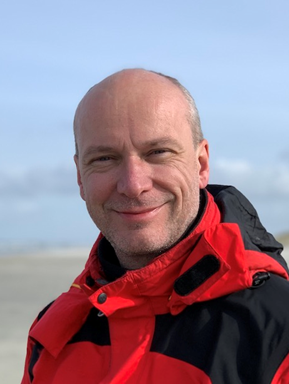 Falko Dressler, TU Berlin - Falko Dressler is full professor and Chair for Telecommunication Networks at the School of Electrical Engineering and Computer Science, TU Berlin. He received his M.Sc. and Ph.D. degrees from the Dept. of Computer Science, University of Erlangen in 1998 and 2003, respectively. Dr. Dressler has been associate editor-in-chief for IEEE Trans. on Mobile Computing and Elsevier Computer Communications as well as an editor for journals such as IEEE/ACM Trans. on Networking, IEEE Trans. on Network Science and Engineering, Elsevier Ad Hoc Networks, and Elsevier Nano Communication Networks. He has been chairing conferences such as IEEE INFOCOM, ACM MobiSys, ACM MobiHoc, IEEE VNC, IEEE GLOBECOM. He authored the textbooks Self-Organization in Sensor and Actor Networks published by Wiley & Sons and Vehicular Networking published by Cambridge University Press. He has been an IEEE Distinguished Lecturer as well as an ACM Distinguished Speaker. Dr. Dressler is an IEEE Fellow as well as an ACM Distinguished Member. He is a member of the German National Academy of Science and Engineering (acatech). He has been serving on the IEEE COMSOC Conference Council and the ACM SIGMOBILE Executive Committee. His research objectives include adaptive wireless networking (sub-6GHz, mmWave, visible light, molecular communication) and wireless-based sensing with applications in ad hoc and sensor networks, the Internet of Things, and Cyber-Physical Systems.
Falko Dressler, TU Berlin - Falko Dressler is full professor and Chair for Telecommunication Networks at the School of Electrical Engineering and Computer Science, TU Berlin. He received his M.Sc. and Ph.D. degrees from the Dept. of Computer Science, University of Erlangen in 1998 and 2003, respectively. Dr. Dressler has been associate editor-in-chief for IEEE Trans. on Mobile Computing and Elsevier Computer Communications as well as an editor for journals such as IEEE/ACM Trans. on Networking, IEEE Trans. on Network Science and Engineering, Elsevier Ad Hoc Networks, and Elsevier Nano Communication Networks. He has been chairing conferences such as IEEE INFOCOM, ACM MobiSys, ACM MobiHoc, IEEE VNC, IEEE GLOBECOM. He authored the textbooks Self-Organization in Sensor and Actor Networks published by Wiley & Sons and Vehicular Networking published by Cambridge University Press. He has been an IEEE Distinguished Lecturer as well as an ACM Distinguished Speaker. Dr. Dressler is an IEEE Fellow as well as an ACM Distinguished Member. He is a member of the German National Academy of Science and Engineering (acatech). He has been serving on the IEEE COMSOC Conference Council and the ACM SIGMOBILE Executive Committee. His research objectives include adaptive wireless networking (sub-6GHz, mmWave, visible light, molecular communication) and wireless-based sensing with applications in ad hoc and sensor networks, the Internet of Things, and Cyber-Physical Systems.
 Frank Fitzek, TU Dresden - Frank H. P. Fitzek is a Professor and head of the “Deutsche Telekom Chair of Communication Networks” at TU Dresden coordinating the 5G Lab Germany. He is the spokesman of the DFG Cluster of Excellence CeTI. He received his diploma (Dipl.-Ing.) degree in electrical engineering from the University of Technology – Rheinisch-Westfälische Technische Hochschule (RWTH) – Aachen, Germany, in 1997 and his Ph.D. (Dr.-Ing.) in Electrical Engineering from the Technical University Berlin, Germany in 2002 and became Adjunct Professor at the University of Ferrara, Italy in the same year. In 2003 he joined Aalborg University as Associate Professor and later became Professor. He co-founded several start-up companies starting with acticom GmbH in Berlin in 1999. He has visited various research institutes including Massachusetts Institute of Technology (MIT), VTT, and Arizona State University. In 2005 he won the YRP award for the work on MIMO MDC and received the Young Elite Researcher Award of Denmark. He was selected to receive the NOKIA Champion Award several times in a row from 2007 to 2011. In 2008 he was awarded the Nokia Achievement Award for his work on cooperative networks. In 2011 he received the SAPERE AUDE research grant from the Danish government and in 2012 he received the Vodafone Innovation prize. In 2015 he was awarded the honorary degree “Doctor Honoris Causa” from Budapest University of Technology and Economics (BUTE). His current research interests are in the areas of wireless and 5G communication networks, network coding, cloud computing, compressed sensing, cross layer as well as energy efficient protocol design and cooperative networking.
Frank Fitzek, TU Dresden - Frank H. P. Fitzek is a Professor and head of the “Deutsche Telekom Chair of Communication Networks” at TU Dresden coordinating the 5G Lab Germany. He is the spokesman of the DFG Cluster of Excellence CeTI. He received his diploma (Dipl.-Ing.) degree in electrical engineering from the University of Technology – Rheinisch-Westfälische Technische Hochschule (RWTH) – Aachen, Germany, in 1997 and his Ph.D. (Dr.-Ing.) in Electrical Engineering from the Technical University Berlin, Germany in 2002 and became Adjunct Professor at the University of Ferrara, Italy in the same year. In 2003 he joined Aalborg University as Associate Professor and later became Professor. He co-founded several start-up companies starting with acticom GmbH in Berlin in 1999. He has visited various research institutes including Massachusetts Institute of Technology (MIT), VTT, and Arizona State University. In 2005 he won the YRP award for the work on MIMO MDC and received the Young Elite Researcher Award of Denmark. He was selected to receive the NOKIA Champion Award several times in a row from 2007 to 2011. In 2008 he was awarded the Nokia Achievement Award for his work on cooperative networks. In 2011 he received the SAPERE AUDE research grant from the Danish government and in 2012 he received the Vodafone Innovation prize. In 2015 he was awarded the honorary degree “Doctor Honoris Causa” from Budapest University of Technology and Economics (BUTE). His current research interests are in the areas of wireless and 5G communication networks, network coding, cloud computing, compressed sensing, cross layer as well as energy efficient protocol design and cooperative networking.
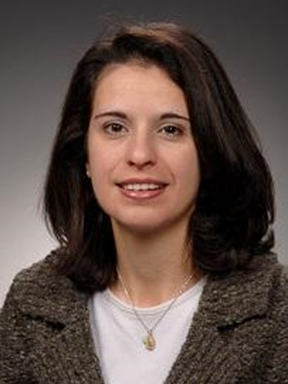 Nada Golmie, NIST - Nada Golmie received her Ph.D. in computer science from the University of Maryland at College Park. Since 1993, she has been a research engineer at the National Institute of Standards and Technology (NIST). She is currently the chief of the wireless networks division in the Communications Technology Laboratory. Her research in media access control and protocols for wireless networks led to over 100 technical papers presented at professional conferences, journals, and contributed to international standard organizations and industry led consortia. She is the author of "Coexistence in Wireless Networks: Challenges and System-level Solutions in the Unlicensed Bands," published by Cambridge University Press (2006). She is a member of the NIST Public Safety Communication Research program and leading the efforts on the simulation modeling and evaluation of LTE in support of public safety communications.
Nada Golmie, NIST - Nada Golmie received her Ph.D. in computer science from the University of Maryland at College Park. Since 1993, she has been a research engineer at the National Institute of Standards and Technology (NIST). She is currently the chief of the wireless networks division in the Communications Technology Laboratory. Her research in media access control and protocols for wireless networks led to over 100 technical papers presented at professional conferences, journals, and contributed to international standard organizations and industry led consortia. She is the author of "Coexistence in Wireless Networks: Challenges and System-level Solutions in the Unlicensed Bands," published by Cambridge University Press (2006). She is a member of the NIST Public Safety Communication Research program and leading the efforts on the simulation modeling and evaluation of LTE in support of public safety communications.
 Chih-Lin I, China Mobile - Chih-Lin I is CMCC Chief Scientist of Wireless Technologies. She received Ph.D. EE from Stanford University. She has won 2005 IEEE ComSoc Stephen Rice Prize, 2018 IEEE ComSoc Fred W. Ellersick Prize, the 7th IEEE Asia-Pacific Outstanding Paper Award, and 2015 IEEE Industrial Innovation Award for Leadership and Innovation in Next-Generation Cellular Wireless Networks. She is the Chair of O-RAN Technical Steering Committee and an O-RAN Executive Committee Member, the Chair of FuTURE 5G/6G SIG, the Chair of WAIA (Wireless AI Alliance) Executive Committee, an Executive Board Member of GreenTouch, a Network Operator Council Founding Member of ETSI NFV, a Steering Board Member and Vice Chair of WWRF, a Steering Committee member and the Publication Chair of IEEE 5G and Future Networks Initiatives, the Founding Chair of IEEE WCNC Steering Committee, the Director of IEEE ComSoc Meetings and Conferences Board, a Senior Editor of IEEE Trans. Green Comm. & Networking, an Area Editor of ACM/IEEE Trans. Networking; Executive Co-chair of IEEE Globecom 2020, IEEE WCNC 2007, IEEE WOCC 2004 and 2000; a member of IEEE ComSoc SDB, SPC, and CSCN-SC, and a Scientific Advisory Board Member of Singapore NRF.
Chih-Lin I, China Mobile - Chih-Lin I is CMCC Chief Scientist of Wireless Technologies. She received Ph.D. EE from Stanford University. She has won 2005 IEEE ComSoc Stephen Rice Prize, 2018 IEEE ComSoc Fred W. Ellersick Prize, the 7th IEEE Asia-Pacific Outstanding Paper Award, and 2015 IEEE Industrial Innovation Award for Leadership and Innovation in Next-Generation Cellular Wireless Networks. She is the Chair of O-RAN Technical Steering Committee and an O-RAN Executive Committee Member, the Chair of FuTURE 5G/6G SIG, the Chair of WAIA (Wireless AI Alliance) Executive Committee, an Executive Board Member of GreenTouch, a Network Operator Council Founding Member of ETSI NFV, a Steering Board Member and Vice Chair of WWRF, a Steering Committee member and the Publication Chair of IEEE 5G and Future Networks Initiatives, the Founding Chair of IEEE WCNC Steering Committee, the Director of IEEE ComSoc Meetings and Conferences Board, a Senior Editor of IEEE Trans. Green Comm. & Networking, an Area Editor of ACM/IEEE Trans. Networking; Executive Co-chair of IEEE Globecom 2020, IEEE WCNC 2007, IEEE WOCC 2004 and 2000; a member of IEEE ComSoc SDB, SPC, and CSCN-SC, and a Scientific Advisory Board Member of Singapore NRF.
Organizing Committee Ashutosh Dutta, Johns Hopkins University Applied Physics Lab - Ashutosh Dutta is currently Chief 5G Strategist and JHU/APL Sabbatical Fellow at Johns Hopkins University Applied Physics Labs (JHU/APL), USA. He also serves as Chair for Electrical and Computer Engineering for Engineering Professional Program at JHU. His career, spanning more than 30 years, includes Director of Technology Security and Lead Member of Technical Staff at AT&T, CTO of Wireless at a Cybersecurity company NIKSUN, Inc., Senior Scientist in Telcordia Research, Director of Central Research Facility at Columbia University, adjunct faculty at NJIT, and Computer Engineer with TATA Motors. Ashutosh is IEEE Communications Society's Distinguished Lecturer for 2017-2020 and as an ACM Distinguished Speaker (2020-2022). Ashutosh currently serves as the founding co-chair for IEEE Future Networks Initiative and Member-At-Large for IEEE Communications Society. He also currently serves as the Chair for IEEE Industry Connection’s O-RAN activities. Ashutosh is a Distinguished Alumnus of NIT Rourkela with BS in Electrical Engineering, MS in Computer Science from NJIT, and Ph.D. in Electrical Engineering from Columbia University under the supervision of Prof. Henning Schulzrinne. Ashutosh is a Fellow of IEEE and Distinguished member ACM.
Ashutosh Dutta, Johns Hopkins University Applied Physics Lab - Ashutosh Dutta is currently Chief 5G Strategist and JHU/APL Sabbatical Fellow at Johns Hopkins University Applied Physics Labs (JHU/APL), USA. He also serves as Chair for Electrical and Computer Engineering for Engineering Professional Program at JHU. His career, spanning more than 30 years, includes Director of Technology Security and Lead Member of Technical Staff at AT&T, CTO of Wireless at a Cybersecurity company NIKSUN, Inc., Senior Scientist in Telcordia Research, Director of Central Research Facility at Columbia University, adjunct faculty at NJIT, and Computer Engineer with TATA Motors. Ashutosh is IEEE Communications Society's Distinguished Lecturer for 2017-2020 and as an ACM Distinguished Speaker (2020-2022). Ashutosh currently serves as the founding co-chair for IEEE Future Networks Initiative and Member-At-Large for IEEE Communications Society. He also currently serves as the Chair for IEEE Industry Connection’s O-RAN activities. Ashutosh is a Distinguished Alumnus of NIT Rourkela with BS in Electrical Engineering, MS in Computer Science from NJIT, and Ph.D. in Electrical Engineering from Columbia University under the supervision of Prof. Henning Schulzrinne. Ashutosh is a Fellow of IEEE and Distinguished member ACM.
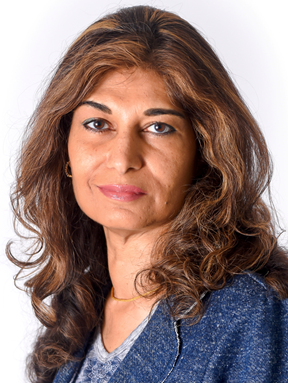 Kaniz Mahdi, VMware - Kaniz is Vice President of Distributed Edge, a new technology focus area she helped establish in the VMware Office of the CTO. She is leading a multi-faceted global team for user-centric research and co-innovation to unravel the complexities of Distributed Edge Cloud systems. The outputs of these research and co-innovation efforts will drive recommendations for VMware’s strategic evolution in this space. Prior to VMware, Kaniz held various technology leadership positions at Ericsson, Huawei, Ciena and Nortel. With 45+ patent grants, Kaniz has a stellar record of continuously pushing the envelope on new technologies. She is an inventor of essential technologies underpinning current Voice over LTE systems and has been instrumental in defining the 5G era landscape with disruptive technologies (e.g. SDN/NFV & O-RAN). Kaniz is the co-founder of the Open Grid Alliance and serves as chairperson of its executive board. She also serves on various other industry boards, e.g. ATIS NextG Alliance and 5G Americas, and is a member of the FCC Technological Advisory Council.
Kaniz Mahdi, VMware - Kaniz is Vice President of Distributed Edge, a new technology focus area she helped establish in the VMware Office of the CTO. She is leading a multi-faceted global team for user-centric research and co-innovation to unravel the complexities of Distributed Edge Cloud systems. The outputs of these research and co-innovation efforts will drive recommendations for VMware’s strategic evolution in this space. Prior to VMware, Kaniz held various technology leadership positions at Ericsson, Huawei, Ciena and Nortel. With 45+ patent grants, Kaniz has a stellar record of continuously pushing the envelope on new technologies. She is an inventor of essential technologies underpinning current Voice over LTE systems and has been instrumental in defining the 5G era landscape with disruptive technologies (e.g. SDN/NFV & O-RAN). Kaniz is the co-founder of the Open Grid Alliance and serves as chairperson of its executive board. She also serves on various other industry boards, e.g. ATIS NextG Alliance and 5G Americas, and is a member of the FCC Technological Advisory Council.
 Meryem Simsek, VMware - Meryem Simsek (Senior Member, IEEE) received the Dipl.-Ing. degree in electrical engineering and the Ph.D. degree in reinforcement learning-based ICIC in LTE-Advanced heterogeneous networks information technology from the University of Duisburg-Essen, Germany, in 2008 and 2013, respectively. In 2013, she joined Florida International University, Miami, FL, USA, as a Post-Doctoral Scientist. Since 2014, she has been a Research Group Leader with the Technical University of Dresden, Dresden, Germany. In 2016, she joined the International Computer Science Institute, Berkeley, CA, USA, as a Senior Research Scientist. She was also a Visiting Researcher with UC Berkeley, Berkeley, CA, USA. In 2018, she joined Intel Labs to work on machine learning-based solutions for beyond 5G networks. She is currently a Chief Scientist with VMware. Her current research interests include wireless systems, self-organizing networks, machine learning, and intelligent networking. She was a recipient of the IEEE Communications Society Fred W. Ellersick Prize in 2015 and the N2Women Rising Stars in Computer Networking and Communications in 2019.
Meryem Simsek, VMware - Meryem Simsek (Senior Member, IEEE) received the Dipl.-Ing. degree in electrical engineering and the Ph.D. degree in reinforcement learning-based ICIC in LTE-Advanced heterogeneous networks information technology from the University of Duisburg-Essen, Germany, in 2008 and 2013, respectively. In 2013, she joined Florida International University, Miami, FL, USA, as a Post-Doctoral Scientist. Since 2014, she has been a Research Group Leader with the Technical University of Dresden, Dresden, Germany. In 2016, she joined the International Computer Science Institute, Berkeley, CA, USA, as a Senior Research Scientist. She was also a Visiting Researcher with UC Berkeley, Berkeley, CA, USA. In 2018, she joined Intel Labs to work on machine learning-based solutions for beyond 5G networks. She is currently a Chief Scientist with VMware. Her current research interests include wireless systems, self-organizing networks, machine learning, and intelligent networking. She was a recipient of the IEEE Communications Society Fred W. Ellersick Prize in 2015 and the N2Women Rising Stars in Computer Networking and Communications in 2019.
 Luis Velasco, Polytechnic University of Catalonia - Luis Velasco is a full professor at UPC and the Scientific Director of the Advanced Broadband Communications Center (CCABA). He received the M.Sc. degree in Physics from Universidad Complutense de Madrid in 1993 and the PhD degree from Universitat Politecnica de Catalunya (UPC) in 2009. He has co-authored more than 250 papers in peer-reviewed International Journals and Conferences, as well as two books related to Elastic Optical Networks. He served as an Associate Editor of the IEEE/OSA Journal of Optical Communications and Networking (JOCN) from 2015 to 2021, and is currently serving as an Associate Editor of MDPI Sensors, in the Ediorial Board of MDPI Telecom, and in the TPC of several international conferences as well as reviewer of international journals. He has participated in various IST/ICT FP-6, FP-7, and H2020 European research projects and now he is leading network automation activities in the H2020 B5G-OPEN, as well as in the MSCA EID projects REAL-NET and MENTOR. He received the ICREA Academia awards in engineering sciences in 2015 and 2020. His interests include intent-based networking, including monitoring, data analytics, and artificial intelligence, for autonomous beyond 5G and 6G networks and services.
Luis Velasco, Polytechnic University of Catalonia - Luis Velasco is a full professor at UPC and the Scientific Director of the Advanced Broadband Communications Center (CCABA). He received the M.Sc. degree in Physics from Universidad Complutense de Madrid in 1993 and the PhD degree from Universitat Politecnica de Catalunya (UPC) in 2009. He has co-authored more than 250 papers in peer-reviewed International Journals and Conferences, as well as two books related to Elastic Optical Networks. He served as an Associate Editor of the IEEE/OSA Journal of Optical Communications and Networking (JOCN) from 2015 to 2021, and is currently serving as an Associate Editor of MDPI Sensors, in the Ediorial Board of MDPI Telecom, and in the TPC of several international conferences as well as reviewer of international journals. He has participated in various IST/ICT FP-6, FP-7, and H2020 European research projects and now he is leading network automation activities in the H2020 B5G-OPEN, as well as in the MSCA EID projects REAL-NET and MENTOR. He received the ICREA Academia awards in engineering sciences in 2015 and 2020. His interests include intent-based networking, including monitoring, data analytics, and artificial intelligence, for autonomous beyond 5G and 6G networks and services.
Future Networks Testbed Requirements, Challenges and Opportunities

Virtual || 7-8 February 2022
Event Presentations - Coming Soon
Overview
Testbeds are a critical part of network generation evolution and complement the development of standards. Use cases are facilitated with a number of innovations starting from the Physical layer with mmWave, mMIMO and spanning other layers of the network protocol stack. Given the increased complexity of the next generation of communication systems and skyrocketing development costs, the importance of publicly available testbeds is quickly becoming critical for researchers and developers to get access to state-of-the-art infrastructure in order to prototype and validate their novel ideas. Lessons learnt from various experiments help to ratify the standards. Testbeds also help as a catalyst for deployment of advanced wireless systems. Hence, it is essential to have experimental testbeds, where functional and end-to-end testing can be performed. This workshop explores diversity requirements as well as the challenges and enabling techniques towards the development of scalable testbed facilities for future networks to provide a standardized approach and best practices for collaboration. The workshop will feature two keynote and fifteen invited talks that will introduce a range of testbeds from academia and industry and will cover a range of issues related to experimental evaluation of existing and future wireless systems
Proposed Program
NOTE: All times are given in EasternTime US (ET).
| Day 1 - 7 February 2022 | ||
| 08:50-09:00 | Introduction - IEEE Future Networks Testbed Working Group | Ivan Seskar, Mohammad Patwary (Co-Chiars Testbed Working Group) |
| 09:00-09:30 | CONNECT testbed infrastructure: from open networking to digital twins | Marco Rufini (Trinity College Dublin) |
| 09:30-10:00 | Cloud-based Remote Experimentation for Future Networks: Challenges and Lessons Learned |
Zhangyu Guan (University of Buffalo) |
| 10:00-10:30 | CCI xG Tesbed: Introducing the Next Generation of Testbeds with O-RAN and srsRAN | Aloizio Pereira da Silva (Virginia Tech) |
| 10:30-11:00 | IEEE 5G and Beyond Testbed: A New Collaborative Platform for Industry | Ashutosh Dutta (JHU/APL), Anwer Al-Dulaimi (EXFO) |
| 11:00-12:00 | Keynote Presentation: O-RAN Overview: Standards, Software, and Test | Ian Wong (Viavi/O-RAN) |
| 12:00-12:30 | Break | |
| 12:30-13:00 | Chameleon: Reproducible Experiments in the Edge to Cloud Continuum | Katarzyna Keahey (University of Chicago) |
| 13:00-13:30 | POWDER Platform: Increasing Experiment Automation & Composability | Neal Patwari and David Johnson (University of Utah) |
| 13:30-14:00 | Requirements and Challenges in Scalable Wireless Testbed Experimentation | Violet R. Syrotiuk (Arizona State University) |
| Day 2 - 8 February 2022 | ||
| 09:00-09:30 | Slices: European Scientific Large-Scale Infrastructure for Computing/Communication Experimental Studies |
Serge Fdida (Sorbonne) |
| 09:30-10:00 | The impact of open-source testbeds on cellular security research | Roger Piqueras (Google) |
| 10:00-11:00 | Keynote Presentation: Academia, Industry, Non-profits, and Government: It Takes a Continent to Invent a Network |
Eric Burger (Next G Alliance) |
| 11:00-11:30 | AERPAW - Considerations for Designing Usage Models for a Computing-supported CyberPhysical Research Platform |
Rudra Dutta (North Carolina State University) |
| 11:30-12:00 | COSMOS Testbed: Programmable Optical x-Haul Networking | Tingjun Chen (Duke University) |
| 12:00-12:30 | Long standing focus on Experimentation in Europe - From Federated Testbeds to Advanced Vertical Pilots |
Jorge Pereira (EU Commission) |
| 12:30-13:00 | ARA Wireless Living Lab for Smart and Connected Rural Communities | Hongwei Zhang (Iowa State University) |
| 13:00-13:30 | Bristol 5G/6G Testbed and Trials | Dimitra Simeonidou (University of Bristol) |
| 13:30-14:00 | Mu-Net: Community-shared infrastructure for mobile underwater acoustic networks | Aijun Song (University of Alabama) |
| 14:00-14:30 | PAWR + Colosseum: Federating Physical and Virtual Wireless Testbeds to accelerate 5G and Beyond Research |
Abhimanyu Gosain (Northeasern University) |
Speaker Bios
Anwer Al-Dulaimi: Anwer Al-Dulaimi is currently a Senior Manager of Emering technologies & innovations and Distinguished Member of Technical Staff at EXFO Inc., Montreal, Canada. He received the Ph.D. degree in electrical and computer engineering from Brunel University, London, U.K., in 2012 after receiving M.Sc. and B.Sc. honors degrees in communication engineering. He was a Postdoctoral Fellow with the Department of Electrical and Computer Engineering, University of Toronto, sponsored by Blackberry’s advanced research team. He is the chair of the newly IEEE FNI 5G Testbed Project working to develop a virtual testing platform for E2E network innovation. His research interests include 5G and 6G networks, cloud computing, Blockchains and cybersecurity. Anwer is the editor of IEEE Future Networks Series on 5G & 6G and guest editor for many IEEE journals. He was the recipient of the 2013 Worldwide Universities Network best paper for outstanding research in cognitive communications, best IEEE/WWRF VTM best paper award for 3 times. He is the chair of the IEEE 1932.1 ‘Standard for Licensed/Unlicensed Spectrum Interoperability in Wireless Mobile Network’. He is a Fellow of the Institution of Engineering and Technology (FIET), Associate Fellow of the British higher education Academy (AFHEA) and registered as a Chartered Engineer (CEng) by the British Engineering Council since 2010. He is a member of NSERC discovery grants committee, senior member of IEEE and a voting member of IEEE MobiNet Standards Committee.
Eric Burger: Dr. Eric Burger is Research Professor of Computer Science at Georgetown University since 2011 and Technical Program Director of the Next G Alliance. He served as the Chief Technology Officer of the U.S. Federal Communications Commission and Assistant Director of the office of Science and Technology Policy in the White House, where amongst other accomplishments launched the Advanced Wireless Testing Platforms Team in the WSRD NITRD Work Group, highlighting the importance of making Federal facilities available to the private sector to advance the state of the art. Prior to Georgetown, Dr. Burger was CTO of a number of network equipment and communications companies. Early in his career he wrote and lead the development of device and systems design tools and simulators at Valid Logic Systems, known today as Cadence.
Tingjun Chen: Tingjun Chen received the Ph.D. degree in Electrical Engineering from Columbia University in 2020 and the B.Eng. degree in Electronic Engineering from Tsinghua University in 2014. Between 2020–2021 he was a Postdoctoral Associate at Yale University. Since Fall 2021 he has been with Duke University where is an Assistant Professor in the Department of Electrical and Computer Engineering. His research interests are in the area of networking and communications with a specific focus on next-generation wireless, mobile, and optical networks as well as Internet-of-Things (IoT) systems. In particular, he is interested in emerging communication technologies and their interactions with the higher layers as well as in cross-layer optimization and performance evaluation of networked systems. Tingjun received the IBM Academic Award, the Google Research Scholar Award, the Columbia Engineering Morton B. Friedman Memorial Prize for Excellence, the Columbia University Eli Jury Award, the Facebook Fellowship, and the Wei Family Private Foundation (WFPF) Fellowship. He also received ACM CoNEXT 2016 Best Paper Award and the ACM MobiHoc 2019 Best Paper Award finalist, and his Ph.D. thesis received the ACM SIGMOBILE Dissertation Award Runner-up. He is also the Co-founder and Networks Lead of WiLO Networks Inc., a start-up focusing on low-power sensor hardware and end-to-end systems.
Ashutosh Dutta: Ashutosh Dutta is a computer scientist, engineer, academic, author, and an IEEE leader. He is currently a Senior Scientist, 5G Chief Strategist at Johns Hopkins University Applied Physics Lab, JHU/APL Sabbatical Fellow, Adjunct Faculty, and ECE Chair for EP at Johns Hopkins University. He is the Chair of IEEE Industry Connections O-RAN Initiative and Co-Chair for IEEE Future Networks Initiative. An IEEE Fellow, Dutta has co-authored over 150 articles, three book chapters, and had 31 patents awarded. As a computer science expert, he has been affiliated with Internet Real-Time Lab (IRT), and Distributed Computing & Communications (DCC) Laboratory of Columbia University, and works on wireless networking, LTE networks, Software Defined Networking (SDN), computer communication, Network Function Virtualization (NFV), 5G, Network Security, and mobility management.
Rudra Dutta: Rudra Dutta received a B.E. in Electrical Engineering from Jadavpur University, Kolkata, India, in 1991, a M.E. in Systems Science and Automation from Indian Institute of Science, Bangalore, India in 1993, and a Ph.D. in Computer Science from North Carolina State University, Raleigh, USA, in 2001. From 1993 to 1997 he worked for IBM as a software developer and programmer in various networking related projects. He has been employed since 2001 as faculty in the department of Computer Science at the North Carolina State University, Raleigh, since Fall 2018, he is also serving as Associate Department Head on. His current research interests focus on design and performance optimization of large networking systems, Internet architecture, wireless networks, and network analytics. He is a senior member of IEEE and a distinguished member (distinguished engineer) of ACM. His work has been supported by grants from the National Science Foundation, the Army Research Office, the National Security Agency, and industry, most recently including a PAWR grant from NSF (the AERPAW project).
Serge Fdida: Serge Fdida is a Professor with Sorbonne Université since 1995. His research interests are related to the future internet as well as the design of federated testbeds to support experimentally driven research. He has been leading many research projects in Europe, notably pioneering the European activity on Internet test platforms. He is currently coordinating several EU projects in this domain including the ESFRI SLICES initiative. Serge Fdida has published numerous scientific papers, in addition to a few patents and one rfc. He was one of the founders of the ACM Conext conference, general chair of ACM Mobicom 2015 and IEEE Infocom 2019. Serge Fdida has also developed a strong experience related to innovation and industry transfer, - he was the co-founder of the Qosmos company, - one of the active contributors to the creation of the Cap Digital cluster in Paris, and the President of the EIT Health French community. He was Vice-President International Development of Sorbonne University. He is a Distinguished ACM Member and an IEEE Senior member
Abhimanyu Gosain: Abhimanyu (Manu) Gosain is a Technical Program Director for PAWR, Senior Director for Institute of Wireless Internet of Things at Northeastern University, Founding Director for OpenAirX-Labs and SETA for DoD OUSD Innovate Beyond5G Program (IB5G). He is in charge of setting strategic goals and the research agenda for a $100M public-private partnership for the NSF Platforms for Advanced Wireless Research (PAWR) program and $25M DARPA Colosseum program. He serves as a Board Member for the OpenAirInterface Software Alliance, Founding member for Magma Core Foundation, University representative for O-RAN Alliance, Telecom Infra Project, NextG Alliance and co-chair on organizing committee and program committees for 6GSymposium, EuCNC,IEEE InfoCom and ACM WinTech. His numerous professional publications and experience exemplify use-inspired basic research in the field of networking technologies such as LTE, 5G, AI/ML, edge computing and Internet of Things. He is an IEEE Senior Member. He received his M.S. degree from Tufts University and M.B.A. from Boston University with High Honors.
Zhangyu Guan: Dr. Guan is an Assistant Professor with the Department of Electrical Engineering (EE) at The State University of New York at Buffalo. He received his Ph.D. in Communication and Information Systems from Shandong University in China in 2010. He was a visiting Ph.D. student with the Department of EE, SUNY Buffalo, from 2009 to 2010. He also worked there as a Postdoc from 2012 to 2014. After that, he worked as an Associate Research Scientist with the Department of ECE at Northeastern University in Boston, MA, from 2015 to 2018. Dr. Guan is the director of the Wireless Intelligent Networking and Security (WINGS) Lab at SUNY Buffalo, with research interests including programmable networks, spectrum coexistence, wireless multimedia networks, and wireless security.
David Johnson: David Johnson is a Research Associate and software engineer in the Flux Research Group in the School of Computing at the University of Utah. He joined the Flux Research Group as a staff member in 2006 and completed his M.S. degree in Computer Science in 2010. His research encompasses a broad range of systems software: mobile and wired networks, cloud computing, security, and operating systems.
Katarzyna Keahey: Kate Keahey is one of the pioneers of infrastructure cloud computing. She created the Nimbus project, recognized as the first open source Infrastructure-as-a-Service implementation, and continues to work on research aligning cloud computing concepts with the needs of scientific datacenters and applications. To facilitate such research for the community at large, Kate leads the Chameleon project, providing a deeply reconfigurable, large-scale, and open experimental platform for Computer Science research. To foster the recognition of contributions to science made by software projects, Kate co-founded and serves as co-Editor-in-Chief of the SoftwareX journal, a new format designed to publish software contributions. Kate is a Scientist at Argonne National Laboratory and a Senior Fellow at the Computation Institute at the University of Chicago.
Neal Patwari:Neal Patwari is a Professor at Washington University in St. Louis. He is jointly appointed in the Dept. of Electrical and Systems Engineering and the Dept. of Computer Science and Engineering. He was at the University of Utah in Electrical and Computer Engineering from 2006 to 2018. He directs the Sensing and Processing Across Networks (SPAN) Lab, which performs research at the intersection of statistical signal processing and wireless networking, for improving wireless sensor networking and for RF sensing, in which the radio interface is the sensor. The SPAN Lab also investigates how algorithmic systems interact with societal systems to reinforce inequities. He has a BS and MS in EE from Virginia Tech and a Ph.D. in EE at the University of Michigan. He received the NSF CAREER Award in 2008, the 2009 IEEE Signal Processing Society Best Magazine Paper Award, and the 2011 University of Utah Early Career Teaching Award. Neal has served on technical program committees for IPSN, MobiCom, SECON, IPIN, and SenSys.
Jorge Pereira: Dr. Jorge Pereira, obtained the Engineering and M.Sc. degrees in Electrical and Computer Engineering from Instituto Superior Técnico (IST), Lisbon, Portugal in 1983 and 1987, respectively, and received the Ph.D. in Electrical Engineering-Systems from the University of Southern California (USC), Los Angeles, in 1993. Between 1983 and 1988, he taught in the Department of Electrical and Computer Engineering of IST as Full Lecturer in the areas of Electrotechnics and Electrical Measurements, Applied Electronics and Telecommunication Systems, and became Assistant Professor in 1994. From 1988 to 1990, he worked at LinCom Corp., Los Angeles, in a NASA project on space-to-space communications, and on synchronization issues. From 1991 to 1993, he worked for Caltrans (California Department of Transportation) and PATH (Partners for Advanced Transportation Technology) on Intelligent Vehicle-Highway Systems (IVHS)/Intelligent Transportation Systems (ITS). From 1993 to 1996, at GTE Laboratories Inc., Waltham, MA, was responsible for Communication Analysis and Simulation in the Federal Highway Administration National IVHS Architecture study; represented GTE at the Telecommunications Industry Association (TIA) IVHS Section, and in the High Speed Data Systems workgroup of the CDMA Development Group (CDG). He has been with the European Commission since September 1996, initially as Scientific Officer, becoming Principal Scientific Officer in 2005. He has been dealing with ICT, covering a broad variety of areas, with a focus on networking, devices, applications and services, testing and validation, as well as deployment. He is, since 2016, in the area of Future Connectivity Systems, focusing on 5G and beyond, where he is responsible for the areas of Advanced Spectrum Management; optical-wireless convergence; Connected and Automated Mobility (CAM); and Public Protection and Disaster Relief (PPDR). He is a member of the Advisory Board of John Wiley's Wireless Communications and Mobile Computing Journal, and of the Editorial Board of Kluwer Academic Publishers' Wireless Personal Communications Journal. He is a Member of the IEEE, where he is Associate Editor for Mobile Radio, including Vehicular Communications, for the IEEE VTS Magazine, and a member of the IEEE Future Networks Summit Steering Committee of the IEEE Communications Society, responsible for CAM. He also served as Associate Editor of the ACM Transactions on Sensor Networks. He is a Chartered Electrical Engineer in Portugal. He received the Industry Achievement Award of the Software-Defined Radio (SDR) Forum in 2003, in recognition of his “outstanding contributions, research and development in the field of SDR”, and was inducted as life-member of the Wireless Innovation Forum. He was inducted in the IPv6 Hall of Fame, at the IPv6 Forum Summit in Nanjing, China, in October 2019.
Roger Piqueras: Roger Piqueras Jover is a Software Engineer in the Android Platform Security team, where he leads efforts in mobile and cellular security. He was previously a Senior Security Architect with the CTO Security Architecture Team at Bloomberg. Previous to Bloomberg, he was a member of the AT&T Security Research Center, leading cellular and mobile network security efforts. Roger received a Dipl.Ing. degree from the Polytechnic University of Catalunya, an MSc in Electrical and Computer Engineering from the University of California at Irvine, and a MSc+ABD (all but dissertation) in Electrical Engineering from Columbia University. More info: http://rogerpiquerasjover.net/
Marco Ruffini: Prof. Marco Ruffini received his M.Eng. in telecommunications engineering in 2002 from Polytechnic University of Marche, Italy. After working as a research scientist for Philips in Germany, he joined Trinity College Dublin in 2005, where he received his Ph.D. in 2007.
He is currently Associate Professor at TCD. He is Principal Investigator (PI) of both the CONNECT Telecommunications Research Centre at TCD, and the IPIC photonics integration centre headquartered at the national Tyndall institute. Prof. Ruffini is currently involved in several Science Foundation Ireland (SFI) and H2020 projects, and leads the Optical Network Architecture group at Trinity College Dublin.
His main research is in the area of 5G optical networks, where he carries out pioneering work on the convergence of fixed-mobile and access-metro networks, and on the virtualisation of next generation networks, and has been invited to share his vision through several keynote and talks at major international conferences across the world.
He has authored over 150 international publications, over 10 patents and contributed is novel virtual Dynamic Bandwidth Allocation (vDBA) concept to the BroadBand Forum standardisation body.
Aloizio Pereira da Silva: Dr. Aloizio Pereira da Silva serves as a CCI xG Testbed director at Commonwealth Cyber Initiative (CCI) and Research Faculty at Electrical and Computer Engineering (ECE) Department at Virginia Tech. Da Silva’s areas of interest include wireless network, 5G and beyond. Mainly on software defined networks (SDN), software defined radio (SDR), network function virtualization (NFV), Internet of Things (IoT), Smart City, large-scale testbed experimentation, and mobile edge computing (MEC). He also has a background in deep-space communication intersecting with delay and disruption tolerant networks (DTNs). Da Silva is also Technical Project Manager for Platforms for Advanced Wireless Research (PAWR) program at US-IGNITE/NSF PAWR PPO where he manages and oversees PAWR testbeds, including AERPAW, POWDER, COSMOS and ARA. Da Silva has large experience on European Horizon projects acquired during his role as 5G portfolio manager and research fellow at University of Bristol UK. Da Silva earned his bachelor of science degree in computer science from the Pontificia Universidade Católica de Minas Gerais, master of science (MSc) in computer science from the Universidade Federal de Minas Gerais (UFMG), master of business administration (MBA) in project management from the Fundação Getúlio Vargas (FGV) and Babson Executive College, and doctorate (Ph.D) in computer engineering from the Instituto Tecnológico de Aeronáutica (ITA).
Dimitra Simeonidou: Dimitra Simeonidou is a Full Professor at the University of Bristol, the Co-Director of the Bristol Digital Futures Institute and the Director of Smart Internet Lab. Her research is focusing on the fields of high-performance networks, programmable networks, wireless-optical convergence, 5G/6G and smart city infrastructures. She is increasingly working with Social Sciences on topics of digital transformation for society and businesses. Dimitra has been the Technical Architect and the CTO of the smart city project Bristol Is Open. She is currently leading the Bristol City/Region 5G and Open RAN pilots.
She is the author and co-author of over 600 publications, numerous patents and several major contributions to standards. She has been co-founder of two spin-out companies, the latest being the University of Bristol VC funded spin-out Zeetta Networks, http://www.zeetta.com, delivering SDN solutions for enterprise and emergency networks. Dimitra is a Fellow of the Royal Academy of Engineering (FREng), a Fellow of the IEEE (FIEEE) and a Royal Society Wolfson Scholar
Aijun Song: Aijun Song is currently an Associate Professor with the Department of Electrical and Computer engineering, University of Alabama, Tuscaloosa, AL, USA. He received a Ph.D. degree in electrical engineering from the University of Delaware, Newark, DE, USA, in 2005. From 2005 to 2008, he was a Postdoctoral Research Associate with the College of Earth, Ocean, and Environment, University of Delaware. During this period, he was also an Office of Naval Research (ONR) Postdoctoral Fellow, supported by the Special Research Award in the ONR Ocean Acoustics program. He was a Research Professor with the University of Delaware from 2008 to 2015. His current research interests include digital communications and signal processing techniques for radio-frequency and underwater acoustic channels, ocean acoustics, sensor networks, and ocean monitoring and exploration.
Dr. Song served as the General Co-Chair of the 2018 March NSF Workshop on Underwater Wireless Communications and Networking and the 2018 November NSF Workshop on Underwater Wireless Infrastructure. He was the General Co-Chair of the 14th International Conference on Underwater Networks & Systems. He is a recent recipient of the NSF CAREER Award (2021).
Violet Syrotiuk: Violet Syrotiuk is an Associate Professor of Computer Science and Engineering at Arizona State University. She is the Steering Committee Chair of the CNERT Workshop, an INFOCOM Workshop whose focus is research using testbeds now in its 9th year. Her own research interests are in scalable screening experiments, and layer-2 protocol development.
Ian Wong: Dr. Ian C. Wong has been in the wireless field for over 20 years and is presently the Director of RF and Wireless Architecture in the CTO office at VIAVI Solutions, where he is leading RF and wireless technology strategy, standards, and architectures. He is also the current co-chair of the Test and Integration Focus Group (TIFG) in the O-RAN Alliance. From 2009 – Aug 2020, he was with NI (formerly National Instruments) where he was Section Manager of Wireless Systems R&D where he led the development of real-time end-to-end 5G wireless test and prototyping systems, and managed the company’s 3GPP wireless standards and IP strategy. From 2007-2009, he was a systems research and standards engineer with Freescale Semiconductor where he represented Freescale in the 3GPP LTE standardization efforts. He is a senior member of the IEEE, was the Director of Industry Communities for IEEE Communications Society 2016-2019, and was the Industry Program Chair for IEEE Globecom 2014 in Austin. His current research interests include 5G wireless systems architecture, standards, and algorithms, with particular focus on advanced physical layer technologies like mmWave and Massive MIMO.
Dr. Wong co-authored the Springer book “Resource Allocation for Multiuser Multicarrier Wireless Systems,” numerous patents, standards contributions, and IEEE journal and conference publications. He was awarded the Texas Telecommunications Engineering Consortium Fellowship in 2003-2004, and the Wireless Networking and Communications Group student leadership award in 2007.
He received the MS and PhD degrees in electrical engineering from the University of Texas at Austin in 2004 and 2007, respectively, and a BS degree in electronics and communications engineering (magna cum laude) from the University of the Philippines in 2000.
Hongwei Zhang: Hongwei Zhang is a Professor of Electrical and Computer Engineering at Iowa State University, USA. His research focuses on mission-critical wireless networks for real-time control, extended reality, and cyber-physical systems. He currently leads the ARA wireless living lab for smart and connected rural communities. He has also led/participated-in the development of connected vehicle open-innovation infrastructures, IoT network testbeds, and large-scale wireless sensor networks.
His work has been recognized by the National Science Foundation CAREER Award, Best Paper Award from the 2021 IEEE International Conference on Network Softwarization (NetSoft), and Best Demo Awards from the GENI Engineering Conferences.
IEEE Public Safety Technology Initiative Workshop
Monday, 20 September, 11am-3pm Eastern Time US
The IEEE Public Safety Technology task force will host a virtual workshop to explore the opportunity for IEEE to make a significant impact in the area of global public safety.
Typical functions of Public Safety include first and emergency responses planned and unplanned events, such as wide-scale natural disasters such as earthquakes, forest fires, flooding, and man-made disasters such as nuclear explosions, radiation, terrorism, as well as localized emergencies such as automobile accidents, large gatherings, fires, medical emergencies, and other public safety concerns. (Note that in Europe, the term PPDR, short for Public Protection and Disaster Relief, is used to refer to public safety.)
In all of these use cases, technology can play a role to make prevention, response or recovery faster, more efficient and more effective. We envision a new IEEE initiative within the Future Directions Committee that can address the technologies currently used, investigate additional current and emerging technologies, and consider the need for new technologies that could be used for public safety applications. The goal is to leverage the expertise of IEEE in helping public safety agencies and personnel improve their effectiveness and their performance to be able to respond, especially to emergencies, promptly.
This workshop will kick-off discussion on the definition, scope and potential structure of an IEEE Public Safety Technology effort. Since public safety requires support from many different areas of technology, this effort requires participation from multiple Society, Council, Technical Community and other OU groups in an umbrella initiative to put IEEE in a leadership role in this domain. The workshop will feature keynote talks from invited guests, but most of all we are calling for presentations from volunteers/members across all of IEEE for their perspectives.
If you would like to request time on the agenda for a presentation from your Society, Council, Technical Community, OU, please email This email address is being protected from spambots. You need JavaScript enabled to view it.
To download our inaugural white paper, Public Safety Technology: Gaps and Opportunities, visit https://bit.ly/PSTwp
Proposed Agenda
Monday, 20 September
| 11:00am | Welcome and Introduction | Brad Kloza |
| 11:05-11:10am | Future Directions Chair Call to Action | Christine Miyachi |
| 11:10-12:00pm | Public Safety Technology: An Opportunity for IEEE | Mehmet Ulema, Doug Zuckerman |
| 12:00-12:10pm | IEEE's Technical Role in Public Safety | Roger Fuji |
| 12:10-12:40pm | Keynote: 5G Network Security for Public Safety | Tony Triolo, Peraton |
| 12:40-01:10pm | Break | |
| 01:10-01:40pm | Keynote: A First Responder’s View of Technology Needs | Chris Baker, First Responder Network Authority |
| 01:40-02:00pm | Public Safety Technologies and Applications | Narendra Mangra |
| 02:00-03:00pm | Perspectives from S/Cs, OUs, TCs |
Future Networks 1st Massive MIMO Workshop

8-10 November 2021 | Free & Virtual
Overview
The IEEE Future Networks Massive MIMO Workshop aims to bring together researchers, practitioners, as well as technology decision-makers to form a vision on the use of multi-antenna and related techniques in wireless communications over the upcoming decade and beyond. The focus of the Workshop will be on latest developments in Massive MIMO challenges and opportunities—from fundamental research, experimental results, system architecture, to industry applications.
Keynote Speakers
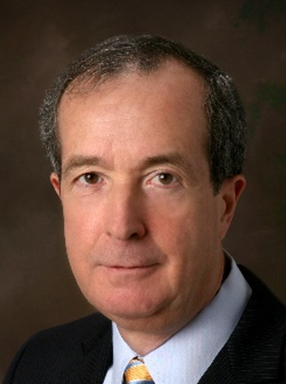 |
 |
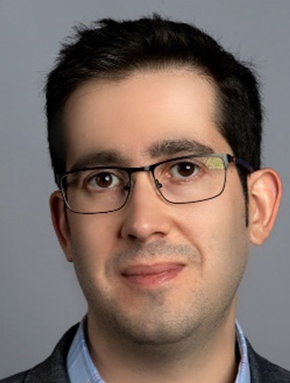 |
| Prof. Thomas Marzetta (NYU) |
Prof. Emil Björnson (KTH & LIU) |
Prof. Josep Jornet (Northeastern) |
 |
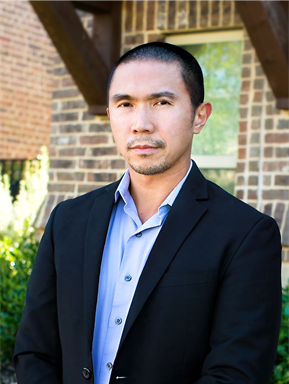 |
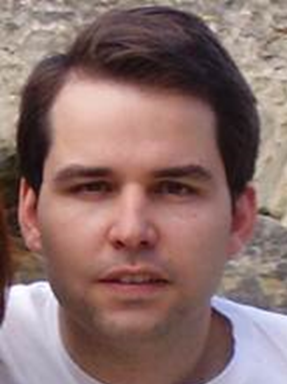 |
| Prof. Jean Armstrong (Monash U) |
Dr. Eko Onggosanusi (Samsung) |
Prof. Rodrigo de Lamare (PUC-Rio) |
Event Program
NOTE: All times are given in EasternTime US (ET).
| 8 November 2021 (Monday) | ||
| 09:00-09:15 | Introduction - IEEE Future Networks Massive MIMO Working Group | Chris Ng (Blue Danube Systems), Webert Montlouis (Johns Hopkins) |
| 09:15-10:00 | Keynote: Finite-Depth Beamforming with Physically Large Arrays | Emil Björnson (KTH & LIU) |
| 10:00-10:30 | Single-User Massive MIMO | Kasturi Vasudevan (IIT Kanpur) |
| 10:30-11:00 | Deep Learning Architectures for Massive MIMO System Design | Ahmet Elbir (Duzce U & U of Luxembourg) |
| 11:00-11:15 | Break | |
| 11:15-12:00 | Keynote: Conquering the Terahertz Band for 6G Systems: From Nanomaterials to Ultra-massive MIMO Systems |
Josep Jornet (Northeastern) |
| 12:00-12:30 | Massive MIMO in the Age of Open RAN | Ian Wong (VIAVI) |
| 12:30-13:00 | Break | |
| 13:00-13:30 | Promises and Challenges of massive MIMO over Open RAN | Young-Han Nam, Wessam Afifi, Logeshwaran Vijayan, Javad Abdoli, Atanu Guchhait, Laxmi Narayana Reddy (Mavenir) |
| 13:30-14:00 | Impact of an Open RAN fronthaul on UL Massive MIMO system performance | Frederick W. Vook, Serdar Ozen, Shahzada Rasool, Eugene Visotsky, Hyun-Su Cha (Nokia) |
| 14:00-14:30 | IEEE Standards Association Open-RAN Industry Connections Program | Ashutosh Dutta (Johns Hopkins), Purva Rajkotia (IEEE) |
| 9 November 2021 (Tuesday) | ||
| 09:00-09:15 | Introduction - IEEE Future Networks Massive MIMO Working Group | Kumar Vijay Mishra (Army Research Laboratory), Yiming Huo (U of Victoria) |
| 09:15-10:00 | Keynote: Massive MIMO: Where is it Now, and Where is it Going? | Thomas Marzetta (NYU) |
| 10:00-10:30 | Intelligent Reflecting Surface Aided Wireless Energy and Information Transmission for 6G |
Qingqing Wu (U of Macau) |
| 10:30-11:00 | Link Performance Analysis of Reconfigurable Intelligent Surfaces-Assisted Millimeter Wave Communications for Rural Connectivity |
Shuai Nie, Mehmet Can Vuran (U of Nebraska-Lincoln) |
| 11:00-11:15 | Break | |
| 11:15-12:00 | Keynote: Evolution of Massive MIMO in 5G New Radio (NR) | Eko Onggosanusi (Samsung) |
| 12:00-12:30 | Present and Future of Reconfigurable Intelligent Surface-Empowered Communications |
Ertugrul Basar (Koc U) |
| 12:30-14:30 | Break | |
| 14:30-15:45 | IEEE Future Networks Panel | Ashutosh Dutta (Security), Alex Gelman (Standards), Paul Draxler (Energy), Tim Page & David Witkowski (Deployment). Moderator: Chris Ng (Massive MIMO) |
| 15:45-16:00 | Break | |
| 16:00-16:45 | Keynote: Visible Light Communications (VLC) and Visible light Positioning (VLP) in the Context of Massive MIMO |
Jean Armstrong (Monash U) |
| 10 November 2021 (Wednesday) | ||
| 09:00-09:15 | Introduction - IEEE Future Networks Massive MIMO Working Group | Nasir Hussain (Samsung), Kasturi Vasudevan (IIT Kanpur) |
| 09:15-10:00 | Keynote: Robust MMSE Precoding and Power Allocation Techniques for Cell-Free Networks |
Rodrigo de Lamare (PUC-Rio) |
| 10:00-10:30 | Joint Radar and Communication with Large Scale Aperture Arrays | Bhavani Shankar (U of Luxembourg) |
| 10:30-11:00 | Deep Learning for Beam Optimization in 5G and Beyond | Yalin E Sagduyu (Intelligent Automation), Tugba Erpek (Intelligent Automation) |
| 11:00-11:30 | Break | |
| 11:30-12:00 | Game Theoretic Approach For Improving Key Performance Parameters In Cell-Free Massive MIMO Communication System |
Anjana Jain (SGSITS), Mahima Chaudhary (RGPV), Prakash Vyavahare (SGSITS) |
| 12:00-12:30 | Massive MIMO meets Decentralized Detection: achieving Energy-Efficiency in the IoT ecosystem |
Domenico Ciuonzo (U of Naples) |
| 12:30-13:30 | Break | |
| 13:30-14:30 | Industry Panel: Mobile Communication Vision Towards 2030 | Brian K. Daly (AT&T), Swaminathan Arunachalam (Nokia), Chris Pearson (5G Americas), Moderator: Nasir Hussain (Samsung) |
| 14:30-15:00 | High-rate imperceptible MIMO Screen-Camera Communication | Jörn Jochims (TU Dortmund) |
Organizing Committees
Workshop General Co-Chairs
| Webert Montlouis | Johns Hopkins University |
| Kumar Vijay Mishra | United States Army Research Laboratory |
| Chris Ng | Blue Danube Systems |
Technical Program Committee Co-Chairs
| Kasturi Vasudevan | IIT KANPUR |
| Yiming Huo | University of Victoria |
| Nasir Hussain | Samsung Electronics America |
| Dauda Ayanda | University of KwaZulu-Natal |
Publicity Co-Chairs
| Yiming Huo | University of Victoria |
| Nasir Hussain | Samsung Electronics America |
Session Chairs
| Kumar Vijay Mishra | United States Army Research Laboratory |
| Yiming Huo | University of Victoria |
Contact Persons
Please direct any questions or comments to the 1st Massive MIMO Workshop contact persons below.
| Webert Montlouis | Johns Hopkins University | This email address is being protected from spambots. You need JavaScript enabled to view it. |
| Kumar Vijay Mishra | United States Army Research Laboratory | This email address is being protected from spambots. You need JavaScript enabled to view it. |
| Chris Ng | Blue Danube Systems | This email address is being protected from spambots. You need JavaScript enabled to view it. |
2021 4th IEEE 5G Workshop on First Responder and Tactical Networks

Virtual || 14 December 2021
Click Here to Register to Access On-Demand: Free Registration
Click Here for Event Presentations
For questions, please contact Ashutosh Dutta at This email address is being protected from spambots. You need JavaScript enabled to view it.
All Events
2021 IEEE 5G Workshop on First Responder and Tactical Networks (WFRTN)
2020 IEEE 5G Workshop on First Responder and Tactical Networks (WFRTN)
2019 IEEE 5G Workshop on First Responder and Tactical Networks (WFRTN)
2018 IEEE 5G Workshop on First Responder and Tactical Networks (WFRTN)
| On this Page | Sponsors | |
|
Overview |
Gold |
Silver |
Bronze  |
Bronze  |
|
5G is not just the next evolution of 4G technology; it's a paradigm shift. It is expected to enable fundamentally new applications — with much more stringent requirements in latency and bandwidth — and provide resiliency and flexibility to the underlying network. Several standards organizations and forums, namely IEEE, the 3rd Generation Partnership Project, and the International Telecommunication Union, are working on defining the architecture and standardizing aspects of 5G technologies. However, few organizations are focusing on how such technologies can be useful to tactical and first responder networks.
IEEE is hosting the fourth workshop in this series on 14 December 2021. It is the result of partnership and collaboration with the Department of Homeland Security Science and Technology Directorate (DHS S&T, the Johns Hopkins University Applied Physics Lab (JHU/APL), and the Office of Under Secretary of Defense for research and Engineering (OUSD R&E) - 5G. This workshop will explore the applicability of 5G technologies for tactical and first responder networks, offer solutions, share use cases, and investigate research opportunities and challenges. The event will also provide an opportunity for 5G experts from industry and academia, as well as the standards, regulatory, homeland security, public safety and defense communities, to collaborate.
Download the full program-at-a-glance.
| Morning Plenary Session (Live) - Session Chair: Ashutosh Dutta | ||
| Time | Session Description | Speaker |
| 08:30-08:40 | Future Networks Intiative Introduction | Ashutosh Dutta (IEEE Future Networks Initiative Co-Chair) |
| 08:40-08:50 | Welcome Remarks | Raymond Yuan (JHU/APL) |
| 08:50-09:20 | Keynote: Exploring 5G Use Cases in DHS Operational Environments | Russell Becker (DHS S&T) |
| 09:20-09:40 | PAWR Platforms: National Assets for Advanced Network Research | Mari Silbey (US IGNITE/NSF) |
| 09:40-10:00 | Spectrum for 5G | Nicholas Oros (FCC) |
| 10:00-10:20 | 6G Flagship research – Use case public safety | Ari Pouttu (6G Flagship/University of Oulu) |
| 10:20-10:40 | 5G/6G Building Blocks for Public Safety Communications | Charles Clancy (MITRE) |
| 10:40-10:50 | Program Overview | Brad Kloza (IEEE) |
| 10:50-11:00 | Break | |
| Track 1: First Responder 1 (Simu-Live) - Session Chair: Ryan Pepito | ||
| Time | Session Description | Speaker |
| 11:00-11:20 | 5G Information Overload and the Information Sharing Framework | Ruth Vogel, John Contestabile, Rob Dew, Jay Chang (JHU/APL) |
| 11:20-11:40 | Addressing IoT Device Security Concerns in Connected World: Evolutions of Standards, Certifications, Regulations |
Anahit Tarkhanyan (Intel) |
| 11:40-12:00 | Communication Technologies to Fight Forest Fires | Periklis Chatzimisios, Christos Iliopoulos |
| 12:00-12:30 | Break | |
| 12:30-12:50 | Adaptable Communication System to the emergency scenario: challenges and opportunities for first responders |
Alessandro Vizzarri; Romeo Giuliano; Franco Mazzenga; Francesco Vatalaro; Anna Maria Vegni |
| 12:50-13:10 | HELPS for Emergency Location Service | Hichan Moon (Samsung Electronics) |
| 13:10-13:30 | 5G Capabilities for First Responders | Brian Daly (AT&T) |
| 13:30-13:50 | IEEE MOVE supporting power and communications at disasters | Grayson Randall |
| 13:50-14:10 | A brief history and future of police radio communications in Hong Kong | Jolly C Wong (Shanghai University) |
| 14:10-14:30 | Using PAWR platforms to explore AI-enabled O-RAN/ONAP-based disaster management in 5G multi-operator/multi-vendor environments |
David Allabaugh (Fujitsu), Martin Skorupski, Alexandru Stancu (Highstreet Technologies), Ivan Seskar (Rutgers University/WINLAB), David Johnson, Jacobus Van der Merwe (University of Utah), Tracy Van Brakle, Giovanni Vannucci (AT&T) |
| Track 2: First Responder 2 (Simu-Live) - Session Chair: Narendra Mangra | ||
| Time | Session Description | Speaker |
| 11:00-11:20 | IEEE Public Safety Technology Initiative: Emerging Public Safety Technologies and Beyond! | Mehmet Ulema; Doug Zuckerman |
| 11:20-11:40 | National Security and Emergency Preparedness (NS/EP) Communications – Current and Future Initiatives | Subir Das (Peraton Labs), Frank Suraci (CISA) |
| 11:40-12:00 | Non-RT RIC use case service assurance for first responder community | Eugene Gomes and Deepak Kataria (Ericsson) |
| 12:00-12:30 | Break | |
| 12:30-12:50 | Network Slicing and Traffic Prioritization for First Responder Emergency Services | Eapen Kuruvilla; Denise M.B. Masi; Steven Gordon; Muhammad Hussain; David Garbin |
| 12:50-13:10 | Overview of Non Terrestrial Networks | Amitabha Ghosh (Nokia Labs) |
| 13:10-13:30 | POWDER platform: Building blocks of a living lab enabling your research | Kobus Van Der Merwe (University of Utah) |
| 13:30-13:50 | Innovating in the Critical Communications Space | John Macias (Verizon) |
| 13:50-14:10 | Enabling Data sharing to maximize first-responder readiness: The IUDX case study | Inder Gopal (IUDX) |
| 14:10-14:30 | Transforming First Responder Networks to 5G | Kelly Krick (Ericsson) |
| Track 3:Tactical Networks 1 (Simu-Live) - Session Chair: Cherita Corbett | ||
| Time | Session Description | Speaker |
| 11:00-11:20 | Enabling 5G expansion into rural areas: The case study of LibreRouter | Sarbani Banerjee Belur; Dipen Parmar; Tejas Vaghela; Rajesh Kushalkar; Michael Jensen |
| 11:20-11:40 | Systems and networks for supporting land SAR actions in Poland. Perspective of introducing testbed for MANET/4G/5G net to First Responder duties |
Maciej Gucma; Remigiusz Lysik; Miroslaw Radwan |
| 11:40-12:00 | Foundational Capabilities for Tactical 5G and Beyond | George F Elmasry; Paul Corwin; Rockwell Collins |
| 12:00-12:30 | Break | |
| 12:30-12:50 | Performance evaluation of Quality of Service in 5th Generation mobile Network | Huiam Eldai; Ibrahim Kh Eltahir |
| 12:50-13:10 | Mobile Networks for PPDR/Tactical Use at Work: the Athonet PriMo Solutions | Massimiliano Gianesin; Marco Centenaro; Nicola di Pietro; Daniele Munaretto; Simon O'Donnell |
| 13:10-13:30 | Colosseum: How can the World's Largest Network Emulator Accelerate Tactical Network Experimentation? |
Abhimanyu Gosain (North Eastern University) |
| 13:30-13:50 | Dependable 5G Networks for Emergency Applications | Eman Hammad (Texas A&M University System - RELLIS) |
| 13:50-14:10 | Enabling Advanced Capabilities via Tactical 4G/5G Cellular Networks | Steve Vogelsang (Nokia) |
| 14:10-14:30 | 5G & Beyond Security for Mission Critical Communications | Arupjyoti Bhuyan (Idaho National Lab) |
| Track 4: Tactical Networks 2 (Simu-Live) - Session Chair: Julia Andrusenko | ||
| Time | Session Description | Speaker |
| 11:00-11:20 | Future Tactical First Responder Networks: From Spectrum Agility to Network Agility | Apurva Mody (Airnaculus) |
| 11:20-11:40 | COSMOS: An Open, Programmable, City-Scale Wireless and Optical Testbed | Ivan Seskar (Rutgers University/WINLAB) |
| 11:40-12:00 | Non Terrestrial Networks – Introduction, Applications, and Technology Challenges | Adnan Khan (Anritsu) |
| 12:00-12:30 | Break | |
| 12:30-12:50 | AERPAW: Aerial Experimentation and Research Platform for Advanced Wireless | Ismail Guvenc (North Carolina State University) |
| 12:50-13:10 | Open Source 5G Security Testbed for Edge Computing | |
| 13:10-13:30 | Testing and Analyzing 5G Networks | Samir Chatterjee (Rebaca) |
| 13:30-13:50 | Edge Services, IAB, and ORAN for the Tactical 5G Networks | Richard Russell (Radisys) |
| 13:50-14:10 | Leveraging physical layer security in first responder and tactical networks | Arsenia Chorti (ENSEA) |
| 14:10-14:30 | An Open Source 5G-Enabled Edge Cloud | Larry Peterson (ONF) |
| Track 5: Research (Simu-Live) - Session Chair: Jared Everett | ||
| Time | Session Description | Speaker |
| 11:00-11:20 | A Comprehensive Evaluation on Multicast and Unicast in Public Safety Communications | Chunmei Liu |
| 11:20-11:40 | 5G and Beyond Communications Security with Adversarial Machine Learning | Yalin E Sagduyu; Tugba Erpek |
| 11:40-12:00 | 5G NR and LTE Coexistence in Public Safety Communications | Sneihil Gopal; David Griffith |
| 12:00-12:30 | Break | |
| 12:30-12:50 | Distributed Beamforming with Autonomous UGVs | Brian M Sadler |
| 12:50-13:10 | Security Analysis of 5G First Responder Networks | Steven Yuen |
| 3:10-13:30 | Network Simulator for Public Safety Communications | Richard Rouil |
| 13:30-13:50 | A Study on Using 5GC User Plane Function for Detecting and Monitoring Arrhythmia Symptoms with Portable Single-Lead ECG Devices in Emergency Medical Services |
Bhuvaneswari Arunachalan |
| 13:50-14:10 | Design and Development of Compact Microstrip Patch Antennas Using Ceramic Substrates | S. Kannadhasan |
| 14:10-14:30 | 5G, an Innovative Network for Ghana and Other Parts of Africa | Timothy Kwadwo Asiedu |
| Track 6: Technology (Simu-Live) - Session Chair: Oscar Somelock | ||
| Time | Session Description | Speaker |
| 11:00-11:20 | Security Risk Analysis of IoT and Edge Networks | Ashish Kundu (Cisco) |
| 11:20-11:40 | Ubiquitous coverage of 5G through Non-Terrestrial Networks: What is it and How to Prototype it | Raymond Shen (Keysight) |
| 11:40-12:00 | Testing and Performance of free5GC | Jyh-Cheng Chen (National Yang Ming Chiao Tung University) |
| 12:00-12:30 | Break | |
| 12:30-12:50 | Leverage and enhance 5G/NextG for tactical use through collaboration | Lizy Paul (National Spectrum Consortium/Lockheed Martin) |
| 12:50-13:10 | Deployable Technology Expectations and Realities for the First Responder | Gordon Beattie Jr. (Viavi Solutions) |
| 13:10-13:40 | RAN disaggregation for a flexible and reliable network | Rajat Prakash (Qulacomm) |
| 13:40-14:00 | Rescue Services and the Multi-Cloud Service Grid | Sven van der Meer (VMWare) |
| 14:00-14:20 | 5G Digital Twin and Network Transformation | Glenn Stern (Spirent) |
| 14:20-14:40 | A Wide-Band DPA(Doherty Power Amplifier) for 5G Communications | Ki-Jin Kim (Korea Electronics Technology Institute) |
| Closing Plenary Session (Live) - Session Chair: Pamela Patton | ||
| Time | Session Description | Speaker |
| 14:30-14:45 | Break | |
| 14:45-15:15 | Keynote: OUSD R&E: NextG Tactical Networks | Sumit Roy (OUSD R&E) |
| 15:15-15:35 | Evolving FirstNet for the Future | Jeff Bratcher (FirstNet) |
| 15:35-15:55 | 5G & AI for Public Safety Communications | Nada Golmie (NIST) |
| 15:55-16:55 | Panel: 5G Technologies - Opportunities and Challenges for First Responder and Tactical Networks |
Sean Brassard (JHU/APL), Navin Jaffer (ECD), Scott Fox (DOD), Clarence Huff (DOD), Jorge Pereira (European Commission) |
| 16:55-17:00 | Closing Presentation | Rob Bartholet (JHU/APL) |
Track Descriptions
Technology
Covering 5G and beyond technologies currently available to solve challenges associated with first responder and tactical networks. The technologies could cover a wide variety, but are not limited to 5G hardware, millimeter wave (mmW) communication, 5G network security, massive multiple input multiple output (MIMO) antenna technology, non-terrestrial architectures and supporting hardware/software, optics, new radio (NR), edge cloud computing, core network architecture and management, network slicing, and 5G applications and services.
First Responder Networks
Covering use cases and solutions applicable to First Responder community, including case studies that illustrate the gaps in current technologies and how 5G can augment operational capabilities. Solutions could also include various integrated systems, platforms, frameworks, and testbeds that can provide the desired features, functionalities, and service level agreements (SLAs) to meet the needs of the first responders including fire rescue services, law enforcement, emergency management, emergency medical service and other public safety entities.
Tactical Networks
Covering use cases and solutions applicable to Tactical Networks, including case studies of real life scenarios that illustrate the gaps in current technologies and how 5G can augment the capabilities. Solutions could include various integrated systems, platforms, frameworks, and testbeds that can provide the desired features, functionalities, and service level agreements (SLAs) to meet the needs of the tactical
networks such as Army, Air Force or Navy type networks. Proposals could also include results from initial deployments and trials.
Research
Covering new development in technologies, novel solutions, ongoing research, and prototypes that look well beyond three-, five- and 10-year horizons. Talks could cover fundamental research on technologies beyond 5G, results from initial experimentation, proof-of-concept, field tests, and systems optimization.
Click Here to Register to Access On-Demand: Free Registration
For questions, please contact Ashutosh Dutta at This email address is being protected from spambots. You need JavaScript enabled to view it.
Sponsorship and Exhibit Opportunities
 Ms. Julia Andrusenko received her bachelor's and master's degrees in electrical engineering in 2002 from Drexel University, Philadelphia, PA. She is a senior communications engineer at APL and is the Chief Engineer of the Tactical Wireless Systems group of APL. Ms. Andrusenko has an extensive background in communications theory, wireless networking, satellite communications, Radio Frequency (RF) propagation prediction, communications systems vulnerability, computer simulation of communications systems, evolutionary computation, genetic algorithms/programming, MIMO, and millimeter wave technologies. She also has a substantial experience developing electronic warfare methodologies for various advanced commercial communications systems and military data links. Ms. Andrusenko is a published author of many technical papers and has recently co-authored a book titled “Wireless Internetworking: Understanding Internetworking Challenges” through Wiley/IEEE Press. Ms. Andrusenko is a member of the IEEE Communications Society.
Ms. Julia Andrusenko received her bachelor's and master's degrees in electrical engineering in 2002 from Drexel University, Philadelphia, PA. She is a senior communications engineer at APL and is the Chief Engineer of the Tactical Wireless Systems group of APL. Ms. Andrusenko has an extensive background in communications theory, wireless networking, satellite communications, Radio Frequency (RF) propagation prediction, communications systems vulnerability, computer simulation of communications systems, evolutionary computation, genetic algorithms/programming, MIMO, and millimeter wave technologies. She also has a substantial experience developing electronic warfare methodologies for various advanced commercial communications systems and military data links. Ms. Andrusenko is a published author of many technical papers and has recently co-authored a book titled “Wireless Internetworking: Understanding Internetworking Challenges” through Wiley/IEEE Press. Ms. Andrusenko is a member of the IEEE Communications Society.
 Sean Brassard is the Program Manager for the Special Operations Resilient Communications program at Johns Hopkins University Applied Physics Lab where he serves as a lead for various 5G and Cognitive Radio projects for the DoD. He has over 20 years of experience working in telecom and DoD tactical radio industries with a focus on systems engineering, software defined radios, anti-jam/signal cancellation techniques, and geo-location systems. He holds a B.E. in Electrical Engineering from Vanderbilt University and a M.S. in Electrical Engineering from Johns Hopkins University.
Sean Brassard is the Program Manager for the Special Operations Resilient Communications program at Johns Hopkins University Applied Physics Lab where he serves as a lead for various 5G and Cognitive Radio projects for the DoD. He has over 20 years of experience working in telecom and DoD tactical radio industries with a focus on systems engineering, software defined radios, anti-jam/signal cancellation techniques, and geo-location systems. He holds a B.E. in Electrical Engineering from Vanderbilt University and a M.S. in Electrical Engineering from Johns Hopkins University.
 David M. Coleman is the chief scientist for the Communications Branch in APL’s Asymmetric Operations Sector and also serves as the lead for the Spectrum Operations research portfolio in the Cyber Operations Mission Area. He earned a BS in computer engineering from Elizabethtown College, an MS in computer engineering from the University of Arkansas, and a PhD in electrical engineering from University of Maryland, College Park. Dr. Coleman has presented at many conferences for tactical networks and has been published in journals and proceedings.
David M. Coleman is the chief scientist for the Communications Branch in APL’s Asymmetric Operations Sector and also serves as the lead for the Spectrum Operations research portfolio in the Cyber Operations Mission Area. He earned a BS in computer engineering from Elizabethtown College, an MS in computer engineering from the University of Arkansas, and a PhD in electrical engineering from University of Maryland, College Park. Dr. Coleman has presented at many conferences for tactical networks and has been published in journals and proceedings.

Dr. Cherita Corbett is the Chief Scientist for the Communication and Networking Systems Group at Johns Hopkins University Applied Physics Laboratory. She guides research and development strategy and activities focused on resilient communications for military operations and critical infrastructure. Her current research interests include: secure mobile technologies, secure tactical communication systems, and insider threat protection. Prior to joining APL, Dr. Corbett was a Senior Computer Scientist at SRI International where she performed research on self-healing cellular networks, vehicular security, and IoT security. She also provided programmatic support to the Cyber Security Division of DHS S&T in the area of mobile technology. She has published over 30 technical manuscripts and holds a U.S. patent in cyber security. She holds a Ph.D. in Electrical & Computer Engineering from Georgia Institute of Technology.
 Dr. Ashutosh Dutta is currently senior scientist and 5G Chief Strategist at the Johns Hopkins University Applied Physics Laboratory (JHU/APL). He is also a JHU/APL Sabbatical Fellow and adjunct faculty at The Johns Hopkins University. Ashutosh also serves as the chair for Electrical and Computer Engineering Department of Engineering for Professional Program at Johns Hopkins University. His career, spanning more than 30 years, includes Director of Technology Security and Lead Member of Technical Staff at AT&T, CTO of Wireless for NIKSUN, Inc., Senior Scientist and Project Manager in Telcordia Research, Director of the Central Research Facility at Columbia University, adjunct faculty at NJIT, and Computer Engineer with TATA Motors. He has more than 100 conference, journal publications, and standards specifications, three book chapters, and 31 issued patents. Ashutosh is co-author of the book, titled, “Mobility Protocols and Handover Optimization: Design,Evaluation and Application,” published by IEEE and John & Wiley that has recently been translated into Chinese Language. Ashutosh is the founding co-chair for IEEE Future Networks initiative and serves as IEEE Communications Society’s Distinguished Lecturer for 2017-2018 and Distinguised Speaker for ACM from 2020-2022. He was recipient of the prestigious 2009 IEEE MGA Leadership award and 2010 IEEE-USA professional leadership award. Ashutosh obtained his BS in Electrical Engineering from NIT Rourkela, India, MS in Computer Science from NJIT, and Ph.D. in Electrical Engineering from Columbia University under the supervision of Prof. Henning Schulzrinne. Ashutosh is a Fellow of IEEE and senior member of ACM.
Dr. Ashutosh Dutta is currently senior scientist and 5G Chief Strategist at the Johns Hopkins University Applied Physics Laboratory (JHU/APL). He is also a JHU/APL Sabbatical Fellow and adjunct faculty at The Johns Hopkins University. Ashutosh also serves as the chair for Electrical and Computer Engineering Department of Engineering for Professional Program at Johns Hopkins University. His career, spanning more than 30 years, includes Director of Technology Security and Lead Member of Technical Staff at AT&T, CTO of Wireless for NIKSUN, Inc., Senior Scientist and Project Manager in Telcordia Research, Director of the Central Research Facility at Columbia University, adjunct faculty at NJIT, and Computer Engineer with TATA Motors. He has more than 100 conference, journal publications, and standards specifications, three book chapters, and 31 issued patents. Ashutosh is co-author of the book, titled, “Mobility Protocols and Handover Optimization: Design,Evaluation and Application,” published by IEEE and John & Wiley that has recently been translated into Chinese Language. Ashutosh is the founding co-chair for IEEE Future Networks initiative and serves as IEEE Communications Society’s Distinguished Lecturer for 2017-2018 and Distinguised Speaker for ACM from 2020-2022. He was recipient of the prestigious 2009 IEEE MGA Leadership award and 2010 IEEE-USA professional leadership award. Ashutosh obtained his BS in Electrical Engineering from NIT Rourkela, India, MS in Computer Science from NJIT, and Ph.D. in Electrical Engineering from Columbia University under the supervision of Prof. Henning Schulzrinne. Ashutosh is a Fellow of IEEE and senior member of ACM.
 Mr. Jared Everett is a senior wireless communications research engineer in the Wireless Cyber Capabilities group at the Johns Hopkins University Applied Physics Laboratory (Johns Hopkins APL). Since joining APL in 2009, his research has focused broadly on the use of cellular technologies for defense and national security applications. He has a deep knowledge of LTE and emerging 5G standards, specializing in cellular air interfaces and end-to-end systems. He is a co-author of the book, “Wireless Networking: Understanding Internetworking Challenges,” published by Wiley/IEEE Press. His current research interests include innovative approaches to spectrum sharing in 5G networks. Jared holds M.S. and B.S. degrees in electrical engineering from North Carolina State University. He also holds a B.A. degree in music.
Mr. Jared Everett is a senior wireless communications research engineer in the Wireless Cyber Capabilities group at the Johns Hopkins University Applied Physics Laboratory (Johns Hopkins APL). Since joining APL in 2009, his research has focused broadly on the use of cellular technologies for defense and national security applications. He has a deep knowledge of LTE and emerging 5G standards, specializing in cellular air interfaces and end-to-end systems. He is a co-author of the book, “Wireless Networking: Understanding Internetworking Challenges,” published by Wiley/IEEE Press. His current research interests include innovative approaches to spectrum sharing in 5G networks. Jared holds M.S. and B.S. degrees in electrical engineering from North Carolina State University. He also holds a B.A. degree in music.
 Mr. Douglas Holly, Principle, Eagle Management Group
Mr. Douglas Holly, Principle, Eagle Management Group
Doug brings a broad range of telecommunications, business leadership and management skills with a particular focus on project management, operational improvement and M&A. He currently heads up Eagle Management Group a consulting firm that provides general management, project management and strategic planning to improve operational performance. EMG also provides M&A selection, diligence support and integration services to businesses. He is a director of the Washington Section and chair its chapter of the Communications Society and also chair of the joint Washington/Northern Virginia chapter of the TEMS. He was finance chair for the IEEE GLOBECOM 2007 and 2016. Doug holds a bachelor's and master's dress in electrical engineering from Rensselaer Polytechnic Institute.
 Amy Howard is the Branch Office Administrator for the Communications Systems Branch in the Asymmetric Operations Sector at Johns Hopkins University Applied Physics Lab (APL). Amy joined APL in May, 2015 and is in her 2nd year as co-chair for the 5G Workshop. She has over 25 years of professional office and event coordination experience.
Amy Howard is the Branch Office Administrator for the Communications Systems Branch in the Asymmetric Operations Sector at Johns Hopkins University Applied Physics Lab (APL). Amy joined APL in May, 2015 and is in her 2nd year as co-chair for the 5G Workshop. She has over 25 years of professional office and event coordination experience.
 Carolyn Stallings-Little is the Group Office Administrator for the Communication and Networking Systems Group at Johns Hopkins University’s Applied Physics Laboratory (APL). She joined APL in March, 2017. She has over 25 years of professional administrative experience.
Carolyn Stallings-Little is the Group Office Administrator for the Communication and Networking Systems Group at Johns Hopkins University’s Applied Physics Laboratory (APL). She joined APL in March, 2017. She has over 25 years of professional administrative experience.

Mr. Narendra Mangra is a wireless mobility advisor at GlobeNet. His diverse experience extends across the wireless mobility ecosystem and mobile network deployment lifecycle within academia, government and industry. He is an Adjunct Professor at the Volgeneau School of Engineering at the George Mason University. Narendra is also the Applications and Services Co-Chair and Summer School Chair for IEEE Networks. He leads the Smart Cities roadmap development initiative and recurring industry focused educational sessions for Young Professionals.
Narendra has extensive consulting experience in the mobile satellite and cellular communications, public safety communications, information technology, higher education, and federal & local government sectors. He holds an MSEE and BSEE from Polytechnic University, MBA from the Robert H. Smith School of Business at the University of Maryland, and a Project Management Professional (PMP) Certificate. His current interests include the 5G ecosystem, Smart Cities and interconnected ecosystems.
 Dr. Mithun Mukherjee received the Ph.D. degree in electrical engineering from the Indian Institute of Technology Patna, Patna, India, in 2015. He is currently a Professor with the School of Artificial Intelligence, Nanjing University of Information Science and Technology, Nanjing, China. He has (co)authored more than 100 publications in peer-reviewed journals and conferences. Dr. Mukherjee was a recipient of the 2018 IEEE International Conference on Advanced Networks and Telecommunications Systems (ANTS) Best Paper Award. He also served/will serve as the Publicity Co-Chair of IEEE 5G World 2018, 2019, and 2020. His current research interests center around fog computing and edge intelligence.
Dr. Mithun Mukherjee received the Ph.D. degree in electrical engineering from the Indian Institute of Technology Patna, Patna, India, in 2015. He is currently a Professor with the School of Artificial Intelligence, Nanjing University of Information Science and Technology, Nanjing, China. He has (co)authored more than 100 publications in peer-reviewed journals and conferences. Dr. Mukherjee was a recipient of the 2018 IEEE International Conference on Advanced Networks and Telecommunications Systems (ANTS) Best Paper Award. He also served/will serve as the Publicity Co-Chair of IEEE 5G World 2018, 2019, and 2020. His current research interests center around fog computing and edge intelligence.
 Francis X. O’Connell P.E. is an electrical engineer in New Jersey. He works for Skylink Technology in Hamilton, NJ to design, build and integrate spacecraft test systems. Fran is a former Lockheed Martin employee from East Windsor, NJ. At Lockheed-Martin, his team designed and developed the avionics for weather satellites including TIROS and DMSP for NOAA and the Air Force respectively as well as science satellites such as GGS for NASA Goddard and the Mars Global Surveyor spacecraft for JPL. Through his own company, FXO Inc, since 1999 Fran has worked on-site at spacecraft manufacturers to develop test plans, solve difficult test anomalies, and perform reliability analyses.
Francis X. O’Connell P.E. is an electrical engineer in New Jersey. He works for Skylink Technology in Hamilton, NJ to design, build and integrate spacecraft test systems. Fran is a former Lockheed Martin employee from East Windsor, NJ. At Lockheed-Martin, his team designed and developed the avionics for weather satellites including TIROS and DMSP for NOAA and the Air Force respectively as well as science satellites such as GGS for NASA Goddard and the Mars Global Surveyor spacecraft for JPL. Through his own company, FXO Inc, since 1999 Fran has worked on-site at spacecraft manufacturers to develop test plans, solve difficult test anomalies, and perform reliability analyses.
Fran is a Senior Member in the IEEE. He is a Past Chair of the Princeton / Central Jersey Section and its webmaster. Fran is a member of the Aerospace and Electronic Systems Society and the vice-chair of the PCJS Solid State Circuits Society. Fran has volunteered as treasurer for many recent IEEE Communications Society Conferences and Workshops.
 Pamela Patton is a Principal Professional Staff at the Johns Hopkins University Applied Physics Lab (APL). As a technical lead for the 5G Wireless Communications Lab, Pam is standing up a 5G security research environment utilizing Nokia and SDR RAN equipment to support non-standalone (NSA) and standalone (SA) network architectures connected to a virtualized core network utilizing NFV and SDN technologies. The lab builds on existing 4G/LTE infrastructure that she has utilized for various tactical use case studies, security architecture and vulnerability analysis, and performance assessments of secure VoIP in a contested RF and network environment. Prior to joining JHU/APL in 2012, she took on various communication engineering roles within the National Security Agency (13 years) and with defense contractors (12 years). Her focus has been primarily on network architecture, protocols, and security from 2G through the generations up to 5G and how those technologies may apply to DoD interests. She received her BS in Electrical Engineering from Virginia Tech and an MS in Telecommunications and Computers from George Washington University.
Pamela Patton is a Principal Professional Staff at the Johns Hopkins University Applied Physics Lab (APL). As a technical lead for the 5G Wireless Communications Lab, Pam is standing up a 5G security research environment utilizing Nokia and SDR RAN equipment to support non-standalone (NSA) and standalone (SA) network architectures connected to a virtualized core network utilizing NFV and SDN technologies. The lab builds on existing 4G/LTE infrastructure that she has utilized for various tactical use case studies, security architecture and vulnerability analysis, and performance assessments of secure VoIP in a contested RF and network environment. Prior to joining JHU/APL in 2012, she took on various communication engineering roles within the National Security Agency (13 years) and with defense contractors (12 years). Her focus has been primarily on network architecture, protocols, and security from 2G through the generations up to 5G and how those technologies may apply to DoD interests. She received her BS in Electrical Engineering from Virginia Tech and an MS in Telecommunications and Computers from George Washington University.
 Mr. Oscar Somerlock joined the Applied Physics Laboratory in 2014, where he is currently a member of the Senior Technical Staff. Prior to joining APL, he worked in the cellular industry for more than 20 years holding engineering and technical leadership positions at Samsung, Motorola, and Qualcomm. He also founded and served as President of Comware, Inc. He has been awarded patents in digital beamforming and wireless networking. Oscar holds an M.S. degree in Electrical and Computer Engineering from the Johns Hopkins University and MBA from the University of Maryland.
Mr. Oscar Somerlock joined the Applied Physics Laboratory in 2014, where he is currently a member of the Senior Technical Staff. Prior to joining APL, he worked in the cellular industry for more than 20 years holding engineering and technical leadership positions at Samsung, Motorola, and Qualcomm. He also founded and served as President of Comware, Inc. He has been awarded patents in digital beamforming and wireless networking. Oscar holds an M.S. degree in Electrical and Computer Engineering from the Johns Hopkins University and MBA from the University of Maryland.
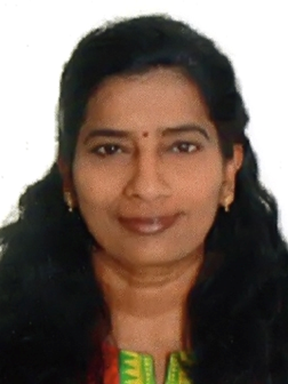
Dr. Bhuvaneswari Arunachalan is currently working as an Assistant professor in Department of Computer Applications, PSG College of Technology, Coimbatore, India. She is also a co-founder of Dotty Emergency Assistive care Inc, Canada and India, an organization that provides solutions to emergency/critical care unit of hospitals and ambulatory service units. She completed her postdoctoral research in the Visual Analytics Lab, OCAD University, Toronto, Canada and her PhD in Computer Science at University of New Brunswick, Canada. Her research is mainly focused on mobile technology, analytical algorithms, natural user interface design, multimodal interactions, and interactive visualizations. Her research contribution includes a mobile middleware for handheld devices that provides access to electronic patient records for Emergency Medical Services. In 2005 and 2008, she has been a delegate in ICT Going Global Team that visited India and France. She has developed and conducted several graduate and undergraduate courses, and supervised more than 10 graduate thesis and undergraduate projects. She has more than 35 publications in peer reviewed journals, conferences, and seminars, delivered several invited talks and workshops.
Timothy K. Asiedu, PhD is the Founder of TIM Technology Services Ltd, Ghana. He is an author and has a few books on Information / Cyber Security and E-Business to his credit. A chapter of Part Two of his book on Information Security focuses on Wireless Communication. His page is at: www.amazon.com/author/timothy.asiedu.
His career in IT spans over 25 years when he first took up a Supervisory role for a new IT system with Ghacem Ltd – Ghana. This is after obtaining his Bsc. (Hons) degree in Computer Science and Statistics from University of Ghana. Later, he had an opportunity to work with organizations like Alfa Laval Separation, A/S, Denmark; Consortium (CIHSD) as System Analyst; Clydestone Ghana Ltd and then DHL Ghana Ltd as Systems Administrator and Information Security Coordinator. In 2001, he founded TIM Technology Services Ltd.,Ghana and has been running the organization till today.
In 2008, he lectured in IT for the Business School of Maranatha University College, Sowutuom, Accra, Ghana. Timothy obtained a PhD with IPSI Belgrade, Ltd, Serbia – EU in Networking / Internet (e-Commerce, e-Business, e-Education, ......), from 2003-2008. He obtained his MBA with Akamai University, Hawaii, USA. He has had presentations in the area of Information Security, Networking and Internet related areas in USA, Italy and Germany for his research studies. He has also been involved in the activities of ISOC and IGF, UN.
Timothy is a member of IEEE and continues to research in the area of Future Networks.
 Robert (Rob) Bartholet is the supervisor of the Johns Hopkins University Applied Physics Laboratory’s (APL) Communications Systems Branch, which focuses on transforming the communications capabilities of APL's government sponsors to provide a decisive advantage in their critical missions. Bartholet joined APL as a communications systems engineer, serving in roles ranging from technical contributor, project manager, and organizational leader. Prior to joining the Laboratory, Bartholet completed 28 years of active duty in the U.S. Army, with three successful commands of field artillery units. He spearheaded the Army's efforts to build battlefield digital communications networks for tactical ground and air maneuver units, served as an assistant professor at the U.S. Military Academy at West Point, and is a plank owner of the Defense Information Systems Agency Command Center. Bartholet has a B.S. in electrical engineering from the U.S. Military Academy, an M.S. in computer science from the University of Virginia and an M.S. in strategic studies from the U.S. Army War College.
Robert (Rob) Bartholet is the supervisor of the Johns Hopkins University Applied Physics Laboratory’s (APL) Communications Systems Branch, which focuses on transforming the communications capabilities of APL's government sponsors to provide a decisive advantage in their critical missions. Bartholet joined APL as a communications systems engineer, serving in roles ranging from technical contributor, project manager, and organizational leader. Prior to joining the Laboratory, Bartholet completed 28 years of active duty in the U.S. Army, with three successful commands of field artillery units. He spearheaded the Army's efforts to build battlefield digital communications networks for tactical ground and air maneuver units, served as an assistant professor at the U.S. Military Academy at West Point, and is a plank owner of the Defense Information Systems Agency Command Center. Bartholet has a B.S. in electrical engineering from the U.S. Military Academy, an M.S. in computer science from the University of Virginia and an M.S. in strategic studies from the U.S. Army War College.
 J. Gordon Beattie, Jr. is a Senior Principal Research Scientist/Engineer in the Chief Technology Office of VIAVI where he drives technology innovation across business units with focus on 5G, 6G and related communications technologies. He is a former Member of Technical Staff/Principal Technical Architect at AT&T Bell Labs/AT&T Labs where focused on service assurance systems and protocols. He has authored, or contributed to 137 granted U.S. Patents, and was granted AT&T’s Social Innovator Award for his leadership in inspiring colleagues to get involved in the work of Intellectual Property creation and protection. Gordon is a trained volunteer Communications Team Leader/Technician with the Passaic County, New Jersey Sheriff’s Department and an active licensed Amateur Radio Operator (W2TTT) since 1975. Gordon also contributed to the IEEE’s P1897 workgroup on Power Line Noise and serves as a member of the American Radio Relay League’s Electro-Magnetic Compatibility Committee.
J. Gordon Beattie, Jr. is a Senior Principal Research Scientist/Engineer in the Chief Technology Office of VIAVI where he drives technology innovation across business units with focus on 5G, 6G and related communications technologies. He is a former Member of Technical Staff/Principal Technical Architect at AT&T Bell Labs/AT&T Labs where focused on service assurance systems and protocols. He has authored, or contributed to 137 granted U.S. Patents, and was granted AT&T’s Social Innovator Award for his leadership in inspiring colleagues to get involved in the work of Intellectual Property creation and protection. Gordon is a trained volunteer Communications Team Leader/Technician with the Passaic County, New Jersey Sheriff’s Department and an active licensed Amateur Radio Operator (W2TTT) since 1975. Gordon also contributed to the IEEE’s P1897 workgroup on Power Line Noise and serves as a member of the American Radio Relay League’s Electro-Magnetic Compatibility Committee.
 Russell Becker serves as the Director, Office for Interoperability and Compatibility. He is also the acting Deputy, Innovative Systems Branch of DHS S&T’s Technology Centers Division which focuses on intelligent sensors and autonomous systems; resilient communications equipment, data, and networks; and enhanced biometrics and identity capabilities to enhance knowledge, advance state of the art, inform investments and drive actions in national threats, hazards, and risks. Prior to his role in DHS S&T, Russell served 21 years as an active duty US Marine Corps officer. For the first 5 years, Russell served as an Infantry Officer. He then served the remaining 16 years as a Communications Officer in several operational positions with a three-year stint as an Acquisitions Project Officer for narrow and wideband radio systems. Russell deployed once as an infantry platoon commander and once as Small Unit Weapons and Tactics Subject Matter Expert conducting Anti-terrorism and Force Protection assessments with the Joint Security Directorate Forward, US Central Command. As a Captain, Russell completed four combat deployments to Iraq. In his final tour as a Lieutenant Colonel, Russell led in two different billets within US European Command. He first led the Theater Satellite Communication, Nuclear Command, Control and Computers, Theater Frequency Spectrum and Communications Security offices as the Branch Chief, C4 Support Operations Division, Joint Command, Control, Communications, Computers (C4)/Cyber Directorate. For the final two and a half years, Russell moved to the Interoperability, Cyber Engagements & Exercises Division/ J67 and served as the US Senior exercise planner for NATO interoperability exercises Steadfast Cobalt 2017 and 2018 and US lead C4/Cyber planner for Exercise Trident Juncture 2018. Russell holds a Master of Science in Electrical Engineering from the Naval Postgraduate School, Monterey, CA.
Russell Becker serves as the Director, Office for Interoperability and Compatibility. He is also the acting Deputy, Innovative Systems Branch of DHS S&T’s Technology Centers Division which focuses on intelligent sensors and autonomous systems; resilient communications equipment, data, and networks; and enhanced biometrics and identity capabilities to enhance knowledge, advance state of the art, inform investments and drive actions in national threats, hazards, and risks. Prior to his role in DHS S&T, Russell served 21 years as an active duty US Marine Corps officer. For the first 5 years, Russell served as an Infantry Officer. He then served the remaining 16 years as a Communications Officer in several operational positions with a three-year stint as an Acquisitions Project Officer for narrow and wideband radio systems. Russell deployed once as an infantry platoon commander and once as Small Unit Weapons and Tactics Subject Matter Expert conducting Anti-terrorism and Force Protection assessments with the Joint Security Directorate Forward, US Central Command. As a Captain, Russell completed four combat deployments to Iraq. In his final tour as a Lieutenant Colonel, Russell led in two different billets within US European Command. He first led the Theater Satellite Communication, Nuclear Command, Control and Computers, Theater Frequency Spectrum and Communications Security offices as the Branch Chief, C4 Support Operations Division, Joint Command, Control, Communications, Computers (C4)/Cyber Directorate. For the final two and a half years, Russell moved to the Interoperability, Cyber Engagements & Exercises Division/ J67 and served as the US Senior exercise planner for NATO interoperability exercises Steadfast Cobalt 2017 and 2018 and US lead C4/Cyber planner for Exercise Trident Juncture 2018. Russell holds a Master of Science in Electrical Engineering from the Naval Postgraduate School, Monterey, CA.
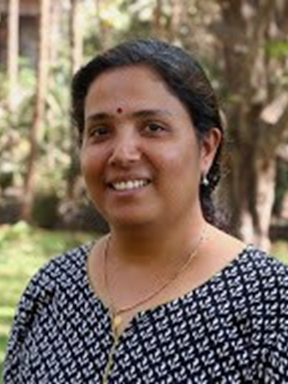 Dr. Sarbani Banerjee Belur, is currently the Asia Regional Coordinator for Association for Progressive Communications (APC) for the Community Networks Connecting the Unconnected project. She is also the Senior Research Scientist hosted by Spoken Tutorial project at the Indian Institute of Technology Bombay, Mumbai, India. She has been working in the domain of rural connectivity for the past 6 years and have been associated with the Gram Marg project in the Department of Electrical Engineering, IIT Bombay. Her current work involves increasing digital outreach to remote and rural areas of India, deployment of new technology alternatives for the middle and last mile internet connectivity, development of a sustainable models supporting Public - Private - Panchayat - Partnership (4-P model), seeding the growth of community networks, gender and access, developing community technologies and impact assessment studies of connectivity in the lives of people. The impact studies that she focuses on are based on gender, social and economic impacts of connectivity.
Dr. Sarbani Banerjee Belur, is currently the Asia Regional Coordinator for Association for Progressive Communications (APC) for the Community Networks Connecting the Unconnected project. She is also the Senior Research Scientist hosted by Spoken Tutorial project at the Indian Institute of Technology Bombay, Mumbai, India. She has been working in the domain of rural connectivity for the past 6 years and have been associated with the Gram Marg project in the Department of Electrical Engineering, IIT Bombay. Her current work involves increasing digital outreach to remote and rural areas of India, deployment of new technology alternatives for the middle and last mile internet connectivity, development of a sustainable models supporting Public - Private - Panchayat - Partnership (4-P model), seeding the growth of community networks, gender and access, developing community technologies and impact assessment studies of connectivity in the lives of people. The impact studies that she focuses on are based on gender, social and economic impacts of connectivity.
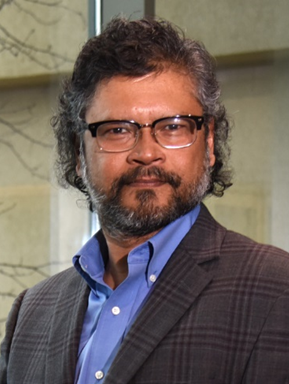 Dr. Arupjyoti (Arup) Bhuyan is a wireless researcher in the Idaho National Laboratory (INL) and the Technical Director of the INL Wireless Security Institute. The focus of his research is on secure implementation of future generations of wireless communications with scientific exploration and engineering innovations across the fields of wireless technology, cybersecurity, and computational science. Specific goals are to lead and focus wireless security research efforts for 5G and Beyond with national impact, to secure communications for a nationwide unmanned aerial system and for 5G spectrum sharing with distributed scheduling. Arup has extensive industry experience in wireless communications from his work before he joined INL in October, 2015. He received his Ph.D. in Engineering and Applied Sciences from Yale University. He is a senior member of IEEE.
Dr. Arupjyoti (Arup) Bhuyan is a wireless researcher in the Idaho National Laboratory (INL) and the Technical Director of the INL Wireless Security Institute. The focus of his research is on secure implementation of future generations of wireless communications with scientific exploration and engineering innovations across the fields of wireless technology, cybersecurity, and computational science. Specific goals are to lead and focus wireless security research efforts for 5G and Beyond with national impact, to secure communications for a nationwide unmanned aerial system and for 5G spectrum sharing with distributed scheduling. Arup has extensive industry experience in wireless communications from his work before he joined INL in October, 2015. He received his Ph.D. in Engineering and Applied Sciences from Yale University. He is a senior member of IEEE.
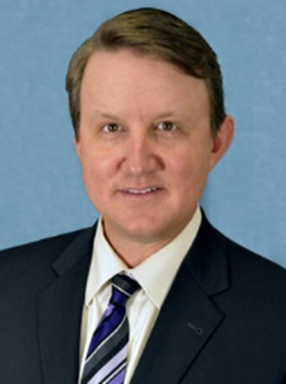
Mr. Jeffrey Bratcher is the Chief Network and Technology Officer of the FirstNet Authority. Mr. Bratcher is a key leader involved with the shaping of the technology for the Nationwide Public Safety Broadband Network (NPSBN). He led the formation of the FirstNet Authority technology teams as well as the state-of-the-art Innovation and Technology lab located at the FirstNet Authority office in Boulder, Colorado. Building upon his success as the Chief Technology Officer, Mr. Bratcher was also appointed to lead the network team overseeing the implementation of the nationwide FirstNet broadband network built with AT&T. Mr. Bratcher began his federal service in 2003 with the National Telecommunications and Information Administration (NTIA) Institute for Telecommunication Sciences (ITS) also located in Boulder, Colorado. Prior to joining federal service, he worked for ten years within the wireless private sector deploying several of the first digital cellular systems in U.S. and international markets. Mr. Bratcher received his BS in Electrical Engineering from Texas Tech University and his MS in Telecommunications from Southern Methodist University.
 Arsenia (Ersi) Chorti is a Professor at the École Nationale Supérieure de l'Électronique et de ses Applications (ENSEA), Head of the Information, Communications and Imaging (ICI) Group of the ETIS Lab UMR 8051 and a Visiting Scholar at Princeton and Essex Universities. Her research spans the areas of wireless communications and wireless systems security for 5G / 6G, with a particular focus on physical layer security. She is a Senior IEEE Member, member of the IEEE INGR on Security and of the IEEE P1951.1 standardization workgroup (Smart Cities) and Chair of the IEEE Focus Group on Physical Layer Security.
Arsenia (Ersi) Chorti is a Professor at the École Nationale Supérieure de l'Électronique et de ses Applications (ENSEA), Head of the Information, Communications and Imaging (ICI) Group of the ETIS Lab UMR 8051 and a Visiting Scholar at Princeton and Essex Universities. Her research spans the areas of wireless communications and wireless systems security for 5G / 6G, with a particular focus on physical layer security. She is a Senior IEEE Member, member of the IEEE INGR on Security and of the IEEE P1951.1 standardization workgroup (Smart Cities) and Chair of the IEEE Focus Group on Physical Layer Security.
 Charles Clancy is senior vice president, general manager of MITRE Labs, and chief futurist. He is responsible for sparking innovative disruption, accelerating risk-taking and discovery, and delivering real-time technology capabilities and execution through the company’s laboratories, solution platforms, and MITRE Fellows program. He leads technical innovation to anticipate and meet the future demands of government sponsors and industry and academic partners.
Charles Clancy is senior vice president, general manager of MITRE Labs, and chief futurist. He is responsible for sparking innovative disruption, accelerating risk-taking and discovery, and delivering real-time technology capabilities and execution through the company’s laboratories, solution platforms, and MITRE Fellows program. He leads technical innovation to anticipate and meet the future demands of government sponsors and industry and academic partners.
Clancy is an internationally recognized expert on topics at the intersection of wireless, cybersecurity, and artificial intelligence. Before joining MITRE in 2019 as vice president for intelligence programs, Clancy served as the Bradley Professor of Cybersecurity at Virginia Tech, and executive director at the Hume Center for National Security and Technology. There, he led Virginia Tech’s research and experiential learning programs in defense and intelligence.
Clancy started his career at the National Security Agency, filling a variety of research, engineering, and operations roles, with a focus on wireless communications. He has co-authored more than 250 patents and academic publications, as well as six books. He co- founded several venture-backed security startup companies that apply commercial innovation to national security challenges.
He serves as a member of the AFCEA Board of Directors’ Executive Committee, the AFCEA Intelligence Committee, the Intelligence and National Security Alliance Advisory Committee, the Systems Engineering Research Center Advisory Board, the Alliance for Telecommunications Industry Solutions NextG Alliance, the Center for New American Security Task Force on Artificial Intelligence and National Security, and the International Advisory Panel for Singapore Manufacturing, Trade, and Connectivity. He also serves on advisory boards at Howard University, Norfolk State University, North Carolina A&T State University, and Virginia Tech.
Clancy holds a bachelor’s degree in computer engineering from the Rose-Hulman Institute of Technology, a master’s degree in electrical engineering from the University of Illinois at Urbana- Champaign, and a doctorate in computer science from the University of Maryland, College Park.
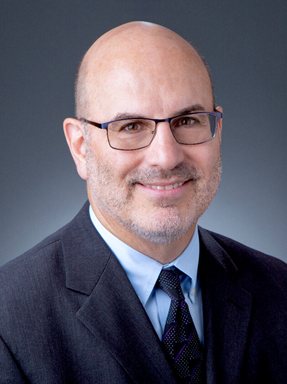 John Contestabile – Mr. Contestabile enjoyed a 30-year career in Maryland state government holding a variety of positions including Deputy Homeland Security Advisor, Statewide Public Safety Interoperable Communications Director, and retired as Acting Assistant Secretary of the Maryland Department of Transportation. In his career at MDOT, he was responsible for the engineering/procurement/emergency management and homeland security functions. After leaving Maryland State government, he joined the Johns Hopkins University Applied Physics Lab as Program Manager of their Emergency Communications Program. In that capacity, he executed projects with various federal sponsors to include the Department of Homeland Security Science and Technology Directorate, the Cyber Infrastructure Security Administration, the Federal Emergency Management Agency, and FirstNet. After 10 years at JHU/APL, he left to join Skyline Technology Solutions, where he is presently Director of Public Safety Solutions. An engineer by training, he has executed projects related to Geographic Information Systems, Land Mobile Radio, Computer Aided Dispatch, Television Datacasting, Video interoperability and 5G. He has worked with numerous public safety entities ranging from police departments [Houston, NYC, Chicago, Adams Co. IN., Grant Co. WA.], emergency management agencies, fusion centers, and Public Safety Answering Points [PSAP]. He is the author of numerous public safety communications articles, the most recent of which was in support of JHU/APL preparing the DHS CISA “Information Sharing Framework” report published in the fall of 2021.
John Contestabile – Mr. Contestabile enjoyed a 30-year career in Maryland state government holding a variety of positions including Deputy Homeland Security Advisor, Statewide Public Safety Interoperable Communications Director, and retired as Acting Assistant Secretary of the Maryland Department of Transportation. In his career at MDOT, he was responsible for the engineering/procurement/emergency management and homeland security functions. After leaving Maryland State government, he joined the Johns Hopkins University Applied Physics Lab as Program Manager of their Emergency Communications Program. In that capacity, he executed projects with various federal sponsors to include the Department of Homeland Security Science and Technology Directorate, the Cyber Infrastructure Security Administration, the Federal Emergency Management Agency, and FirstNet. After 10 years at JHU/APL, he left to join Skyline Technology Solutions, where he is presently Director of Public Safety Solutions. An engineer by training, he has executed projects related to Geographic Information Systems, Land Mobile Radio, Computer Aided Dispatch, Television Datacasting, Video interoperability and 5G. He has worked with numerous public safety entities ranging from police departments [Houston, NYC, Chicago, Adams Co. IN., Grant Co. WA.], emergency management agencies, fusion centers, and Public Safety Answering Points [PSAP]. He is the author of numerous public safety communications articles, the most recent of which was in support of JHU/APL preparing the DHS CISA “Information Sharing Framework” report published in the fall of 2021.
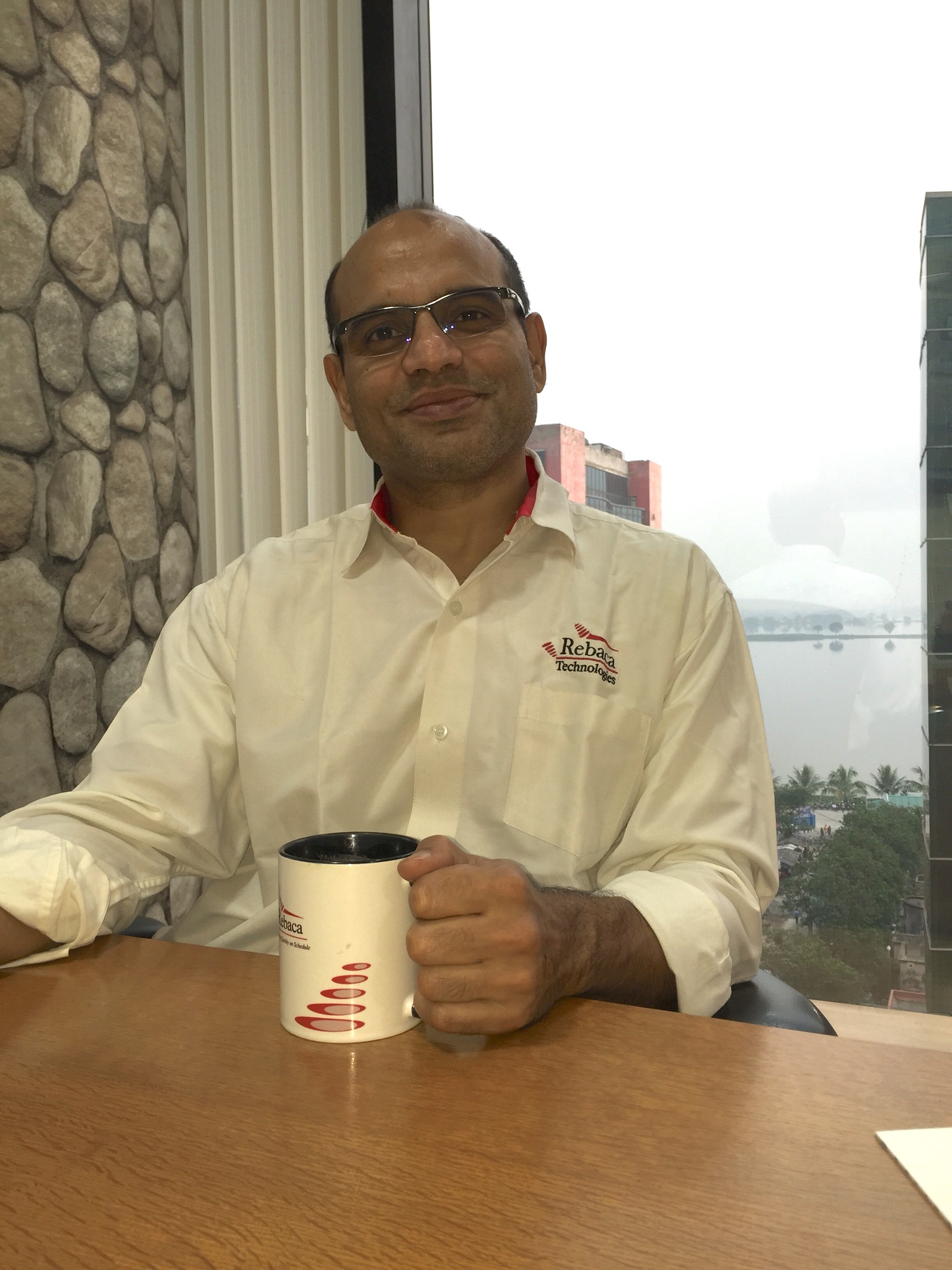 Samir K. Chatterjee is 30 years veteran in the field of Software and Telecommunication. He started his career in the research and development group of NYNEX R&D Labs, an extension of Bellcore. Samir is the founder & CEO of Rebaca technologies (rebaca.com), a niche software development company focused on developing solutions and products on Mobile Network technology (4G & 5G), Video Delivery solutions for DTV & OTT, Analytics and Test Automation. The companies product ABot facilitates 4G & 5G end-to-end system tests. At Rebaca, he has successfully developed various network test automation solutions for Operators and OEMs for decades. He is well aware of the requirements and the challenges of this domain. His exposure and knowledge in this domain are vast and well respected. Samir is involved in several standards bodies and Opensource initiatives like LFN, TIP Magma, Akraino Edge, etc. Rebaca has been an active contributor to these organizations for several years.
Samir K. Chatterjee is 30 years veteran in the field of Software and Telecommunication. He started his career in the research and development group of NYNEX R&D Labs, an extension of Bellcore. Samir is the founder & CEO of Rebaca technologies (rebaca.com), a niche software development company focused on developing solutions and products on Mobile Network technology (4G & 5G), Video Delivery solutions for DTV & OTT, Analytics and Test Automation. The companies product ABot facilitates 4G & 5G end-to-end system tests. At Rebaca, he has successfully developed various network test automation solutions for Operators and OEMs for decades. He is well aware of the requirements and the challenges of this domain. His exposure and knowledge in this domain are vast and well respected. Samir is involved in several standards bodies and Opensource initiatives like LFN, TIP Magma, Akraino Edge, etc. Rebaca has been an active contributor to these organizations for several years.
 Periklis Chatzimisios serves as Professor in the Department of Information and Electronic Engineering of the International Hellenic University (Greece). He has been recently awarded the title of Researcher Professor by the Department of Electrical and Computer Engineering of the University of New Mexico (USA). He is also a Visiting Fellow in the Faculty of Science & Technology, at Bournemouth University (UK). Dr. Chatzimisios is/has been involved in several standardization and IEEE activities serving as a Member of IEEE ComSoc Education Services Board, Member of the IEEE ComSoc Standards Program Development Board and Industry Outreach Board under the IEEE Communication Society (ComSoc). He is the Chair of the Communications Chapter and Professional Activities for the IEEE Greece Section and also serves as the Chair of ComSoc Technical Committee on Information Infrastructure and Networking (TCIIN), the Vice Chair of ComSoc Technical Committee on Big Data (TCBD) and an active member of the IEEE Future Networks (5G) Initiative.
Periklis Chatzimisios serves as Professor in the Department of Information and Electronic Engineering of the International Hellenic University (Greece). He has been recently awarded the title of Researcher Professor by the Department of Electrical and Computer Engineering of the University of New Mexico (USA). He is also a Visiting Fellow in the Faculty of Science & Technology, at Bournemouth University (UK). Dr. Chatzimisios is/has been involved in several standardization and IEEE activities serving as a Member of IEEE ComSoc Education Services Board, Member of the IEEE ComSoc Standards Program Development Board and Industry Outreach Board under the IEEE Communication Society (ComSoc). He is the Chair of the Communications Chapter and Professional Activities for the IEEE Greece Section and also serves as the Chair of ComSoc Technical Committee on Information Infrastructure and Networking (TCIIN), the Vice Chair of ComSoc Technical Committee on Big Data (TCBD) and an active member of the IEEE Future Networks (5G) Initiative.
 Jyh-Cheng Chen (Fellow, IEEE) received the Ph.D. degree from the State University of New York at Buffalo in 1998. He was a Research Scientist with Bellcore/Telcordia Technologies, Morristown, NJ, USA, from 1998 to 2001, and a Senior Scientist with Telcordia Technologies, Piscataway, NJ, USA, from 2008 to 2010. He was with the Department of Computer Science, National Tsing Hua University (NTHU), Hsinchu, Taiwan, as an Assistant Professor, an Associate Professor, and a Full Professor from 2001 to 2008. He has been a Faculty Member with National Yang Ming Chiao Tung University (NYCU), formerly National Chiao Tung University (NCTU), since 2010. He is currently the Chair Professor with the Department of Computer Science, and the Dean of the College of Computer Science, NYCU.
Jyh-Cheng Chen (Fellow, IEEE) received the Ph.D. degree from the State University of New York at Buffalo in 1998. He was a Research Scientist with Bellcore/Telcordia Technologies, Morristown, NJ, USA, from 1998 to 2001, and a Senior Scientist with Telcordia Technologies, Piscataway, NJ, USA, from 2008 to 2010. He was with the Department of Computer Science, National Tsing Hua University (NTHU), Hsinchu, Taiwan, as an Assistant Professor, an Associate Professor, and a Full Professor from 2001 to 2008. He has been a Faculty Member with National Yang Ming Chiao Tung University (NYCU), formerly National Chiao Tung University (NCTU), since 2010. He is currently the Chair Professor with the Department of Computer Science, and the Dean of the College of Computer Science, NYCU.
Dr. Chen is a Distinguished Member of the Association for Computing Machinery (ACM). He was a member of the Fellows Evaluation Committee, IEEE Computer Society. He has received numerous awards, including the Outstanding Teaching Award from both NCTU and NTHU, the Outstanding I.T. Elite Award, Taiwan, the Mentor of Merit Award from NCTU, the Medal of Honor and the K. T. Li Breakthrough Award from the Institute of Information and Computing Machinery, the Outstanding Engineering Professor Award from the Chinese Institute of Engineers, the Outstanding Research Award from the Ministry of Science and Technology, the Best Paper Award for Young Scholars from the IEEE Communications Society Taipei and Tainan Chapters, and the IEEE Information Theory Society Taipei Chapter, and the Telcordia CEO Award.
 Paul Corwin has an MS in Computer Science from California Polytechnic State University in San Luis Obispo, California. Paul’s professional experience spans embedded communication and sensor systems engineering and mobile application development.
Paul Corwin has an MS in Computer Science from California Polytechnic State University in San Luis Obispo, California. Paul’s professional experience spans embedded communication and sensor systems engineering and mobile application development.
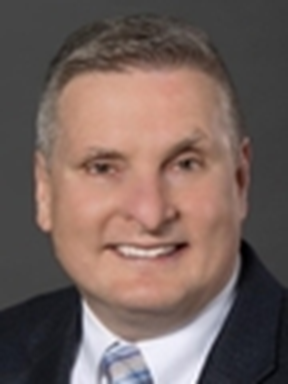 Brian Daly: As Assistant Vice President for Standards & Industry Alliances for AT&T, Brian oversees AT&T’s strategy and leadership in global industry standards. Brian is a technology visionary and thought leader with knowledge of the global standards industry landscape/leadership. Brian has a broad technology perspective including 5 to 10-year trends, with focus on emerging technologies for 5G and beyond including public safety/mission critical services for FirstNet; earthquake early warning and wireless emergency alerts; C-V2X and UAS/UAVs; cybersecurity, NSEP, and critical infrastructure protection. Brian is engaged in programs with the DHS, DISA, and DoD, and is a leading contributor to the Alliance for Telecommunication Industry Solutions (ATIS) Board, TOPS Council and Standards Committee initiatives, resulting in the implementation of key industry standards. Brian is on the Executive Committee of the National Spectrum Consortium and holds appointments to the FCC’s Technological Advisory Council (TAC) and Communications Reliability, Security, and Interoperability Council (CSRIC). Brian also is a member of the FBI’s Infragard partnership. Brian holds Board positions on the National Public Safety Communications Council (NPSTC) and the IEEE International Standards and Technology Organization (IEEE-ISTO). Brian’s industry leadership roles include Co-chair of the Next G Alliance Steering Group, co-chair of the O-Ran Alliance Standards Development Focus Group, Chair of the GSM Association’s North American Fraud Forum and Security Group, and former co-chair of the ANSI Unmanned Aircraft Systems Standardization Collaborative Critical Infrastructure & Environment working group.
Brian Daly: As Assistant Vice President for Standards & Industry Alliances for AT&T, Brian oversees AT&T’s strategy and leadership in global industry standards. Brian is a technology visionary and thought leader with knowledge of the global standards industry landscape/leadership. Brian has a broad technology perspective including 5 to 10-year trends, with focus on emerging technologies for 5G and beyond including public safety/mission critical services for FirstNet; earthquake early warning and wireless emergency alerts; C-V2X and UAS/UAVs; cybersecurity, NSEP, and critical infrastructure protection. Brian is engaged in programs with the DHS, DISA, and DoD, and is a leading contributor to the Alliance for Telecommunication Industry Solutions (ATIS) Board, TOPS Council and Standards Committee initiatives, resulting in the implementation of key industry standards. Brian is on the Executive Committee of the National Spectrum Consortium and holds appointments to the FCC’s Technological Advisory Council (TAC) and Communications Reliability, Security, and Interoperability Council (CSRIC). Brian also is a member of the FBI’s Infragard partnership. Brian holds Board positions on the National Public Safety Communications Council (NPSTC) and the IEEE International Standards and Technology Organization (IEEE-ISTO). Brian’s industry leadership roles include Co-chair of the Next G Alliance Steering Group, co-chair of the O-Ran Alliance Standards Development Focus Group, Chair of the GSM Association’s North American Fraud Forum and Security Group, and former co-chair of the ANSI Unmanned Aircraft Systems Standardization Collaborative Critical Infrastructure & Environment working group.
Brian received the B.S.E and M.S. degrees in electrical engineering from Arizona State University with a focus on communication systems and advanced electromagnetic engineering. Brian is the AT&T coordinator for the Department of Homeland Security SHAred RESources (SHARES) High Frequency (HF) Radio Program. Brian received the ATIS President’s Award and the ANSI Meritorious Service Award in recognition of his career creating standards across the communications spectrum including 3GPP, and the NG911 Institute Industry/Private Sector Award for his leadership in emergency communications. Brian holds over 180 issued patents in telecommunications, public safety, and cybersecurity.
Dr. Subir Das is a Chief Scientist at Peraton Labs, Basking Ridge, New Jersey, USA and has more than 25 years of research and development experience. His areas of interests are Mobile Wireless IP Networking (3G/4G/5G), Low power Personal Area Networking, WLAN and Edge Networking, Industrial Control System Security, and network and Internet of Things (IoT) security. Dr. Das is responsible for developing strategic programs, researching new technologies and transitioning such technologies. Dr. Das is also a leading contributor to various Standards (e.g., IEEE, IETF, 3GPP and ZigBee). He is currently leading the NS/EP priority access activities in IEEE 802.11 and in Wi-Fi Alliance. He is also an Executive Member of the IEEE 802 LAN/MAN Standards Committee and holds a leadership position in the ZigBee Alliance. Dr. Das contributes in developing protocols in IETF and held IETF leadership positions in the past. He was also actively involved in developing Cellular (3G/4G (LTE)) networking technologies in 3GPP. He has published nearly 100 papers, 5 IETF RFCs and has been granted 30 US patents. Dr. Das is a recipient of the 2009 IEEE Region I Award for outstanding contribution to Next Generation Wireless Networks, Protocols and its Standardization Efforts. He served as a review member in the National Science Foundation, USA, and the National Science and Engineering Council, Canada award review committees. Dr. Das is a frequent speaker and an organizer of Industry Panels in IEEE and other international conferences. He is a member of the IEEE and a reviewer of IEEE and ACM journals and technical magazines.

Rob Dew, serves as the Senior Technologist Advisor for Emergency Communications within the Cybersecurity and Infrastructure Security Agency (CISA) since July 2018. In this capacity, Rob provides overall technical advisement on design, development, testing, and deployment of priority and interoperability of Next Generation Network Priority Services (NGN-PS), Wireless Priority Service (WPS), Long Term Evolution (LTE) transition to 5G, secure data exchange and Internet-of-Things (loT) capabilities for emergency communications stakeholders. Previous to this assignment, he served as a Wireless Broadband Subject Matter Expert (SME) and Electronics Engineer in the Office of Emergency Communications (OEC) providing engineering and managerial leadership, governance and policy, consultation, and expertise to emergency communications for National Security and Emergency Preparedness (NS/EP) personnel and Public Safety first responders and stakeholders with guidance, research, development, test, and evaluation of wireline and wireless broadband networks.
Prior to joining the OEC in 2015, Rob spent over 20 years in private industry in technologist, technical director, project management, and senior engineering positions for Global 500 and Fortune 500 service providers and vendors, Federal agencies, and consulting firms such as DHS, AirTouch International, Sprint-Nextel, Ericsson, Telefonica, Qualcomm, LCC, Leidos, SAIC and Marconi. Rob managed and engineered from concept to design to operational capability projects worldwide in excess of $USD 5 billion servicing over 300 million subscribers while managing in excess of 2,000 staff comprised of directors, managers, engineers, and analysts in the United States, Europe, Latin America, the Middle East, and Asia.
Rob holds a B.S. in Electrical Engineering from Virginia Tech and a M.S. in Engineering Management from The George Washington University.
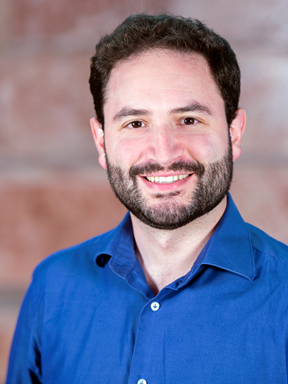 Nicola di Pietro received the B.S. degree in mathematics from the University of Padova, Italy, in 2008. In 2010, he received the M.S. degree in mathematics jointly from the University of Padova, Italy, and the University of Bordeaux, France, within the framework of the international ALGANT program. He received the Ph.D. degree in mathematics from the University of Bordeaux, France, in 2014.
Nicola di Pietro received the B.S. degree in mathematics from the University of Padova, Italy, in 2008. In 2010, he received the M.S. degree in mathematics jointly from the University of Padova, Italy, and the University of Bordeaux, France, within the framework of the international ALGANT program. He received the Ph.D. degree in mathematics from the University of Bordeaux, France, in 2014.
During the years of his doctoral studies, he was a Research Engineer with the European R&D Center of Mitsubishi Electric in Rennes, France. From 2014 to 2016, he was an Associate Post-Doctoral Fellow at Texas A&M University at Qatar. From 2017 to 2021, he was a Research Engineer with CEA LETI in Grenoble, France. He is now a System Engineer at Athonet, Italy.
He is the authors of several papers and patents, and his research interests span through 5G networks, edge computing, information theory, and lattice-based error-correcting codes.
George Elmasry has a Ph. D. in Electrical and Computer Engineering from The New Jersey Institute of Technology with extensive industry and academic experience. George is the winner of the Hashimoto Prize for achievement and academic excellence and is the sole author of two books entitled "Tactical Wireless Communications and Networks, Design Concepts and Challenges," and “Dynamic Spectrum Access Decisions: Local, Distributed, Centralized and Hybrid Design”.
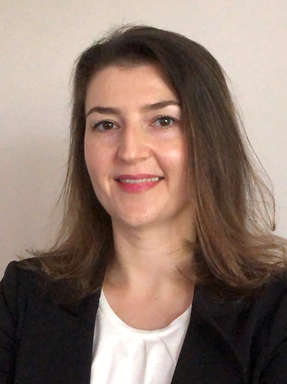 Dr. Tugba Erpek is a Lead Scientist at the Networks and Security Division at Intelligent Automation, a BlueHalo Company, where she is also the Network Communications Technical Area Lead. She is an Adjunct Research Professor at the Hume Center at Virginia Tech.She received her Ph.D. degree in Electrical Engineering from Virginia Tech. She has been developing machine/deep learning algorithms to improve the performance, situational awareness and security of wireless communications systems. Her R&D work covers wireless communications and networks, security, resource allocation, 5G and beyond communications, machine learning, and adversarial machine learning. She has published extensively in these areas. She has been serving as a TPC member and reviewer for major IEEE conferences and journals.
Dr. Tugba Erpek is a Lead Scientist at the Networks and Security Division at Intelligent Automation, a BlueHalo Company, where she is also the Network Communications Technical Area Lead. She is an Adjunct Research Professor at the Hume Center at Virginia Tech.She received her Ph.D. degree in Electrical Engineering from Virginia Tech. She has been developing machine/deep learning algorithms to improve the performance, situational awareness and security of wireless communications systems. Her R&D work covers wireless communications and networks, security, resource allocation, 5G and beyond communications, machine learning, and adversarial machine learning. She has published extensively in these areas. She has been serving as a TPC member and reviewer for major IEEE conferences and journals.
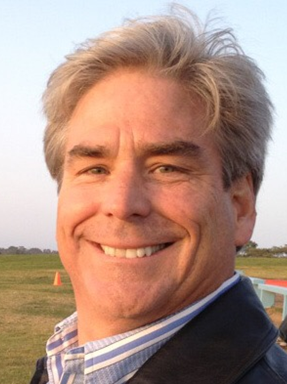 Mr. Scott Fox is the Lead Sr. Technical Advisor to the DoD OUSD(R&E) “5G & Beyond Initiative” at the Pentagon. In this role, Scott provides technical and strategic advice related to the DoD’s efforts to modernize our nation’s warfighting capabilities and enhance National Security, specifically leveraging and applying 5G’s (and beyond) advanced capabilities and solutions.
Mr. Scott Fox is the Lead Sr. Technical Advisor to the DoD OUSD(R&E) “5G & Beyond Initiative” at the Pentagon. In this role, Scott provides technical and strategic advice related to the DoD’s efforts to modernize our nation’s warfighting capabilities and enhance National Security, specifically leveraging and applying 5G’s (and beyond) advanced capabilities and solutions.
Having spent over 4 decades in key executive leadership positions across the wireless, telecommunications, and start-up worlds, Scott knows what it takes to build successful companies and deliver high quality complex solutions in environments of rapid change. A visionary and forward-thinking strategist, Scott has been the Chief Technology Officer (CTO) for BellSouth & Cingular, Chairman of the GSM Association (the global Industry Association of Commercial Wireless Operators from 220 countries of the world), Group President – WFII (Took public on the NASDAQ), Lead Consultant for FirstNet (NTIA), to name just a few, and has served as a Board Member for over 30+ public & private companies.
Scott also serves as the Director – Collaboration, Innovation, and Commercialization for SpectrumX, an NSF-funded “National Center for Spectrum Innovation” tasked with helping solve our nation’s most vexing spectrum-related challenges.
In his personal time, Scott is an Entrepreneur-in-Residence (EIR) at University of Colorado Boulder’s Venture Partners, enjoys living and playing in Boulder, CO, and is an active investor and mentor.
David Garbin has over 50 years of experience in the telecommunications and networking field, and joined Noblis in 1991. A major focus of his career has been on the design and economic analysis of large networks, both for carriers and their customers. He has a BS and an MS from the Massachusetts Institute of Technology.
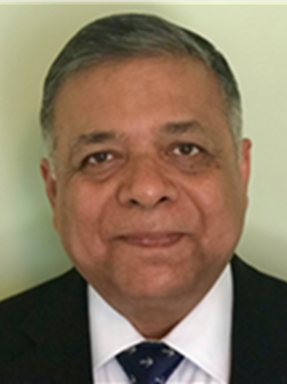 Amitabha (Amitava) Ghosh (F’15) is a Nokia Fellow and Head, Radio Interface Group at Nokia Bell Labs. He joined Motorola in 1990 after receiving his Ph.D in Electrical Engineering from Southern Methodist University, Dallas. Since joining Motorola he worked on multiple wireless technologies starting from IS-95, cdma-2000, 1xEV-DV/1XTREME, 1xEV-DO, UMTS, HSPA, 802.16e/WiMAX and 3GPP LTE. He has 60 issued patents, has written multiple book chapters and has authored numerous external and internal technical papers. He is currently working on 5G Evolution and 6G technologies. Recently, he was elected chair of the NextGA (an US 6G initiative) National Roadmap Working Group. His research interests are in the area of digital communications, signal processing and wireless communications. He is the recipient of 2016 IEEE Stephen O. Rice and 2017 Neal Shephard prize, member of IEEE Access editorial board and co-author of the book titled “Essentials of LTE and LTE-A”.
Amitabha (Amitava) Ghosh (F’15) is a Nokia Fellow and Head, Radio Interface Group at Nokia Bell Labs. He joined Motorola in 1990 after receiving his Ph.D in Electrical Engineering from Southern Methodist University, Dallas. Since joining Motorola he worked on multiple wireless technologies starting from IS-95, cdma-2000, 1xEV-DV/1XTREME, 1xEV-DO, UMTS, HSPA, 802.16e/WiMAX and 3GPP LTE. He has 60 issued patents, has written multiple book chapters and has authored numerous external and internal technical papers. He is currently working on 5G Evolution and 6G technologies. Recently, he was elected chair of the NextGA (an US 6G initiative) National Roadmap Working Group. His research interests are in the area of digital communications, signal processing and wireless communications. He is the recipient of 2016 IEEE Stephen O. Rice and 2017 Neal Shephard prize, member of IEEE Access editorial board and co-author of the book titled “Essentials of LTE and LTE-A”.
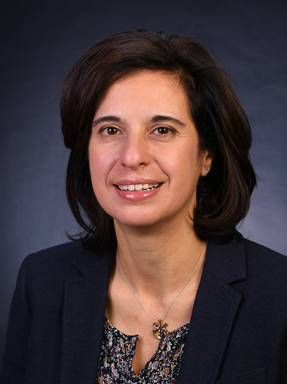
Nada Golmie received her Ph.D. in computer science from the University of Maryland at College Park. Since 1993, she has been a research engineer at the National Institute of Standards and Technology. She is a NIST Fellow and is currently the chief of the wireless networks division in the Communications Technology Laboratory. Her research in media access control and protocols for wireless networks led to over 100 technical papers presented at professional conferences, journals, and contributed to international standard organizations and industry led consortia. She is the author of “Coexistence in Wireless Networks: Challenges and System-level Solutions in the Unlicensed Bands," published by Cambridge University Press (2006). She leads several projects related to the modeling and evaluation of future generation wireless systems and protocols and serves as a co-chair for the Next5G Channel Model Alliance.
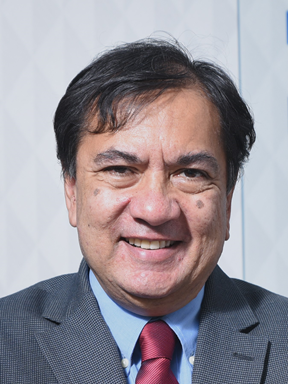 Dr. Inder Gopal is the CEO of IUDX Program and is also an Industry Professor at IISc. He was previously Vice President of Software at Ericsson, where he was instrumental in launching their Edge computing efforts. Before that, he was Vice President of Networking at IBM, where he had responsibility for all of IBM’s hardware and software networking products. He has also served as Chief Architect of AT&T and Chief Technology Officer of Prodigy.
Dr. Inder Gopal is the CEO of IUDX Program and is also an Industry Professor at IISc. He was previously Vice President of Software at Ericsson, where he was instrumental in launching their Edge computing efforts. Before that, he was Vice President of Networking at IBM, where he had responsibility for all of IBM’s hardware and software networking products. He has also served as Chief Architect of AT&T and Chief Technology Officer of Prodigy.
He has founded, built-up, and successfully sold two venture-funded start-up companies, ReefEdge and Iptivia, and is an investor and board member in a few others. He served as the Founding Chairman of a leading open source networking software group, OpenDaylight, recruiting dozens of top-tier companies to participate.
Inder has also had a distinguished research career in the area of computer networks, with 20 patents and more than 70 technical publications to his credit. He worked at the IBM T.J. Watson Research Centre, earning two IBM Outstanding Innovation Awards. He has served as editor of several technical journals and was elected Fellow of the IEEE. He has a PhD from Columbia University, New York and a BA from Oxford University, England.
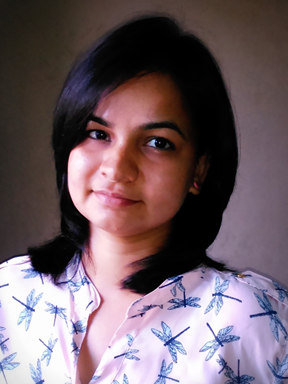 Sneihil Gopal received the B.Tech degree from Uttar Pradesh Technical University, the M.Tech (Gold medalist) degree from NIT, Kurukshetra, and the Ph.D. degree from IIIT-Delhi, all in Electronics and Communications Engineering in 2009, 2013 and 2021, respectively. She is presently working as a Post Doctoral Fellow at Georgetown University and Associate in the Wireless Networks Division in CTL at NIST, Gaithersburg. Her research interests are in the general area of communications and networking, including dynamic spectrum sharing, age of information, wireless network optimization, game theory, and internet economics.
Sneihil Gopal received the B.Tech degree from Uttar Pradesh Technical University, the M.Tech (Gold medalist) degree from NIT, Kurukshetra, and the Ph.D. degree from IIIT-Delhi, all in Electronics and Communications Engineering in 2009, 2013 and 2021, respectively. She is presently working as a Post Doctoral Fellow at Georgetown University and Associate in the Wireless Networks Division in CTL at NIST, Gaithersburg. Her research interests are in the general area of communications and networking, including dynamic spectrum sharing, age of information, wireless network optimization, game theory, and internet economics.
Steven Gordon has served as an engineer and technical manager with over 30 years of experience in the areas of telecommunications, cellular technologies, IP engineering, and modeling and simulation. A major focus has been the design, architecture, capacity planning, security and performance analyses of Internet Protocol (IP) carrier networks and 3G/4G/5G networks. He has a BS and an MS in Computer Engineering from Case Western Reserve University, and joined Noblis in 2004.
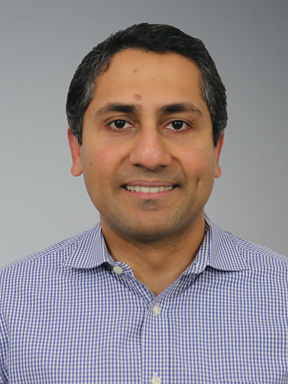
Abhimanyu (Manu) Gosain is a Technical Program Director for PAWR, Senior Director for Institute of Wireless Internet of Things at Northeastern University, Founding Director for OpenAirX-Labs and SETA for DoD OUSD Innovate Beyond5G Program (IB5G). He is in charge of setting strategic goals and the research agenda for a $100M public-private partnership for the NSF Platforms for Advanced Wireless Research (PAWR) program and $25M DARPA Colosseum program. He serves as a Board Member for the OpenAirInterface Software Alliance, Founding member for Magma Core Foundation, University representative for O-RAN Alliance, Telecom Infra Project, NextG Alliance and co-chair on organizing committee and program committees for 6GSymposium, EuCNC,IEEE InfoCom and ACM WinTech. His numerous professional publications and experience exemplify use-inspired basic research in the field of networking technologies such as LTE, 5G, AI/ML, edge computing and Internet of Things. He is an IEEE Senior Member. He received his M.S. degree from Tufts University and M.B.A. from Boston University with High Honors.
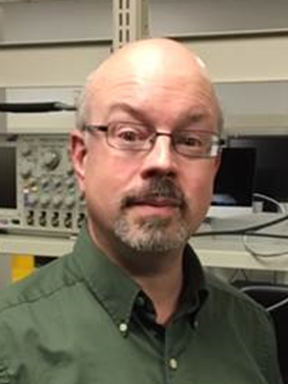 David Griffith is with the Wireless Networks Division in the Communications Technology Laboratory (CTL) at the National Institute of Standards and Technology (NIST). Prior to NIST, he was a senior engineer at Raytheon, where he performed modeling and simulation studies of satellite communications systems. He received the Ph.D. degree in electrical engineering from the University of Delaware in 1998. He has authored or co-authored nearly 100 publications, including two book chapters, on non-linear signal processing, satellite communications, optical communications, smart grid communications, public safety communications, and machine learning for communications in the Industrial Internet of Things (IIoT). His current work includes modeling wireless communication systems and measurement uncertainty in machine learning systems. His work includes communications for the smart grid and the Internet of Things (IoT), performance analysis and metrics for public safety communications, including analysis of coexistence with other radio access technologies, and resource allocation for 5G wireless networks using machine learning. He has been a Senior Member of the IEEE since 2004. He served as Co-Editor of the Standards Section of Optical Networks Magazine from 2000 to 2003 and was Technical Program Co-Chair of the Optical Networking Symposium of the Second Annual International Conference on Broadband Networks (BroadNets 2005). He is co-chairing the Workshop on Spectrum Sharing Technology for Next Generation Communications at the 2022 IEEE International Conference on Communications (ICC).
David Griffith is with the Wireless Networks Division in the Communications Technology Laboratory (CTL) at the National Institute of Standards and Technology (NIST). Prior to NIST, he was a senior engineer at Raytheon, where he performed modeling and simulation studies of satellite communications systems. He received the Ph.D. degree in electrical engineering from the University of Delaware in 1998. He has authored or co-authored nearly 100 publications, including two book chapters, on non-linear signal processing, satellite communications, optical communications, smart grid communications, public safety communications, and machine learning for communications in the Industrial Internet of Things (IIoT). His current work includes modeling wireless communication systems and measurement uncertainty in machine learning systems. His work includes communications for the smart grid and the Internet of Things (IoT), performance analysis and metrics for public safety communications, including analysis of coexistence with other radio access technologies, and resource allocation for 5G wireless networks using machine learning. He has been a Senior Member of the IEEE since 2004. He served as Co-Editor of the Standards Section of Optical Networks Magazine from 2000 to 2003 and was Technical Program Co-Chair of the Optical Networking Symposium of the Second Annual International Conference on Broadband Networks (BroadNets 2005). He is co-chairing the Workshop on Spectrum Sharing Technology for Next Generation Communications at the 2022 IEEE International Conference on Communications (ICC).
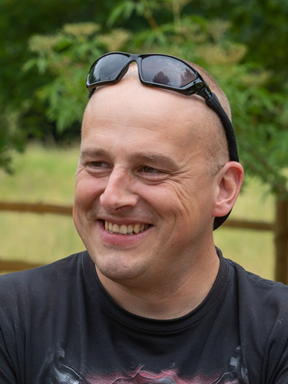 Maciej Gucma. I work as a Head of Department of Marine Navigation at Navigation Faculty Maritime University of Szczecin (MUS), Poland. I graduated MUS in 2003, while in 2006 in Warsaw University of Technology (WUT) I defended my PhD Thesis related to visualization on shipboard piloting electronic charts. In 2015 I become professor after habilitation on WUT. Im particularly interested in methods and models of support devices for shipping as well as high speed communication for different systems. As an engineer I work for several shipping companies from cadet to chief officer on sea going vessels.
Maciej Gucma. I work as a Head of Department of Marine Navigation at Navigation Faculty Maritime University of Szczecin (MUS), Poland. I graduated MUS in 2003, while in 2006 in Warsaw University of Technology (WUT) I defended my PhD Thesis related to visualization on shipboard piloting electronic charts. In 2015 I become professor after habilitation on WUT. Im particularly interested in methods and models of support devices for shipping as well as high speed communication for different systems. As an engineer I work for several shipping companies from cadet to chief officer on sea going vessels.

Dr. Ismail Guvenc (Fellow, IEEE) received his Ph.D. degree in electrical engineering from the University of South Florida in 2006. He was with Mitsubishi Electric Research Labs during 2005, with DOCOMO Innovations between 2006-2012, and with Florida International University between 2012-2016. He is a Professor at the Department of Electrical and Computer Engineering at North Carolina State University. His recent research interests include 5G wireless systems, communications and networking with drones, and heterogeneous wireless networks. He has published more than 200 conference/journal papers and book chapters, and several standardization contributions. He co-authored/co-edited three books for Cambridge University Press, served as an editor for IEEE Communications Letters (2010-2015), IEEE Wireless Communications Letters (2011-2016), IEEE Transactions on Wireless Communications (2016-present), and IEEE Transactions on Communications (2020-present), and as a guest editor for several other journals. Dr. Guvenc is an inventor/coinventor in some 30 U.S. patents and he is a senior member of the National Academy of Inventors. He is a recipient of the University Faculty Scholar Award (2021), NCSU ECE R. Ray Bennett Faculty Fellow Award (2019), FIU College of Engineering Faculty Research Award (2016), NSF CAREER Award (2015), Ralph E. Powe Junior Faculty Enhancement Award (2014), and USF Outstanding Dissertation Award (2006).
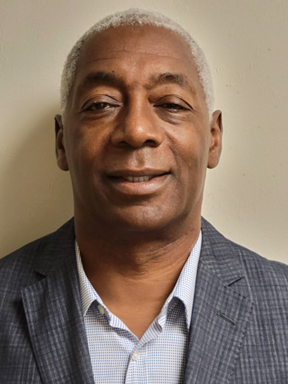
Dr. Clarence Huff has over 35 years experience in planning, research, management, engineering, and development of information technology systems. He has special interest in software engineering, distance learning, networking, knowledge engineering, data warehousing/mining, and advanced database management systems on which he continuously does special research. High level professional experience includes designing, developing, managing, implementing, installing, training, and testing software and hardware in the area of command, control, communications, and intelligence.
Dr. Muhammad Hussain has 14 years of experience in algorithm development, modeling, coding, ML, and statistical and mathematical analysis in electrical and computer engineering fields. He has extensively worked and contributed in wireless telecommunications standards and protocols and has worked directly in the radio network optimization department of a carrier. He has an MS and PhD in Electrical Engineering from the City College of New York, and joined Noblis in 2017.
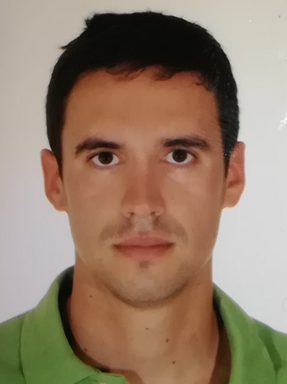 Christos Iliopoulos is an Οfficer of the Hellenic Air Force. He graduated as Εlectronics Εngineer and was further trained in the fields of aircraft avionics, telecommunications, radio and networks. He recently received his MSc degree from the School of Science and Technology in the field of Pervasive and Mobile Computing Systems at the Hellenic Open University, Greece. His MSc dissertation focused on the study of communication technologies for natural disasters and emergencies. Mr. Iliopoulos has contributed to the IEEE Public Safety Technologies Task Force (PSTTF) and in particular to the "White Paper on Gaps and Opportunities in Public Safety Technology".
Christos Iliopoulos is an Οfficer of the Hellenic Air Force. He graduated as Εlectronics Εngineer and was further trained in the fields of aircraft avionics, telecommunications, radio and networks. He recently received his MSc degree from the School of Science and Technology in the field of Pervasive and Mobile Computing Systems at the Hellenic Open University, Greece. His MSc dissertation focused on the study of communication technologies for natural disasters and emergencies. Mr. Iliopoulos has contributed to the IEEE Public Safety Technologies Task Force (PSTTF) and in particular to the "White Paper on Gaps and Opportunities in Public Safety Technology".
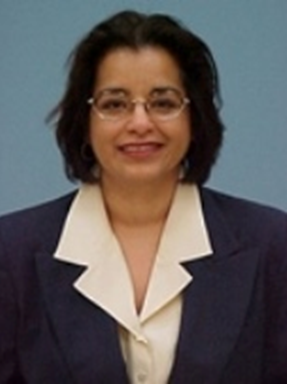 Navin Jaffer leads the systems engineering group in the Cybersecurity and Infrastructure Security Agency’s Emergency Communications Division. Since joining DHS in 2008, Ms. Jaffer has worked extensively with commercial communications service providers on Next Generation Networks Priority Services for national security events, emergency preparedness and public safety nationwide.
Navin Jaffer leads the systems engineering group in the Cybersecurity and Infrastructure Security Agency’s Emergency Communications Division. Since joining DHS in 2008, Ms. Jaffer has worked extensively with commercial communications service providers on Next Generation Networks Priority Services for national security events, emergency preparedness and public safety nationwide.
Overall, she has over 35 years of experience as a design engineer, holds two patents in the United States, and has broad program and project management experience. She holds an MS in Cybersecurity Systems and Operations from the Naval Post Graduate School, an MS in Electrical Engineering from North Carolina State University, an MBA from the University of Chicago and an SB in Mechanical Engineering from the Massachusetts Institute of Technology.
 Mike Jensen co-started Canada’s first non-profit internet service provider - The Web - in the mid 1980s, and helped found the Association for Progressive Communications (APC) in 1990. Mike is a nomadic South African who provides expertise in digital infrastructure technology and policy, having advised NGOs, governments and private companies on the deployment of internet infrastructure in over 45 countries in the last 30 years. In recognition of his contributions to the development of the Internet, he was inducted into the Internet Society's Internet Hall of Fame (IHOF) in 2017.
Mike Jensen co-started Canada’s first non-profit internet service provider - The Web - in the mid 1980s, and helped found the Association for Progressive Communications (APC) in 1990. Mike is a nomadic South African who provides expertise in digital infrastructure technology and policy, having advised NGOs, governments and private companies on the deployment of internet infrastructure in over 45 countries in the last 30 years. In recognition of his contributions to the development of the Internet, he was inducted into the Internet Society's Internet Hall of Fame (IHOF) in 2017.
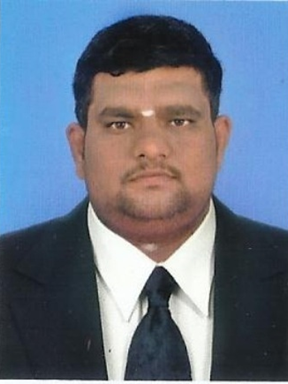 S. Kannadhasan is working as an Assistant Professor in the department of Electronics and Communication Engineering in Cheran College of Engineering, karur, Tamilnadu, India. He is currently doing research in the field of Smart Antenna for Anna University. He is ten years of teaching and research experience. He obtained his B.E in ECE from Sethu Institute of Technology, Kariapatti in 2009 and M.E in Communication Systems from Velammal College of Engineering and Technology, Madurai in 2013. He obtained his M.B.A in Human Resources Management from Tamilnadu Open University, Chennai. He obtained his PGVLSI in Post Graduate diploma in VLSI design from Annamalai University, Chidambaram in 2011 and PGDCA in Post Graduate diploma in Computer Applications from Tamil University in 2014. He obtained his PGDRD in Post Graduate diploma in Rural Development from Indira Gandhi National Open University in 2016. He has published around 18 papers in the reputed indexed international journals and more than 125 papers presented/published in national, international journal and conferences. Besides he has contributed a book chapter also. He also serves as a board member, reviewer, speaker, session chair, advisory and technical committee of various colleges and conferences. He is also to attend the various workshop, seminar, conferences, faculty development programme, STTP and Online courses. His areas of interest are Smart Antennas, Digital Signal Processing, Wireless Communication, Wireless Networks, Embedded System, Network Security, Optical Communication, Microwave Antennas, Electromagnetic Compatability and Interference, Wireless Sensor Networks, Digital Image Processing, Satellite Communication, Cognitive Radio Design and Soft Computing techniques. He is Member of IEEE, ISTE, IEI, IETE, CSI, IAENG, SEEE, IEAE, INSC, IARDO, ISRPM, IACSIT, ICSES, SPG, SDIWC, IJSPR and EAI Community
S. Kannadhasan is working as an Assistant Professor in the department of Electronics and Communication Engineering in Cheran College of Engineering, karur, Tamilnadu, India. He is currently doing research in the field of Smart Antenna for Anna University. He is ten years of teaching and research experience. He obtained his B.E in ECE from Sethu Institute of Technology, Kariapatti in 2009 and M.E in Communication Systems from Velammal College of Engineering and Technology, Madurai in 2013. He obtained his M.B.A in Human Resources Management from Tamilnadu Open University, Chennai. He obtained his PGVLSI in Post Graduate diploma in VLSI design from Annamalai University, Chidambaram in 2011 and PGDCA in Post Graduate diploma in Computer Applications from Tamil University in 2014. He obtained his PGDRD in Post Graduate diploma in Rural Development from Indira Gandhi National Open University in 2016. He has published around 18 papers in the reputed indexed international journals and more than 125 papers presented/published in national, international journal and conferences. Besides he has contributed a book chapter also. He also serves as a board member, reviewer, speaker, session chair, advisory and technical committee of various colleges and conferences. He is also to attend the various workshop, seminar, conferences, faculty development programme, STTP and Online courses. His areas of interest are Smart Antennas, Digital Signal Processing, Wireless Communication, Wireless Networks, Embedded System, Network Security, Optical Communication, Microwave Antennas, Electromagnetic Compatability and Interference, Wireless Sensor Networks, Digital Image Processing, Satellite Communication, Cognitive Radio Design and Soft Computing techniques. He is Member of IEEE, ISTE, IEI, IETE, CSI, IAENG, SEEE, IEAE, INSC, IARDO, ISRPM, IACSIT, ICSES, SPG, SDIWC, IJSPR and EAI Community
 Deepak Kataria is founder and CEO of IPJunction, an early stage startup focused on developing products and solutions for next generation content delivery networks. His other roles have included serving as director of systems solutions consulting for the Networking and Telecom practice at HCL America. As a noted industry expert, he is the holder of four U.S. patents in networking, with six others in pending status. His work has been published in numerous publications including trade magazines and journals, and presented at numerous industry conferences. Currently he serves as Industry Co-Chair for the IEEE ANTS and ICCBN conferences. He also serves on the Industrial Advisory Board for an NSF-funded project, NSF 0531507, at Texas A&M University on wireless sensor networks along with TI and Cypress Semiconductor. He holds a B.S. in electronics and communications engineering, and M.S. and Ph.D. degrees in electrical engineering from Rutgers University. Earlier in his career, he spent more than 17 years serving in various capacities as a network consultant, systems engineer, systems architect, systems applications manager, and systems integration manager during his tenure with AT&T Bell Labs, Lucent Technologies, Agere Systems, and LSI.
Deepak Kataria is founder and CEO of IPJunction, an early stage startup focused on developing products and solutions for next generation content delivery networks. His other roles have included serving as director of systems solutions consulting for the Networking and Telecom practice at HCL America. As a noted industry expert, he is the holder of four U.S. patents in networking, with six others in pending status. His work has been published in numerous publications including trade magazines and journals, and presented at numerous industry conferences. Currently he serves as Industry Co-Chair for the IEEE ANTS and ICCBN conferences. He also serves on the Industrial Advisory Board for an NSF-funded project, NSF 0531507, at Texas A&M University on wireless sensor networks along with TI and Cypress Semiconductor. He holds a B.S. in electronics and communications engineering, and M.S. and Ph.D. degrees in electrical engineering from Rutgers University. Earlier in his career, he spent more than 17 years serving in various capacities as a network consultant, systems engineer, systems architect, systems applications manager, and systems integration manager during his tenure with AT&T Bell Labs, Lucent Technologies, Agere Systems, and LSI.
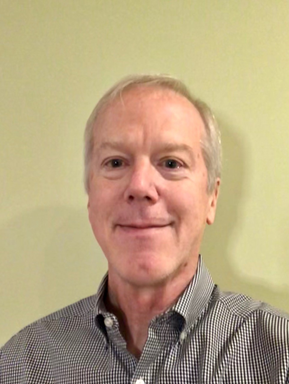 Kelly Krick is Director of Business Development for Mission Critical Networks in North America. He partners with various teams to execute solutions for Public Safety, Peacekeeping and Defense, Utilities and Rail.
Kelly Krick is Director of Business Development for Mission Critical Networks in North America. He partners with various teams to execute solutions for Public Safety, Peacekeeping and Defense, Utilities and Rail.
Mr. Krick has over 40 years of wide-ranging experience from wireline and wireless technologies and from design to operation roles. He has implemented many forms of telecom transformation – digital, wireless (2G through 5G), virtualized, and now cloudified.
A Senior member of IEEE, Kelly is a former Chairman of IEEE ComSoc's Communications Quality and Reliability Technical Committee and currently serves on the Board of Advisors.
Mr. Krick’s career began with Central Telephone Company in the US and subsequently included roles in Northern Telecom (Nortel) and Ericsson
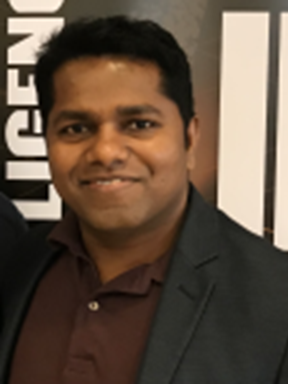
Dr. Ashish Kundu is a distinguished scientist, a leader in the area of Security, Privacy, Compliance and AI Ethics, and a distinguished speaker. He is currently working as a Head of Cybersecurity Research at Cisco Research. He has led security and compliance of self-driving cars, tele-operated driving, across all the stacks. He has also led the security and compliance of cloud-based healthcare, and cloud-based AI-driven education platforms. He has led cybersecurity of Nuro as its Head of Cybersecurity. Dr. Kundu also worked as a Master Inventor and Research Staff Member at IBM T J Watson Research Center. His research has led to more than 160 patents filed with more than 130 patents granted, and more than 40 research papers. Dr. Kundu received his Ph.D. in Cybersecurity from Purdue University. His work has been recognized with several awards and honors. Dr. Kundu has been honored with the prestigious Master Inventor recognition multiple times by IBM Research, New York. He has been privileged to be recognized as an ACM Distinguished Member, and in the past, he has been named as an ACM Distinguished Speaker. Dr. Kundu’s doctoral research at Purdue University received the prestigious CERIAS Diamond Award for his outstanding contributions to cybersecurity.
 Eapen Kuruvilla has a career spanning 20+ years in 5G, LTE and UMTS development and delivery, both with service providers and equipment vendors. He has domain expertise in 5G, LTE RAN, C-V2X, VoLTE, MEC, Machine Learning, DevOps, and AWS. Eapen is skilled in solution architecture, real-time software development, cloud integration, and test automation. He has an MS in Computer Science from the Stevens Institute of Technology. Eapen joined Noblis in May 2020.
Eapen Kuruvilla has a career spanning 20+ years in 5G, LTE and UMTS development and delivery, both with service providers and equipment vendors. He has domain expertise in 5G, LTE RAN, C-V2X, VoLTE, MEC, Machine Learning, DevOps, and AWS. Eapen is skilled in solution architecture, real-time software development, cloud integration, and test automation. He has an MS in Computer Science from the Stevens Institute of Technology. Eapen joined Noblis in May 2020.
 Chunmei Liu received her Ph.D. degree in Computer Systems from the Massachusetts Institute of Technology (MIT) in 2005. She has been working in the areas of wireless communications and networking since then. She is currently a researcher with the Wireless Networks Division, National Institute of Standards and Technology (NIST). Her research interests include public safety communications in cellular networks and machine learning.
Chunmei Liu received her Ph.D. degree in Computer Systems from the Massachusetts Institute of Technology (MIT) in 2005. She has been working in the areas of wireless communications and networking since then. She is currently a researcher with the Wireless Networks Division, National Institute of Standards and Technology (NIST). Her research interests include public safety communications in cellular networks and machine learning.
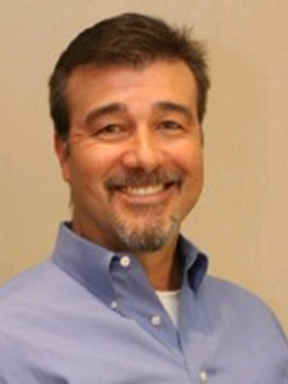 John Macias is a Distinguished Engineer – Systems Architecture at Verizon. He architects commercial and private 5G networks and drives innovation in the radio access network deployment space. His contributions to novel designs in the civilian and non-civilian space have led to some industry firsts, including 5G specific applications within the VA Healthcare System. Macias is a primary investigator of new technologies within the Verizon Technology and Product Development community, focusing on DoD and Public Safety. He is currently conducting research in O-RAN and the implications for commercial and private networks. Macias has been in the wireless industry for more than 25 years and holds a B.S. in Electrical Engineering from Stanford University.
John Macias is a Distinguished Engineer – Systems Architecture at Verizon. He architects commercial and private 5G networks and drives innovation in the radio access network deployment space. His contributions to novel designs in the civilian and non-civilian space have led to some industry firsts, including 5G specific applications within the VA Healthcare System. Macias is a primary investigator of new technologies within the Verizon Technology and Product Development community, focusing on DoD and Public Safety. He is currently conducting research in O-RAN and the implications for commercial and private networks. Macias has been in the wireless industry for more than 25 years and holds a B.S. in Electrical Engineering from Stanford University.
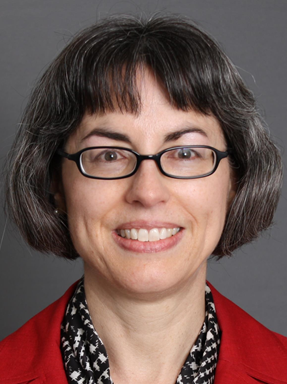
Dr. Denise Masi has over 25 years of modeling, analysis, and engineering experience, and leads teams at Noblis supporting federal government clients in modeling and simulation of their wired and wireless critical communications. Her research interests include queueing theory and simulation applied to telecommunications networks. She has a BS in Industrial Engineering from Texas A&M University, an MS in Operations Research from Purdue University, and a PhD in Information Technology / Operations Research from George Mason University.
 Dr. Apurva N. Mody is a world recognized expert on Spectrum Sharing and Spectrum Exploitation Technologies. Dr. Mody received his Ph. D. in Electrical Engineering from Georgia Institute of Technology in December 2004. In the recent past, Dr. Mody has served as the Vice Chair and Chairman of the National Spectrum Consortium (NSC). As a Member of the Executive Committee, Dr. Mody is acting as the Working Groups Chairman to create interoperable specifications, recommended practices, white papers and study reports in the area of Spectrum and 5G.
Dr. Apurva N. Mody is a world recognized expert on Spectrum Sharing and Spectrum Exploitation Technologies. Dr. Mody received his Ph. D. in Electrical Engineering from Georgia Institute of Technology in December 2004. In the recent past, Dr. Mody has served as the Vice Chair and Chairman of the National Spectrum Consortium (NSC). As a Member of the Executive Committee, Dr. Mody is acting as the Working Groups Chairman to create interoperable specifications, recommended practices, white papers and study reports in the area of Spectrum and 5G.
Dr. Mody has more than 20 years of experience in Research and Development (R&D) of wireless communications, radars, Electronic Warfare (EW) and systems related to Spectrum Dominance Awareness and Sharing. Dr. Mody has worked on countless Department of Defense (DoD) Programs as a Principal Investigator, Program Manager and as a Capture Team Lead. These programs have resulted in development of potential solutions for radar and communications spectrum sharing, development of spectrum sensing chip, anti-jam wireless communications solutions, co-existence between communications and electronic warfare systems, as well as implementation of low-cost techniques to make any radio cognitive. Dr. Mody was one of the first researchers to talk about the effective use of not only the White Space, but also the Gray Space.
Dr. Mody recently founded AiRANACULUS, which is at the forefront in Intelligent RF and Networking Solutions for applications ranging from Space to Smart Cities. The company has assembled the world’s leading experts to provide algorithms, reference architectures and products in signal processing, cross-layer analysis, cybersecurity and networking to create spectrum aware technologies capable of re-configuring radio and sensor systems for optimal performance in congested and contested environments. AiRANACULUS is working on wide variety of Projects including creation of Cognitive Control Plane and Network Slicing for NASA’ s Moon Mission, 5G Dynamic Spectrum Sharing at Hill Air Force Base, Army Waveform Agnostic learning-enhanced Decision Engine and Navy Program to add Multi-User Detection to Advanced Tactical Networking Waveform.
Dr. Mody is also the founding Chairman of the WhiteSpace Alliance™ (WSA) as well as the Chairman Emeritus of IEEE 802.22 Working Group (WG) for Wireless Regional Area Networks (WRANs). Dr. Mody has been recently awarded the IEEE SA Medal for creating spectrum sharing technologies to reduce the global problem of Digital Divide. Under his leadership, the IEEE 802.22 WG is the recipient of the IEEE Emerging Technology Award. Dr. Mody, also led the IEEE 802.22.3 / 802.15.22.3 Task Group on Spectrum Characterization and Occupancy Sensing. Dr. Mody has access to regulators and Government officials all over the world. He has worked with many Government organizations including United States DoD, NTIA, FCC, Department of State, USAID, United Nations, International Telecommunications Union as well as Ministries of many countries around the world.
Dr. Mody is a Senior Member of the IEEE, he was President’s Fellow while at Georgia Tech, he is a member of IEEE Eta Kappa Nu and Tau Beta Pi honor societies. His research work has been published in three book chapters and more than 50 Conference and Journal Papers. Dr. Mody has been awarded more than 25 patents.
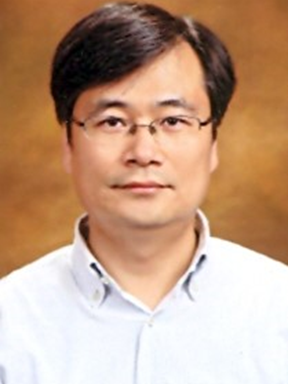
Hichan Moon is a professor in the Department of Electronic Engineering, Hanyang University, Seoul, Korea. He received his B.S. (Summa Cum Laude) and M.S. degrees in electronics engineering from Seoul National University, Seoul, Korea and his Ph.D. degree in electrical engineering from Stanford University, Stanford, CA, USA. Before joining Hanyang University, he worked at Samsung Electronics Co., Korea. At Samsung, he designed mobile station modems for cdma2000, W-CDMA, and LTE. He also worked for 3GPP standardization. He is the project initiative of HELPS and a founder of Infoseize Systems. He is the chair of Ad Hoc Committee on Mission Critical Communications, IEEE Vehicular Technology Society.
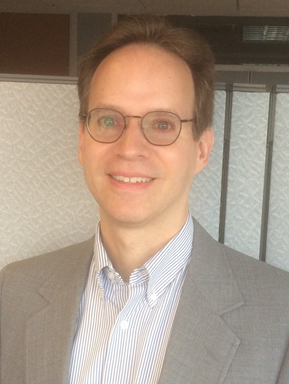 Nicholas Oros is the Deputy Chief of the Policy and Rules Division, Office of Engineering and Technology, at the Federal Communications Commission. OET is the Commission’s primary resource for engineering expertise and provides technical support to the Chairwoman, Commissioners, and FCC Bureaus and Offices. Since joining the Commission in 2005, Mr. Oros has been involved in various rulemaking proceedings including Spectrum Frontiers, which made mmW band spectrum available for 5G Services; Spectrum Horizons, which focuses on spectrum above 95 GHz; and the 6 GHz band proceeding that made 1200 megahertz of spectrum available for unlicensed use.
Nicholas Oros is the Deputy Chief of the Policy and Rules Division, Office of Engineering and Technology, at the Federal Communications Commission. OET is the Commission’s primary resource for engineering expertise and provides technical support to the Chairwoman, Commissioners, and FCC Bureaus and Offices. Since joining the Commission in 2005, Mr. Oros has been involved in various rulemaking proceedings including Spectrum Frontiers, which made mmW band spectrum available for 5G Services; Spectrum Horizons, which focuses on spectrum above 95 GHz; and the 6 GHz band proceeding that made 1200 megahertz of spectrum available for unlicensed use.
Prior to joining the Commission, Mr. Oros was an engineer at Motorola for eight years where he focused on the computer simulation of digital communication systems and radio based position determination. He is a graduate of the University of Illinois College of Law and has also earned a Master’s Degree in Electrical Engineering from Purdue University and a Bachelor’s Degree in Electrical Engineering from the University of Missouri at Rolla.
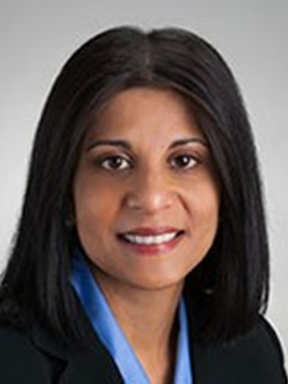
Lizy Paul is the Elected Chair of the National Spectrum Consortium and Director, 5G.MIL Programs for the Lockheed Martin Corporation. At Lockheed Martin, Lizy leads the strategy, planning, and execution of the enterprise wide 5G.MIL™ IR&D portfolio. Prior to Lockheed Martin, she was the Director of Technical Strategy for Defense Communications and Networking Solutions at Raytheon Technologies. She also has 10 years of experience in the Commercial Cellular Industry. She holds 16 U.S. patents and has a Masters in Electrical Engineering from Johns Hopkins University and an Executive MBA from the University of Iowa.
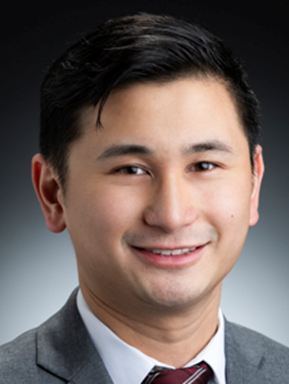 Ryan Pepito is a member of the Associate Professional Staff in the Mission Critical Communications Group (QKT) at The Johns Hopkins University Applied Physics Lab (JHU/APL). He has professional experience in 5G research and development, specifically, internal 5G testbed creation and research leveraging open-source technologies. He has experience with the NSF PAWR testbeds, 3GPP specifications, 5G dual connectivity, research in multi-access edge computing (MEC) and MEC security. He has his Bachelor of Science degree in Electrical & Computer Engineering from Drexel University and is currently pursuing his Master of Science degree in Electrical Engineering from Johns Hopkins University.
Ryan Pepito is a member of the Associate Professional Staff in the Mission Critical Communications Group (QKT) at The Johns Hopkins University Applied Physics Lab (JHU/APL). He has professional experience in 5G research and development, specifically, internal 5G testbed creation and research leveraging open-source technologies. He has experience with the NSF PAWR testbeds, 3GPP specifications, 5G dual connectivity, research in multi-access edge computing (MEC) and MEC security. He has his Bachelor of Science degree in Electrical & Computer Engineering from Drexel University and is currently pursuing his Master of Science degree in Electrical Engineering from Johns Hopkins University.
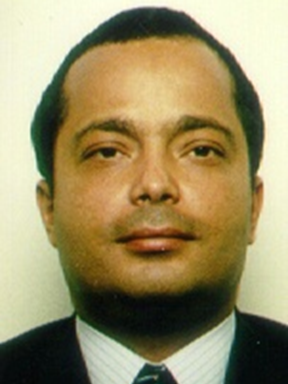 Dr. Jorge Pereira, obtained the Engineering and M.Sc. degrees in Electrical and Computer Engineering from Instituto Superior Técnico (IST), Lisbon, Portugal in 1983 and 1987, respectively, and received the Ph.D. in Electrical Engineering-Systems from the University of Southern California (USC), Los Angeles, in 1993.Between 1983 and 1988, he taught in the Department of Electrical and Computer Engineering of IST as Full Lecturer in the areas of Electrotechnics and Electrical Measurements, Applied Electronics and Telecommunication Systems, and became Assistant Professor in 1994.
Dr. Jorge Pereira, obtained the Engineering and M.Sc. degrees in Electrical and Computer Engineering from Instituto Superior Técnico (IST), Lisbon, Portugal in 1983 and 1987, respectively, and received the Ph.D. in Electrical Engineering-Systems from the University of Southern California (USC), Los Angeles, in 1993.Between 1983 and 1988, he taught in the Department of Electrical and Computer Engineering of IST as Full Lecturer in the areas of Electrotechnics and Electrical Measurements, Applied Electronics and Telecommunication Systems, and became Assistant Professor in 1994.
From 1988 to 1990, he worked at LinCom Corp., Los Angeles, in a NASA project on space-to-space communications, and on synchronization issues. From 1991 to 1993, he worked for Caltrans (California Department of Transportation) and PATH (Partners for Advanced Transportation Technology) on Intelligent Vehicle-Highway Systems (IVHS)/Intelligent Transportation Systems (ITS). From 1993 to 1996, at GTE Laboratories Inc., Waltham, MA, he was responsible for Communication Analysis and Simulation in the Federal Highway Administration National IVHS Architecture study and represented GTE at the Telecommunications Industry Association (TIA) IVHS Section, and in the High Speed Data Systems workgroup of the CDMA Development Group (CDG). He was also involved in the early work on e911.
He has been with the European Commission since September 1996, initially as Scientific Officer, becoming Principal Scientific Officer in 2005. He has been dealing with ICT, covering a broad variety of areas, with a focus on networking, devices, applications and services, testing and validation, as well as deployment. He is, since 2016, in the area of Future Connectivity Systems, focusing on 5G and beyond, where he is responsible for the areas of Advanced Spectrum Management; optical-wireless convergence; Connected and Automated Mobility (CAM); and Public Protection and Disaster Relief (PPDR) / Emergency and Crisis Management.
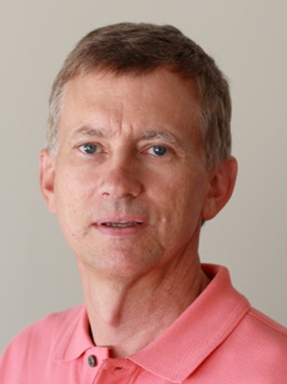 Larry Peterson is a long-time network systems researcher, who now splits his time between Systems Approach LLC (where he authors books and other educational material), the Open Networking Foundation (where he contributes to open source edge computing platforms), and Princeton University (where he is the Robert E. Kahn Professor of Computer Science, Emeritus). His research focuses on the design, implementation, and deployment of Internet-scale distributed systems, and includes the widely used PlanetLab and MeasurementLab platforms.
Larry Peterson is a long-time network systems researcher, who now splits his time between Systems Approach LLC (where he authors books and other educational material), the Open Networking Foundation (where he contributes to open source edge computing platforms), and Princeton University (where he is the Robert E. Kahn Professor of Computer Science, Emeritus). His research focuses on the design, implementation, and deployment of Internet-scale distributed systems, and includes the widely used PlanetLab and MeasurementLab platforms.
Peterson is a member of the National Academy of Engineering, a Fellow of the ACM and the IEEE, the 2010 recipient of the IEEE Kobayashi Computer and Communication Award, and the 2013 recipient of the ACM SIGCOMM Lifetime Contributions Award. He received his Ph.D. degree from Purdue University in 1985.
 Ari Pouttu has scientific and engineering experience as a researcher, project manager and research manager in various domains of ICT development. The projects under his command have resulted in waveforms and system designs for military radio communication, radar systems, embedded device networks, future wireless radio communications including cellular systems, cognitive networks and navigation applications.
Ari Pouttu has scientific and engineering experience as a researcher, project manager and research manager in various domains of ICT development. The projects under his command have resulted in waveforms and system designs for military radio communication, radar systems, embedded device networks, future wireless radio communications including cellular systems, cognitive networks and navigation applications.
He has published more than 70 conference or journal papers in the field of wireless communications and he holds two patents. He was the Director of Centre for Wireless Communications in the University of Oulu from 2006 to 2012. Currently he is heading as a professor a research group targeting dependable wireless solutions for business verticals such as energy, industry, health and automotive including solutions for 5G. He is the principal investigator of 5G test network (5GTN) experimental research, co-PI of H2020 SLICES-SC, 5G!Drones, Inspire5Gplus and 5G-ENHANCE projects and is acting as vice-director of the national 6G Flagship Programme targeting 6G solutions.
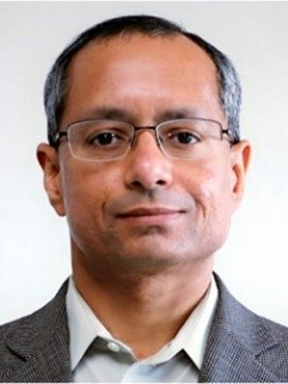 Rajat Prakash is with the Wireless R&D group at Qualcomm. His current work focuses on 5G-enabled virtualized RAN and industrial IoT technologies, and on the evolution of 5G towards 6G. He has previously worked on small cells, self-organizing networks, neutral host, VoLTE and VoWiFi technologies. Rajat has participated in several industry bodies, including 3GPP, O-RAN Alliance, CBRS Alliance, Multefire Alliance, Small Cell Forum, 5G ACIA, IEEE and 3GPP2. Rajat obtained his PhD from the University of Illinois at Urbana-Champaign, MS from Cornell University and B.Tech from the Indian Institute of Technology, Kanpur, all in Electrical Engineering.
Rajat Prakash is with the Wireless R&D group at Qualcomm. His current work focuses on 5G-enabled virtualized RAN and industrial IoT technologies, and on the evolution of 5G towards 6G. He has previously worked on small cells, self-organizing networks, neutral host, VoLTE and VoWiFi technologies. Rajat has participated in several industry bodies, including 3GPP, O-RAN Alliance, CBRS Alliance, Multefire Alliance, Small Cell Forum, 5G ACIA, IEEE and 3GPP2. Rajat obtained his PhD from the University of Illinois at Urbana-Champaign, MS from Cornell University and B.Tech from the Indian Institute of Technology, Kanpur, all in Electrical Engineering.
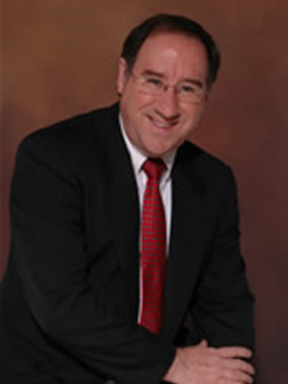 Grayson Randall serves as Vice President & Chief Technology Officer at Ascot Technologies, Inc., an award winning software company specializing in data collection and data mining technologies. A former IBMer with 13 patents, he leads all the development and support efforts for Ascot Technologies, including new product development and deployment. He has over 30 years of experience in systems design and architecture and has experience as a team leader for international scale projects.
Grayson Randall serves as Vice President & Chief Technology Officer at Ascot Technologies, Inc., an award winning software company specializing in data collection and data mining technologies. A former IBMer with 13 patents, he leads all the development and support efforts for Ascot Technologies, including new product development and deployment. He has over 30 years of experience in systems design and architecture and has experience as a team leader for international scale projects.
Mr. Randall is a founding member of the IEEE MOVE team and is currently the Operations Lead for MOVE. Grayson is responsible for 2 Communication/Command Center trucks that have deployed 24 times in the last 5 years to disasters in the United States. He is also known in the world of robotics for his leadership of the Insight Racing DARPA Grand Challenge team which secured final and semi-final positions in the highly competitive autonomous robotic vehicle races. He also created the IEEE KEN humanoid robot project that interacted with volunteers from 10 years old to 90 years old to create a robot that could have a natural language discussion with people.
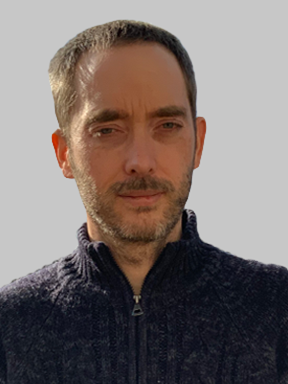 Richard Rouil received his Ph.D. degree in computer science in 2009 from Telecom Bretagne, France, that focused on mobility in heterogeneous networks. He is currently the leader of the Wireless Systems Innovation and Performance Group in the Wireless Networks Division at the National Institute of Standards and Technology (NIST). His research focuses on the performance evaluation of wireless technologies, such as Long Term Evolution (LTE) and New Radio (NR) to support the development, analysis, and deployment of networks used by public safety. His main interests include protocol modeling and simulation of communication networks.
Richard Rouil received his Ph.D. degree in computer science in 2009 from Telecom Bretagne, France, that focused on mobility in heterogeneous networks. He is currently the leader of the Wireless Systems Innovation and Performance Group in the Wireless Networks Division at the National Institute of Standards and Technology (NIST). His research focuses on the performance evaluation of wireless technologies, such as Long Term Evolution (LTE) and New Radio (NR) to support the development, analysis, and deployment of networks used by public safety. His main interests include protocol modeling and simulation of communication networks.
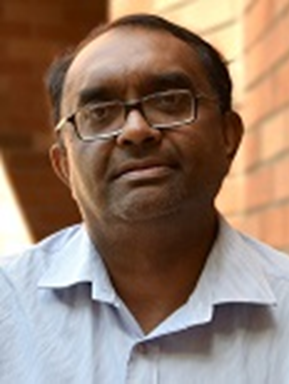 Dr. Sumit Roy is Innovation Lead at the U.S. Department of Defense. He received the B. Tech. degree from the Indian Institute of Technology (Kanpur) in 1983, and the M. S. and Ph. D. degrees from the University of California (Santa Barbara), all in Electrical & Comp. Engineering in 1985 and 1988 respectively, as well as an M. A. in Statistics and Applied Probability in 1988.
Dr. Sumit Roy is Innovation Lead at the U.S. Department of Defense. He received the B. Tech. degree from the Indian Institute of Technology (Kanpur) in 1983, and the M. S. and Ph. D. degrees from the University of California (Santa Barbara), all in Electrical & Comp. Engineering in 1985 and 1988 respectively, as well as an M. A. in Statistics and Applied Probability in 1988.
He served as Integrated Systems Professor (2014-19) of Electrical & Computer Engineering, Univ. of Washington-Seattle where his research and technology transition interests include analysis/design of wireless communication and sensor network systems with an emphasis on 5G & beyond standards, multi-standard inter-networking and spectrum coexistence using software-defined networks. He spent 2001-03 at Intel Wireless Technology Lab as a Senior Researcher engaged in systems architecture and standards development for ultra-wideband systems (Wireless PANs) and next generation high-speed wireless LANs. He has active been in IEEE Communications Society in various roles (journal editor and Distinguished Lecturer) and was elevated to IEEE Fellow (2007) for “contributions to multi-user communications theory and cross-layer design of wireless networking standards”. He currently serves as Program Lead for Innovate Beyond 5G for OUSD R&E Beyond 5G initiative
 Richard Russell, Global Head of Sales - Mobility Engine, at Radisys, partners with Fortune 100 companies and disruptive start-ups alike to deploy disaggregated 5G, CBRS, and ORAN solutions. He has over 25 years’ experience leading wireless technology teams in Europe, UK, and North America. Thanks to a career extending yoga practice, Richard is a three-time world ultimate frisbee champion (Team USA). He loves outdoor family-oriented activities such as: skiing, boating, tennis, and cheering for his alma mater, the Georgia Bulldogs.
Richard Russell, Global Head of Sales - Mobility Engine, at Radisys, partners with Fortune 100 companies and disruptive start-ups alike to deploy disaggregated 5G, CBRS, and ORAN solutions. He has over 25 years’ experience leading wireless technology teams in Europe, UK, and North America. Thanks to a career extending yoga practice, Richard is a three-time world ultimate frisbee champion (Team USA). He loves outdoor family-oriented activities such as: skiing, boating, tennis, and cheering for his alma mater, the Georgia Bulldogs.
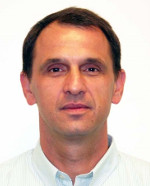 Ivan Seskar is the Chief Technologist at WINLAB, Rutgers University responsible for experimental systems and prototyping projects. He is currently the program director for the COSMOS project responsible for the New York City NSF PAWR deployment, the PI for the NSF GENI Wireless project, which resulted in campus deployments of LTE/WiMAX base stations at several US universities, and the PI for the NSF CloudLab deployment at Rutgers. He has also been the co-PI and project manager for all three phases of the NSF-supported ORBIT mid-scale testbed project at WINLAB, successfully leading technology development and operations since the testbed was released as a community resource in 2005 and for which the team received the 2008 NSF Alexander Schwarzkopf Prize for Technological Innovation. Ivan is a co-chair of the IEEE Future Networks Testbed Working Group, a Senior Member of the IEEE, a member of ACM and the co-founder and CTO of Upside Wireless Inc.
Ivan Seskar is the Chief Technologist at WINLAB, Rutgers University responsible for experimental systems and prototyping projects. He is currently the program director for the COSMOS project responsible for the New York City NSF PAWR deployment, the PI for the NSF GENI Wireless project, which resulted in campus deployments of LTE/WiMAX base stations at several US universities, and the PI for the NSF CloudLab deployment at Rutgers. He has also been the co-PI and project manager for all three phases of the NSF-supported ORBIT mid-scale testbed project at WINLAB, successfully leading technology development and operations since the testbed was released as a community resource in 2005 and for which the team received the 2008 NSF Alexander Schwarzkopf Prize for Technological Innovation. Ivan is a co-chair of the IEEE Future Networks Testbed Working Group, a Senior Member of the IEEE, a member of ACM and the co-founder and CTO of Upside Wireless Inc.
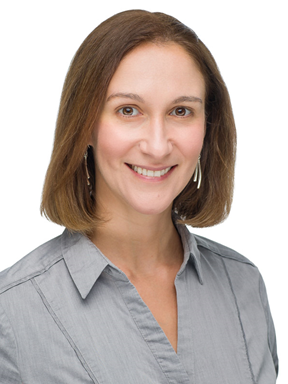 Mari Silbey is Senior Director of Partnerships and Outreach for US Ignite, and Program Director for the Platforms for Advanced Wireless Research (PAWR) program, a $100 million initiative funded by the National Science Foundation and a consortium of more than 30 wireless companies and associations. In her time at US Ignite, she has helped launch several public-private partnership programs, convened workshops with local leaders around the country, and developed best practice materials for community connectivity and data-driven initiatives.
Mari Silbey is Senior Director of Partnerships and Outreach for US Ignite, and Program Director for the Platforms for Advanced Wireless Research (PAWR) program, a $100 million initiative funded by the National Science Foundation and a consortium of more than 30 wireless companies and associations. In her time at US Ignite, she has helped launch several public-private partnership programs, convened workshops with local leaders around the country, and developed best practice materials for community connectivity and data-driven initiatives.
Mari has nearly two decades of experience in the telecom industry. Prior to joining US Ignite, she covered broadband infrastructure and telecom as a full-time journalist. She also worked in the private sector with companies including Limelight Networks and Motorola before its acquisition (and later sell-off) by Google.
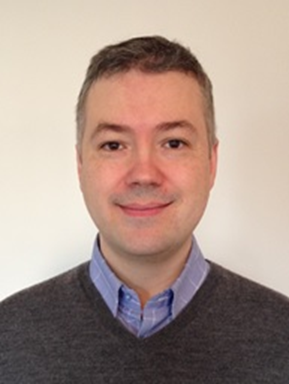 Dr. Yalin Sagduyu is the Director of Networks and Security at Intelligent Automation, a BlueHalo Company. He received his Ph.D. degree in Electrical and Computer Engineering from University of Maryland, College Park, in 2007. He has been a Visiting Research Professor in the Department of Electrical and Computer Engineering of University of Maryland, College Park. His research interests are in wireless communications, networks, security, machine learning, 5G and 6G. He chaired workshops at ACM MobiCom, ACM WiSec, IEEE CNS and IEEE ICNP, and served as a Track Chair at IEEE PIMRC, IEEE GlobalSIP and IEEE MILCOM. He received the IEEE HST 2018 Best Paper Award.
Dr. Yalin Sagduyu is the Director of Networks and Security at Intelligent Automation, a BlueHalo Company. He received his Ph.D. degree in Electrical and Computer Engineering from University of Maryland, College Park, in 2007. He has been a Visiting Research Professor in the Department of Electrical and Computer Engineering of University of Maryland, College Park. His research interests are in wireless communications, networks, security, machine learning, 5G and 6G. He chaired workshops at ACM MobiCom, ACM WiSec, IEEE CNS and IEEE ICNP, and served as a Track Chair at IEEE PIMRC, IEEE GlobalSIP and IEEE MILCOM. He received the IEEE HST 2018 Best Paper Award.
Raymond Shen, PhD directs 5G Govt Solutions at Keysight Technologies. In this role he leads Keysight's vast portfolio of end-to-end 5G test solutions for defense and government. He also leads Keysight’s Cybersecurity and spectrum monitoring solutions, managing solutions that include handheld, outdoor, and modular platforms. He has over 20 years of experience in spectrum monitoring and signal demodulation, with expertise in cellular signals. Shen has a BS EE from Caltech and a MS EE and PhD EE from Stanford University, where his PhD was in the area of neural networks.
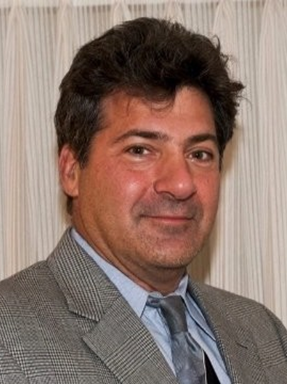 Glenn Stern works for Spirent’s Partnership organization helping to define strategic partnerships and alliances to expedite and significantly reduce risk for customer deployment of next generation network transformation and scale. Currently Glenn leads Spirent’s strategic initiatives in the US Federal Government for 5G and future networks.
Glenn Stern works for Spirent’s Partnership organization helping to define strategic partnerships and alliances to expedite and significantly reduce risk for customer deployment of next generation network transformation and scale. Currently Glenn leads Spirent’s strategic initiatives in the US Federal Government for 5G and future networks.
With over 35 years’ experience in telecommunications, Glenn has facilitated on strategy and success with and for Federal and State Government, Telecommunications Service Providers, Systems Integrators, and start-ups, helping them increase success through innovation and transformation. Glenn is a believer that strategic collaboration and partnerships is paramount to industry and customer success.
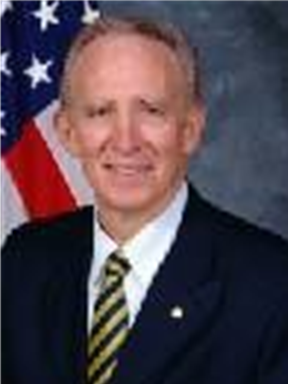 Mr. Frank Suraci serves as Senior Advisor for National Security and Emergency Preparedness (NS/EP) Communications within the Emergency Communications Division (ECD) in the Cybersecurity and Infrastructure Security Agency, DHS. In this role, Mr. Suraci directly supports the Executive Assistant Director in managing a myriad of critical emergency communications tasks and represents ECD on senior committees across Departments and Agencies in order to further advance interoperable NS/EP communications. Prior to this assignment, Mr. Suraci served for over thirty years as the Government Emergency Telecommunications Service (GETS) and Wireless Priority Service (WPS) Branch Chief. He was responsible for taking GETS and WPS from concepts to the operational services. During this time, Mr. Suraci was appointed to serve on Federal Communications Commission (FCC) Communications Security, Reliability and Interoperability Council (CSRIC) Working Groups. For the past 25 years, Mr. Suraci has represented DHS and the National Communications System (NCS) at the Alliance for Telecommunications Industry Solutions (ATIS) Next Generation Interconnection Interoperability Forum (NGIIF). Within the NGIIF, Mr. Suraci coordinated the nationwide rollouts of network priority signaling features in legacy and next generation networks supporting both GETS and WPS. He continues to enhance these NS/EP services by collaborating with telecommunications industry partners and currently supports the Wi-Fi priority access initiative in IEEE 802.11. Mr. Suraci holds a Bachelor degree in Electrical Engineering from The Catholic University of America and completed graduate work at Penn State University and George Washington University. Mr. Suraci is an active participant in professional organizations, including the IEEE and the Armed Forces Communications and Electronics Association (AFCEA) where he is a distinguished life member.
Mr. Frank Suraci serves as Senior Advisor for National Security and Emergency Preparedness (NS/EP) Communications within the Emergency Communications Division (ECD) in the Cybersecurity and Infrastructure Security Agency, DHS. In this role, Mr. Suraci directly supports the Executive Assistant Director in managing a myriad of critical emergency communications tasks and represents ECD on senior committees across Departments and Agencies in order to further advance interoperable NS/EP communications. Prior to this assignment, Mr. Suraci served for over thirty years as the Government Emergency Telecommunications Service (GETS) and Wireless Priority Service (WPS) Branch Chief. He was responsible for taking GETS and WPS from concepts to the operational services. During this time, Mr. Suraci was appointed to serve on Federal Communications Commission (FCC) Communications Security, Reliability and Interoperability Council (CSRIC) Working Groups. For the past 25 years, Mr. Suraci has represented DHS and the National Communications System (NCS) at the Alliance for Telecommunications Industry Solutions (ATIS) Next Generation Interconnection Interoperability Forum (NGIIF). Within the NGIIF, Mr. Suraci coordinated the nationwide rollouts of network priority signaling features in legacy and next generation networks supporting both GETS and WPS. He continues to enhance these NS/EP services by collaborating with telecommunications industry partners and currently supports the Wi-Fi priority access initiative in IEEE 802.11. Mr. Suraci holds a Bachelor degree in Electrical Engineering from The Catholic University of America and completed graduate work at Penn State University and George Washington University. Mr. Suraci is an active participant in professional organizations, including the IEEE and the Armed Forces Communications and Electronics Association (AFCEA) where he is a distinguished life member.
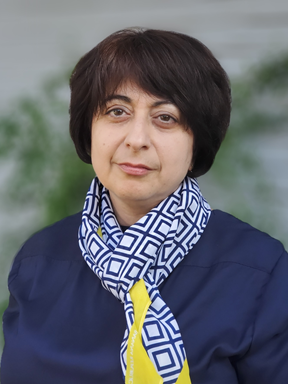 Anahit Tarkhanyan is Principal Engineer at Intel. She leads the security architecture of Intel IoT/edge portfolio. Anahit has 20 plus years of industry experience delivering the security solutions to the market. Her area of expertise covers Edge to Cloud systems security, AI/ML protection, security standards and regulation. Anahit is IEEE Senior Member and holds PhD in Distributed Computer Systems and Networks, holds several patents, and has publications in diverse security technology. She finds her inspiration from mentoring, coaching next generation of Intel’s brain power. Outside of work she enjoys travelling, arts and handcraft. She is a founder of AHMF non-profit organization with mission to stimulate creative art education for children.
Anahit Tarkhanyan is Principal Engineer at Intel. She leads the security architecture of Intel IoT/edge portfolio. Anahit has 20 plus years of industry experience delivering the security solutions to the market. Her area of expertise covers Edge to Cloud systems security, AI/ML protection, security standards and regulation. Anahit is IEEE Senior Member and holds PhD in Distributed Computer Systems and Networks, holds several patents, and has publications in diverse security technology. She finds her inspiration from mentoring, coaching next generation of Intel’s brain power. Outside of work she enjoys travelling, arts and handcraft. She is a founder of AHMF non-profit organization with mission to stimulate creative art education for children.
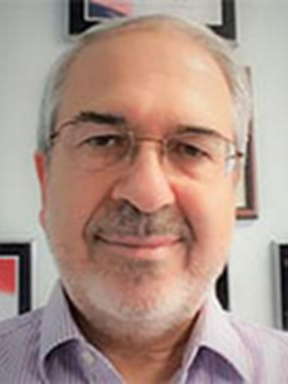 Dr. Mehmet Ulema is a professor of Computer Information Systems at Manhattan College, New York. Previously, he held management and technical positions in AT&T Bell Laboratories, Bellcore, and Daewoo Telecom. He has been on the editorial board of a number of journals. Dr. Ulema is the author of a book entitled “Fundamentals of Public Safety Networks and Critical Communications” published by Wiley in 2019. Mehmet was actively involved in standardization in ITU, TIA, ATIS, and IEEE. Currently, he is a member of IEE SA Standards Board, and he is a Co-chair of the IEEE Future Network Initiatives’ Standards Working Group. He is also a co-chair of the IEEE Public Safety Technology Task Force. Dr. Ulema also had leading roles in numerous IEEE ComSoc conferences including ICC and GLOBECOM. Dr. Ulema has received a number of awards including IEEE SA Standards Medallion award. Dr. Ulema holds MS & Ph.D. degrees in Computer Science at Polytechnic University (now the New York University Tandon School of Engineering. He also received BS & MS degrees at Istanbul Technical University.
Dr. Mehmet Ulema is a professor of Computer Information Systems at Manhattan College, New York. Previously, he held management and technical positions in AT&T Bell Laboratories, Bellcore, and Daewoo Telecom. He has been on the editorial board of a number of journals. Dr. Ulema is the author of a book entitled “Fundamentals of Public Safety Networks and Critical Communications” published by Wiley in 2019. Mehmet was actively involved in standardization in ITU, TIA, ATIS, and IEEE. Currently, he is a member of IEE SA Standards Board, and he is a Co-chair of the IEEE Future Network Initiatives’ Standards Working Group. He is also a co-chair of the IEEE Public Safety Technology Task Force. Dr. Ulema also had leading roles in numerous IEEE ComSoc conferences including ICC and GLOBECOM. Dr. Ulema has received a number of awards including IEEE SA Standards Medallion award. Dr. Ulema holds MS & Ph.D. degrees in Computer Science at Polytechnic University (now the New York University Tandon School of Engineering. He also received BS & MS degrees at Istanbul Technical University.
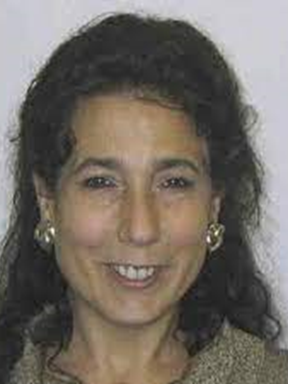 Tracy van Brakle, Principal Member of Technical Staff within AT&T's Wireless Technologies / Network Automation and Analytics group, is an active participant and contributor within several open source projects and standards development organizations. Her current area of interest is integrating Open RAN technologies with open platforms, e.g., Linux Foundation Networking “5G Super Blueprint,” using model-driven interface specifications from O-RAN, ONF, and 3GPP. Before joining AT&T, Tracy was a Senior Technologist with Goldman Sachs. She holds 14 patents in Wireless Technologies.
Tracy van Brakle, Principal Member of Technical Staff within AT&T's Wireless Technologies / Network Automation and Analytics group, is an active participant and contributor within several open source projects and standards development organizations. Her current area of interest is integrating Open RAN technologies with open platforms, e.g., Linux Foundation Networking “5G Super Blueprint,” using model-driven interface specifications from O-RAN, ONF, and 3GPP. Before joining AT&T, Tracy was a Senior Technologist with Goldman Sachs. She holds 14 patents in Wireless Technologies.
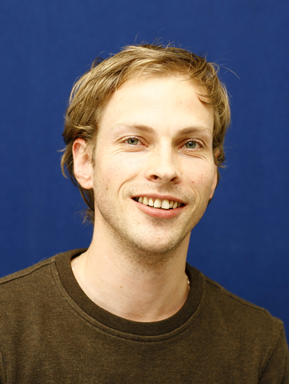 Sven van der Meer - Sven van der Meer is a lecturer, scientist, researcher, software engineer, and consultant with a Dipl.-Inform. (M.Sc., 1996) and a Dr.-Ing. (PhD, 2002) from the Berlin Institute of Technology (TUB). He worked in TUB, Fraunhofer FOKUS, Waterford Institute of Technology, and the Ericsson Network Management Lab. In 2020 Sven joined VMware, where he currently is the Lead Architect in the Distributed Edge group in the Office of the CTO. Sven helps the team to build a Multi-Cloud Service Grid combining time-sensitive service, intelligent features, and autonomic capabilities into a utility that delivers anything anywhere. This work will help to create an eco-system with partners, mainly the Open Grid Alliance (OGA). Sven led and contributed to over 20 German, Irish, and European projects. He co-authored more than 100 peer-reviewed publications and five patents, and contributed to standards (OMG, TM Forum, ISO, 3GPP, IEEE, IETF) and FOSS (namely APEX in ONAP). Sven is an active member of IEEE CNOM (TPCs and OCs for IM, NOMS, CNSM). He also supervised more than 50 M.Sc. and PhD students. Sven’s main research interest are autonomic management, automation of network operations, and recursive network architectures.
Sven van der Meer - Sven van der Meer is a lecturer, scientist, researcher, software engineer, and consultant with a Dipl.-Inform. (M.Sc., 1996) and a Dr.-Ing. (PhD, 2002) from the Berlin Institute of Technology (TUB). He worked in TUB, Fraunhofer FOKUS, Waterford Institute of Technology, and the Ericsson Network Management Lab. In 2020 Sven joined VMware, where he currently is the Lead Architect in the Distributed Edge group in the Office of the CTO. Sven helps the team to build a Multi-Cloud Service Grid combining time-sensitive service, intelligent features, and autonomic capabilities into a utility that delivers anything anywhere. This work will help to create an eco-system with partners, mainly the Open Grid Alliance (OGA). Sven led and contributed to over 20 German, Irish, and European projects. He co-authored more than 100 peer-reviewed publications and five patents, and contributed to standards (OMG, TM Forum, ISO, 3GPP, IEEE, IETF) and FOSS (namely APEX in ONAP). Sven is an active member of IEEE CNOM (TPCs and OCs for IM, NOMS, CNSM). He also supervised more than 50 M.Sc. and PhD students. Sven’s main research interest are autonomic management, automation of network operations, and recursive network architectures.
Kobus Van der Merwe is the Jay Lepreau Professor in the School of Computing and Director of the Flux Research Group at the University of Utah. He joined the University of Utah in 2012 after fourteen years at AT&T Labs - Research. He does networking systems research in a broad range of areas including network management, control and operation, mobile and wireless networking, network evolution, network security and cloud computing. He is the PI and Director of the POWDER project (Platform for Open Wireless Data-driven Experimental Research), one of the NSF-funded PAWR platforms.
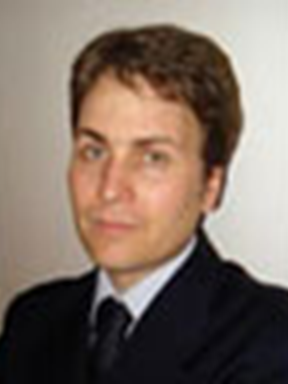 Alessandro Vizzarri received degree in Electronic Engineering from University of Bologna in 2003, Ph.D in “Telecommunication Engineering and Microelectronics” from University of Rome Tor Vergata. He is Adjunct Professor of “Radio Spectrum Management” at University of Roma Tor Vergata and Project Manager for Radiolabs Consortium. He worked for many years as Consultant Engineer and Manager for Telecom Operators, Equipment Vendors and Multinational Consultancy Companies operating in ICT market. His research interests include Wireless Networks, Radio Network Planning, Regulation and Standardization, Innovative Thinking and Business Models.
Alessandro Vizzarri received degree in Electronic Engineering from University of Bologna in 2003, Ph.D in “Telecommunication Engineering and Microelectronics” from University of Rome Tor Vergata. He is Adjunct Professor of “Radio Spectrum Management” at University of Roma Tor Vergata and Project Manager for Radiolabs Consortium. He worked for many years as Consultant Engineer and Manager for Telecom Operators, Equipment Vendors and Multinational Consultancy Companies operating in ICT market. His research interests include Wireless Networks, Radio Network Planning, Regulation and Standardization, Innovative Thinking and Business Models.
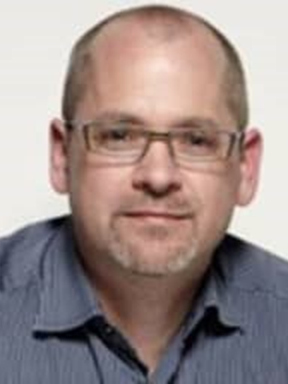 As CTO for Nokia Federal, Steve Vogelsand is responsible for leading a technical team that curates and adapts Nokia’s broad portfolio of networking products and technology to deliver mission critical capabilities to the U.S. Government. A self-proclaimed cynic when it comes to technology trends, Steve likes to cut through industry hype and zero in on the truly innovative technologies that can be rapidly prototyped, implemented, and deployed.
As CTO for Nokia Federal, Steve Vogelsand is responsible for leading a technical team that curates and adapts Nokia’s broad portfolio of networking products and technology to deliver mission critical capabilities to the U.S. Government. A self-proclaimed cynic when it comes to technology trends, Steve likes to cut through industry hype and zero in on the truly innovative technologies that can be rapidly prototyped, implemented, and deployed.
 Dr. Jolly Wong is a technology and strategy consultant with over 30 years of experience working in public goods projects. As Chief Technology Officer at the Hong Kong Police Force (HKPF), he oversaw the formulation of policies and strategies of ICT imperatives and rollout of command and control communications systems which won him the Outstanding Contribution to TETRA (Critical Communications) Award in 2008.
Dr. Jolly Wong is a technology and strategy consultant with over 30 years of experience working in public goods projects. As Chief Technology Officer at the Hong Kong Police Force (HKPF), he oversaw the formulation of policies and strategies of ICT imperatives and rollout of command and control communications systems which won him the Outstanding Contribution to TETRA (Critical Communications) Award in 2008.
He created the Finance-Operate-Own-Share (FOOS) business model, which successfully applied public and private partnerships to resolve major technological challenges in the HKPF. The model and its application have won awards like the Ken Goulding Prize for Professional Excellence 2015 and parts of the model has been replicated by organizations all over the world.
Between 2015 and 2017 Dr. Wong was a member of the Advisory Committee on Innovation and Technology, the body that wrote the ‘Smart City’ blueprint for innovation and technology development for the HKSAR Government. In January 2021 he became the Senior Adviser for Hongkong Electric Company Limited (HEC) on technology policy and strategy related to innovation and cybersecurity. HEC is a utility providing a safe and highly reliable (at rating over 99.9999%) electricity supply to over 580,000 households on Hong Kong and Lamma Islands.
Dr. Wong is deeply involved with the Institution of Engineering and Technology (IET) and has served as its Vice President, Trustee, Council Chairman and Hong Kong Branch Chairman. He was the former Hong Kong Chapter Chair of the IEEE Engineering Management Society. He mentors STEM students as a Visiting Professor for Shanghai University and Beijing University of Posts and Telecommunications, and is also a Policy Fellow for the Centre for Science and Policy (CSaP) at University of Cambridge.
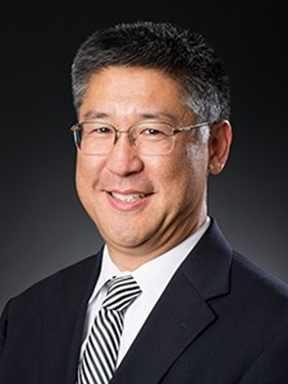 Raymond L. Yuan became the Mission Area Executive for Cyber Operations of the Johns Hopkins University Applied Physics Laboratory on September 10, 2015. In this capacity he oversees cyber security technology development within the Asymmetric Operations Sector for the Department of Defense and the Intelligence Community. As the nation’s largest University Affiliated Research Center, APL performs research and development on behalf of the Department of Defense, the Intelligence Community, the National Aeronautics and Space Administration, and other federal agencies. The Laboratory has more than 7,500 staff members who are making critical contributions to a wide variety of nationally and globally significant
Raymond L. Yuan became the Mission Area Executive for Cyber Operations of the Johns Hopkins University Applied Physics Laboratory on September 10, 2015. In this capacity he oversees cyber security technology development within the Asymmetric Operations Sector for the Department of Defense and the Intelligence Community. As the nation’s largest University Affiliated Research Center, APL performs research and development on behalf of the Department of Defense, the Intelligence Community, the National Aeronautics and Space Administration, and other federal agencies. The Laboratory has more than 7,500 staff members who are making critical contributions to a wide variety of nationally and globally significant
technical and scientific challenges.
Prior to assuming his current responsibilities, Mr. Yuan was the Deputy Mission Area Executive. From 2002 to 2013, he served as the National Systems Program Area Manager, responsible for programs with the Intelligence Community and US Cyber Command as well as cyber-related tasks with the Department of Homeland Security. He developed business strategies and established program goals, conducted integrated investment and resource planning, and executed programs across a range of research and development efforts that included deployment of new technical capabilities for the Intelligence Community and the DoD. Other responsibilities included fostering a key APL role as the Trusted Agent for Enterprise Systems Engineering at NSA and leading department-level strategic planning to focus on critical sponsor intelligence needs.
Prior to becoming the National Systems Program Area Manager, Mr. Yuan served in numerous program and technical leadership roles. These included managing aviation and surface vehicle programs with the Department of Transportation, leading systems engineering analysis, vulnerability assessment, and test and evaluation programs with the Navy and conducting internal research in novel network and satellite communication capabilities. He joined APL in 1985, initially working in the communication systems engineering area.
Mr. Yuan earned both his Bachelor of Science and Master of Science in Electrical Engineering degrees from the University of Michigan.
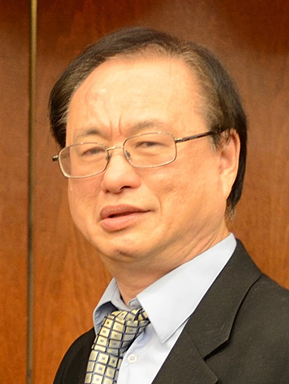 Dr. Steven Yuen is a Senior Emerging Technology Engineer at the First Responder Network Authority (FirstNet). He is responsible for the long-term technology planning of the Nationwide Public Safety Broadband Network (NPSBN), focusing on 5G and beyond technologies related to the cellular network and cybersecurity. Prior to FirstNet, Steven was a Principal Member of Technical Staff at AT&T, designing and deploying the 4G LTE core network and roaming services. Prior to AT&T, Steven was the Distinguish Member of Technical Staff at General Dynamics, developing the ground network of a next generation satellite communication system using the 3G UMTS technology. Steven had also held technical leading positions at Motorola, Bellcore (a spin-off from Bell Laboratories), and Texas A&M University. He has over thirty years of experience in the telecommunications industry.
Dr. Steven Yuen is a Senior Emerging Technology Engineer at the First Responder Network Authority (FirstNet). He is responsible for the long-term technology planning of the Nationwide Public Safety Broadband Network (NPSBN), focusing on 5G and beyond technologies related to the cellular network and cybersecurity. Prior to FirstNet, Steven was a Principal Member of Technical Staff at AT&T, designing and deploying the 4G LTE core network and roaming services. Prior to AT&T, Steven was the Distinguish Member of Technical Staff at General Dynamics, developing the ground network of a next generation satellite communication system using the 3G UMTS technology. Steven had also held technical leading positions at Motorola, Bellcore (a spin-off from Bell Laboratories), and Texas A&M University. He has over thirty years of experience in the telecommunications industry.
Dr. Yuen received his Ph.D. degree from The University of Washington in Seattle, WA. He is an IEEE Senior Member and CISSP certified. He was the General Chair of the Midwest Solution Conference, an IEEE technical conference held in Cedar Rapids, IA in 2004.
Steven’s areas of expertise include mobile communications, cellular network, and Information Security. He has published more than 40 papers in professional journals and conference proceedings.
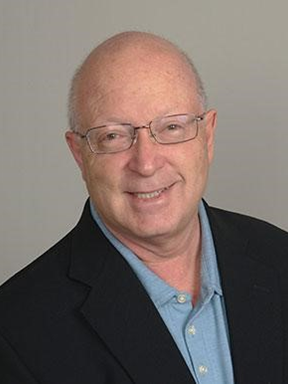 Dr. Douglas N. Zuckerman received his B.S., M.S. and Eng.Sc.D degrees from Columbia University and is an IEEE Life Fellow. His professional experience, mainly at Bell Labs and Telcordia Technologies, spans the operations, management and engineering of emerging communications technologies, networks, and applications. His work heavily influenced early standards for telecommunications network management. After retiring from Telcordia, as a consulting employee he contributed to optical networking standards through the Optical Internetworking Forum (OIF). Doug is a past IEEE Board member, former IEEE Communications Society President, and has held leadership positions in conferences, publications, and membership development. Currently, he is on the IEEE Future Directions and Industry Engagement Committees, as well as co-chair of the IEEE Public Safety Technologies Task Force.
Dr. Douglas N. Zuckerman received his B.S., M.S. and Eng.Sc.D degrees from Columbia University and is an IEEE Life Fellow. His professional experience, mainly at Bell Labs and Telcordia Technologies, spans the operations, management and engineering of emerging communications technologies, networks, and applications. His work heavily influenced early standards for telecommunications network management. After retiring from Telcordia, as a consulting employee he contributed to optical networking standards through the Optical Internetworking Forum (OIF). Doug is a past IEEE Board member, former IEEE Communications Society President, and has held leadership positions in conferences, publications, and membership development. Currently, he is on the IEEE Future Directions and Industry Engagement Committees, as well as co-chair of the IEEE Public Safety Technologies Task Force.
Future Network Artificial Intelligence and Machine Learning Workshop

27-29 September 2021 | Virtual & Free
Overview
This workshop will explore Artificial Intelligence and Machine Learning (AI/ML) algorithms, techniques, systems and standards that can be utilized to optimize performance of 5G and Future Networks. The objective of this workshop is to bring together experts from the globe and create a joint platform for information exchanges, presentation of results, and fruitful discussions to identify gaps and future directions for the IEEE Future Network Initiative (FNI) Artificial Intelligence and Machine Learning Group.
Event Program
Day 1 - 27 September, 12:00-03:00pm ET US
| Presentation Title | Speaker | |
| 12:00-12:20 | Future Networks Initiative Working Groups Introduction | Ashutosh Dutta (JHU/APL) and Deepak Kataria (IP Junction, Inc.) |
| 12:20-12:50 | Cascade: An Extensible Platform for Low-Latency Edge Intelligence | Ken Birman (Cornell University) |
| 12:50-13:10 | End-to-End Wireless Communications Systems Using Deep Machine Learning | Mohammad Reza Ghavidel Aghdam (University of Tabriz, Iran) |
| 13:10-13:30 | A GCN-TOPSIS framework to Predict User-specific Beam pattern for Smart 5G-market verticals | Tanu Wadhera (NIT, Jalandhar, India) |
| 13:30-14:00 | Break | |
| 14:00-14:20 | Enabling Intelligence in Future Wireless (Mobile) Networks from Theory to Practice | Md Arifur Rahman (IS-Wireless, Poland) |
| 14:20-14:40 | Data-Driven Advanced Symbol Modulation in the PHY Layer | Ahmet Serdar Tan (InterDigital Europe, United Kingdom) |
| 14:40-15:00 | Artificial intelligence based tools and techniques for 5G | Manjunath Ramachandra (Wipro, India) |
Day 2 - 28 September, 12:00-03:00pm ET US
| Presentation Title | Speaker | |
| 12:00-12:05 | Introduction | Ezabo Baron and Sanjay Pawar |
| 12:05-12:35 | AI/ML for 5G System Operation and Applications | Aladdin Saleh (Rogers Communications, Canada) |
| 12:35-12:55 | 5G Radio Access Network (RAN) Slicing with Deep Reinforcement Learning | Yalin E Sagduyu and Tugba Erpek (Intelligent Automation, Inc.) |
| 12:55-13:15 | 5G Standards & AI/ML - Ecosystem, architecture, and opportunities | Egemen K. Çetinkaya and Michael Salmon (Verizon, USA) |
| 13:15-13:35 | Building O-RAN Architected E2E Intelligence in a 5G and Beyond Network | Rajarajan Sivaraj (Mavenir, USA) |
| 13:35-13:50 | A GCN-TOPSIS framework to Predict User-specific Beam pattern for Smart 5G-market verticals | Tanu Wadhera (NIT, Jalandhar, India) |
| 13:50-14:00 | Break | |
| 14:00-14:20 | AI/ML for Network Life Cycle management - a Holistic Perspective | Deepak Das (Federated Wireless) |
| 14:20-14:40 | Smart Environment using Iot Based on Machine Leaning and Big Data | Brahim Lejdel (University of EL-Oued, Algeria) |
| 14:40-15:00 | TinyML: The Enabler of Robust Miniature Machine Learning Ecosystem | Anshul A Prasad (Symbiosis Institute of Technology, India) |
Day 3 - 29 September, 12:00-03:00pm ET US
| Presentation Title | Speaker | |
| 12:00-12:05 | Introduction | Michael A. Enright (Quantum Dimension, Inc.) |
| 12:05-12:35 | Hybrid Cloud Data Pipelines to Meet the Requirements of Telco Network and Customer Analytics and AI |
Ramesh Nagarajan and Krishnamurthy Srinivasan (Google) |
| 12:35-12:55 | Methods for Enhancement in Security of Digital Image | Sudhanshu S. Gonge (Symbiosis Institute of Technology, India) |
| 12:55-13:15 | Next generation mobile network security | Ali Abdollahi (Senior Consultant, Iran) |
| 13:15-13:35 | Edge Automation and Security, Issues and Challenges using AI/ML | Sanjay Pawar (Usha Mittal Institute of Technology, SNDT University) |
| 13:35-13:50 | Secure Federated Learning with a Zero Trust Architecture | Michael A. Enright (Quantum Dimension, Inc.) |
| 13:50-14:00 | Break | |
| 14:00-14:20 | Securing AI/ML Models in Distributed Environments: Challenges and Methods | Oussama H. Hamid (University of Nottingham, United Kingdom) |
| 14:20-14:40 | Practical offense and defence against 5G Infrastructure | Ali Abdollahi (Senior Consultant, Iran) |
| 14:40-15:00 | AI Enabled Predictive Security for 5G Networks | Ashutosh Dutta (JHU/APL) |
Track Descriptions
Research Challenges
Many of the AI/ML techniques are focused on application areas that are not directly linked to 5G networks. For example, AI/ML for computer Vision has been a hot research area since it applies directly to Smart Cars and autonomous driving. Here, Deep Neural Networks (DNNs) are used to detect and classify different objects in an image scene by using spatial correlation and processing. On the other hand, Natural Language Processing (NLP) and similar applications use Recurrent Neural Networks (RNN) to capture the temporal relationships of the input signal. However, 5G networks have a richer set of technology needs that include network automation, security, physical layer optimizations and more. The goal of this track is to describe new approaches and techniques that are targeted for 5G performance improvement, autonomy, etc.
Invited research areas of interest include, but are not limited to:
- Application of AI/ML architectures such as DNN, RNN and Transfer Learning (TL)
- Data collection, sources and potential sharing of such for AI/ML systems
- Autonomous verification methods to ensure that AI/ML models are effective and have not been compromised
- Methods and use-cases for the use of AI/ML in network automation
- Techniques for the use of AI/ML in 5G security and privacy to solve problems such as network intrusion detection and prevention, botnet detection etc.
- Methods to secure the AI/ML models in a distributed environment
- Advances in AI/ML for the physical layer including spectrum awareness, Dynamic Spectrum Access (DSA) and resource allocation.
- Description and analysis of current supervised and/or unsupervised learning methods and the potential application to 5G systems, e.g. the application of network data to existing DNN architectures, such as GoogleNet, AlexNet, YOLO, etc.
- Autonomous orchestration and optimization of virtualized and NFV as applicable for 5G and beyond architectures, use-cases and market verticals (uRLLC, mMTC, eMBB, MEC).
- AI/ML architectures for lower power and complexity devices such as Internet of Things
- Future advances in AI/ML frameworks to support 5G market verticals
- AI/ML techniques and implementations for 5G network slicing and market verticals
Industry Applications
In the Industry Applications track, we invite speakers to discuss the industrial deployments of security paradigms and their adoption by stakeholders in the value chain, such as operators, vendors, integrators, and the like. The objective of this track is to understand stakeholders' strategies and plans around 5G AI/ML specifically to support the evolution of 5G deployments and the different 5G market verticals. We encourage contributors to share their experiences and how it may be beneficial to 5G and Future Networks. Descriptions of current work on pre-market 5G testbeds, applications, etc. that have been developed through organizations such as ITU, ETSI, 3GPP 5G PPP, and others are also welcomed in this track.
Invited contributions include but are not limited to the following:
- Description of 5G testbeds and applications that have been developed or are currently under development through organizations such as 5G PPP
- The effect, challenges and options with regard to AI/ML of deploying open systems such as Open RAN, Open Core, etc.
- Existing and under-development AI/ML technologies that are relevant and could benefit 5G and future networks
- Practical approaches for scalable, distributed AI/ML implementation and orchestration across the same and different 5G networks
- Interoperability AI/ML-based security challenges and approaches considering evolution of deployments, interconnectivity with public/private cloud providers
- Results and reports of recent studies and pilot projects considering 5G AI/ML
Standards & Architecture
5G technologies provide ubiquitous connectivity while also addressing the demands of both individual consumers and businesses. In order to support various 5G use-cases and applications, there is a critical need to design autonomous systems using AI/ML. 5G networks need to be flexible, adaptive, scalable and able to dynamically react to the changes in the network quite rapidly which will require advanced automation technologies in future networks. Various standards bodies including 3GPP, IEEE, and ETSI have been looking into AI/ML for 5G networks. To that end, the IEEE FNI AI/ML Working Group is calling presenters to provide and share insights around progress and gaps in 5G AI/ML standards and architectures as relevant to 5G deployments and use-cases. It is the intent of the FNI AI/ML WG to develop a roadmap that will evolve into a set of standards to address the technology gaps in 5G and Future Network using AI/ML architectures and techniques.
To that end, this area will investigate current work that includes:
- Standards bodies (IEEE, ITU, ETSI, 3GPP, etc.) AI/ML results and developments for 5G and future networks
- Discussion of national and international organization plans to implement AI/ML for different applications - security, spectrum efficiency and awareness, etc.
- Standards for AI/ML automation and orchestration that addresses the different components of the 5G architecture and 5G enabled market verticals
- Different AI/ML implementation architectures, options and trade-offs in across the 5G network use-cases and relevant market verticals
Workshop Co-Chairs
Dr. Michael A. Enright, Quantum Dimension, Inc., USA - This email address is being protected from spambots. You need JavaScript enabled to view it.
Dr. Deepak Kataria, IPJunction, USA - This email address is being protected from spambots. You need JavaScript enabled to view it.
Future Network Security: Challenges & Opportunities Workshop

Free & Virtual | 22-24 March 2021
Watch Session Recordings here: Day 1, Day 2, Day 3
Overview
This workshop will explore 5G security and privacy use cases, as well as associated research challenges. The objective of this workshop is to bring together experts from the globe and create a joint platform for information exchanges, presentation of results, and fruitful discussions to identify gaps and future directions for the IEEE FNI Security Working Group.
Event Schedule
The event takes place from 9:00am to 12:30pm Eastern Time US (GMT -5) each day.
Monday 22 March: Watch Presentation Recording
| 09:00-09:20 |
Introduction from IEEE Security Working Group Co-Chairs Dr. Ashutosh Dutta (JHU/APL) and Dr. Eman Hammad (Texas A&M University - RELLIS, USA) |
| 09:20-09:50 | Keynote: From 5G to 6G: Research, Engineering, and Applications for the Future of Connectivity - Charles Clancy (MITRE) |
| 09:50-10:10 | Security Considerations for Evolving RAN Architectures - Jason S Boswell and Scott Poretsky (Ericsson, USA) |
| 10:10-10:30 | Security aspects of an Open vRAN Network - Nagendra Bykampadi (Altiostar, India) |
| 10:30-10:40 | Break |
| 10:40-11:00 | Security Aspects of 5G Radio Access Network Slicing with Adversarial Machine Learning - Yalin E Sagduyu (Intelligent Automation, Inc., USA) |
| 11:00-11:20 | SECaaS in 5G: Challenges and Solutions - Bin Hu (Avast Software Inc, USA) |
| 11:20-11:40 | Sub-THz and THz Communications - a Boon and/or Bane for Security and Privacy in NextGen Wireless and Beyond - Rohit Singh (UC Denver, USA) |
| 11:40-12:00 | 5G Security Standards - Bilel Jamoussi (ITU) |
| 12:00-12:30 | Birds of Feather Panel - Moderated by Michael Enright (Quantum Dimension, USA) and Fawzi Behmann (TelNet Management Consulting, USA) Panelists: Roslyn Layton (Aalborg University), Ersi Chorti (ETIS UMR 8051 / ENSEA), Jason Boswell (Ericsson), Rohit Singh (University of Colorado-Denver), Bin Hu (Avast Software Inc) |
Tuesday 23 March: Watch Presentation Recording
| 09:00-09:05 | Introduction - Michael Enright (Quantum Dimension, USA) |
| 09:05-09:35 | Keynote: How Policymakers View 5G Security - Eric Burger (former CTO of FCC) |
| 09:35-09:55 | 5G Security and the Road Ahead: Securing OT and Open vRAN - Anand Prasad (Wenovator LLC) |
| 09:55-10:15 | An AI-Based Approach to Prioritize Vulnerabilities: Case Study on a Medical Application - Georges El Hajal (Bordeaux University, France) |
| 10:15-10:35 | Hardware Cryptosystem Security for Next-Gen Networks - Kapil Sood (Intel) |
| 10:35-10:50 | Break |
| 10:50-11:10 | Exploring Tactical Vertical 5G Considering 5G as Disruptive - George F Elmasry (Rockwell Collins, USA) |
| 11:10-11:30 | AI-Driven Planning and Operation for Robust and Reliable E2E Network Slicing - Diego F. Rueda (Universitat de Girona, Spain) |
| 11:30-11:50 | A Taxonomy of Policy Statements on 5G by Stakeholders - Donna Schaeffer (Marymount University, USA) |
| 11:50-12:10 | Towards Standardization for Multi-Domain GANA Knowledge Planes (KPs) for Closed-Loop Security Management - Ranganai Chaparadza (IPv6 Forum, Germany) |
| 12:10-12:30 | Evolution of privacy from 2G to 5G - Anand Palanigounder (Qualcomm) |
Wednesday 24 March: Watch Presentation Recording
| 09:00-09:05 | Introduction - Dr. Eman Hammad (Texas A&M University - RELLIS, USA) |
| 09:05-09:35 | Keynote: Privacy-Integrated Communication and Computation - Dr. Moti Yung (Google, USA) |
| 09:35-09:55 | Security Challenges of Supporting Vertical Industries in 5G - Marcus Wong (Futurewei Technologies & Subsidiary of Huawei Technologies, USA) |
| 09:55-10:15 | Evaluating Security Implications of Spectrum Allocation in Licensed and Unlicensed Use: 5G vs. Wi-Fi 6 - David Witkowski (Oku Solutions LLC, USA) |
| 10:15-10:25 | Break |
| 10:25-10:45 | Zero Trust Architecture for 5G - Junaid Islam (Research Fellow Cloud Security Alliance) |
| 10:45-11:05 | Security Challenges Related to 5G Telco Deployments - David Lenrow (USA) |
| 11:05-11:25 | Improving the Cybersecurity framework to become Resilient, Adaptive, and Trustworthy for NextGen Spectrum Systems - Shaun Hutton (Baylor University, USA) |
| 11:25-11:45 |
Future Railway Communication Systems: the FRMCS and the ACS Two Contrasting Approaches - Alessandro Vizzarri (University of Rome Tor Vergata, Italy), |
| 11:45-12:30 |
Panel - Moderated by Eman Hammad (Texas A&M University - RELLIS, USA) and Ahmad Cheema (Shared Services Canada) |
Keynote Bios
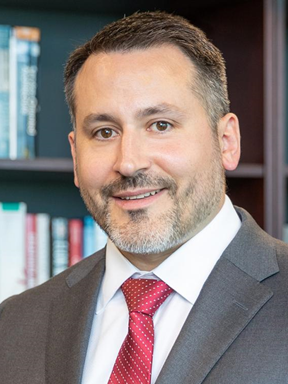 Dr. Charles Clancy is Senior Vice President and Chief Futurist at The MITRE Corporation where he serves as General Manager for MITRE Labs. In this role he oversees the corporate strategy in applied science and advanced technology, MITRE’s innovation centers, and its solution platforms. Prior to joining MITRE, Dr. Clancy was the Bradley Professor of Electrical and Computer Engineering at Virginia Tech where he led several major university-level and state-wide initiatives and centers focused in cyber and national security. He started his career as a researcher at the National Security Agency. He is co-author to six books and over 250 academic papers, patents, and standards. His research interests focus on the intersection between digital communications, artificial intelligence, and information security.
Dr. Charles Clancy is Senior Vice President and Chief Futurist at The MITRE Corporation where he serves as General Manager for MITRE Labs. In this role he oversees the corporate strategy in applied science and advanced technology, MITRE’s innovation centers, and its solution platforms. Prior to joining MITRE, Dr. Clancy was the Bradley Professor of Electrical and Computer Engineering at Virginia Tech where he led several major university-level and state-wide initiatives and centers focused in cyber and national security. He started his career as a researcher at the National Security Agency. He is co-author to six books and over 250 academic papers, patents, and standards. His research interests focus on the intersection between digital communications, artificial intelligence, and information security.
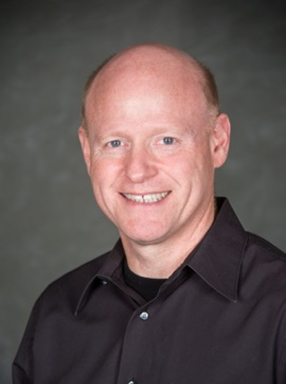 Prof. Eric W. Burger is Research Professor of Computer Science at Georgetown University (2011-present). He recently returned to Georgetown full time after his detail to the U.S. Federal Communications Commission where he served as CTO (2017-2019) and a detail to the White House Office of Science and Technology Policy where he served as the Assistant Director (2019-2021). He was instrumental in the repurposing of the 3.45 – 3.55 GHz band from Federal to private use (see FCC Auction 110) and amongst other duties he was responsible for the Administration’s communications and cybersecurity priorities, R&D budget, and the R&D, test, and standards portions of the Administration’s Securing 5G and Beyond Implementation Plan. Prior to Georgetown, Dr. Burger was the CTO of several network equipment and enterprise software companies. Dr. Burger is a Senior Member of the National Academy of Inventors, Distinguished Member of the ACM, and Senior Member of the IEEE. He has a SBEE, MBA, and PhD in Computer Science from the Massachusetts Institute of Technology, Katholieke Universiteit Leuven, and Illinois Institute of Technology.
Prof. Eric W. Burger is Research Professor of Computer Science at Georgetown University (2011-present). He recently returned to Georgetown full time after his detail to the U.S. Federal Communications Commission where he served as CTO (2017-2019) and a detail to the White House Office of Science and Technology Policy where he served as the Assistant Director (2019-2021). He was instrumental in the repurposing of the 3.45 – 3.55 GHz band from Federal to private use (see FCC Auction 110) and amongst other duties he was responsible for the Administration’s communications and cybersecurity priorities, R&D budget, and the R&D, test, and standards portions of the Administration’s Securing 5G and Beyond Implementation Plan. Prior to Georgetown, Dr. Burger was the CTO of several network equipment and enterprise software companies. Dr. Burger is a Senior Member of the National Academy of Inventors, Distinguished Member of the ACM, and Senior Member of the IEEE. He has a SBEE, MBA, and PhD in Computer Science from the Massachusetts Institute of Technology, Katholieke Universiteit Leuven, and Illinois Institute of Technology.
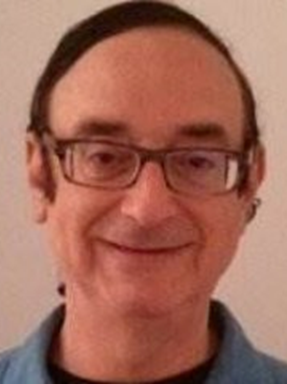 Dr. Moti Yung is a Security and Privacy Research Scientist with Google. He got his PhD from Columbia University in 1988. Previously, he was with IBM Research, Certco, RSA Laboratories, and Snap. He has also been an adjunct senior research faculty at Columbia, where he has co-advised and worked with PhD students. His contributions to research and development treat science and technology holistically: from the theoretical mathematical foundations, via conceptual mechanisms, to applied cryptography, and to participation in developing actual industrial products.
Dr. Moti Yung is a Security and Privacy Research Scientist with Google. He got his PhD from Columbia University in 1988. Previously, he was with IBM Research, Certco, RSA Laboratories, and Snap. He has also been an adjunct senior research faculty at Columbia, where he has co-advised and worked with PhD students. His contributions to research and development treat science and technology holistically: from the theoretical mathematical foundations, via conceptual mechanisms, to applied cryptography, and to participation in developing actual industrial products.
Yung is a fellow of the IEEE, the Association for Computing Machinery (ACM), the International Association for Cryptologic Research (IACR), and the European Association for Theoretical Computer Science (EATCS). In 2010 he gave the IACR Distinguished Lecture. He is the recipient of the 2014 ACM’s SIGSAC Outstanding Innovation award, and the 2014 ESORICS (European Symposium on Research in Computer Security). In 2018 he received the IEEE-CS W. Wallace McDowell Award. In 2020 he received the test-of-time award for a paper predicting ransomware co-authored in 1996 in IEEE’s Symp. on Security and Privacy; also in 2020 he received the IACR’s PKC conference test-of-time award for a paper he co-authored in 1998. In 2021 he received the IEEE-CS Computer Pioneer Award.
Workshop Co-Chairs
 Dr. Ashutosh Dutta is currently senior scientist and 5G Chief Strategist at the Johns Hopkins University Applied Physics Laboratory (JHU/APL). Ashutosh also serves as the chair for Electrical and Computer Engineering Department of Engineering for Professional Program at Johns Hopkins University. His career, spanning more than 30 years, includes Director of Technology Security and Lead Member of Technical Staff at AT&T, CTO of Wireless for NIKSUN, Inc., Senior Scientist and Project Manager in Telcordia Research, Director of the Central Research Facility at Columbia University, adjunct faculty at NJIT, and Computer Engineer with TATA Motors. He has more than 100 publications and 31 issued patents. Ashutosh is co-author of the book, titled, “Mobility Protocols and Handover Optimization: Design, Evaluation and Application” published by IEEE and John & Wiley. He has been serving as the founding Co-Chair for the IEEE Future Networks Initiative and serves as co-chair for security working group within FNI. Ashutosh is a Member-At-Large within IEEE Communications Society and served as Distinguished Lecturer from 2017-2020 and as an ACM Distinguished Speaker (2020-2022). Ashutosh is a Distinguished Alumnus of NIT Rourkela and obtained his MS in Computer Science from NJIT; and Ph.D. in Electrical Engineering from Columbia University, New York under the supervision of Prof. Henning Schulzrinne. Ashutosh is a Fellow of IEEE and senior member of ACM.
Dr. Ashutosh Dutta is currently senior scientist and 5G Chief Strategist at the Johns Hopkins University Applied Physics Laboratory (JHU/APL). Ashutosh also serves as the chair for Electrical and Computer Engineering Department of Engineering for Professional Program at Johns Hopkins University. His career, spanning more than 30 years, includes Director of Technology Security and Lead Member of Technical Staff at AT&T, CTO of Wireless for NIKSUN, Inc., Senior Scientist and Project Manager in Telcordia Research, Director of the Central Research Facility at Columbia University, adjunct faculty at NJIT, and Computer Engineer with TATA Motors. He has more than 100 publications and 31 issued patents. Ashutosh is co-author of the book, titled, “Mobility Protocols and Handover Optimization: Design, Evaluation and Application” published by IEEE and John & Wiley. He has been serving as the founding Co-Chair for the IEEE Future Networks Initiative and serves as co-chair for security working group within FNI. Ashutosh is a Member-At-Large within IEEE Communications Society and served as Distinguished Lecturer from 2017-2020 and as an ACM Distinguished Speaker (2020-2022). Ashutosh is a Distinguished Alumnus of NIT Rourkela and obtained his MS in Computer Science from NJIT; and Ph.D. in Electrical Engineering from Columbia University, New York under the supervision of Prof. Henning Schulzrinne. Ashutosh is a Fellow of IEEE and senior member of ACM.
 Dr. Eman Hammad is an interdisciplinary researcher focusing on cybersecurity, trustworthy & resilient critical infrastructure systems. She obtained her PhD in Electrical & Computer Engineering from the University of Toronto. Eman combines practical experience and theoretical research to shape her vision for resilient-by-design solutions in the connected world. Eman's primary focus is on how a deeper understanding of interactions between critical physical systems, communication and enabling technologies can help design new classes of operational solutions that are more resilient to cyber/physical disruptions. Her research has been recognized with merit awards (best paper award, best poster award) and has been featured on the Smart Cybersecurity Network.
Dr. Eman Hammad is an interdisciplinary researcher focusing on cybersecurity, trustworthy & resilient critical infrastructure systems. She obtained her PhD in Electrical & Computer Engineering from the University of Toronto. Eman combines practical experience and theoretical research to shape her vision for resilient-by-design solutions in the connected world. Eman's primary focus is on how a deeper understanding of interactions between critical physical systems, communication and enabling technologies can help design new classes of operational solutions that are more resilient to cyber/physical disruptions. Her research has been recognized with merit awards (best paper award, best poster award) and has been featured on the Smart Cybersecurity Network.
 Dr. Michael A. Enright is the CEO and President of Quantum Dimension, Inc. and has 30 years of experience in security, Artificial Intelligence (AI) and Machine Learning (ML), embedded computing, image and video processing, RF communication and more. Dr. Enright has a Ph.D. in Electrical Engineering from the University of Southern California (USC) thru his work with the Signal and Image Processing Institute (SIPI) at USC, an M.S. in Electrical Engineering from the Illinois Institute of Technology, an M.S. in Mechanical Engineering from the University of Missouri-Columbia and a B.S. in Aeronautical and Astronautical Engineering from the University of Illinois at Champaign-Urbana and is a Senior Member of the IEEE.
Dr. Michael A. Enright is the CEO and President of Quantum Dimension, Inc. and has 30 years of experience in security, Artificial Intelligence (AI) and Machine Learning (ML), embedded computing, image and video processing, RF communication and more. Dr. Enright has a Ph.D. in Electrical Engineering from the University of Southern California (USC) thru his work with the Signal and Image Processing Institute (SIPI) at USC, an M.S. in Electrical Engineering from the Illinois Institute of Technology, an M.S. in Mechanical Engineering from the University of Missouri-Columbia and a B.S. in Aeronautical and Astronautical Engineering from the University of Illinois at Champaign-Urbana and is a Senior Member of the IEEE.
Track Descriptions
Standards & Architecture
5G technologies provide ubiquitous connectivity while also addressing the demands of both individual consumers and businesses. In order to support various 5G use-cases and applications, there is a critical need to design a secure and trusted end-to-end network. 5G networks need to be flexible, adaptive, scalable and able to dynamically react to the changes in the network quite rapidly. Various standards bodies including 3GPP, IEEE, and ETSI have been looking into security issues for 5G networks. To that end, the IEEE Security Working Group is calling presenters to provide and share insights around progress and gaps in 5G security standards and architectures as relevant to 5G deployments and use-cases. It is the intent of the FNI Security WG to develop a roadmap that will evolve into a set of standards to address the technology gaps in 5G and future networks security.
To that end, this area will investigate current work that includes:
- Work on frameworks and standards that incorporate security and privacy principles, e.g. ITU-D, IEEE, 3GPP, GSMA, NIST, ETSI, Open RAN, ISO and others as they apply to the different security capabilities.
- Security architectures and approaches as applicable to different deployment plans and application verticals for 5G networks and core services.
- Applicable or extended Security & Privacy frameworks and guidance that support relevant governance, threat modeling and risk management.
- The effect, challenges and options with regard to security of deploying open systems such as Open RAN, Open Core, etc.
- Security automation and orchestration that addresses the different components of the 5G architecture and 5G enabled market verticals.
- Different AI/ML implementation architectures, options and trade-offs in across the 5G network use-cases and relevant market verticals
Industry Applications
In the Industry Applications track, we invite speakers to discuss the industrial deployments of security paradigms and their adoption by stakeholders in the value chain, such as operators, vendors, integrators, and the like. The objective of this track is to understand stakeholders' strategies and plans around 5G security and privacy specifically to support the evolution of 5G deployments and the different 5G market verticals. We encourage contributors to share their experiences and how that it may be beneficial to 5G and Future Networks security and privacy. Descriptions of current work on pre-market 5G testbeds, applications, etc. that have been developed through organizations such as ITU, ETSI, 3GPP 5G PPP, and others are also welcomed in this track.
Invited contributions include but are not limited to the following:
- 5G networks and use-cases updated threat modeling and threat landscape.
- Description of 5G testbeds and applications that have been developed or are currently under development.
- Existing and under-development advanced security and privacy technologies that are relevant and could benefit 5G and future networks.
- Practical approaches for scalable and effective security implementation and orchestration across different networks (urban, rural, disperse, etc).
- Interoperability security challenges and approaches considering evolution of deployments, interconnectivity with public/private cloud providers.
- Results and reports of recent studies and pilot projects considering 5G security approaches including: Zero-Trust Architectures, MEC enabled DDoS protection, Distributed IAM, etc.
Research Challenges
In the research topic area, the workshop seeks to expand discussions into newer and future topics related to 5G future networks security and privacy. The goal of this track is to investigate innovative and advanced approaches to improve 5G and future networks security and privacy. For 5G and Future networks to enable continued innovation, trustworthiness needs to be considered in the different layers to enable effective security and risk management. We invite research visions and efforts to examine how these objectives can be accomplished.
Invited research areas of interest include, but are not limited to:
- Potential benefits of cross-layer and context-aware approaches to secure by-design 5G networks and systems.
- Optimization of trade-offs between sustainable security requirements and operational performance to enable the 5G use-cases (mMTC, URRLC) and market verticals.
- Benefits and risks of utilizing the emerging and open technologies such as adversarial ML, GAN, RNN, O-RAN as core components of 5G networks.
- Orchestration and optimization of virtualized and distributed security NFV (security-as-a-service) as applicable for 5G and beyond architectures, use-cases (mMTC, URLLC, eMMB) and market verticals.
- Advances in 5G networks security domains including: spectrum and physical layer security, device (hardware and software) security, RAN and Cloud RAN security, MEC Security, IAM, etc.
- Data protection, sharing and privacy-centric approaches in 5G networks and applications.
- Vertical-specific 5G security and privacy challenges and approaches. Verticals could include Critical Infrastructures, Intelligent Transportation and Autonomous Vehicles, Internet of Things, e-Health among others.
- Methods and use-cases for the use of AI/ML in 5G security and privacy.
Systems Optimization Imperatives, Techniques, and Opportunities for Future Networks Workshop

Free & Virtual | 21,22,25 January 2021
This workshop will explore current technological advancements in autonomic/autonomous networking, Artificial Intelligence (AI) approaches for Autonomics, various related industry standards, industrial deployment of autonomics paradigms, e.g. Self-organizing Networks (SON) for radio access networks, autonomics use cases, as well as associated research challenges. The objective of this workshop is to bring together experts from the globe and create a joint platform for information exchanges, presentation of results, and fruitful discussions to identify gaps and future directions for the IEEE FNI Systems Optimization Working Group.
Event Recordings
Event Presentations (57 Mb)
Event Schedule
The event took place from 9:00am to 12:30pm Eastern Time US (GMT -5) each day.
Thursday 21 January - Watch Recording
| 09:00-09:20 | Introduction - Systems Optimization Leadership (Ashutosh Dutta, Lyndon Ong, Meryem Simsek) |
| 09:20-09:40 | Invited Talk: Multi-Layer Autonomics in ETSI GANA and Federated Knowledge Planes (KPs) for Autonomics - Tayeb Ben Meriem (Orange, ETSI WG Chair) |
| 09:40-10:00 | Joint Wireless and Computing Resource Management in Multi-access Edge Clouds – S. Josilo, G. Dan (KTH Royal Institute of Technology) |
| 10:00-10:20 | Industry Talk: Topology Aware Scheduling and Orchestration of Cloud Native Applications – A. Kumar, R. Potluri, H. Nahata (Verizon) |
| 10:20-10:40 | Industry Talk: 3GPP Network Automation Efforts via NWDAF – D. Gutierrez-Esteves (Samsung) |
| 10:40-11:00 | Invited Talk: 5G, original ambitions and a path to 6G - Kaniz Mahdi (VMWare) |
| 11:00-11:10 | Break |
| 11:10-11:40 | Keynote: Leveraging the NGMN E2E Architecture Framework on Autonomic Networking – Sebastian Thalanany (US Cellular, NGMN Project Lead, 5G E2E) |
| 11:40-12:00 | Invited Talk: Rakuten Autonomous Network Roadmap & ITU-T FG AN – Miro Salem (Rakuten Mobile) |
| 12:00-12:40 | Birds of Feather session – Kishor, Aarne Mammela to lead |
Friday 22 January - Watch Recording
| 09:00-09:15 | Introduction - Systems Optimization Leadership |
| 09:15-09:45 | Keynote Session: Recursive Neural Networks for Handover Management in Next Generation SON - Lorenza Giupponi (CTTC) |
| 09:45-10:05 | Invited Talk: Autonomic Management and Control (AMC) Requirements in IMT2020 - Taesang Choi (ETRI, ITU-T SG13) |
| 10:05-10:25 | Optimization algorithms in Neural Network: A Review – Y. Arshak (U. of Zakho, Iraq) |
| 10:25-10:45 | ARACHNE: A vision for Adversary-Resilient, Available C3 for Hostile Network Environments, E. McCorkle (JHU/APL) |
| 10:45-11:00 | Break |
| 11:00-11:20 | Invited Talk: Autonomics in the ODA (Open Digital Architecture) & TM Forum Autonomous Networks Initiative - Dave Milham (TM Forum) |
| 11:20-11:40 | Invited Talk: Automated and Intelligent Management (AIM) Framework Development in BroadBand Forum (BBF) – Ken Kerpez (BBF) |
| 11:40-12:00 | Quantum processing for system optimization in emerging networks – D. Krishnaswamy (Reliance Jio Platforms) |
| 12:00-12:20 | Harnessing Edge Intelligence for Video Services – S. Batabyal (BITS Pilani) |
| 12:20-12:40 | Systems Optimization for Handoff - Ashutosh Dutta (JHU/APL) |
Monday 25 January - Watch Recording
| 09:00-09:15 | Introduction - Systems Optimization Leadership |
| 09:15-09:35 | Invited Talk: Experiences in Deployments of Autonomics related technologies – Yaniv Vakhnin (CellWize) |
| 09:35-09:55 | ETSI 5G PoC on 5G Network Slices Creation with ETSI GANA Autonomic & Cognitive Management of 5G Slices & E2E Orchestration – Muslim Elkotob (Vodafone) |
| 09:55-10:15 | Invited Talk: Intelligent Management Autonomics Use Cases in Evolving and Future Fixed Networks – Stefano Corona (Vodafone) |
| 10:15-10:35 | Towards the Standardization of an Overarching Blueprint of Operational Principles of Autonomic/Autonomous Networks – Ranganai Chaparadza (Altran/CapGemini) |
| 10:35-10:50 | Break |
| 10:50-12:00 | Panel Session: Industry All-Stakeholder Panel Session on Autonomic/Autonomous Networking, Industry Standards Harmonization, and Way Forward |
| 12:00-12:20 | Wrap Up |
3rd Workshop on 5G Technologies for First Responder and Tactical Networks - Thank You
| Main/Program | About Workshop | Speaker/Track Details |

Thank you for registering for the 2020 Virtual Workshop on 5G Technologies for First Responder and Tactical Networks!
We invite you to explore the event site and determine which track sessions you want to attend.
Check out the Main/Program page for the latest session information.
Virtual Event || Friday 23 October 2020
Time: 8:00am - 4:30pm EDT
3rd Workshop on 5G Technologies for First Responder and Tactical Networks - Speaker/Track Details
| Main/Program | About Workshop | Speaker/Track Details |

Virtual Event || On-demand through 15 December 2020
Register for Free at this LINK.
NOTE: The broadcast will convert to on-demand after 23 October. You can still register up until 15 December to access sessions.
For questions or more information, please email Ashutosh Dutta at This email address is being protected from spambots. You need JavaScript enabled to view it..
Keynotes and Inivited Speaker Plenary
Opening Remarks | 8:30 am
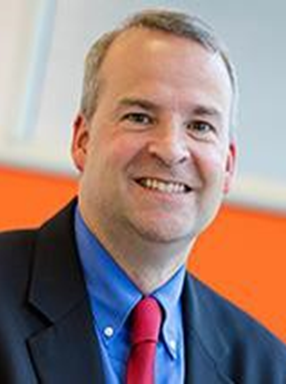 Speaker: Andrew C. Oak, JHU/ APL
Speaker: Andrew C. Oak, JHU/ APL
Bio: Mr. Andrew C. Oak was appointed Mission Area Executive (MAE) for Homeland Protection at the Johns Hopkins University Applied Physics Laboratory (JHU/APL) on May 26, 2020. In this role, he oversees research and development (R&D) to protect the United States from a variety of asymmetric threats that include chemical and biological attacks, critical infrastructure attacks, and foreign intelligence operations. This amounts to approximately 350 full-time equivalent staff of effort, spanning diverse disciplines such as data analytics, cyber, communications, sensors, physical sciences, and biology. As the nation’s largest University Affiliated Research Center, JHU/APL makes critical contributions to a wide variety of nationally significant technical and scientific challenges for the Department of Defense, the Intelligence Community, the Department of Homeland Security, and other Government sponsors.
Prior to his current appointment, Mr. Oak served as the Acting MAE for JHU/APL’s Special Operations Mission Area (SOMA). In the SOMA, he defined the strategy and oversaw execution of JHU/APL’s R&D to meet the needs of sponsors across the Special Operations, National Intelligence, and counter weapons of mass destruction communities. During his tenure, Mr. Oak revectored this R&D, about 500 full-time equivalent staff of effort, to focus on helping SOMA sponsors achieve mission success despite peer competition and the availability of advanced technology to potential adversaries.
Earlier in his JHU/APL career, Mr. Oak served in a variety of technical and technical leadership roles spanning the communications and cyber domains. He stood up and served as Supervisor of the Cyber Warfare Systems Group, and previously served as the Chief Engineer of the Communication and Network Systems Group. He has published conference papers and taught classes in radio frequency (RF) communications and networking systems, and served as a member for the RF Panel of the National Intelligence University’s Emerging Technologies Conference on Foundational Cyber Technology. He has also served on a Defense Science Board panel addressing cyber supply chain issues, with the panel receiving a SANS 2018 Difference Maker Award for its efforts.
Mr. Oak joined APL in 1996, after earning a Master of Science degree in Electrical Engineering from the University of Virginia and a Bachelor of Science degree in Electrical Engineering from the University of Massachusetts at Amherst.
Keynote 1 | 8:45 am
 Speaker: Russell Becker, DHS S&T
Speaker: Russell Becker, DHS S&T
Title: Leveraging 5G for DHS Missions
Bio: Russell Becker serves as the Director, Office for Interoperability and Compatibility. He is also the acting Deputy, Innovative Systems Branch of DHS S&T’s Technology Centers Division which focuses on intelligent sensors and autonomous systems; resilient communications equipment, data, and networks; and enhanced biometrics and identity capabilities to enhance knowledge, advance state of the art, inform investments and drive actions in national threats, hazards, and risks. Prior to his role in DHS S&T, Russell served 21 years as an active duty US Marine Corps officer. For the first 5 years, Russell served as an Infantry Officer. He then served the remaining 16 years as a Communications Officer in several operational positions with a three-year stint as an Acquisitions Project Officer for narrow and wideband radio systems. Russell deployed once as an infantry platoon commander and once as Small Unit Weapons and Tactics Subject Matter Expert conducting Anti-terrorism and Force Protection assessments with the Joint Security Directorate Forward, US Central Command. As a Captain, Russell completed four combat deployments to Iraq. In his final tour as a Lieutenant Colonel, Russell led in two different billets within US European Command. He first led the Theater Satellite Communication, Nuclear Command, Control and Computers, Theater Frequency Spectrum and Communications Security offices as the Branch Chief, C4 Support Operations Division, Joint Command, Control, Communications, Computers (C4)/Cyber Directorate. For the final two and a half years, Russell moved to the Interoperability, Cyber Engagements & Exercises Division/ J67 and served as the US Senior exercise planner for NATO interoperability exercises Steadfast Cobalt 2017 and 2018 and US lead C4/Cyber planner for Exercise Trident Juncture 2018. Russell holds a Master of Science in Electrical Engineering from the Naval Postgraduate School, Monterey, CA.
Invited Speaker 1 | 9:20 am Speaker: Dr. Monisha Ghosh, Federal Communications Commission (FCC)
Speaker: Dr. Monisha Ghosh, Federal Communications Commission (FCC)
Title: Modernizing the Wireless Priority Service (WPS) rules
Bio: Dr. Monisha Ghosh is serving as the Chief Technology Officer (CTO) of the Federal Communications Commission (FCC) since Jan. 13, 2020. Prior to this, she was at NSF as a rotating Program Director since September 2017, in the Computer and Network System (CNS) division within the Directorate of Computer & Information Science and Engineering (CISE) where she managed wireless networking research within the Networking Technologies and Systems (NeTS) program. Dr. Ghosh is also a Research Professor at the University of Chicago, with a joint appointment at the Argonne National Laboratories, where she conducts research on wireless technologies for the IoT, 5G cellular, next generation Wi-Fi systems and spectrum coexistence. Prior to joining the University of Chicago in September 2015, she worked at Interdigital, Philips Research and Bell Laboratories, on various wireless systems such as the HDTV broadcast standard, cable standardization and on cognitive radio for the TV White Spaces. She has been an active contributor to many industry standards and was recognized with a Certificate of Appreciation for her outstanding contributions to IEEE 802.22. She is a Fellow of the IEEE.
She received her Ph.D. in Electrical Engineering from the University of Southern California in 1991, and her B. Tech from the Indian Institute of Technology, Kharagpur (India) in 1986.
Invited Speaker 2 | 9:50 am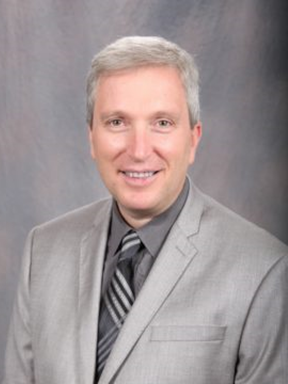 Speaker: Dr. Alex Sprintson, National Science Foundation (NSF)
Speaker: Dr. Alex Sprintson, National Science Foundation (NSF)
Title: Securing Next-Generation Wireless Networks: Challenges and Opportunities
Bio: Dr. Alex Sprintson joined NSF as a rotating Program Director in September 2018, in the Directorate of Computer & Information Science and Engineering (CISE). He manages networking research within the Networking Technologies and Systems (NeTS) and Secure and Trustworthy Cyberspace (SaTC) programs. He also serves as a program manager for the NSF/Intel Partnership on Machine Learning for Wireless Networking Systems (MLWiNS) program, Spectrum Innovation Initiative (SII), and Platforms for Advanced Wireless Research (PAWR). Alex Sprintson is a faculty member in the Department of Electrical and Computer Engineering, Texas A&M University, College Station, where he conducts research on wireless network coding, distributed storage, and software-defined networks. Dr. Sprintson received the Wolf Award for Distinguished Ph.D.students, the Viterbi Postdoctoral Fellowship, the TAMU College of Engineering Outstanding Contribution Award, and the NSF CAREER award. From 2013 and 2019, he served as an Associate Editor of the IEEE Transactions on Wireless Communications. He has been a member of the Technical Program Committee for the IEEE Infocom 2006-2021.
Invited Speaker 3 | 10:20 am Speaker: Chris Baker, First Responder Network Authority
Speaker: Chris Baker, First Responder Network Authority
Title: Incident Data Pain Points – A first responder perspective of data usage in a large incident response
Bio: Chris Baker is a Senior Public Safety Advisor with the First Responder Network Authority assigned to the Northern California area and as an aviation subject matter expert with over 32 years as a first responder. Chris retired as a career Battalion Chief/Paramedic and Investigator with the Roseville (CA) Fire Department with assignments including operations, investigations, administration, technology, homeland security, and safety. Chris has led various public safety technology projects, and held operational and communications roles on large incidents and incident management teams. Chris’s experience includes 20 years as a peace officer, and prior service as an engineer in the wireless industry constructing and operating cellular networks across the U.S., training engineers, and developing wireless testing tools. Chris holds a Bachelor of Science in Electrical and Electronic Engineering, Juris Doctor, and is a registered electrical engineer and member of the State Bar in California. He currently volunteers with the Civil Air Patrol as a pilot, and as volunteer chief officer and paramedic in Plumas County, CA.
Keynote 2 | 2:45 pm Speaker: Dr. Joseph B. Evans, Department of Defense (DoD)
Speaker: Dr. Joseph B. Evans, Department of Defense (DoD)
Title: DoD 5G to Next G Initiative
Bio: Dr. Joseph B. Evans is the inaugural Technical Director for 5G, reporting directly to the Under Secretary of Defense for Research and Engineering within the Office of the Secretary of Defense. Dr. Evans is responsible for coordinating 5G efforts across the Department of Defense, oversees and directs the Department's “5G to Next G” research and development portfolio, and advises the Under Secretary of Defense for Research and Engineering on 5G-related topics.
Dr. Evans served as a Program Manager in the DARPA Strategic Technology Office from 2015 to 2019. While there, he started the SHARE (Secure Handhelds on Assured Resilient networks at the tactical Edge) and GCA (Geospatial Cloud Analytics) programs, and managed the Mobile Hotspots, RadioMap, SSPARC (Shared Spectrum Access for Radar and Communications), CommEx (Communications Under Extreme RF Spectrum Conditions), WND (Wireless Network Defense), and DyNAMO (Dynamic Network Adaptation for Mission Optimization) programs.
Among other service activities, Dr. Evans served as a Council member for the Computing Community Consortium Council from 2012 to 2015, and as a Member-at-Large on the IEEE Communications Society Board of Governors from 2009 to 2011.
Dr. Evans received the B.S.E.E. degree from Lafayette College in 1983, and the M.S.E., M.A., and Ph.D. degrees from Princeton University in 1984, 1986, and 1989, respectively. He is an IEEE Fellow.
Panel: Understanding the Impact of 5G on Operations | 3:20 pm Speaker: Ruth Vogel, Johns Hopkins Applied Physics Laboratory (JHAPL)
Speaker: Ruth Vogel, Johns Hopkins Applied Physics Laboratory (JHAPL)
Bio: Ruth Vogel has more than 25 years of experience working in homeland security and emergency management at federal, state and local levels. She is currently the Emergency Response Systems Program Manager at the Johns Hopkins Applied Physics Laboratory (JHAPL). She provides program management, systems engineering, data science and first responder subject matter expertise to a number of sponsors to include the Department of Homeland Security Science and Technology Directorate (DHS S&T), the Federal Emergency Management Agency (FEMA) and DHS Cybersecurity and Infrastructure Security Agency.
Ms. Vogel previously worked for the Maryland Emergency Management Agency (MEMA), where she was the Director of the Exercise and Training Branch. Prior to working for MEMA, she was employed by the City of Baltimore and served as the City’s Director for Acute Communicable Disease and the Preparedness and Response Program. Ms. Vogel is also a Critical Care Nurse and Emergency Medical Technician (EMT). She has served in a variety of first responder roles to include emergency medical services, search and rescue, incident command, state liaison for National Special Security Events to the National Capital Region, and continues to serve on a variety of emergency management advisory committees.
Ms. Vogel has undergraduate degrees from the University of Minnesota in Nursing, University of North Dakota in Health and Medical Services, and Epidemiology, and a graduate degree in Public Health from the Johns Hopkins University. She has also completed graduate work in systems engineering and data science and holds a number of certifications in emergency management and incident command systems and is a Master Homeland Security Exercise and Evaluation Practitioner.
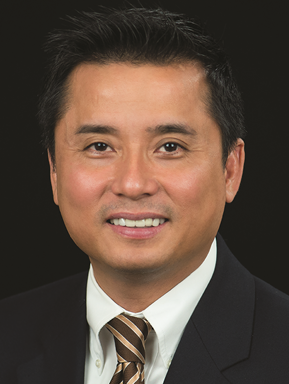 Speaker: Cuong Luu, DHS S&T
Speaker: Cuong Luu, DHS S&T
Bio: Cuong Luu serves as a Program Manager in the Office for Interoperability and Compatibility Technology Centers Branch under the Office of Science and Engineering Division within the U.S Department of Homeland Security’s Science and Technology Directorate. In this role, he is responsible for managing, researching, and coordinating in emerging technologies for communication systems. Mr. Luu has an extensive background in applied program and project management. His experience has focus on large, complex technology based projects with an emphasis on management of technology driven services. Cuong Luu experience includes telecommunication, network administration, Information Technology services, and federal and regional government agencies.
 Speaker: Rob Dew, DHS ECD
Speaker: Rob Dew, DHS ECD
Bio: Rob Dew is a Senior Technologist Advisor with the U.S. Department of Homeland Security (DHS), Cybersecurity and Infrastructure Security Agency (CISA) where he provides overall technical advisement on design, development, testing, and deployment of priority and interoperability of Next Generation Network Priority Services. He has over 25 years of wireless network design, systems engineering and operations experience and has consulted in the United States, Europe, Latin America, the Middle East, and Asia. He holds a B.S. in Electrical Engineering from Virginia Tech and a M.S. in Engineering Management from The George Washington University.
 Speaker: Jeff Bratcher, First Responder Network Authority
Speaker: Jeff Bratcher, First Responder Network Authority
Bio: Jeff Bratcher is the Chief Technology and Operations Officer of the FirstNet Authority. Mr. Bratcher is a key leader involved with the shaping of the technology for the Nationwide Public Safety Broadband Network (NPSBN). He led the formation of the First Responder Network Authority technology teams as well as the state-of-the-art FirstNet Innovation and Technology lab located at the FirstNet office in Boulder, Colorado. Building upon his success as the Chief Technology Officer (CTO), Mr. Bratcher was also appointed to lead the Operations Office as the FirstNet Authority transitions its focus to the implementation of the nationwide FirstNet broadband network built with AT&T. Mr. Bratcher began his federal service in 2003 with the National Telecommunications and Information Administration (NTIA) Institute for Telecommunication Sciences (ITS) also located in Boulder, Colorado. Prior to joining federal service he worked for ten years within the wireless private sector deploying several of the first digital cellular systems in U.S. and international markets. Mr. Bratcher received his BS in Electrical Engineering from Texas Tech University and his MS in Telecommunications from Southern Methodist University.
Closing Remarks | 4:20 pm Speaker: Rob Bartholet, Johns Hopkins Applied Physics Laboratory (JHAPL)
Speaker: Rob Bartholet, Johns Hopkins Applied Physics Laboratory (JHAPL)
Bio: Robert (Rob) Bartholet is the supervisor of the Johns Hopkins University Applied Physics Laboratory’s (APL) Communications Systems Branch, which focuses on transforming the communications capabilities of APL's government sponsors to provide a decisive advantage in their critical missions. Bartholet joined APL as a communications systems engineer, serving in roles ranging from technical contributor, project manager, and organizational leader. Prior to joining the Laboratory, Bartholet completed 28 years of active duty in the U.S. Army, with three successful commands of field artillery units. He spearheaded the Army's efforts to build battlefield digital communications networks for tactical ground and air maneuver units, served as an assistant professor at the U.S. Military Academy at West Point, and is a plank owner of the Defense Information Systems Agency Command Center. Bartholet has a B.S. in electrical engineering from the U.S. Military Academy, an M.S. in computer science from the University of Virginia and an M.S. in strategic studies from the U.S. Army War College.
*NOTE: All times are Eastern Time U.S.
| Presentation Time | Presentation Title | Authors |
| 11:00 am | Joint MIMO-Radar-MIMO-Communications in the 5G Era | Kumar Vijay Mishra (United States Army Research Laboratory, USA) |
| 11:20 am | Adversarial Machine Learning for 5G Security | Yalin E Sagduyu (Intelligent Automation, Inc., USA); Tugba Erpek (Virginia Tech, USA) |
| 11:40 am | Potentials and Challenges of 5G mmWave Technologies in Public Safety Scenarios | Michele Zorzi (University of Padova, Italy) |
| 12:00 pm | End-to-end Simulations for 5G Public Safety Scenarios | Michele Polese (Northeastern University, USA) |
| 1:00 pm | Exploring 5G Dual-Connectivity for Increased Security | Jessica Bridgland (JHUAPL, USA); Cherita L Corbett (Johns Hopkins University Applied Physics Lab, USA); Hyunwoo Warren Kim (Johns Hopkins University Applied Physics Laboratory, USA); Ryan Pepito (JHU/APL, USA) |
| 1:20 pm | Fundamentals and Open Problems for Post-Disaster Communications |
Maurilio Matracia and Mustafa A Kishk (King Abdullah University of Science and Technology, Saudi Arabia) |
| 1:40 pm | Autonomous Federated Byzantine Agreement for Decentralized Access in 5G Emergency Service and First Responder Networks | Steven Platt and Miquel Oliver (Universitat Pompeu Fabra, Spain) |
| 2:00 pm | SDN-Enabled Space-Air-Ground Networks: Towards a Convergence | Nariman Torkzaban, Anousheh Gholami and John S. Baras (University of Maryland, USA); Chrysa Papagianni (Nokia Bell Labs, Belgium) |
| 2:20 pm | Securing the 5G Era | Nicolas Sklavos (University of Patras, Greece) |
*NOTE: All times are Eastern Time U.S.
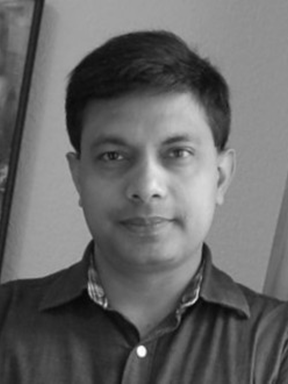 Dr. Kumar Vijay Mishra (S'17-M'15-SM'18) obtained a Ph.D. in electrical engineering and M.S. in mathematics from The University of Iowa in 2015, and M.S. in electrical engineering from Colorado State University in 2012, while working on NASA’s Global Precipitation Mission Ground Validation (GPM-GV) weather radars. He received his B. Tech. summa cum laude (Gold Medal, Honors) in electronics and communication engineering from the National Institute of Technology, Hamirpur (NITH), India in 2003. He is currently U. S. National Academies Harry Diamond Distinguished Fellow at the United States Army Research Laboratory (ARL), Adelphi; Technical Adviser to Singapore-based automotive radar start-up Hertzwell; and honorary Research Fellow at SnT - Interdisciplinary Centre for Security, Reliability and Trust, University of Luxembourg. Previously, he had research appointments at Electronics and Radar Development Establishment (LRDE), Defence Research and Development Organisation (DRDO) Bengaluru; IIHR - Hydroscience & Engineering, Iowa City, IA; Mitsubishi Electric Research Labs, Cambridge, MA; Qualcomm, San Jose; and Technion - Israel Institute of Technology. He is the recipient of the American Geophysical Union Editors' Citation for Excellence (2019), Royal Meteorological Society Quarterly Journal Editor's Prize (2017), Viterbi Postdoctoral Fellowship (2015, 2016), Lady Davis Postdoctoral Fellowship (2017), DRDO LRDE Scientist of the Year Award (2006), NITH Director’s Gold Medal (2003), and NITH Best Student Award (2003). He has received Best Paper Awards at IEEE MLSP 2019 and IEEE ACES Symposium 2019. He has been the Associate Editor of IEEE Transactions on Aerospace and Electronic Systems. His research interests include radar systems, signal processing, remote sensing, and electromagnetics.
Dr. Kumar Vijay Mishra (S'17-M'15-SM'18) obtained a Ph.D. in electrical engineering and M.S. in mathematics from The University of Iowa in 2015, and M.S. in electrical engineering from Colorado State University in 2012, while working on NASA’s Global Precipitation Mission Ground Validation (GPM-GV) weather radars. He received his B. Tech. summa cum laude (Gold Medal, Honors) in electronics and communication engineering from the National Institute of Technology, Hamirpur (NITH), India in 2003. He is currently U. S. National Academies Harry Diamond Distinguished Fellow at the United States Army Research Laboratory (ARL), Adelphi; Technical Adviser to Singapore-based automotive radar start-up Hertzwell; and honorary Research Fellow at SnT - Interdisciplinary Centre for Security, Reliability and Trust, University of Luxembourg. Previously, he had research appointments at Electronics and Radar Development Establishment (LRDE), Defence Research and Development Organisation (DRDO) Bengaluru; IIHR - Hydroscience & Engineering, Iowa City, IA; Mitsubishi Electric Research Labs, Cambridge, MA; Qualcomm, San Jose; and Technion - Israel Institute of Technology. He is the recipient of the American Geophysical Union Editors' Citation for Excellence (2019), Royal Meteorological Society Quarterly Journal Editor's Prize (2017), Viterbi Postdoctoral Fellowship (2015, 2016), Lady Davis Postdoctoral Fellowship (2017), DRDO LRDE Scientist of the Year Award (2006), NITH Director’s Gold Medal (2003), and NITH Best Student Award (2003). He has received Best Paper Awards at IEEE MLSP 2019 and IEEE ACES Symposium 2019. He has been the Associate Editor of IEEE Transactions on Aerospace and Electronic Systems. His research interests include radar systems, signal processing, remote sensing, and electromagnetics.
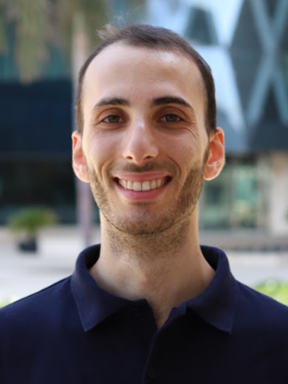 Maurilio Matracia received his B.Sc. and M.Sc. degrees in Energy and Electrical Engineering from the University of Palermo (UNIPA), Italy, in 2017 and 2019, respectively. He is currently pursuing the Ph.D. degree with the Computer, Electrical and Mathematical Science and Engineering Division at King Abdullah University of Science and Technology (KAUST), Saudi Arabia. His current research interest is stochastic geometry, with special focus on aerial platforms and other 5G technologies for rural and emergency communications.
Maurilio Matracia received his B.Sc. and M.Sc. degrees in Energy and Electrical Engineering from the University of Palermo (UNIPA), Italy, in 2017 and 2019, respectively. He is currently pursuing the Ph.D. degree with the Computer, Electrical and Mathematical Science and Engineering Division at King Abdullah University of Science and Technology (KAUST), Saudi Arabia. His current research interest is stochastic geometry, with special focus on aerial platforms and other 5G technologies for rural and emergency communications.
 Dr. Yalin Sagduyu is the Director of Networks and Security Division at Intelligent Automation, Inc. (IAI). He received his Ph.D. degree in Electrical and Computer Engineering from University of Maryland, College Park. At IAI, he directs a broad portfolio of R&D projects on 5G, network communications, security, and machine learning. His research interests are in 5G, wireless communications, networks, security, cognitive radio, optimization, machine learning, adversarial machine learning, and data analytics. He served as a Track Chair at IEEE PIMRC, IEEE GlobalSIP, and IEEE MILCOM, and in the organizing committee of IEEE GLOBECOM. He organized and chaired workshops at IEEE CNS, IEEE ICNP, ACM Mobicom, and ACM WiSec. He received the Best Paper Award at IEEE HST.
Dr. Yalin Sagduyu is the Director of Networks and Security Division at Intelligent Automation, Inc. (IAI). He received his Ph.D. degree in Electrical and Computer Engineering from University of Maryland, College Park. At IAI, he directs a broad portfolio of R&D projects on 5G, network communications, security, and machine learning. His research interests are in 5G, wireless communications, networks, security, cognitive radio, optimization, machine learning, adversarial machine learning, and data analytics. He served as a Track Chair at IEEE PIMRC, IEEE GlobalSIP, and IEEE MILCOM, and in the organizing committee of IEEE GLOBECOM. He organized and chaired workshops at IEEE CNS, IEEE ICNP, ACM Mobicom, and ACM WiSec. He received the Best Paper Award at IEEE HST.
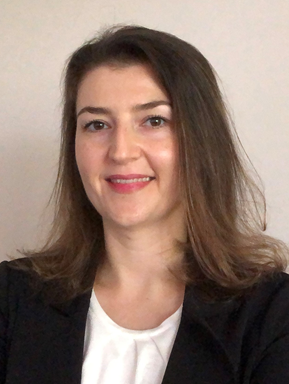 Dr. Tugba Erpek is a Lead Scientist at Networks and Security Division at Intelligent Automation, Inc. (IAI). She received her Ph.D. degree in Electrical and Computer Engineering from Virginia Tech. Her research interests include wireless communications, 5G communications systems, physical layer security, beamforming, network slicing, cognitive radio, dynamic spectrum sharing, machine learning, and network protocol design and implementation. She served on TPCs of major IEEE conferences on wireless communications and networks.
Dr. Tugba Erpek is a Lead Scientist at Networks and Security Division at Intelligent Automation, Inc. (IAI). She received her Ph.D. degree in Electrical and Computer Engineering from Virginia Tech. Her research interests include wireless communications, 5G communications systems, physical layer security, beamforming, network slicing, cognitive radio, dynamic spectrum sharing, machine learning, and network protocol design and implementation. She served on TPCs of major IEEE conferences on wireless communications and networks.
 MICHELE ZORZI (F’07) received the Laurea and Ph.D.degrees in electrical engineering from the University of Padova in 1990 and 1994, respectively. From 1992 to 1993, he was on leave with the University of California at San Diego (UCSD). After being affiliated with the Dipartimento di Elettronica e Informazione, Politecnico di Milano, the Center for Wireless Communications, UCSD, and the University of Ferrara, in 2003 he joined the faculty of the Information Engineering Department, University of Padova, Italy, where he is currently a Professor. His current research interests include performance evaluation in mobile communications systems, random access in mobile radio networks, ad hoc and sensor networks, energy-constrained communications protocols, 5G millimeter-wave cellular systems, and underwater communications and networking. He was the Editor-in-Chief of IEEE Wireless Communications from 2003 to 2005, the Editor in-Chief of the IEEE Transactions on Communications from 2008 to 2011, and the Founding Editor-in-Chief of the IEEE Transactions on Cognitive Communications and Networks from 2014 to 2018. He was a Guest Editor for several special issues in the IEEE Personal Communications, the IEEE Wireless Communications, the IEEE Network, and the IEEE Journal on Selected Areas in Communications. He served the IEEE Communications Society as a Member at-Large in the Board of Governors from 2009 to 2011, as Director of Education and Training from 2014 to 2015 and as Director of Journals from 2020 to 2021. He received many awards from the IEEE Communications Society, including the Best Tutorial Paper Award in 2008 and 2019, the Education Award in 2016, and the S.O. Rice Best Paper Award in 2018.
MICHELE ZORZI (F’07) received the Laurea and Ph.D.degrees in electrical engineering from the University of Padova in 1990 and 1994, respectively. From 1992 to 1993, he was on leave with the University of California at San Diego (UCSD). After being affiliated with the Dipartimento di Elettronica e Informazione, Politecnico di Milano, the Center for Wireless Communications, UCSD, and the University of Ferrara, in 2003 he joined the faculty of the Information Engineering Department, University of Padova, Italy, where he is currently a Professor. His current research interests include performance evaluation in mobile communications systems, random access in mobile radio networks, ad hoc and sensor networks, energy-constrained communications protocols, 5G millimeter-wave cellular systems, and underwater communications and networking. He was the Editor-in-Chief of IEEE Wireless Communications from 2003 to 2005, the Editor in-Chief of the IEEE Transactions on Communications from 2008 to 2011, and the Founding Editor-in-Chief of the IEEE Transactions on Cognitive Communications and Networks from 2014 to 2018. He was a Guest Editor for several special issues in the IEEE Personal Communications, the IEEE Wireless Communications, the IEEE Network, and the IEEE Journal on Selected Areas in Communications. He served the IEEE Communications Society as a Member at-Large in the Board of Governors from 2009 to 2011, as Director of Education and Training from 2014 to 2015 and as Director of Journals from 2020 to 2021. He received many awards from the IEEE Communications Society, including the Best Tutorial Paper Award in 2008 and 2019, the Education Award in 2016, and the S.O. Rice Best Paper Award in 2018.
 Michele Polese is an Associate Research Scientist at Northeastern University, Boston, since March 2020, working with Tommaso Melodia. He received his Ph.D. at the Department of Information Engineering of the University of Padova in 2020 under the supervision of with Michele Zorzi. He also was an adjunct professor and postdoctoral researcher in 2019/2020 at the University of Padova. During his Ph.D., he visited New York University (NYU), AT&T Labs in Bedminster, NJ, and Northeastern University, Boston, MA. He collaborated with several academic and industrial research partners, including Intel, InterDigital, NYU, AT&T Labs, University of Aalborg, King's College and NIST.
Michele Polese is an Associate Research Scientist at Northeastern University, Boston, since March 2020, working with Tommaso Melodia. He received his Ph.D. at the Department of Information Engineering of the University of Padova in 2020 under the supervision of with Michele Zorzi. He also was an adjunct professor and postdoctoral researcher in 2019/2020 at the University of Padova. During his Ph.D., he visited New York University (NYU), AT&T Labs in Bedminster, NJ, and Northeastern University, Boston, MA. He collaborated with several academic and industrial research partners, including Intel, InterDigital, NYU, AT&T Labs, University of Aalborg, King's College and NIST.
He was awarded with the Best Journal Paper Award of the IEEE ComSoc Technical Committee on Communications Systems Integration and Modeling (CSIM) 2019, the Outstanding Young Researcher Award 2019 from the IEEE ComSoc EMEA Region, the Best Paper Award at WNS3 2019 and 2020, and the IEEE MedComNet Mario Gerla Best Paper Award 2020. His research interests are in the analysis and development of protocols and architectures for future generations of cellular networks (5G and beyond), in particular for millimeter-wave communication, and in the performance evaluation of complex networks.
Jessica Bridgland is a communications engineer specializing in cellular technologies at the Johns Hopkins Applied Physics Lab (JHU/APL). She has experience working on a variety of projects concerning LTE and 5G in the senior leader and tactical user communities.
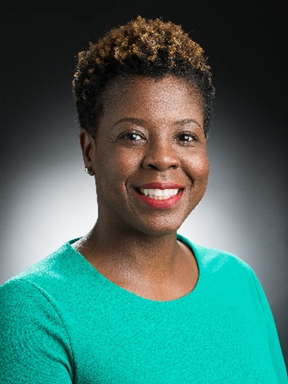 Dr. Cherita Corbett is a member of Senior Professional Staff in the Communication and Networking Systems Group at The Johns Hopkins University Applied Physics Lab. She has over 20 years of professional experience as a research scientist and network security engineer in mobile wireless networks, communication protocols, and cyber security. She has published over 30 technical manuscripts and holds a U.S. patent in cyber security. She holds a Ph.D. in Electrical & Computer Engineering from Georgia Institute of Technology.
Dr. Cherita Corbett is a member of Senior Professional Staff in the Communication and Networking Systems Group at The Johns Hopkins University Applied Physics Lab. She has over 20 years of professional experience as a research scientist and network security engineer in mobile wireless networks, communication protocols, and cyber security. She has published over 30 technical manuscripts and holds a U.S. patent in cyber security. She holds a Ph.D. in Electrical & Computer Engineering from Georgia Institute of Technology.
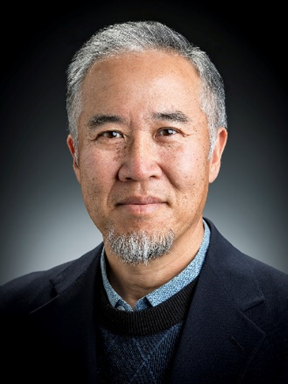 Warren Kim is a Principal Professional Staff at JHU/APL who leads and supports research and development and conducts assessments of advanced networking and communication concepts. Warren has been helping to ensure that senior leaders and national security and emergency preparedness users are able to communicate under all conditions.
Warren Kim is a Principal Professional Staff at JHU/APL who leads and supports research and development and conducts assessments of advanced networking and communication concepts. Warren has been helping to ensure that senior leaders and national security and emergency preparedness users are able to communicate under all conditions.
 Ryan Pepito is a communications engineer and researcher at JHU/APL. His technical work involves building testbeds with the capability to support 5G research. His 5G research interests include the 5G Core architecture, 5G dual connectivity, NFV, SDN, and MEC.
Ryan Pepito is a communications engineer and researcher at JHU/APL. His technical work involves building testbeds with the capability to support 5G research. His 5G research interests include the 5G Core architecture, 5G dual connectivity, NFV, SDN, and MEC.
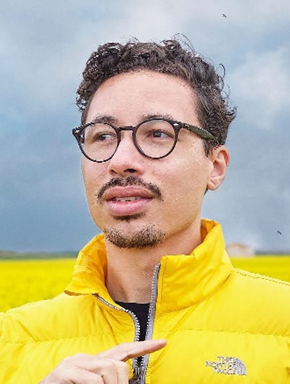 Steven Platt (M'17) received the B.S. degree in Electronic Systems Technologies from Southern Illinois University, Carbondale, IL, USA in 2007, an MBA degree from Illinois State University, Normal, IL, USA in 2012, and a M.S. degree in wireless communications jointly from the Universitat Pompeu Fabra and the Universitat Politècnica de Catalunya, Barcelona, Spain in 2018. He is currently pursuing the Ph.D. degree in information and communications technologies engineering from the Universitat Pompeu Fabra, Barcelona, Spain.
Steven Platt (M'17) received the B.S. degree in Electronic Systems Technologies from Southern Illinois University, Carbondale, IL, USA in 2007, an MBA degree from Illinois State University, Normal, IL, USA in 2012, and a M.S. degree in wireless communications jointly from the Universitat Pompeu Fabra and the Universitat Politècnica de Catalunya, Barcelona, Spain in 2018. He is currently pursuing the Ph.D. degree in information and communications technologies engineering from the Universitat Pompeu Fabra, Barcelona, Spain.
From 2007 to 2012, he was an IT Analyst with Caterpillar Inc. Between 2012 and 2013, he was a Network Engineer at Salesforce.com, and from 2013 to 2017, a Systems Engineer at Twitter.com. Since 2018, he has been a researcher in the Network Technologies and Strategies research group at the Universitat Pompeu Fabra. His research interests include wireless communications, distributed ledger technologies, and decentralized access and resource sharing in wireless networks.
 John S. Baras is a Distinguished University Professor and holds the endowed Lockheed Martin Chair in Systems Engineering at the Institute for Systems Research and the Department of Electrical and Computer Engineering of the University of Maryland College Park. He received his Ph.D. degree in Applied Mathematics from Harvard University in 1973. From 1985 to 1991, he was the Founding Director of the Institute for Systems Research and since 1992 he has been the Director of the Maryland Center for Hybrid Networks, which he co-founded. He is a Fellow of IEEE, SIAM, AAAS, NAI, IFAC, AIAA, AMS, Member of the National Academy of Inventors and a Foreign Member of the Royal Swedish Academy of Engineering Sciences. Major honors and awards include: 1980 George Axelby Award from the IEEE Control Systems Society; 2006 Leonard Abraham Prize from the IEEE Communications Society; 2017 IEEE Simon Ramo Medal; 2017 AACC Richard E. Bellman Control Heritage Award; 2018 AIAA Aerospace Communications Award. In 2016 he was inducted in the Univ. of Maryland A. J. Clark School of Engineering Innovation Hall of Fame. In 2018 he was awarded a Doctorate Honoris Causa by the National Technical University of Athens, Greece. He has been awarded twenty patents and honored worldwide with many awards as innovator and leader of economic development
John S. Baras is a Distinguished University Professor and holds the endowed Lockheed Martin Chair in Systems Engineering at the Institute for Systems Research and the Department of Electrical and Computer Engineering of the University of Maryland College Park. He received his Ph.D. degree in Applied Mathematics from Harvard University in 1973. From 1985 to 1991, he was the Founding Director of the Institute for Systems Research and since 1992 he has been the Director of the Maryland Center for Hybrid Networks, which he co-founded. He is a Fellow of IEEE, SIAM, AAAS, NAI, IFAC, AIAA, AMS, Member of the National Academy of Inventors and a Foreign Member of the Royal Swedish Academy of Engineering Sciences. Major honors and awards include: 1980 George Axelby Award from the IEEE Control Systems Society; 2006 Leonard Abraham Prize from the IEEE Communications Society; 2017 IEEE Simon Ramo Medal; 2017 AACC Richard E. Bellman Control Heritage Award; 2018 AIAA Aerospace Communications Award. In 2016 he was inducted in the Univ. of Maryland A. J. Clark School of Engineering Innovation Hall of Fame. In 2018 he was awarded a Doctorate Honoris Causa by the National Technical University of Athens, Greece. He has been awarded twenty patents and honored worldwide with many awards as innovator and leader of economic development
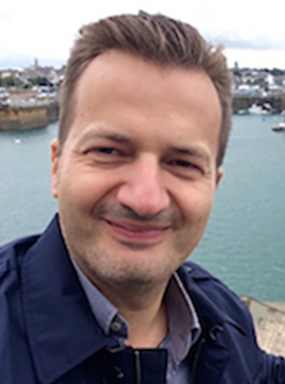 Dr. N. Sklavos is an Associate Professor, with Computer Engineering and Informatics Department (CEID), Polytechnic School, University of Patras, Hellas. He is Director of SCYTALE Group. His research interests include Cryptographic Engineering, Hardware Security, Cyber Security, and Embedded Systems. He has participated to a number of European/National, Research and Development Projects. He is Evaluator/Reviewer of project calls, funded by the European Commission, or National Resources. He has participated to the organization of international scientific conferences, of IEEE/ACM/IFIP, serving several committee duties, as well as Editorial Board Member of several Scientific Journals. He has authored technical papers, books, chapters, reports etc, in the areas of his research. He has been also Keynote/Invited Speaker for conferences, forums, summer schools etc. His publications have received a great number of citations, in scientific and technical literature. He is Senior Member of IEEE, Associated Member of HiPEAC, and Member of IACR.
Dr. N. Sklavos is an Associate Professor, with Computer Engineering and Informatics Department (CEID), Polytechnic School, University of Patras, Hellas. He is Director of SCYTALE Group. His research interests include Cryptographic Engineering, Hardware Security, Cyber Security, and Embedded Systems. He has participated to a number of European/National, Research and Development Projects. He is Evaluator/Reviewer of project calls, funded by the European Commission, or National Resources. He has participated to the organization of international scientific conferences, of IEEE/ACM/IFIP, serving several committee duties, as well as Editorial Board Member of several Scientific Journals. He has authored technical papers, books, chapters, reports etc, in the areas of his research. He has been also Keynote/Invited Speaker for conferences, forums, summer schools etc. His publications have received a great number of citations, in scientific and technical literature. He is Senior Member of IEEE, Associated Member of HiPEAC, and Member of IACR.
| Presentation Time | Presentation Title | Authors |
| 11:00 am | Bit Hopping for High Assurance Networks with 5G Components | Rajeev Gopal (Hughes Network Systems, LLC, USA) |
| 11:20 am | Small Apertures for Long Wavelengths: Enabling Low VHF on Autonomous Agents | Brian Sadler (Army Research Laboratory, USA) |
| 11:40 am | 5G Network Slicing and testing it's security | Craig A Hendricks (Anritsu, USA) |
| 12:10 pm | Single User Massive MIMO | Kasturi Vasudevan (Indian Institute of Technology Kanpur, India); A. Phani Kumar Reddy (Indian Institute of Technology Kanpur (IITK), India); Shivani Singh (Indian Institute of Technology, India); Gyanesh Pathak (IIT Kanpur, India) |
| 1:00 pm | Efficient Testing of first responder networks on legacy technologies and 5G simultaneously | Chintan Fafadia ( & PCTEL, USA); David Adams (USA) |
| 1:20 pm | Verifying 5G Beam Coverage in 3D | Nathan Ryan Harmon (Keysight Technologies, USA) |
| 1:50 pm | United spectrum, united network | Red Grasso (North Carolina Department of Information Technology, USA) |
| 2:10 pm | Rohde & Schwarz 5G solutions for critical communications | Andreas Roessler (Rohde & Schwartz) |
*NOTE: All times are Eastern Time U.S.
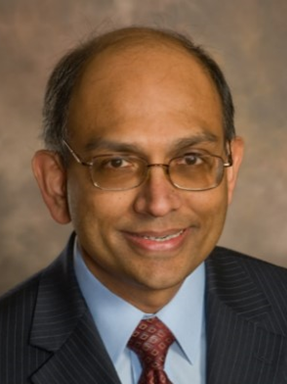 Dr. Rajeev Gopal, vice president, at Hughes Network Systems, LLC (HUGHES), leads the company’s advanced engineering programs, developing innovative solutions for resilient and protected communications in defense applications. Dr. Gopal’s work spans Low Earth Orbit (LEO) and Geostationary Orbit (GEO) High-Throughput Satellite (HTS) technologies, leveraging artificial intelligence (AI), machine learning (ML), cloud, and cyber security innovations.
Dr. Rajeev Gopal, vice president, at Hughes Network Systems, LLC (HUGHES), leads the company’s advanced engineering programs, developing innovative solutions for resilient and protected communications in defense applications. Dr. Gopal’s work spans Low Earth Orbit (LEO) and Geostationary Orbit (GEO) High-Throughput Satellite (HTS) technologies, leveraging artificial intelligence (AI), machine learning (ML), cloud, and cyber security innovations.
In more than 25 years at Hughes, Dr. Gopal has held a variety of leadership roles in satellite network systems engineering and software development. Most recently, he has focused on AI/ML, software-defined networking, 5G, and enterprise management architectures. Prior to joining Hughes, Dr. Gopal led automation projects for clinical and cancer research and development at CTIS.
Dr. Gopal holds several patents and has published more than 40 technical papers. A member of the IEEE 5G World Forum, he serves on the editorial board of Wiley’s International Journal of Satellite Communications and Networking (IJSCN). Dr. Gopal earned a Doctor of Philosophy Degree in Computer Science from Vanderbilt University in Nashville, Tennessee, and a Bachelor of Engineering Degree in Electrical Engineering from the Birla Institute of Technology & Science (BITS) in Pilani, India.
 Brian M. Sadler (Fellow, IEEE) received the B.S. and M.S. degrees from the University of Maryland, College Park, and the PhD degree from the University of Virginia, Charlottesville, all in electrical engineering. He is the US Army Senior Scientist for Intelligent Systems, and a Fellow of the Army Research Laboratory (ARL) in Adelphi, MD. He is an IEEE Communications Society Distinguished Lecturer for 2020-2021, was an IEEE Signal Processing Society Distinguished Lecturer for 2017-2018, and general co-chair of IEEE GlobalSIP’16. He has been an Associate Editor of the IEEE Transactions on Signal Processing, IEEE Signal Processing Letters, and EURASIP Signal Processing, and a Guest Editor for several journals including the IEEE JSTSP, the IEEE JSAC, IEEE T-RO, the IEEE SP Magazine, Autonomous Robots, and the International Journal of Robotics Research. He received Best Paper Awards from the IEEE Signal Processing Society in 2006 and 2010, several ARL and Army R&D awards, and a 2008 Outstanding Invention of the Year Award from the University of Maryland. He has over 450 publications in these areas with 16,800 citations and h-index of 55. His research interests include information science, and networked and autonomous intelligent systems.
Brian M. Sadler (Fellow, IEEE) received the B.S. and M.S. degrees from the University of Maryland, College Park, and the PhD degree from the University of Virginia, Charlottesville, all in electrical engineering. He is the US Army Senior Scientist for Intelligent Systems, and a Fellow of the Army Research Laboratory (ARL) in Adelphi, MD. He is an IEEE Communications Society Distinguished Lecturer for 2020-2021, was an IEEE Signal Processing Society Distinguished Lecturer for 2017-2018, and general co-chair of IEEE GlobalSIP’16. He has been an Associate Editor of the IEEE Transactions on Signal Processing, IEEE Signal Processing Letters, and EURASIP Signal Processing, and a Guest Editor for several journals including the IEEE JSTSP, the IEEE JSAC, IEEE T-RO, the IEEE SP Magazine, Autonomous Robots, and the International Journal of Robotics Research. He received Best Paper Awards from the IEEE Signal Processing Society in 2006 and 2010, several ARL and Army R&D awards, and a 2008 Outstanding Invention of the Year Award from the University of Maryland. He has over 450 publications in these areas with 16,800 citations and h-index of 55. His research interests include information science, and networked and autonomous intelligent systems.
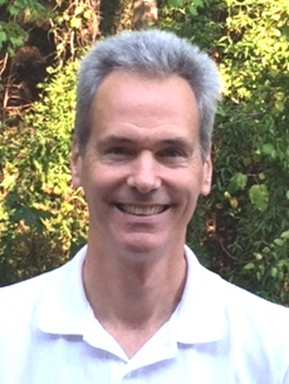 Craig Hendrick is a Senior Market Development Manager for Anritsu. With thirty-six years of engineering experience in test & measurement, and thirty of those years focused on wireless communications, Craig is truly a technology expert in the industry. He joined Anritsu Company in 1992 and throughout his career has held various technical roles in field applications engineering and engineering management. Craig holds a Bachelor of Science in Electrical Engineering (BSEE) from the University of Missouri at Rolla (now Missouri University of Science and Technology). He currently resides in North Carolina.
Craig Hendrick is a Senior Market Development Manager for Anritsu. With thirty-six years of engineering experience in test & measurement, and thirty of those years focused on wireless communications, Craig is truly a technology expert in the industry. He joined Anritsu Company in 1992 and throughout his career has held various technical roles in field applications engineering and engineering management. Craig holds a Bachelor of Science in Electrical Engineering (BSEE) from the University of Missouri at Rolla (now Missouri University of Science and Technology). He currently resides in North Carolina.
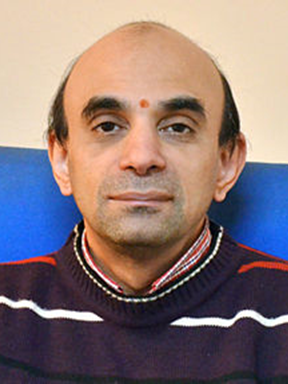 K. Vasudevan completed his Bachelor of Technology (Honours) from the department of Electronics and Electrical Communication Engineering, IIT Kharagpur, India, in the year 1991, and his MS and PhD from the department of Electrical Engineering, IIT Madras, in the years 1996 and 2000 respectively. During 1991–1992, he was employed with the Indian Telephone Industries Ltd, Bangalore, India, as Assistant Executive Engineer. He was a Post Doctoral Fellow at the Mobile Communications Lab, EPFL, Switzerland, between Dec 1999 and Dec 2000, and an engineer at Texas Instruments, Bangalore, between Jan 2001 and June 2001. Since July 2001, he has been a faculty at the Electrical department at IIT Kanpur, where he is now a full Professor. His interests lie in the area of telecommunications and signal processing. He has authored three books, namely, Digital Communications and Signal Processing, CRC Press, Analog Communications: Problems & Solutions, Springer and Basic Electronics: Problems & Solutions, Ane Books. He has published many articles in journals and conferences. He is a Senior Member of the IEEE and the Editor-in-Chief of Semiconductor Science and Information Devices, Bilingual Publishing, Singapore. He was nominated for the Marquis Who's Who Lifetime Achievement Award in 2019.
K. Vasudevan completed his Bachelor of Technology (Honours) from the department of Electronics and Electrical Communication Engineering, IIT Kharagpur, India, in the year 1991, and his MS and PhD from the department of Electrical Engineering, IIT Madras, in the years 1996 and 2000 respectively. During 1991–1992, he was employed with the Indian Telephone Industries Ltd, Bangalore, India, as Assistant Executive Engineer. He was a Post Doctoral Fellow at the Mobile Communications Lab, EPFL, Switzerland, between Dec 1999 and Dec 2000, and an engineer at Texas Instruments, Bangalore, between Jan 2001 and June 2001. Since July 2001, he has been a faculty at the Electrical department at IIT Kanpur, where he is now a full Professor. His interests lie in the area of telecommunications and signal processing. He has authored three books, namely, Digital Communications and Signal Processing, CRC Press, Analog Communications: Problems & Solutions, Springer and Basic Electronics: Problems & Solutions, Ane Books. He has published many articles in journals and conferences. He is a Senior Member of the IEEE and the Editor-in-Chief of Semiconductor Science and Information Devices, Bilingual Publishing, Singapore. He was nominated for the Marquis Who's Who Lifetime Achievement Award in 2019.
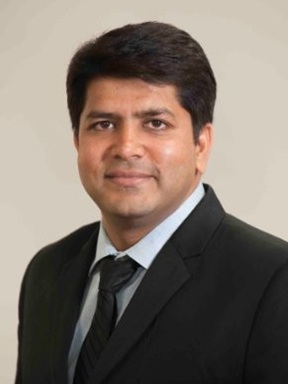 Chintan Fafadia is Sr. Director of Product Management for PCTEL's 5G and cloud-based test and measurement solutions. He has over 15 years of in the wireless industry, specializing in network test and measurement. At PCTEL, Chintan has played a key role in the development of the company's 4G and 5G testing solutions over the past decade, serving in a variety of product management and business development roles. He holds an Executive MBA from Robert Smith School of Business and a Master of Science from the University of Texas at Dallas.
Chintan Fafadia is Sr. Director of Product Management for PCTEL's 5G and cloud-based test and measurement solutions. He has over 15 years of in the wireless industry, specializing in network test and measurement. At PCTEL, Chintan has played a key role in the development of the company's 4G and 5G testing solutions over the past decade, serving in a variety of product management and business development roles. He holds an Executive MBA from Robert Smith School of Business and a Master of Science from the University of Texas at Dallas.
 David Adam's career has focused on solutions for Service Quality and Performance Management of Mobile Networks. Working closely with the leading US mobile operators to understand their unique needs and requirements led to the creation of patented concepts and approaches. As solutions architect and product manager, I managed the design and deployment of a number of ground breaking solutions, continuing close cooperation with the operators to determine effective application of the solutions, thus driving high penetration rates of the solutions across the industry.
David Adam's career has focused on solutions for Service Quality and Performance Management of Mobile Networks. Working closely with the leading US mobile operators to understand their unique needs and requirements led to the creation of patented concepts and approaches. As solutions architect and product manager, I managed the design and deployment of a number of ground breaking solutions, continuing close cooperation with the operators to determine effective application of the solutions, thus driving high penetration rates of the solutions across the industry.
Recent concentration has been on the Public Safety Networks, both legacy P25 and FirstNet LTE technologies. The critical nature of properly performing service to first responders means test solution in new and more rigorous requirements. A special focus is on in building coverage and performance, delivering a cost effective solution to ensure buildings comply with national and AHJ standards.
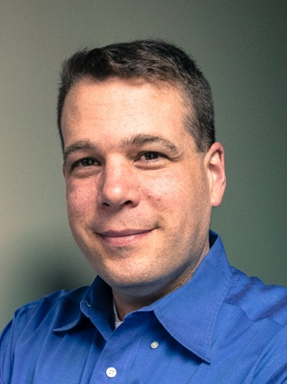 Red Grasso is the Director of the First Responder Emerging Technologies (FirstTech) Program at the State of NC. Red also serves as the FirstNet Single Point of Contact (SPOC) for North Carolina and is currently involved in several projects at the national level with DHS S&T, DHS CISA ECD, and the FCC. He spent a decade as a firefighter in North Carolina before moving into the technologies and working to deploy a regional P25 radio system in Missouri. Focusing on public safety communications, he has served in many roles at different levels of government including disaster response at the local, state, and federal levels. His bachelor’s degree is in Emergency and Disaster Management and is a graduate of the Community Preparedness and Disaster Management program at UNC-CH. Red is also responsible for the communications system at the annual Burning Man event in Nevada.
Red Grasso is the Director of the First Responder Emerging Technologies (FirstTech) Program at the State of NC. Red also serves as the FirstNet Single Point of Contact (SPOC) for North Carolina and is currently involved in several projects at the national level with DHS S&T, DHS CISA ECD, and the FCC. He spent a decade as a firefighter in North Carolina before moving into the technologies and working to deploy a regional P25 radio system in Missouri. Focusing on public safety communications, he has served in many roles at different levels of government including disaster response at the local, state, and federal levels. His bachelor’s degree is in Emergency and Disaster Management and is a graduate of the Community Preparedness and Disaster Management program at UNC-CH. Red is also responsible for the communications system at the annual Burning Man event in Nevada.
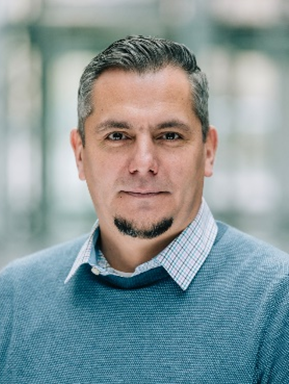 Andreas Roessler is working as a Technology Manager for Rohde & Schwarz, a premium supplier of test and measurement solutions to the wireless industry, headquartered in Munich, Germany. As a technology manager he focuses on 3GPP’s 5G New Radio (NR) standard and advancing 6G research topics, where his responsibilities include strategic marketing and product portfolio development for the entire value chain offered by Rohde & Schwarz test and measurement division. By following industry trends and the standardization process for cellular communication standards very carefully, he gained more than 15 years of experience in the mobile industry and wireless technologies. He holds a MSc in electrical engineering, with a focus in wireless communication.
Andreas Roessler is working as a Technology Manager for Rohde & Schwarz, a premium supplier of test and measurement solutions to the wireless industry, headquartered in Munich, Germany. As a technology manager he focuses on 3GPP’s 5G New Radio (NR) standard and advancing 6G research topics, where his responsibilities include strategic marketing and product portfolio development for the entire value chain offered by Rohde & Schwarz test and measurement division. By following industry trends and the standardization process for cellular communication standards very carefully, he gained more than 15 years of experience in the mobile industry and wireless technologies. He holds a MSc in electrical engineering, with a focus in wireless communication.
| Presentation Time | Presentation Title | Authors |
| 11:00 am | Communications for Dynamic First Responder Teams in Emergency Response | Jiachen Chen (WINLAB, Rutgers University, USA); K. K. Ramakrishnan (University of California, Riverside, USA) |
| 11:20 am | Supporting NS/EP Priority Services in Wi-Fi Networks | Subir Das (Perspecta Labs); John Wullert and Kiran Rege (Perspecta Labs Inc, USA); Frank Suraci (Emergency Communications Division, DHS/CISA, USA); An Nguyen (Emergency Communications Division, DHS/CISA, USA) |
| 11:40 am | Stochastic Geometry-based Analysis of LEO Satellite Communication Systems | Anna Talgat and Mustafa A Kishk (King Abdullah University of Science and Technology, Saudi Arabia) |
| 12:00 pm | Broadcast TV and the new ATSC 3.0 Standard | John Contestabile (Skyline Technology Solutions), Sesh Simha (Sinclair) |
| 1:00 pm | Vendor Talk | Darren McCarthy (Rohde & Schwartz) |
| 1:15 pm | US BORDER CONTROL: Dynamic 5G-Network Services for Time-critical Multi-source Sensor Fusion | Shashi Phoha (Applied Research Laboratory, Penn State University, USA |
| 1:35 pm | A Dynamic-data-driven First Responder Management Strategy: Border Surveillance, Hurricane, and Man-made Disaster | Young-Jun Son (The University of Arizona, USA) |
| 1:55 pm | DDDAS Solutions for Border Patrol and Emergency Response Environments | Frederica Darema (USA); Erik Blasch (Air Force Research Lab, USA) |
| 2:15 pm | Concerns with SRVCC handover from 5G to 3G for emergency services | Amar N Ray (ATT&C & Other, USA); Cadathur Chakravarthy (ATT&C, USA) |
*NOTE: All times are Eastern Time U.S.
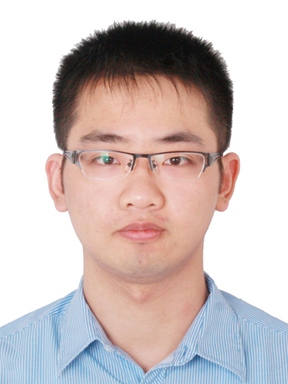 Jiachen Chen is a Postdoctoral Associate at WINLAB, Rutgers University. He received the B.E. and M.E. degrees in Software Engineering from Fudan University, China, and Ph.D. degree in computer science from University of Göttingen, Germany. His research interests are in the area of Information-Centric Networks (ICN), Internet of Things (IoT), cloud computing, and network management.
Jiachen Chen is a Postdoctoral Associate at WINLAB, Rutgers University. He received the B.E. and M.E. degrees in Software Engineering from Fudan University, China, and Ph.D. degree in computer science from University of Göttingen, Germany. His research interests are in the area of Information-Centric Networks (ICN), Internet of Things (IoT), cloud computing, and network management.
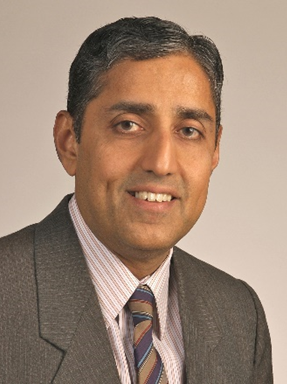 Dr. K. K. Ramakrishnan is Professor of Computer Science and Engineering at the University of California, Riverside. Previously, he was a Distinguished Member of Technical Staff at AT&T Labs-Research. He joined AT&T Bell Labs in 1994 and was with AT&T Labs-Research since its inception in 1996. Prior to 1994, he was a Technical Director and Consulting Engineer in Networking at Digital Equipment Corporation. Between 2000 and 2002, he was at TeraOptic Networks, Inc., as Founder and Vice President.
Dr. K. K. Ramakrishnan is Professor of Computer Science and Engineering at the University of California, Riverside. Previously, he was a Distinguished Member of Technical Staff at AT&T Labs-Research. He joined AT&T Bell Labs in 1994 and was with AT&T Labs-Research since its inception in 1996. Prior to 1994, he was a Technical Director and Consulting Engineer in Networking at Digital Equipment Corporation. Between 2000 and 2002, he was at TeraOptic Networks, Inc., as Founder and Vice President.
Dr. Ramakrishnan is an ACM Fellow, IEEE Fellow and an AT&T Fellow, recognized for his fundamental contributions on communication networks, congestion control, traffic management, VPN services, and a lasting impact on AT&T and the industry. His work on the "DECbit" congestion avoidance protocol received the ACM Sigcomm Test of Time Paper Award in 2006. He has published nearly 300 papers and has 183 patents issued in his name. K.K. has been on the editorial board of several journals and has served as the TPC Chair and General Chair for several networking conferences. K. K. received his MTech from the Indian Institute of Science (1978), MS (1981) and Ph.D. (1983) in Computer Science from the University of Maryland, College Park, USA.
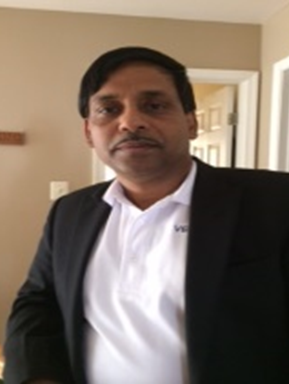 Dr. Subir Das is a Chief Scientist at Perspecta Labs Basking Ridge, New Jersey, USA and has more than 25 years of research and development experience. His areas of interests are Mobile Wireless IP Networking (3G/4G/5G) and Security, Low power Personal Area Networking, WLAN and Edge Networking, Industrial Control System and Internet of Things (IoT) security.
Dr. Subir Das is a Chief Scientist at Perspecta Labs Basking Ridge, New Jersey, USA and has more than 25 years of research and development experience. His areas of interests are Mobile Wireless IP Networking (3G/4G/5G) and Security, Low power Personal Area Networking, WLAN and Edge Networking, Industrial Control System and Internet of Things (IoT) security.
Dr. Das is responsible for developing strategic programs, researching new technologies and transitioning such technologies. Dr. Das is a leading contributor to various Standards (e.g., IEEE, IETF, 3GPP and ZigBee). He is currently leading the NS/EP priority access activity in IEEE 802.11. He is also an Executive Member of the IEEE 802 LAN/MAN Standards Committee and holds a leadership position in the ZigBee Alliance. Dr. Das developed protocols in IETF and held leadership positions in the past. He was actively involved in developing Cellular (3G/4G (LTE)) networking technologies in 3GPP. Dr. Das has published nearly 100 papers, 5 IETF RFCs and has been granted 30 US patents.
Previously, Dr. Das worked in Telcordia Technologies Inc and Bell Communication Research in Piscataway, New Jersey with various Research Scientist positions. Dr. Das is a recipient of the 2009 IEEE Region I Award for outstanding contribution to Next Generation Wireless Networks, Protocols and its Standardization Efforts. He served as a member in the National Science Foundation, USA, and the National Science and Engineering Council, Canada award review committees. Dr. Das is a frequent speaker and an organizer of Industry Panels in IEEE and other international conferences. He is a member of the IEEE and a reviewer of IEEE and ACM journals and technical magazines.
 Mr. Frank Suraci serves as the Program Manager for the Government Emergency Telecommunications Service/Wireless Priority Service, currently assigned to the Federal Government’s Emergency Communications Division in the Cybersecurity and Infrastructure Security Agency, DHS. He has served in a management capacity for the Government Emergency Telecommunications Service (GETS) and the Wireless Priority Service Programs for over twenty years. He has been responsible for taking GETS from a concept in 1990 to the operational service it is today. Mr. Suraci has more than 30 years of experience in the telecommunications management field.
Mr. Frank Suraci serves as the Program Manager for the Government Emergency Telecommunications Service/Wireless Priority Service, currently assigned to the Federal Government’s Emergency Communications Division in the Cybersecurity and Infrastructure Security Agency, DHS. He has served in a management capacity for the Government Emergency Telecommunications Service (GETS) and the Wireless Priority Service Programs for over twenty years. He has been responsible for taking GETS from a concept in 1990 to the operational service it is today. Mr. Suraci has more than 30 years of experience in the telecommunications management field.
For the past 25 years, he has represented DHS at the ATIS Next Generation Interconnection Interoperability Forum in coordinating nationwide rollouts of various network priority signaling features supporting both GETS and WPS. He continues to enhance these National Security and Emergency Preparedness (NS/EP) services through interaction with the telecommunications industry to ensure that the service is available to authorized users when required. Currently supporting the Wi-Fi priority access initiative in IEEE 802.11 Working Group. Previously, Mr. Suraci worked in the Command, Control and Communications area for the Defense Communications Agency (DCA), now known as the Defense Information Systems Agency (DISA), supporting White House communications and Joint Staff activities. Mr. Suraci also served on the White House Convergence Working Group providing inputs on the impact of Network Convergence on NS/EP Communications.
Mr. Suraci holds a Bachelor in Electrical Engineering from the Catholic University of America and completed graduate work at Penn State University and George Washington University. Mr. Suraci is an active participant in professional organizations, including the IEEE and the AFCEA where he is a distinguished life member and has co-authored articles in both organizations’ publications.
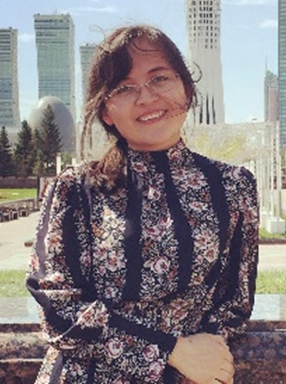 Anna Talgat is currently a Ph.D. student in the Communication Theory Lab (CTL) under the supervision of Prof. Mohamed-Slim Alouini at King Abdullah University of Science and Technology (KAUST). She received a B.Sc. degree from Fatih University, Turkey, and M.Sc degree from KAUST in 2015 and 2020, respectively. Her research focuses on stochastic geometry, LEO satellite communications.
Anna Talgat is currently a Ph.D. student in the Communication Theory Lab (CTL) under the supervision of Prof. Mohamed-Slim Alouini at King Abdullah University of Science and Technology (KAUST). She received a B.Sc. degree from Fatih University, Turkey, and M.Sc degree from KAUST in 2015 and 2020, respectively. Her research focuses on stochastic geometry, LEO satellite communications.
 John M. Contestabile is the Director of Public Safety Solutions at Skyline Technology Solutions. He works closely with the public safety community providing consulting services and developing solutions to meet their operational needs. These solutions can involve cyber security, video interoperability, communications and network operations.
John M. Contestabile is the Director of Public Safety Solutions at Skyline Technology Solutions. He works closely with the public safety community providing consulting services and developing solutions to meet their operational needs. These solutions can involve cyber security, video interoperability, communications and network operations.
He joined Skyline in 2019 after 10 years with Johns Hopkins University - Applied Physics Lab where he was the Program Manager for Homeland Security/Emergency Response Systems. In that capacity he worked with various government sponsors (DHS – S&T, CISA, FEMA, FirstNet) to develop technology projects to meet their needs related to: transportation security, critical infrastructure resilience, and interoperable communications (to include Geographic Information, Wireless Broadband and Video Systems)
Prior to that, he served for over 30 years with the State of Maryland Department of Transportation [MDOT] in a variety of technical/engineering and management roles raising to the position of Acting Assistant Secretary for Administration. In that role he was responsible for the engineering, procurement, emergency management, homeland security and human resource functions. In addition to working at MDOT, Mr. Contestabile was named by Maryland Governor O’Malley as the Director of the Maryland Statewide Communications Interoperability Program, reporting to the Superintendent of the Maryland State Police. Previously, Mr. Contestabile served on assignment with the Governor’s Office during the Ehrlich administration as the Acting Deputy Director of the Office of Homeland Security.
Mr. Contestabile currently participates on a number of committees including: Chair of the Resilience Section for the Transportation Research Board [TRB], Chair of the National Public Safety Telecommunications Council [NPSTC] Video Technology Advisory Committee, and member of the Department of Homeland Security - Science and Technology Directorate Video Quality in Public Safety [VQiPS] leadership team. He recently completed a three-year appointment to the District of Columbia - Homeland Security Commission. In November of 2017, Mr. Contestabile was appointed by Maryland Governor Hogan as a member of the Washington Metrorail Safety Commission.
Mr. Contestabile was also a former board member of the Public Safety Spectrum Trust [PSST], who held the national license for the 700 MHz National Public Safety Broadband system [e.g. “FirstNet”]. He is a former Vice Chair of the American Association of State Highway and Transportation Officials [AASHTO] Special Committee on Transportation Security and Emergency Management, a former member of the National Infrastructure Advisory Committee [NIAC] Transportation Resilience work group, as well as a former member of the Department of Homeland Security’s “Safecom” Interoperable Communications Advisory Committee.
He belongs to several organizations including: the All Hazards Consortium, the American Society of Civil Engineers, the International Association of Emergency Managers, the Maryland Emergency Management Association, the National Public Safety Telecommunications Consortium, the International Association of Chiefs of Police and the National Domestic Preparedness Coalition.
He holds a Master of Business Administration degree from the University of Baltimore (UB) in Baltimore, Maryland and a Bachelor of Science in Civil Engineering from Worcester Polytechnic Institute (WPI) in Worcester, Massachusetts.
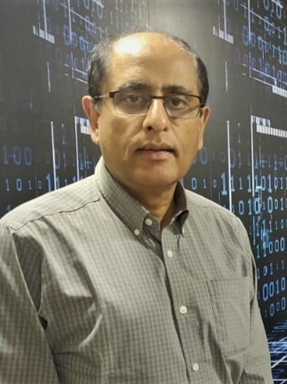 Sesh Simha is Vice President of Advanced Technology at Sinclair Broadcast’s ONEMedia subsidiary. He is involved in the global development of ATSC 3.0 and of wireless mobile broadcast and multicast.
Sesh Simha is Vice President of Advanced Technology at Sinclair Broadcast’s ONEMedia subsidiary. He is involved in the global development of ATSC 3.0 and of wireless mobile broadcast and multicast.
He manages the Company’s activities in India, which are critical to the success of realizing this convergence. This includes software-defined radio chipset development, device development and engagement with government, carriers, broadcasters and manufacturers. Most recently, he manages the design, production and deployment of Mark ONE, the first reference ATSC 3.0 smartphone. Sesh has 35 years of experience in the satellite, wireless and media verticals. He managed the introduction of new products and services at SES, Teleglobe, INTELSAT and Hughes Network Systems. He is a graduate of IIT Bombay and the University of Michigan.
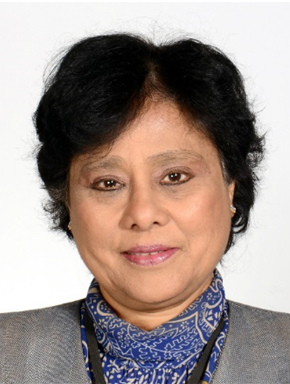 Dr. Shashi Phoha’s research interests are in computational sciences that enable dependable distributed automation of multiple interacting devices using dynamic data for sensor networks. She has held senior technical and management positions in academia, government, and industry. She was the Director of a premier national laboratory, the Information Technology Laboratory (ITL) of the National Institute of Standards and Technology (NIST), which conducts research in Computational Sciences, Computer Security, Software, Advanced Networking, Information Access, and Mathematical and Statistical Engineering. Since 1991, she has held the dual titles of Professor of Electrical Engineering at the Pennsylvania State University and the Director of the Division of Information Sciences and Technology at its Applied Research Laboratory. Prior to that, she was the Director of C4I and Systems Analysis Division of the Computer Sciences Corporation where she led the development of the Global Transportation Network for DoD. In 2004, she was awarded the Technical Achievement Award by the IEEE Computer Society. She has authored over 200 research papers, three books including one on Sensor Network Operations, and has several patents licensed to industry. She is the Chief Editor of The Journal of Artificial Intelligence and Robotics: Sensor Fusion and Machine Perception. She was the Guest Editor of Special Issues of IEEE Transactions (TMC) on Mission-oriented Sensor Networks, an associate editor of the IEEE Transactions on Systems, Man, and Cybernetics for five years and is editor of the International Journal of Distributed Sensor Networks. She received her M.S. in Operations Research from Cornell University (1973) and Ph.D. from Michigan State University (1976).
Dr. Shashi Phoha’s research interests are in computational sciences that enable dependable distributed automation of multiple interacting devices using dynamic data for sensor networks. She has held senior technical and management positions in academia, government, and industry. She was the Director of a premier national laboratory, the Information Technology Laboratory (ITL) of the National Institute of Standards and Technology (NIST), which conducts research in Computational Sciences, Computer Security, Software, Advanced Networking, Information Access, and Mathematical and Statistical Engineering. Since 1991, she has held the dual titles of Professor of Electrical Engineering at the Pennsylvania State University and the Director of the Division of Information Sciences and Technology at its Applied Research Laboratory. Prior to that, she was the Director of C4I and Systems Analysis Division of the Computer Sciences Corporation where she led the development of the Global Transportation Network for DoD. In 2004, she was awarded the Technical Achievement Award by the IEEE Computer Society. She has authored over 200 research papers, three books including one on Sensor Network Operations, and has several patents licensed to industry. She is the Chief Editor of The Journal of Artificial Intelligence and Robotics: Sensor Fusion and Machine Perception. She was the Guest Editor of Special Issues of IEEE Transactions (TMC) on Mission-oriented Sensor Networks, an associate editor of the IEEE Transactions on Systems, Man, and Cybernetics for five years and is editor of the International Journal of Distributed Sensor Networks. She received her M.S. in Operations Research from Cornell University (1973) and Ph.D. from Michigan State University (1976).
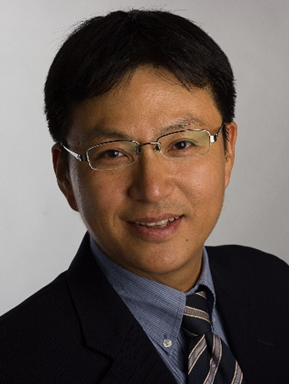 Young-Jun Son is a Professor and Department Head of Systems and Industrial Engineering at University of Arizona. His research focuses on a data-driven, multi-scale, simulation and decision model needed for design and control in various applications, including extended manufacturing enterprise, homeland security, healthcare, and social network. He has authored/co-authored over 97 journal papers and 100 conference papers. He is a Fellow of Institute of Industrial and Systems Engineers (IISE), and has received the Society of Manufacturing Engineers (SME) 2004 Outstanding Young ME Award, the IIE 2005 Outstanding Young IE Award, the IISE Annual Meeting Best Paper Awards (2005, 2008, 2009, 2016, 2018, 2019), and Best Paper of the Year Award in 2007 from International Journal of IE. His research activities have been funded by NSF, AFOSR, DOT/FHWA, US Department of Energy/AZ Commerce Authority, USDA, NIST, Sandia National Lab, Science Foundation of Arizona, Boeing, Samsung, Motorola, Raytheon, Tucson Electric Power, Microsoft, and several application software companies. He is a Department Editor for IISE Transactions, on the editorial board for seven additional journals. He was the vice chair and secretary for the SISO Core Manufacturing Simulation Data (CMSD) Standard Product Development Group. He has served as co-Program Chair for ISERC 2007, the General Chair for INFORMS Annual Meeting 2018, and the General Chair for Winter Simulation Conference 2019.
Young-Jun Son is a Professor and Department Head of Systems and Industrial Engineering at University of Arizona. His research focuses on a data-driven, multi-scale, simulation and decision model needed for design and control in various applications, including extended manufacturing enterprise, homeland security, healthcare, and social network. He has authored/co-authored over 97 journal papers and 100 conference papers. He is a Fellow of Institute of Industrial and Systems Engineers (IISE), and has received the Society of Manufacturing Engineers (SME) 2004 Outstanding Young ME Award, the IIE 2005 Outstanding Young IE Award, the IISE Annual Meeting Best Paper Awards (2005, 2008, 2009, 2016, 2018, 2019), and Best Paper of the Year Award in 2007 from International Journal of IE. His research activities have been funded by NSF, AFOSR, DOT/FHWA, US Department of Energy/AZ Commerce Authority, USDA, NIST, Sandia National Lab, Science Foundation of Arizona, Boeing, Samsung, Motorola, Raytheon, Tucson Electric Power, Microsoft, and several application software companies. He is a Department Editor for IISE Transactions, on the editorial board for seven additional journals. He was the vice chair and secretary for the SISO Core Manufacturing Simulation Data (CMSD) Standard Product Development Group. He has served as co-Program Chair for ISERC 2007, the General Chair for INFORMS Annual Meeting 2018, and the General Chair for Winter Simulation Conference 2019.
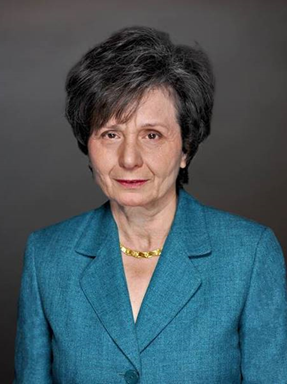 Dr. Frederica Darema, a Senior Executive Service member (SES), retired in January 2019 as the Director of the Air Force Office of Scientific Research. In that position she led the entire basic research investment for the AF, an over $500 million investment portfolio on revolutionary research impacting the future AF and transitioning the discoveries to defense industries & broader commercial sector. Dr. Darema is a graduate of the U of Athens, Greece (BS/Mathematics & Physics), the Illinois Inst of Tech (MS/Nuclear Physics), and UCDavis (PhD/Nuclear Physics), and was a Fulbright Scholar and a Distinguished Scholar. After Physics Research positions at the U of Pittsburgh and Brookhaven Nat’l Lab, she was Technical Staff Member at Schlumberger (SDR). Subsequently, she has held management and executive level positions: at the T.J. Watson IBM Research Center& the IBM Corporate Strategy Group; at NSF and 2-years at DARPA; and was Director of the AFOSR Directorate for Information, Math& Life Sciences, and afterwards Director of AFSOR.
Dr. Frederica Darema, a Senior Executive Service member (SES), retired in January 2019 as the Director of the Air Force Office of Scientific Research. In that position she led the entire basic research investment for the AF, an over $500 million investment portfolio on revolutionary research impacting the future AF and transitioning the discoveries to defense industries & broader commercial sector. Dr. Darema is a graduate of the U of Athens, Greece (BS/Mathematics & Physics), the Illinois Inst of Tech (MS/Nuclear Physics), and UCDavis (PhD/Nuclear Physics), and was a Fulbright Scholar and a Distinguished Scholar. After Physics Research positions at the U of Pittsburgh and Brookhaven Nat’l Lab, she was Technical Staff Member at Schlumberger (SDR). Subsequently, she has held management and executive level positions: at the T.J. Watson IBM Research Center& the IBM Corporate Strategy Group; at NSF and 2-years at DARPA; and was Director of the AFOSR Directorate for Information, Math& Life Sciences, and afterwards Director of AFSOR.
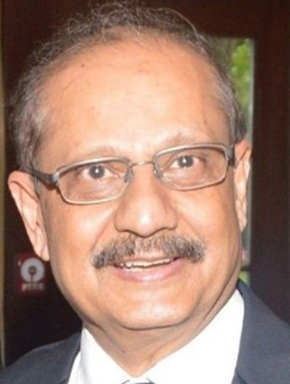 Amar Nath Ray has started his career as a Visiting Faculty of KU (University of Kansas), Lawrence, USA in the department of physics from where he got his second masters and Ph.D on experimental solid state physics. Later he joined Sprint as a principal member of technical staff and moved to Century Link as the lead network engineer. He has also worked as the director of networks for the Teletech team (T3) before starting his own company, ATT&C. Amar has one hundred and fifty-six approved & pending US patents and they are available online. He has participated in different telecom standard committees and has served as the chair for TIA TR-41.3.12 subcommittee.
Amar Nath Ray has started his career as a Visiting Faculty of KU (University of Kansas), Lawrence, USA in the department of physics from where he got his second masters and Ph.D on experimental solid state physics. Later he joined Sprint as a principal member of technical staff and moved to Century Link as the lead network engineer. He has also worked as the director of networks for the Teletech team (T3) before starting his own company, ATT&C. Amar has one hundred and fifty-six approved & pending US patents and they are available online. He has participated in different telecom standard committees and has served as the chair for TIA TR-41.3.12 subcommittee.
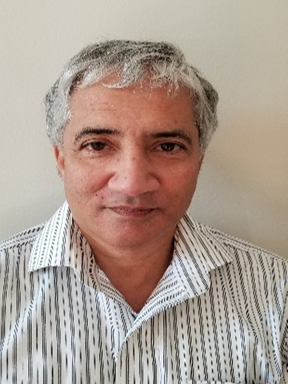 C.V. Chakravarthy had been a faculty in Telecommunications Engineering from 1975 - 1997 holding positions at the Indian Institute of Technology, Kharagpur, Indian Institute of Science, Bangalore & Stevens Institute of Technology. From 1997 until 2015 he was with Sprint/Embarq/Centurylink (Now Lumen Technologies) as a network engineer. Subsequent to retirement from Centurylink was a faculty member at the Univ of Central Missouri (Warrensburg). He obtained the degree of B.Sc (Physics/Mathematics) from the University of Bangalore, B.E & M.E from the Indian Institute of Science & the Ph.D from the Indian Institute of Technology, Kharagpur.
C.V. Chakravarthy had been a faculty in Telecommunications Engineering from 1975 - 1997 holding positions at the Indian Institute of Technology, Kharagpur, Indian Institute of Science, Bangalore & Stevens Institute of Technology. From 1997 until 2015 he was with Sprint/Embarq/Centurylink (Now Lumen Technologies) as a network engineer. Subsequent to retirement from Centurylink was a faculty member at the Univ of Central Missouri (Warrensburg). He obtained the degree of B.Sc (Physics/Mathematics) from the University of Bangalore, B.E & M.E from the Indian Institute of Science & the Ph.D from the Indian Institute of Technology, Kharagpur.
| Presentation Time | Presentation Title | Authors |
| 11:00 am | Mission Critical Services for Public safety & Tactical communications | Brian Daly (AT&T) |
| 11:20 am | GSMA Investigation 5G Security | Pieter Veenstra (Net Number) |
| 11:40 am | Technology Gaps and Opportunities for Public Safety Applications | Mehmet Ulema, Doug Zuckerman (IEEE Future Networks) |
| 12:00 pm | UE-to-Network Relay Discovery in ProSe-enabled LTE Networks | David Griffith (NIST) |
| 12:20 pm | Vendor Talk | Qualcomm |
| 1:00 pm | 5G Open RAN Implications for Public Safety Networks | Sameh Yamany (VIAVI Solutions) |
| 1:20 pm | Security of 5G-Enabled Next Generation Critical Communication in Norway | Ravishankar Borgaonkar (SINTEF AS & University of Stavanger, Norway) |
| 1:40 pm | Earthquake Early Warning on 5G uRLLC network | Fabio Graziosi (University of l'Aquila, Italy); Andrea Marotta and Fabio Franchi (University of L'Aquila, Italy) |
| 2:00 pm | Self-organizing future mobile networks – An End-to-End perspective | Meryem Simsek (VMWARE) |
*NOTE: All times are Eastern Time U.S.
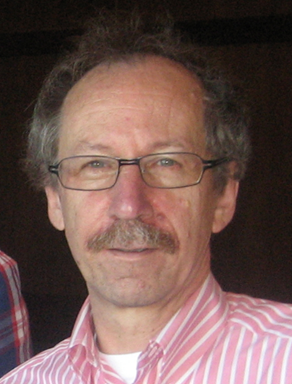 Pieter Veenstra: In his role as Senior Manager Product Development at NetNumber, Pieter’s focus are security and fraud. This refers to 5G security and signaling firewalls that protect mobile roaming traffic. For fraud these are the NetNumber Guaranteed Caller™ solutions for the STIR/SHAKEN variants and the real-time fraud detecting and blocking solutions for Wangiri, Robocalling, IRSF, CLI Refiling and alike.
Pieter Veenstra: In his role as Senior Manager Product Development at NetNumber, Pieter’s focus are security and fraud. This refers to 5G security and signaling firewalls that protect mobile roaming traffic. For fraud these are the NetNumber Guaranteed Caller™ solutions for the STIR/SHAKEN variants and the real-time fraud detecting and blocking solutions for Wangiri, Robocalling, IRSF, CLI Refiling and alike.
End 2019 he was elected for a 2-year term as chairman of the GSMA FASG RIFS group which follows his editorships on Signaling Firewalls for SS7 (FS.11), Diameter (FS.19) and general items (FS.21) to protect international roaming traffic between MNOs. He is also the lead of the investigations in the GSMA on the open issues for 5G Security and being editor in the i3forum on CLI anti-spoofing solutions.
During his 30-yr career at KPN, Pieter held a wide range of key positions as technology expert of SS7, IMS and IPX networks, and assisted the KPN Board of Directors as enterprise architect. For many years, Pieter represented KPN in standardisation of SS7, IMS and IPX in ETSI, ITU and 3GPP. Since 2003 he is guest lecturer at the leading Technical University of Delft. Pieter holds multiple SS7 and IMS patents.
 Dr. Mehmet Ulema is a professor of Computer Information Systems at Manhattan College, New York. Previously, he held management and technical positions in AT&T Bell Laboratories, Bellcore, Daewoo Telecom, and Hazeltine Corporation. Dr. Ulema has more than 30 years of experience in telecommunications as a professor, researcher, systems engineer, project manager, network architect, and software developer.
Dr. Mehmet Ulema is a professor of Computer Information Systems at Manhattan College, New York. Previously, he held management and technical positions in AT&T Bell Laboratories, Bellcore, Daewoo Telecom, and Hazeltine Corporation. Dr. Ulema has more than 30 years of experience in telecommunications as a professor, researcher, systems engineer, project manager, network architect, and software developer.
He has authored numerous papers, book chapters, and organized many special issues in several journals and technical magazines. He has been on the editorial board of a number of journals, including the IEEE Journal of Internet of Things, IEEE Transactions on Network and Service Management, and the Springer Journal of Network and Services Management. Dr. Ulema is the author of a book entitled “Fundamentals of Public Safety Networks and Critical Communications” by Wiley in 2019.
Mehmet was actively involved in standardization in ITU, TIA, ATIS, and IEEE. Mehmet has been a prominent volunteer at IEEE Communications Society (ComSoc) and the IEEE Standard Association (SA). Currently, he is the chair of the IEEE COM/NetSoft Standards Committee and Co-chair of the IEEE Future Network Initiatives’ Standards Working Group. Dr. Ulema has received a number of awards including IEEE ComSoc Harold Sobol Award, IEEE SA Standards Medallion award, and IEEE ComSoc Salah Aidarous Memorial Award.
Dr. Ulema received MS & Ph.D. in Computer Science at Polytechnic University (now the NYU Tandon School of Engineering), Brooklyn, New York, USA. He also received BS & MS degrees at Istanbul Technical University, Turkey.
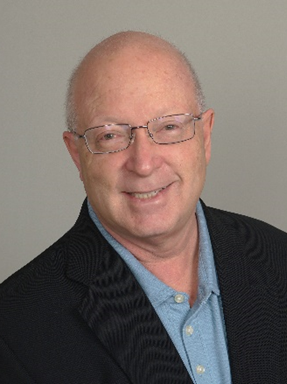 Doug Zuckerman received his BS, MS and PhD degrees from Columbia University (USA) and is an IEEE Life Fellow. His professional experiences at Bell Labs and Telcordia Technologies span the operations, management and engineering of emerging communications technologies, networks and applications. His work heavily influenced standards for management of telecommunications networks. Earlier in his career, with a background in electromagnetics, he contributed to AT&T’s millimeter waveguide transmission system, design of satellite antennas and systems, maintenance requirements and standards for digital transmission systems, operations planning and systems engineering for digital networks, systems and services and optical network interoperability and standardization. His interest in recent years has focused on cloud/fog/edge computing and networking, big data, digital reality and other emerging technologies. Previous leadership roles have included IEEE Communications Society President and Division III (Communications Technology) Director, Optical Internetworking Form OAM&P Working Group Chair and Board member, IEEE representative to the OpenFog Consortium, and various other leadership positions. Currently, he is a consultant for Perspecta Labs (Applied Communications Sciences, previously the Applied Research unit of Telcordia Technologies and before that Bellcore/Bell Labs).
Doug Zuckerman received his BS, MS and PhD degrees from Columbia University (USA) and is an IEEE Life Fellow. His professional experiences at Bell Labs and Telcordia Technologies span the operations, management and engineering of emerging communications technologies, networks and applications. His work heavily influenced standards for management of telecommunications networks. Earlier in his career, with a background in electromagnetics, he contributed to AT&T’s millimeter waveguide transmission system, design of satellite antennas and systems, maintenance requirements and standards for digital transmission systems, operations planning and systems engineering for digital networks, systems and services and optical network interoperability and standardization. His interest in recent years has focused on cloud/fog/edge computing and networking, big data, digital reality and other emerging technologies. Previous leadership roles have included IEEE Communications Society President and Division III (Communications Technology) Director, Optical Internetworking Form OAM&P Working Group Chair and Board member, IEEE representative to the OpenFog Consortium, and various other leadership positions. Currently, he is a consultant for Perspecta Labs (Applied Communications Sciences, previously the Applied Research unit of Telcordia Technologies and before that Bellcore/Bell Labs).
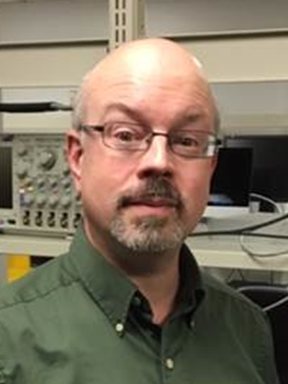 David Griffith is a researcher in the Wireless Networks Division at the National Institute of Standards and Technology (NIST). Prior to his work at NIST he was a senior engineer at Raytheon, where we worked on satellite communications systems. He received the Ph.D. degree in electrical engineering from the University of Delaware in 1998. His research focus is on mathematical modeling and simulation, and his work includes communications systems for the smart grid and the Internet of Things (IoT), public safety communications, and resource allocation for 5G wireless networks.
David Griffith is a researcher in the Wireless Networks Division at the National Institute of Standards and Technology (NIST). Prior to his work at NIST he was a senior engineer at Raytheon, where we worked on satellite communications systems. He received the Ph.D. degree in electrical engineering from the University of Delaware in 1998. His research focus is on mathematical modeling and simulation, and his work includes communications systems for the smart grid and the Internet of Things (IoT), public safety communications, and resource allocation for 5G wireless networks.
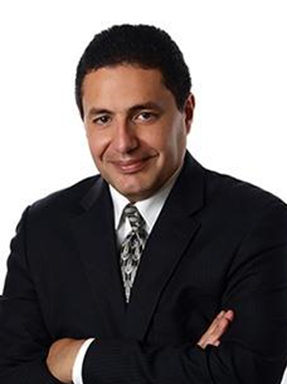 Dr. Sameh Yamany is the Chief Technology Officer of VIAVI where he drives technology innovation and execution with focus on 5G. . He is the former CEO and President of Trendium, where he led innovations in service assurance and analytics and the creation of Customer Experience Assurance (CEA) concept and first to market solution. Dr. Yamany's industry experience also includes his senior executive role at Tektronix Communications where he set the vision and development of the market leading wireless and wireline monitoring and troubleshooting suite of applications. Dr. Yamany worked as an assistant professor at Old Dominion University in Virginia and has a PhD in computer science from University of Louisville. He has authored several patents, and more than 50 journals, conference publications, and book chapters in artificial intelligence, telecommunications and systems engineering.
Dr. Sameh Yamany is the Chief Technology Officer of VIAVI where he drives technology innovation and execution with focus on 5G. . He is the former CEO and President of Trendium, where he led innovations in service assurance and analytics and the creation of Customer Experience Assurance (CEA) concept and first to market solution. Dr. Yamany's industry experience also includes his senior executive role at Tektronix Communications where he set the vision and development of the market leading wireless and wireline monitoring and troubleshooting suite of applications. Dr. Yamany worked as an assistant professor at Old Dominion University in Virginia and has a PhD in computer science from University of Louisville. He has authored several patents, and more than 50 journals, conference publications, and book chapters in artificial intelligence, telecommunications and systems engineering.
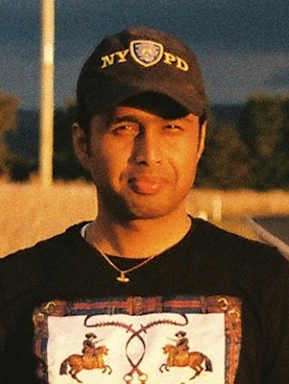 Dr. Ravishankar Borgaonkar works as a research scientist at SINTEF Digital and associate professor II at University of Stavanger in Norway. He holds a PhD in telecommunication security area from Technischen Universität Berlin (TU Berlin, 2013). His primary research themes are related to mobile telecommunication networks and security threats for the next generation of digital communication, ranging from 2G/3G/4G/5G network security to end-user device security. He has extensive experience as a cellular network security domain (at Deutsche Telekom's lab, TU Berlin, Intel Collaborative Research Institute for Secure Computing at Aalto University, & University Oxford), focusing lately on 5G security research. He was the WP leader and technical manager for FP7-ICT NEMESYS (for TU Berlin) and H2020-ICT 5G-ENSURE project (for University of Oxford) before SINTEF. He has found several protocol flaws in 3G/4G/5G technologies (affecting billions of devices) and assisted in improving 4G/5G security standards. Also, he is frequent speaker at several leading security (hacking/academic) conferences and listed in Hall of Fame of Google, Qualcomm, Huawei, & GSMA.
Dr. Ravishankar Borgaonkar works as a research scientist at SINTEF Digital and associate professor II at University of Stavanger in Norway. He holds a PhD in telecommunication security area from Technischen Universität Berlin (TU Berlin, 2013). His primary research themes are related to mobile telecommunication networks and security threats for the next generation of digital communication, ranging from 2G/3G/4G/5G network security to end-user device security. He has extensive experience as a cellular network security domain (at Deutsche Telekom's lab, TU Berlin, Intel Collaborative Research Institute for Secure Computing at Aalto University, & University Oxford), focusing lately on 5G security research. He was the WP leader and technical manager for FP7-ICT NEMESYS (for TU Berlin) and H2020-ICT 5G-ENSURE project (for University of Oxford) before SINTEF. He has found several protocol flaws in 3G/4G/5G technologies (affecting billions of devices) and assisted in improving 4G/5G security standards. Also, he is frequent speaker at several leading security (hacking/academic) conferences and listed in Hall of Fame of Google, Qualcomm, Huawei, & GSMA.
| Presentation Time | Presentation Title | Authors |
| 11:00 am | 5G-SDR: Harnessing the 5G Technology Advances for Tactical Communication Software Defined Radios (SDRs) | Muhammad Danish Nisar (Center for Advanced Studies/Research in Engineering (CASE/CARE), Pakistan & Technical University Munich, TUM, Germany); Hammad Khan (Center for Advanced Studies/Research in Engineering (CASE/CARE), Pakistan) |
| 11:20 am | Vendor Talk | Anritsu |
| 11:35 am | Embedding Military Grade TRANSEC in 5G for Tactical Networks | George F Elmasry (Rockwell Collins, USA) |
| 11:55 am | Potential of 5G Technologies for Land and Maritime Tactical Networks | Germano Capela and Luis, Bastos (NATO Communications and Information Agency) |
| 12:15 pm | Vendor Talk: Challenges of Building a 5G gNodeB | Dr. Paul Moakes (CommAgility) |
| 1:00 pm | Securing 5G is critical and will become a key differentiator | Leonid Burakovsky (Palo Alto Networks) |
| 1:20 pm | Use of Commercial Cellular Networks for Tactical Transport use? | David Theriault (4K Solutions) |
| 1:40 pm | 5G & On The Move Tactical Networks - Making it Work | Kevin Stiles (Oceus Networks) |
| 2:10 pm | Priority-aware Service Placement for 5G Disaster Response | Aaron Paulos (Raytheon) |
*NOTE: All times are Eastern Time U.S.
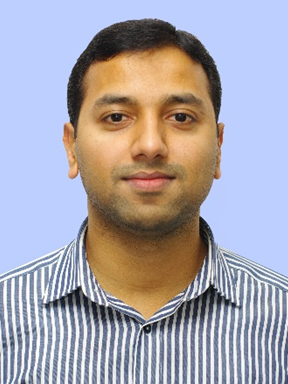 Dr. Danish Nisar (S’05-M’09-SM’20) was born in Karachi, Pakistan in 1982. He completed his bachelors in electrical engineering from the National University of Science and Technology (NUST), Pakistan in 2004, and his Masters and PhD in communication engineering from the Technical University Munich (TUM), Germany respectively in 2006 and 2011, both with honors. In this duration he received scholarships from DAAD and Nokia Siemens Networks, Germany. From 2010 to 2012, he worked at Nomor Research GmbH, as Senior Research Engineer working on EU funded research projects including ARTIST4G, and from 2012 till 2015 at Intel in the Mobile Communications Group as 4G Physical Layer Algorithms Lead. Since 2015, he has been serving as Associate Professor in the electrical and computer engineering department at Center for Advanced Studies in Engineering (CASE).
Dr. Danish Nisar (S’05-M’09-SM’20) was born in Karachi, Pakistan in 1982. He completed his bachelors in electrical engineering from the National University of Science and Technology (NUST), Pakistan in 2004, and his Masters and PhD in communication engineering from the Technical University Munich (TUM), Germany respectively in 2006 and 2011, both with honors. In this duration he received scholarships from DAAD and Nokia Siemens Networks, Germany. From 2010 to 2012, he worked at Nomor Research GmbH, as Senior Research Engineer working on EU funded research projects including ARTIST4G, and from 2012 till 2015 at Intel in the Mobile Communications Group as 4G Physical Layer Algorithms Lead. Since 2015, he has been serving as Associate Professor in the electrical and computer engineering department at Center for Advanced Studies in Engineering (CASE).
Dr. Nisar has been experimenting with various software defined radio (SDR) platforms over the past five years in his lab dealing with wireless communications and networks. He is currently the principal investigator of the project 5G-SDR: A Flexible Solution for Tactical Communications, funded by IGNITE, National Technology Fund, Pakistan. His research interests focus on wireless communications, cellular and tactical communications, and signal processing for communications.
Hammad Ahmed Khan was born in Lahore, Pakistan in 1966. He completed his Bachelors in electrical engineering from University of Engineering and Technology (UET) Lahore in 1990, and his Masters in electrical engineering from Iowa State University, US in 1999. From 1999 to 2001, he worked at Enabling Technologies, a US based startup in the area of communications and networking. Since 2001, he has been with the Center for Advanced Studies in Engineering (CASE) as faculty and a senior member of the Academic Council.
Mr. Khan has done multiple projects in the domain of wireless communications and signal processing, during his stay at CASE. He is currently the co-principal investigator of the project 5G-SDR: A Flexible Solution for Tactical Communications, funded by IGNITE, National Technology Fund, Pakistan. His research interests focus on wireless communications, RF front-end design, and signal processing for communications.
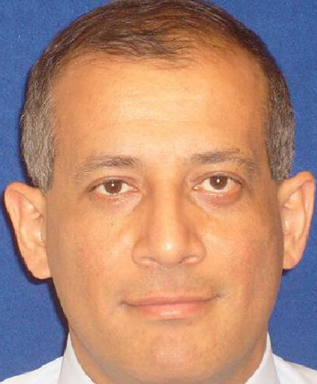 George Elmasry has a Ph. D. in Electrical and Computer Engineering from The New Jersey Institute of Technology with extensive industry and academic experience. George is the winner of the Hashimoto Prize for achievement and academic excellence and is the sole author of two books entitled "Tactical Wireless Communications and Networks, Design Concepts and Challenges," and “Dynamic Spectrum Access: Local, Distributed, Centralized or Hybrid Design”
George Elmasry has a Ph. D. in Electrical and Computer Engineering from The New Jersey Institute of Technology with extensive industry and academic experience. George is the winner of the Hashimoto Prize for achievement and academic excellence and is the sole author of two books entitled "Tactical Wireless Communications and Networks, Design Concepts and Challenges," and “Dynamic Spectrum Access: Local, Distributed, Centralized or Hybrid Design”
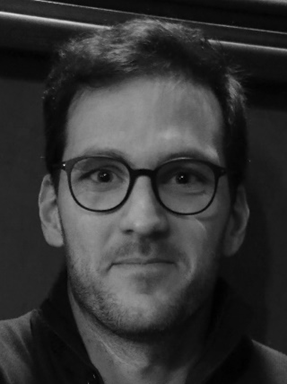 Mr. Germano Capela received his Master degree in Naval and Military Sciences (weapons and electronics) in 2010 from the Portuguese Naval Academy and his Master degree in Electrical Engineering (Major in Telecommunications) from Instituto Superior Técnico - University of Lisbon in 2014. From 2010 to 2012, he was deployed to Portuguese Navy operational units (corvettes and frigates), as Weapons and Electronics Chief Engineer, having performed a wide range of duties, from purely military and operational to very technical ones. From 2012 to 2019, he worked for the Navy's CIS directorate as a radio engineer. He was involved in major procurement projects for safety and strategic naval communications systems. He was also responsible for the operation and maintenance of maritime radio systems, as well as for R&D telecommunication projects. In 2019, Germano joined the NCI Agency as a Senior Scientist, to work in several projects in the area of maritime communications, tactical waveforms, spectrum, 5G and other wireless technologies in support of NATO Capability Development and NATO Policy projects.
Mr. Germano Capela received his Master degree in Naval and Military Sciences (weapons and electronics) in 2010 from the Portuguese Naval Academy and his Master degree in Electrical Engineering (Major in Telecommunications) from Instituto Superior Técnico - University of Lisbon in 2014. From 2010 to 2012, he was deployed to Portuguese Navy operational units (corvettes and frigates), as Weapons and Electronics Chief Engineer, having performed a wide range of duties, from purely military and operational to very technical ones. From 2012 to 2019, he worked for the Navy's CIS directorate as a radio engineer. He was involved in major procurement projects for safety and strategic naval communications systems. He was also responsible for the operation and maintenance of maritime radio systems, as well as for R&D telecommunication projects. In 2019, Germano joined the NCI Agency as a Senior Scientist, to work in several projects in the area of maritime communications, tactical waveforms, spectrum, 5G and other wireless technologies in support of NATO Capability Development and NATO Policy projects.
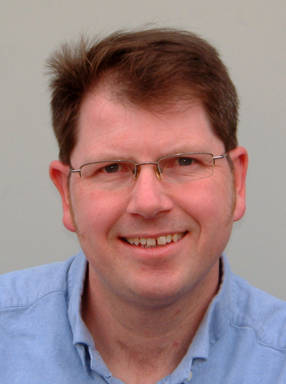 Paul Moakes, PhD CEng MIET, is Chief Technology Officer at CommAgility. He has previously held positions at Motorola and Blue Wave Systems. He is co-inventor of two patents in the field of MicroTCA and AdvancedMC. He holds a PhD in Electrical and Electronic Engineering from Sheffield University and a 1st Class Honours degree in Electronic Communications and Computer Systems Engineering from Bradford University.
Paul Moakes, PhD CEng MIET, is Chief Technology Officer at CommAgility. He has previously held positions at Motorola and Blue Wave Systems. He is co-inventor of two patents in the field of MicroTCA and AdvancedMC. He holds a PhD in Electrical and Electronic Engineering from Sheffield University and a 1st Class Honours degree in Electronic Communications and Computer Systems Engineering from Bradford University.
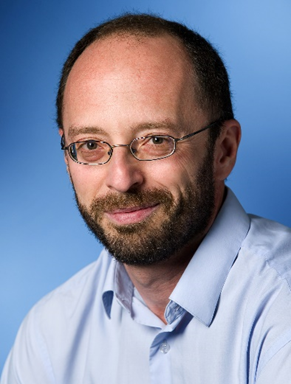 Leonid Burakovsky currently serves as the Senior Director, Product Management at Palo Alto Networks, focusing on the 5G security. Prior to this role, he served as F5 Networks' Senior Director of Strategic Solutions and Juniper Networks' Alliances CTO. Leonid regularly speaks at industry forums such as Mobile World Congress, NGMN Forum, 4G, CTIA, Futurecom, IEEE, BroadbandForum, LTE NA, LTE World, LTE LATAM… to name a few. Leonid also worked at Airslide, Bezeq International, ECI, Alcatel and the Center for Communication Research. Leonid has more than 30 years of industry experience and holds both a Bachelor’s and Master’s degree in Information Systems Engineering.
Leonid Burakovsky currently serves as the Senior Director, Product Management at Palo Alto Networks, focusing on the 5G security. Prior to this role, he served as F5 Networks' Senior Director of Strategic Solutions and Juniper Networks' Alliances CTO. Leonid regularly speaks at industry forums such as Mobile World Congress, NGMN Forum, 4G, CTIA, Futurecom, IEEE, BroadbandForum, LTE NA, LTE World, LTE LATAM… to name a few. Leonid also worked at Airslide, Bezeq International, ECI, Alcatel and the Center for Communication Research. Leonid has more than 30 years of industry experience and holds both a Bachelor’s and Master’s degree in Information Systems Engineering.
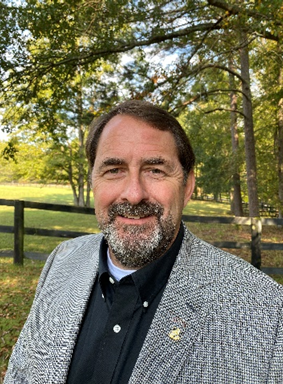 David Theriault is the President and Founder of 4K Solutions, LLC a Midland, Georgia based company started in 2006,4K is a global leader in deployable portable 4G/LTE communications kits. 4K Solutions, LLC specializes in designing and the systems integration of commercial off the shelf (COTS) cellular, networking and radio over ip technologies by the world’s leading manufacturers. 4K Solutions offers our customers a full line of information technology (IT) products and services. and training to the Department of Defense, First Responders, government agencies and commercial customers. 4K Solutions is a SDVOSB CvE.
David Theriault is the President and Founder of 4K Solutions, LLC a Midland, Georgia based company started in 2006,4K is a global leader in deployable portable 4G/LTE communications kits. 4K Solutions, LLC specializes in designing and the systems integration of commercial off the shelf (COTS) cellular, networking and radio over ip technologies by the world’s leading manufacturers. 4K Solutions offers our customers a full line of information technology (IT) products and services. and training to the Department of Defense, First Responders, government agencies and commercial customers. 4K Solutions is a SDVOSB CvE.
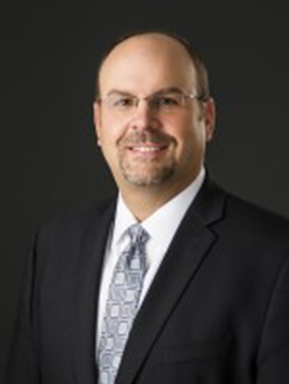 Kevin Stiles is the Chief Technology Officer at Oceus Networks. As CTO, Kevin is responsible for the company’s product development, solutions customization, and systems integration services. His engineering team focuses on the development of secure and scalable 4th Generation (4G) Long Term Evolution (LTE) products, and the integration and delivery of commercial off-the-shelf (COTS) products into customized solutions, including product certifications and accreditations.
Kevin Stiles is the Chief Technology Officer at Oceus Networks. As CTO, Kevin is responsible for the company’s product development, solutions customization, and systems integration services. His engineering team focuses on the development of secure and scalable 4th Generation (4G) Long Term Evolution (LTE) products, and the integration and delivery of commercial off-the-shelf (COTS) products into customized solutions, including product certifications and accreditations.
Kevin brings over 24-years of experience in telecommunications and government contracting and has held various positions from Software Engineer to Vice President of Engineering. Prior to his current role as CTO, Kevin served as Vice President of Engineering at Oceus Networks. Under Kevin’s management, he and his engineering team brought to market Oceus Networks’ award winning Xiphos™ product line, as well as Oceus Networks’ ONmission.
Before joining Oceus Networks, Kevin was Vice President of Ericsson Federal where he was responsible for the site design and delivery of the Ericsson components for a Department of Defense (DOD) satellite program. He was also responsible for the design, development, and deployment of some of the first IP MulitMedia Subsystems (IMS) in North America. As part of Research and Development, he was heavily involved in the design of the first core components of Ericsson’s IMS products.
Kevin holds a Bachelor of Science degree in Computer Science from the University of North Texas and is based out of Oceus Networks’ Plano, Texas office.
 Mr. Aaron Paulos is a senior computer scientist in the distributed systems group at Raytheon BBN Technologies. At BBN, Mr. Paulos researches secure, resilient, and adaptive computing techniques to solve challenges faced by the US Government. Currently, under DARPA I20's Dispersed Computing program he is the principal investigator of the Mission-oriented Adaptive Placement of tasks and data project that is developing novel algorithms and middleware to improve resource management across a wide range of distributed compute environments. He has over 20 publications, 1 patent, and is a member of the IEEE. He holds a M.S. from Carnegie Mellon's Information Networking Institute and a B.S in Computer Science from the University of Pittsburgh.
Mr. Aaron Paulos is a senior computer scientist in the distributed systems group at Raytheon BBN Technologies. At BBN, Mr. Paulos researches secure, resilient, and adaptive computing techniques to solve challenges faced by the US Government. Currently, under DARPA I20's Dispersed Computing program he is the principal investigator of the Mission-oriented Adaptive Placement of tasks and data project that is developing novel algorithms and middleware to improve resource management across a wide range of distributed compute environments. He has over 20 publications, 1 patent, and is a member of the IEEE. He holds a M.S. from Carnegie Mellon's Information Networking Institute and a B.S in Computer Science from the University of Pittsburgh.
| Presentation Time | Presentation Title | Authors |
| 11:00 am | The need for Systems Engineering in developing Tactical/First Responder 5G Networks | William G Scheible (Staff & MITRE Corporation, USA); Susan Ronning (ADCOMM Engineering, USA); Thomas Manley (Downer Defence, Australia) |
| 11:20 am | Heterogeneous Traffic Offloading in Integrated Satellite Terrestrial Networks (ISTN) | Wiem Abderrahim (KAUST, Saudi Arabia) |
| 11:40 am | Vendor Talk | Oceus Networks |
| 11:55 am | Field Testing of 5G Teactical Networks | Raymond Shen (Keysight) |
| 12:15 pm | 5G Innovation for Public Safety | Jamie Italiano (Verizon) |
| 1:00 pm | Designing 5G for Mission Critical Services | Kiran Mukkavilli (Qualcomm) |
| 1:20 pm | High order modulation links: transmitter versus receiver dominated regimes | Doug Kirkpatrick (Eridan Communications) |
| 1:40 pm | State of the Art Heterogeneous Integrated Multi Chip Prototypes | Frank Ferrante (Intel) |
| 2:00 pm | Lessons Learned with Tactical Cellular Applications | Paul Terzulli (PEO C3T) |
*NOTE: All times are Eastern Time U.S.
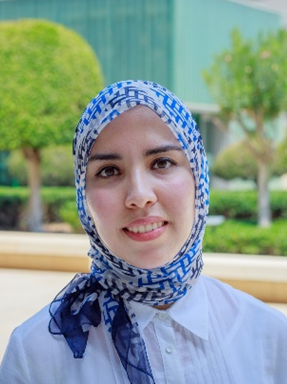 Wiem Abderrahim accomplished her undergraduate studies in electrical engineering at the Higher School of Communications of Tunis, Carthage University, Tunisia in 2013. She received her Ph.D. Degree in Information and Communication Technologies from the same university in 2017. She worked as a lecturer and then as an adjunct professor at the Higher School of Communications of Tunis between 2014 and 2018. Currently, she is a postdoctoral fellow within King Abdullah University of Science and Technology (KAUST), Thuwal, Saudi Arabia. Her research interests include cloud computing, edge computing, network virtualization, software defined networking and recently satellite communications and machine learning.
Wiem Abderrahim accomplished her undergraduate studies in electrical engineering at the Higher School of Communications of Tunis, Carthage University, Tunisia in 2013. She received her Ph.D. Degree in Information and Communication Technologies from the same university in 2017. She worked as a lecturer and then as an adjunct professor at the Higher School of Communications of Tunis between 2014 and 2018. Currently, she is a postdoctoral fellow within King Abdullah University of Science and Technology (KAUST), Thuwal, Saudi Arabia. Her research interests include cloud computing, edge computing, network virtualization, software defined networking and recently satellite communications and machine learning.
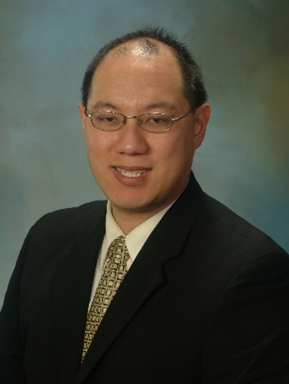 Raymond Shen, PhD is Director of Spectrum and 5G Govt Solutions at Keysight Technologies. In this role he leads Keysight's spectrum monitoring group, managing a vast portfolio of solutions that include handheld, outdoor, and modular platforms, as well as 5G solutions for the government sector. He has over 20 years of experience in spectrum monitoring and cellular signal demodulation. Shen has a BS EE from Caltech and a MS EE and PhD EE from Stanford University, where his PhD focused on neural networks.
Raymond Shen, PhD is Director of Spectrum and 5G Govt Solutions at Keysight Technologies. In this role he leads Keysight's spectrum monitoring group, managing a vast portfolio of solutions that include handheld, outdoor, and modular platforms, as well as 5G solutions for the government sector. He has over 20 years of experience in spectrum monitoring and cellular signal demodulation. Shen has a BS EE from Caltech and a MS EE and PhD EE from Stanford University, where his PhD focused on neural networks.
 Jamie Italiano is an accomplished, highly motivated and collaborative leader in the Product Management organization at Verizon. In this role, Jamie works with sales, solution architects, customers, and partners, Technology and Product Development and Product Management and is responsible for developing and communicating requirements and priorities for the 5G and 5G Edge products and services for the Public Sector segment. This includes customer use cases for 5G solutions, compliance requirements and sizing market demand. Jamie is also the senior product manager for the 5G First Responder Lab. She works with the 5G Labs team to scope the development in the lab to meet the needs of first responders and works with partners on bringing Verizon differentiated products to market.
Jamie Italiano is an accomplished, highly motivated and collaborative leader in the Product Management organization at Verizon. In this role, Jamie works with sales, solution architects, customers, and partners, Technology and Product Development and Product Management and is responsible for developing and communicating requirements and priorities for the 5G and 5G Edge products and services for the Public Sector segment. This includes customer use cases for 5G solutions, compliance requirements and sizing market demand. Jamie is also the senior product manager for the 5G First Responder Lab. She works with the 5G Labs team to scope the development in the lab to meet the needs of first responders and works with partners on bringing Verizon differentiated products to market.
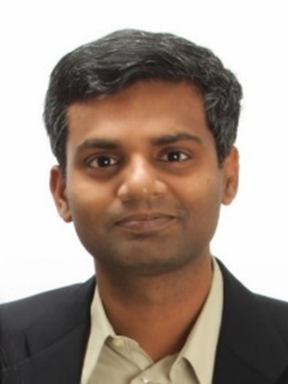 Dr. Kiran Mukkavilli is a Sr. Director of Engineering in Qualcomm Wireless Research where he currently leads the systems research team for sub-7GHz technologies of 5G. He joined Qualcomm in 2003, holds more than 125 granted U.S. patents, and has been involved in system design, standardization, implementation and commercialization of a variety of projects at Qualcomm. He was one of the principal architects of MediaFLO, a mobile broadcast solution from Qualcomm, and played a key role in the product development, standardization and commercialization efforts. He was also the systems design lead responsible for commercialization of the UMTS modem in Qualcomm Snapdragon 800/801 products. In his current role, he is responsible for R&D efforts for PHY/MAC system design, standardization and prototyping for Sub 7GHz aspects of 5G NR. He successfully led Qualcomm’s effort to set up industry’s first end to end 3GPP Rel 15 spec compliant 5G NR call with the leading infra vendors using proto UE implementation. Dr. Mukkavilli received his M.S. and Ph.D. in electrical engineering from Rice University and holds Bachelor of Technology from Indian Institute of Technology, Madras.
Dr. Kiran Mukkavilli is a Sr. Director of Engineering in Qualcomm Wireless Research where he currently leads the systems research team for sub-7GHz technologies of 5G. He joined Qualcomm in 2003, holds more than 125 granted U.S. patents, and has been involved in system design, standardization, implementation and commercialization of a variety of projects at Qualcomm. He was one of the principal architects of MediaFLO, a mobile broadcast solution from Qualcomm, and played a key role in the product development, standardization and commercialization efforts. He was also the systems design lead responsible for commercialization of the UMTS modem in Qualcomm Snapdragon 800/801 products. In his current role, he is responsible for R&D efforts for PHY/MAC system design, standardization and prototyping for Sub 7GHz aspects of 5G NR. He successfully led Qualcomm’s effort to set up industry’s first end to end 3GPP Rel 15 spec compliant 5G NR call with the leading infra vendors using proto UE implementation. Dr. Mukkavilli received his M.S. and Ph.D. in electrical engineering from Rice University and holds Bachelor of Technology from Indian Institute of Technology, Madras.
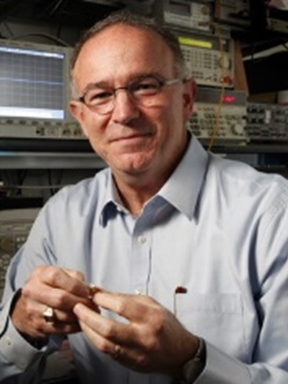 Douglas Kirkpatrick is CEO at Eridan, a Silicon Valley hardware startup building the world's most efficient radios for 5G and beyond. Doug was formerly a VC and Chief Scientist at DARPA, where he led projects ranging from rapid DNA synthesis to real-time holographic displays. Prior to DARPA, Dr. Kirkpatrick was the VP of R&D for Fusion Lighting, a Maryland-based high-efficiency lighting startup, and prior to that a staff scientist and VP at SAIC.
Douglas Kirkpatrick is CEO at Eridan, a Silicon Valley hardware startup building the world's most efficient radios for 5G and beyond. Doug was formerly a VC and Chief Scientist at DARPA, where he led projects ranging from rapid DNA synthesis to real-time holographic displays. Prior to DARPA, Dr. Kirkpatrick was the VP of R&D for Fusion Lighting, a Maryland-based high-efficiency lighting startup, and prior to that a staff scientist and VP at SAIC.
Dr. Kirkpatrick received his BS degree (Physics & Mathematics) from the College of William and Mary (1980) and his Ph.D. from MIT in 1988 (Physics). He is a Fellow of the American Physical Society and has authored more than 30 journal articles and 60 US and international patents.
Sponsors
|
GOLD |
||
 |
 |
 |
| SILVER | ||
 |
 |
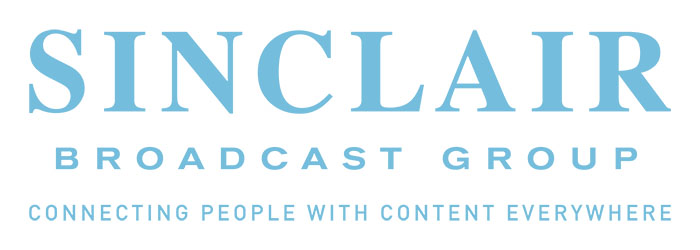 |
 |
||
| BRONZE | ||
 |
||
3rd Workshop on 5G Technologies for First Responder and Tactical Networks - About
| Main/Program | About Workshop | Speaker/Track Details |

Virtual Event || On-demand through 15 December 2020
On this page:
Register for Free at this LINK.
NOTE: The broadcast will convert to on-demand after 23 October. You can still register up until 23 November to access sessions.
For questions or more information, please email Ashutosh Dutta at This email address is being protected from spambots. You need JavaScript enabled to view it..
5G is not just the next evolution of 4G technology; it's a paradigm shift. It is expected to enable fundamentally new applications — with much more stringent requirements in latency and bandwidth — and provide resiliency and flexibility to the underlying network. Several standards organizations and forums, namely IEEE, the 3rd Generation Partnership Project, and the International Telecommunication Union, are working on defining the architecture and standardizing aspects of 5G technologies. However, few organizations are focusing on how such technologies can be useful to tactical and first responder networks.
IEEE is hosting the third workshop in this series on October 23, 2020. It is the result of partnership and collaboration with the Department of Homeland Security Science and Technology Directorate (DHS S&T) and the Johns Hopkins University Applied Physics Lab (JHU/APL). This workshop will explore the applicability of 5G technologies for tactical and first responder networks, offer solutions, share use cases, and investigate research opportunities and challenges. The event will also provide an opportunity for 5G experts from industry and academia, as well as the standards, regulatory, homeland security, public safety and defense communities, to collaborate.
Registration is Free and is now open for the 3rd Annual Workshop on 5G Technologies for Tactical and First Responder Networks," hosted by IEEE, in collaboration with APL and the Department of Homeland Security's Science and Technology Directorate.
The event took place from 8:30 a.m. to 4:30 p.m. on Friday, Oct. 23. See the agenda and register here.
Keynote addresses will be delivered by Russell Becker, director of the Office for Interoperability and Compatibility Technology Center, in the Department of Homeland Security’s Science and Technology Directorate, and Joseph Evans, the principal director for 5G in the Office of the Director of Defense Research and Engineering (Modernization) within the office of the Under Secretary of Defense for Research and Engineering.
The event will include three plenary talks by Chris Baker, a senior public safety advisor for the First Responder Network Authority (FirstNet Authority), and a national expert for fire and aviation; Monisha Ghosh, the first woman Chief Technology Officer at the US government's Federal Communications Commission; and Alex Sprintson, director of the National Science Foundation’s Computer and Network Systems Core program, which deals with all aspects of computer and network systems. Ruth Vogel, the Emergency Response Systems Program Manager at the Johns Hopkins Applied Physics Laboratory (JHAPL), will moderate a panel in the afternoon.
The workshop will also include four tracks consisting of talks from open calls, vendor talks, and invited talks.
- Technology: Covering 5G and beyond technologies currently available to solve challenges associated with first-responder and tactical networks.
- First Responder Networks: Covering use cases and solutions applicable to First Responder community, including case studies that illustrate the gaps in current technologies and how 5G can augment operational capabilities.
- Tactical Networks: Covering use cases and solutions applicable to Tactical Networks, including case studies of real-life scenarios that illustrate the gaps in current technologies and how 5G can augment the capabilities.
- Research: Covering new development in technologies, novel solutions, ongoing research, and prototypes that look well beyond three-, five- and 10-year horizons.
All the speakers for the event will be presenting remotely.
2019 Workshop on 5G Technologies for Tactical and First Responder Networks
2018 Workshop on 5G Technologies for Tactical and First Responder Networks
Register for Free at this LINK.
NOTE: The broadcast will convert to on-demand after 23 October. You can still register up until 15 December to access sessions.
|
GOLD |
||
 |
 |
 |
| SILVER | ||
 |
 |
 |
 |
||
| BRONZE | ||
 |
||
 Ms. Julia Andrusenko received her bachelor's and master's degrees in electrical engineering in 2002 from Drexel University, Philadelphia, PA. She is a senior communications engineer at APL and is the Chief Engineer of the Tactical Wireless Systems group of APL. Ms. Andrusenko has an extensive background in communications theory, wireless networking, satellite communications, Radio Frequency (RF) propagation prediction, communications systems vulnerability, computer simulation of communications systems, evolutionary computation, genetic algorithms/programming, MIMO, and millimeter wave technologies. She also has a substantial experience developing electronic warfare methodologies for various advanced commercial communications systems and military data links. Ms. Andrusenko is a published author of many technical papers and has recently co-authored a book titled “Wireless Internetworking: Understanding Internetworking Challenges” through Wiley/IEEE Press. Ms. Andrusenko is a member of the IEEE Communications Society.
Ms. Julia Andrusenko received her bachelor's and master's degrees in electrical engineering in 2002 from Drexel University, Philadelphia, PA. She is a senior communications engineer at APL and is the Chief Engineer of the Tactical Wireless Systems group of APL. Ms. Andrusenko has an extensive background in communications theory, wireless networking, satellite communications, Radio Frequency (RF) propagation prediction, communications systems vulnerability, computer simulation of communications systems, evolutionary computation, genetic algorithms/programming, MIMO, and millimeter wave technologies. She also has a substantial experience developing electronic warfare methodologies for various advanced commercial communications systems and military data links. Ms. Andrusenko is a published author of many technical papers and has recently co-authored a book titled “Wireless Internetworking: Understanding Internetworking Challenges” through Wiley/IEEE Press. Ms. Andrusenko is a member of the IEEE Communications Society.
 Sean Brassard is a section supervisor in the Wireless Cyber Capabilities group at Johns Hopkins University Applied Physics Lab where he serves as a project lead for various 5G and Cognitive Radio projects for the DoD. He has over 20 years of experience working in telecom and DoD tactical radio industries with a focus on systems engineering, software defined radios, anti-jam/signal cancellation techniques, and geo-location systems. He holds a B.E. in Electrical Engineering from Vanderbilt University and a M.S. in Electrical Engineering from Johns Hopkins University.
Sean Brassard is a section supervisor in the Wireless Cyber Capabilities group at Johns Hopkins University Applied Physics Lab where he serves as a project lead for various 5G and Cognitive Radio projects for the DoD. He has over 20 years of experience working in telecom and DoD tactical radio industries with a focus on systems engineering, software defined radios, anti-jam/signal cancellation techniques, and geo-location systems. He holds a B.E. in Electrical Engineering from Vanderbilt University and a M.S. in Electrical Engineering from Johns Hopkins University.
 David M. Coleman is the chief scientist for the Communications Branch in APL’s Asymmetric Operations Sector and also serves as the lead for the Spectrum Operations research portfolio in the Cyber Operations Mission Area. He earned a BS in computer engineering from Elizabethtown College, an MS in computer engineering from the University of Arkansas, and a PhD in electrical engineering from University of Maryland, College Park. Dr. Coleman has presented at many conferences for tactical networks and has been published in journals and proceedings.
David M. Coleman is the chief scientist for the Communications Branch in APL’s Asymmetric Operations Sector and also serves as the lead for the Spectrum Operations research portfolio in the Cyber Operations Mission Area. He earned a BS in computer engineering from Elizabethtown College, an MS in computer engineering from the University of Arkansas, and a PhD in electrical engineering from University of Maryland, College Park. Dr. Coleman has presented at many conferences for tactical networks and has been published in journals and proceedings.

Dr. Cherita Corbett is the Chief Scientist for the Communication and Networking Systems Group at Johns Hopkins University Applied Physics Laboratory. She guides research and development strategy and activities focused on resilient communications for military operations and critical infrastructure. Her current research interests include: secure mobile technologies, secure tactical communication systems, and insider threat protection. Prior to joining APL, Dr. Corbett was a Senior Computer Scientist at SRI International where she performed research on self-healing cellular networks, vehicular security, and IoT security. She also provided programmatic support to the Cyber Security Division of DHS S&T in the area of mobile technology. She has published over 30 technical manuscripts and holds a U.S. patent in cyber security. She holds a Ph.D. in Electrical & Computer Engineering from Georgia Institute of Technology.
 Dr. Ashutosh Dutta is currently senior scientist and 5G Chief Strategist at the Johns Hopkins University Applied Physics Laboratory (JHU/APL). He is also a JHU/APL Sabbatical Fellow and adjunct faculty at The Johns Hopkins University. Ashutosh also serves as the chair for Electrical and Computer Engineering Department of Engineering for Professional Program at Johns Hopkins University. His career, spanning more than 30 years, includes Director of Technology Security and Lead Member of Technical Staff at AT&T, CTO of Wireless for NIKSUN, Inc., Senior Scientist and Project Manager in Telcordia Research, Director of the Central Research Facility at Columbia University, adjunct faculty at NJIT, and Computer Engineer with TATA Motors. He has more than 100 conference, journal publications, and standards specifications, three book chapters, and 31 issued patents. Ashutosh is co-author of the book, titled, “Mobility Protocols and Handover Optimization: Design,Evaluation and Application,” published by IEEE and John & Wiley that has recently been translated into Chinese Language. Ashutosh is the founding co-chair for IEEE Future Networks initiative and serves as IEEE Communications Society’s Distinguished Lecturer for 2017-2018 and Distinguised Speaker for ACM from 2020-2022. He was recipient of the prestigious 2009 IEEE MGA Leadership award and 2010 IEEE-USA professional leadership award. Ashutosh obtained his BS in Electrical Engineering from NIT Rourkela, India, MS in Computer Science from NJIT, and Ph.D. in Electrical Engineering from Columbia University under the supervision of Prof. Henning Schulzrinne. Ashutosh is a Fellow of IEEE and senior member of ACM.
Dr. Ashutosh Dutta is currently senior scientist and 5G Chief Strategist at the Johns Hopkins University Applied Physics Laboratory (JHU/APL). He is also a JHU/APL Sabbatical Fellow and adjunct faculty at The Johns Hopkins University. Ashutosh also serves as the chair for Electrical and Computer Engineering Department of Engineering for Professional Program at Johns Hopkins University. His career, spanning more than 30 years, includes Director of Technology Security and Lead Member of Technical Staff at AT&T, CTO of Wireless for NIKSUN, Inc., Senior Scientist and Project Manager in Telcordia Research, Director of the Central Research Facility at Columbia University, adjunct faculty at NJIT, and Computer Engineer with TATA Motors. He has more than 100 conference, journal publications, and standards specifications, three book chapters, and 31 issued patents. Ashutosh is co-author of the book, titled, “Mobility Protocols and Handover Optimization: Design,Evaluation and Application,” published by IEEE and John & Wiley that has recently been translated into Chinese Language. Ashutosh is the founding co-chair for IEEE Future Networks initiative and serves as IEEE Communications Society’s Distinguished Lecturer for 2017-2018 and Distinguised Speaker for ACM from 2020-2022. He was recipient of the prestigious 2009 IEEE MGA Leadership award and 2010 IEEE-USA professional leadership award. Ashutosh obtained his BS in Electrical Engineering from NIT Rourkela, India, MS in Computer Science from NJIT, and Ph.D. in Electrical Engineering from Columbia University under the supervision of Prof. Henning Schulzrinne. Ashutosh is a Fellow of IEEE and senior member of ACM.
 Mr. Jared Everett is a senior wireless communications research engineer in the Wireless Cyber Capabilities group at the Johns Hopkins University Applied Physics Laboratory (Johns Hopkins APL). Since joining APL in 2009, his research has focused broadly on the use of cellular technologies for defense and national security applications. He has a deep knowledge of LTE and emerging 5G standards, specializing in cellular air interfaces and end-to-end systems. He is a co-author of the book, “Wireless Networking: Understanding Internetworking Challenges,” published by Wiley/IEEE Press. His current research interests include innovative approaches to spectrum sharing in 5G networks. Jared holds M.S. and B.S. degrees in electrical engineering from North Carolina State University. He also holds a B.A. degree in music.
Mr. Jared Everett is a senior wireless communications research engineer in the Wireless Cyber Capabilities group at the Johns Hopkins University Applied Physics Laboratory (Johns Hopkins APL). Since joining APL in 2009, his research has focused broadly on the use of cellular technologies for defense and national security applications. He has a deep knowledge of LTE and emerging 5G standards, specializing in cellular air interfaces and end-to-end systems. He is a co-author of the book, “Wireless Networking: Understanding Internetworking Challenges,” published by Wiley/IEEE Press. His current research interests include innovative approaches to spectrum sharing in 5G networks. Jared holds M.S. and B.S. degrees in electrical engineering from North Carolina State University. He also holds a B.A. degree in music.
 Mr. Douglas Holly, Principle, Eagle Management Group
Mr. Douglas Holly, Principle, Eagle Management Group
Doug brings a broad range of telecommunications, business leadership and management skills with a particular focus on project management, operational improvement and M&A. He currently heads up Eagle Management Group a consulting firm that provides general management, project management and strategic planning to improve operational performance. EMG also provides M&A selection, diligence support and integration services to businesses. He is a director of the Washington Section and chair its chapter of the Communications Society and also chair of the joint Washington/Northern Virginia chapter of the TEMS. He was finance chair for the IEEE GLOBECOM 2007 and 2016.
Doug holds a bachelor's and master's dress in electrical engineering from Rensselaer Polytechnic Institute.
 Amy Howard is the Branch Office Administrator for the Communications Systems Branch in the Asymmetric Operations Sector at Johns Hopkins University Applied Physics Lab (APL). Amy joined APL in May, 2015 and is in her 2nd year as co-chair for the 5G Workshop. She has over 25 years of professional office and event coordination experience.
Amy Howard is the Branch Office Administrator for the Communications Systems Branch in the Asymmetric Operations Sector at Johns Hopkins University Applied Physics Lab (APL). Amy joined APL in May, 2015 and is in her 2nd year as co-chair for the 5G Workshop. She has over 25 years of professional office and event coordination experience.
 Carolyn Stallings-Little is the Group Office Administrator for the Communication and Networking Systems Group at Johns Hopkins University’s Applied Physics Laboratory (APL). She joined APL in March, 2017. She has over 25 years of professional administrative experience.
Carolyn Stallings-Little is the Group Office Administrator for the Communication and Networking Systems Group at Johns Hopkins University’s Applied Physics Laboratory (APL). She joined APL in March, 2017. She has over 25 years of professional administrative experience.

Mr. Narendra Mangra is a wireless mobility advisor at GlobeNet. His diverse experience extends across the wireless mobility ecosystem and mobile network deployment lifecycle within academia, government and industry. He is an Adjunct Professor at the Volgeneau School of Engineering at the George Mason University. Narendra is also the Applications and Services Co-Chair and Summer School Chair for IEEE Networks. He leads the Smart Cities roadmap development initiative and recurring industry focused educational sessions for Young Professionals.
Narendra has extensive consulting experience in the mobile satellite and cellular communications, public safety communications, information technology, higher education, and federal & local government sectors. He holds an MSEE and BSEE from Polytechnic University, MBA from the Robert H. Smith School of Business at the University of Maryland, and a Project Management Professional (PMP) Certificate. His current interests include the 5G ecosystem, Smart Cities and interconnected ecosystems.
 Dr. Mithun Mukherjee received the Ph.D. degree in electrical engineering from the Indian Institute of Technology Patna, Patna, India, in 2015. He is currently a Professor with the School of Artificial Intelligence, Nanjing University of Information Science and Technology, Nanjing, China. He has (co)authored more than 100 publications in peer-reviewed journals and conferences. Dr. Mukherjee was a recipient of the 2018 IEEE International Conference on Advanced Networks and Telecommunications Systems (ANTS) Best Paper Award. He also served/will serve as the Publicity Co-Chair of IEEE 5G World 2018, 2019, and 2020. His current research interests center around fog computing and edge intelligence.
Dr. Mithun Mukherjee received the Ph.D. degree in electrical engineering from the Indian Institute of Technology Patna, Patna, India, in 2015. He is currently a Professor with the School of Artificial Intelligence, Nanjing University of Information Science and Technology, Nanjing, China. He has (co)authored more than 100 publications in peer-reviewed journals and conferences. Dr. Mukherjee was a recipient of the 2018 IEEE International Conference on Advanced Networks and Telecommunications Systems (ANTS) Best Paper Award. He also served/will serve as the Publicity Co-Chair of IEEE 5G World 2018, 2019, and 2020. His current research interests center around fog computing and edge intelligence.
 Mr. Oscar Somerlock joined the Applied Physics Laboratory in 2014, where he is currently a member of the Senior Technical Staff. Prior to joining APL, he worked in the cellular industry for more than 20 years holding engineering and technical leadership positions at Samsung, Motorola, and Qualcomm. He also founded and served as President of Comware, Inc. He has been awarded patents in digital beamforming and wireless networking. Oscar holds an M.S. degree in Electrical and Computer Engineering from the Johns Hopkins University and MBA from the University of Maryland.
Mr. Oscar Somerlock joined the Applied Physics Laboratory in 2014, where he is currently a member of the Senior Technical Staff. Prior to joining APL, he worked in the cellular industry for more than 20 years holding engineering and technical leadership positions at Samsung, Motorola, and Qualcomm. He also founded and served as President of Comware, Inc. He has been awarded patents in digital beamforming and wireless networking. Oscar holds an M.S. degree in Electrical and Computer Engineering from the Johns Hopkins University and MBA from the University of Maryland.





